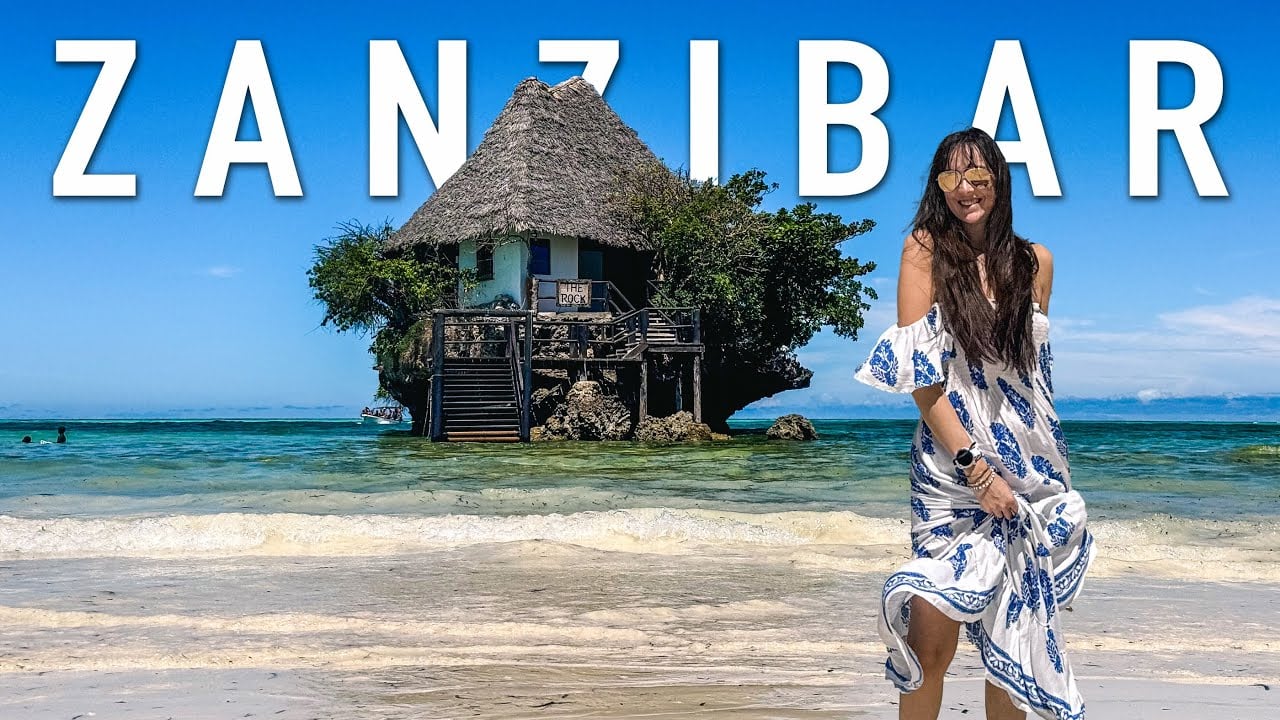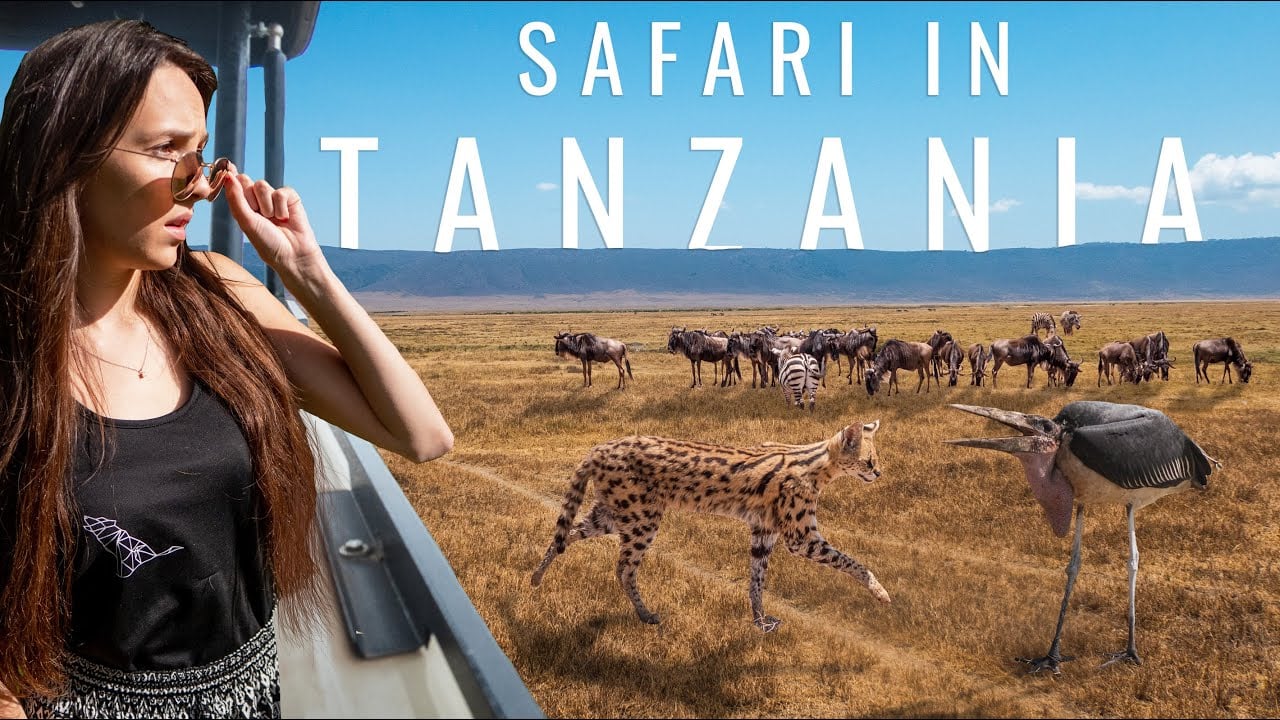Are you ready to plan your dream beach holiday to Zanzibar Island and discover why it’s considered one of the planet’s most beautiful destinations?
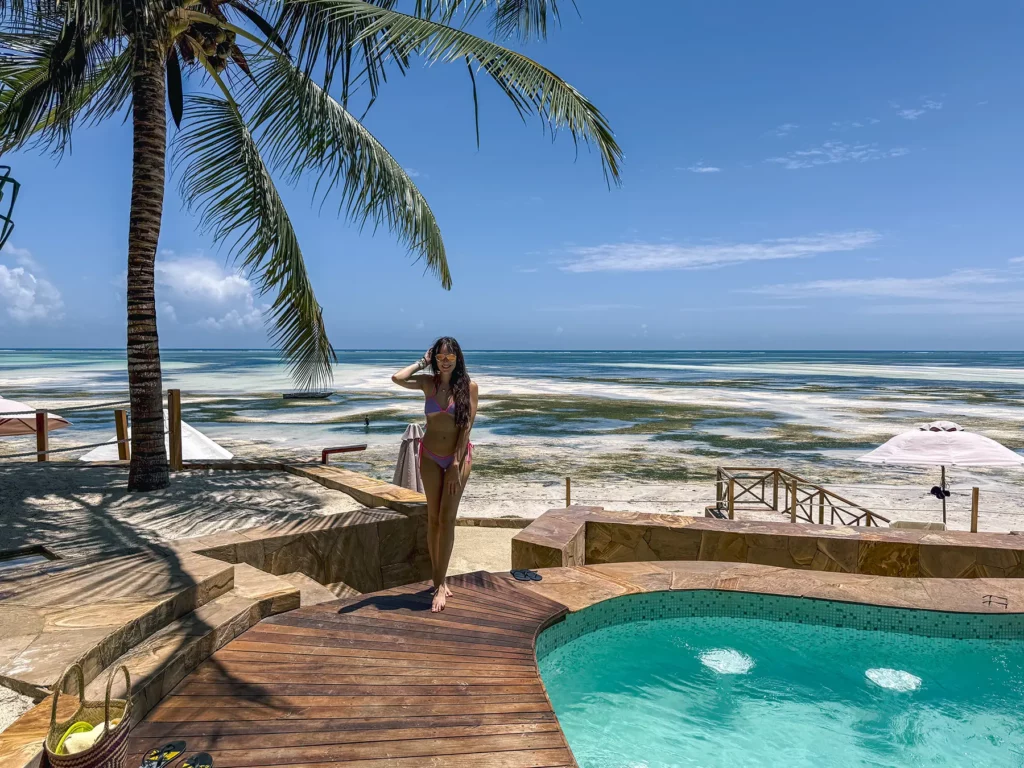
Home to pristine beaches, the historic Stone Town – a UNESCO World Heritage Site – and endless wildlife to spot underwater, and the Big Five just a short flight away on Tanzania’s mainland, this stunning paradise has it all!
With so much to do in Zanzibar, it’s hard to prioritise the activities for your stay. It’s also essential that you choose accommodation in the best location as not all parts of Zanzibar are created equal.
If you don’t plan your holiday carefully, it’s easy to miss out on the best that Zanzibar has to offer.
I’m here to help you have the perfect Zanzibar experience, drawing on both my personal visits and extensive research for my own trip.
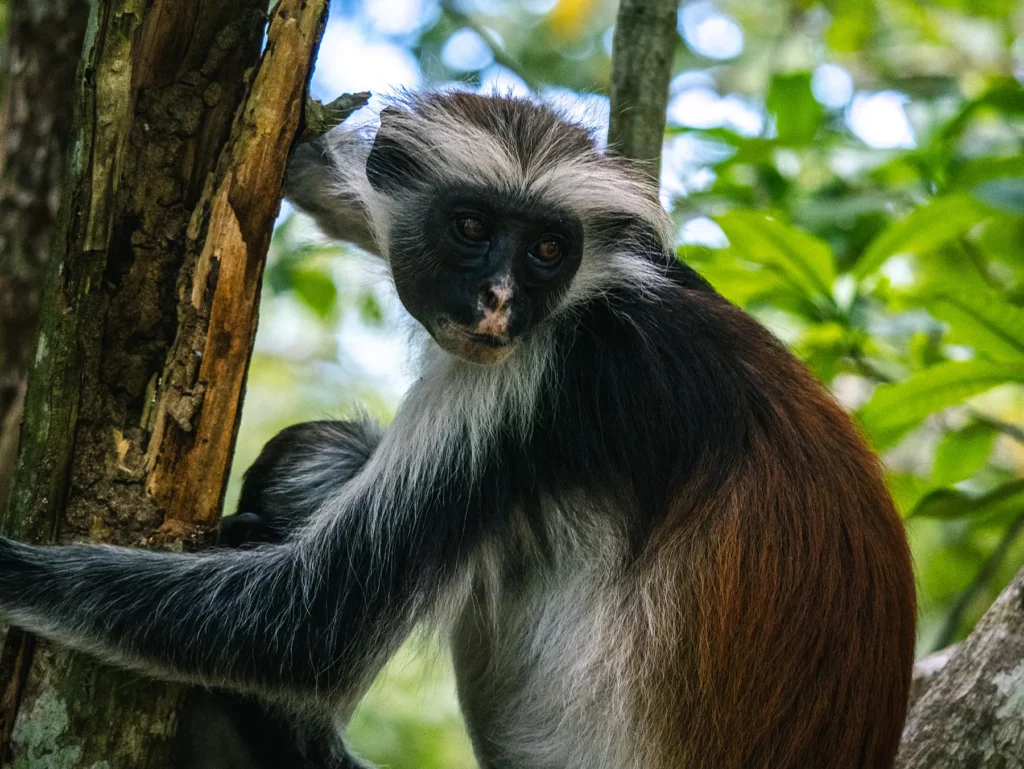
In this guide, I’ll share everything you need to know about planning a holiday to Zanzibar Island, based on my experience exploring the region, along with in-depth research and discussions with locals.
I’ll cover costs, the best resorts and how to find the perfect tour operator, so that you can plan the safari & beach (or just beach!) adventure of a lifetime!
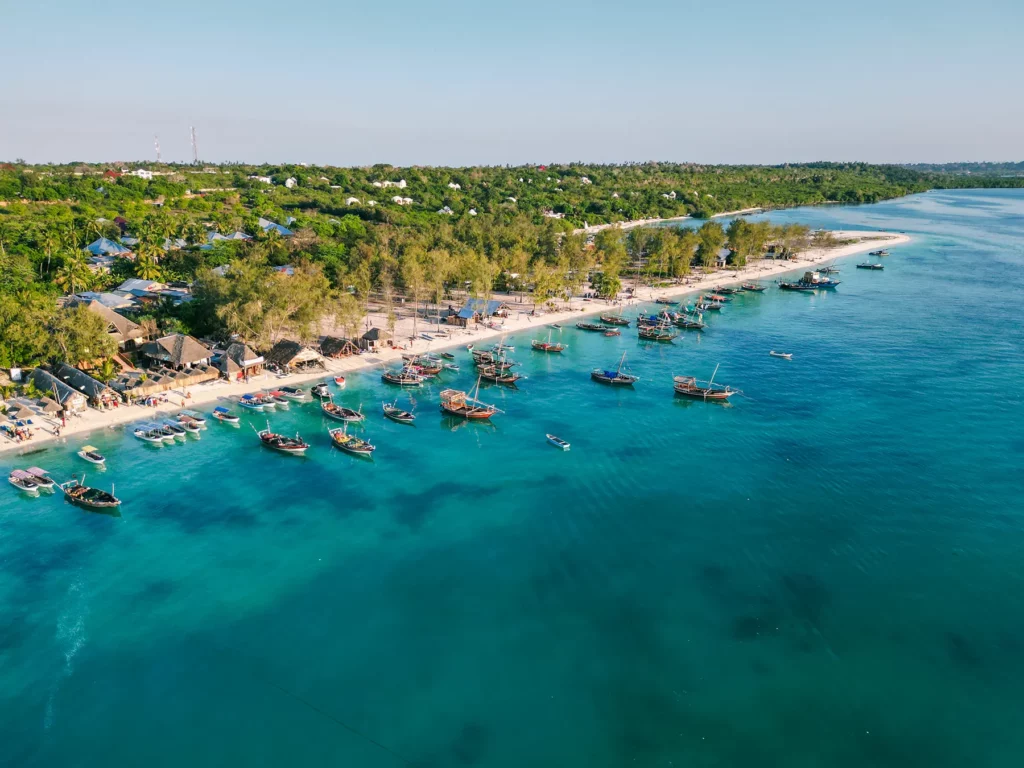
Zanzibar Map
Here’s a map I made of Zanzibar showing the key attractions.
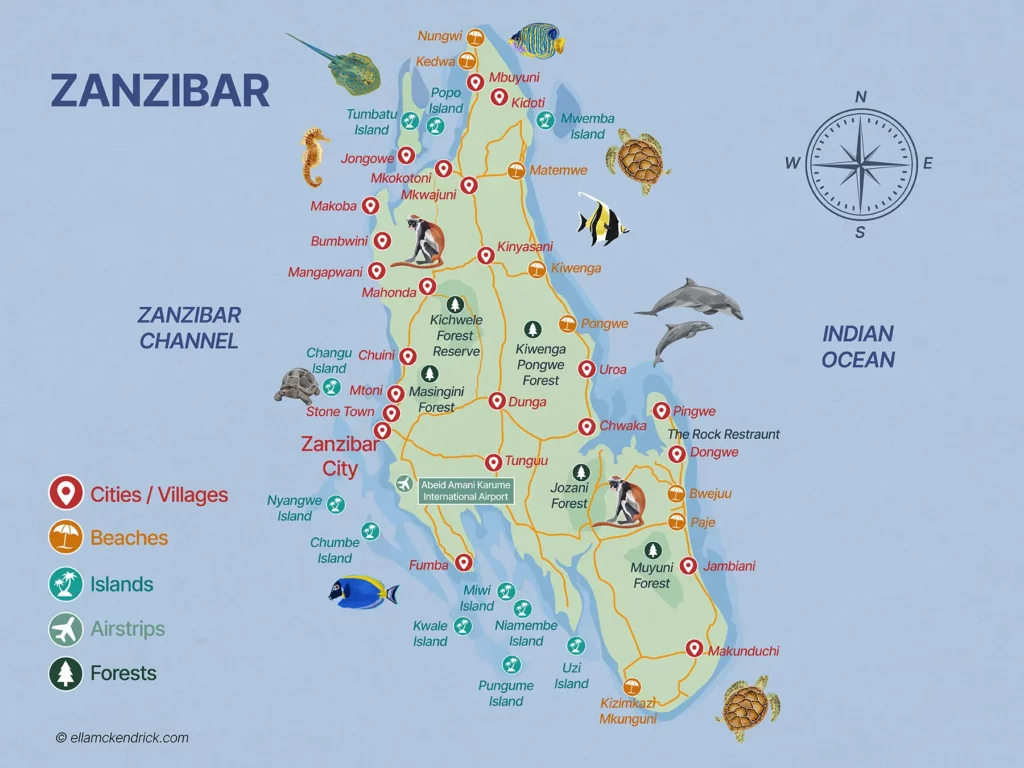
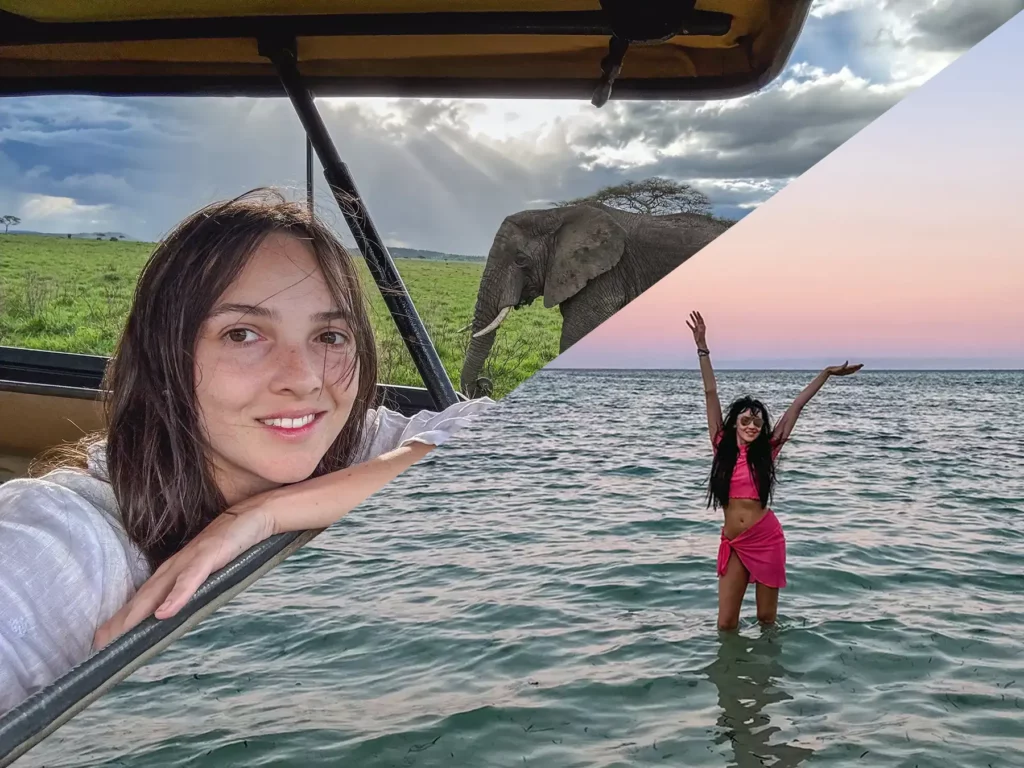
Embark on the Safari & Beach Holiday of Your Dreams
Save time and ensure an incredible safari experience by getting quotes from my recommended local safari companies
I’m here to make booking your perfect safari quick, easy and risk-free.
Join the rapidly growing tribe of over 1,000 travellers who’ve booked their dream safari using my insider tips and recommendations.
It takes under 60 seconds to fill out the form and in under 48 hours you will receive multiple, no-obligation proposals from my favourite local tour operators with glowing online reviews.
Get your free no-obligation safari quotes and my top safari tips and recommendations
In This Guide
- Why Visit Zanzibar?
- About Zanzibar
- Zanzibar for Safari and Beach
- Can You Go on Safari in Zanzibar?
- Parks and Reserves in Zanzibar
- How to Book Your Zanzibar Safari and Beach Adventure
- How Much Does a Zanzibar Holiday Cost?
- Zanzibar Honeymoon
- Best Beaches in Zanzibar
- Wildlife
- History
- Weather & Climate
- Best Time to Visit
- How Many Days?
- Zanzibar Archipelago Islands
- Things to do
- Is Zanzibar Worth It?
- Where to Stay
- What to Pack
- Zanzibar Logistics
- Serengeti & Zanzibar
- How Does Zanzibar Compare?
- Best Zanzibar Itineraries
- Good to Know Before You Go
- Videos
- Final Thoughts
- Read More Guides
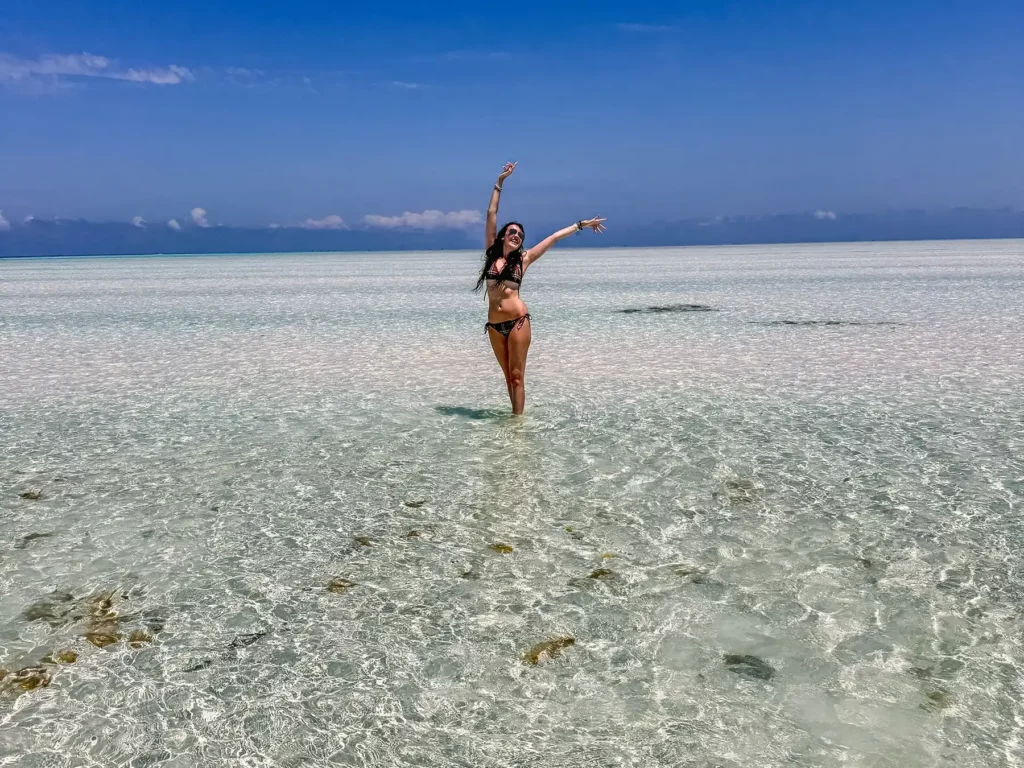
Why Visit Zanzibar
Before we dive into the details, let’s take a look at the key reasons I think Zanzibar deserves a visit as well as a few of the cons to consider.
Reasons to Visiting Zanzibar
- Beautiful crystal clear waters reminded me of the Maldives
- Some of the most beautiful beaches in the world
- Great snorkelling around Mnemba Island in the North East.
- Better value for money compared to other beach destinations such as the Maldives & Seychelles
- Easy to combine with a Big 5 Serengeti safari on Tanzania’s mainland
- Boasts the historic stone town, a UNESCO World Heritage Site
- Jozani National Park with Zanzibar columbus monkeys
- Friendly locals and incredible food
- Multiple Islands to visit and explore
- Lots of luxurious 5-star resorts to choose from
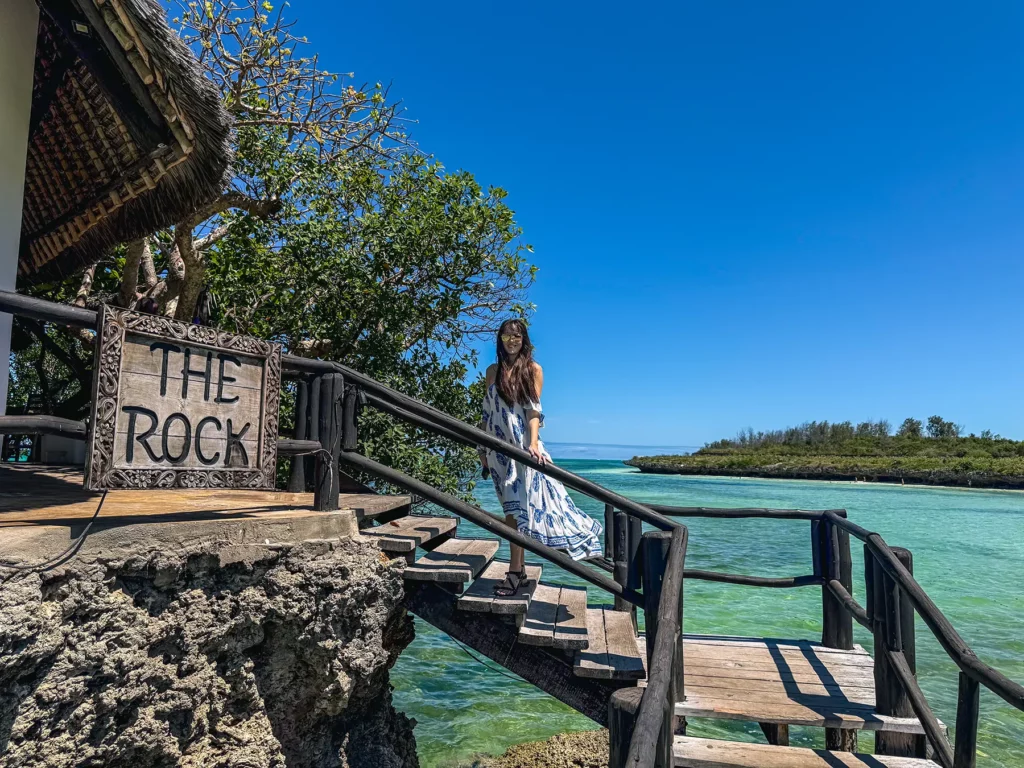
Considerations When Visiting Zanzibar
- Whilst good value, it’s more expensive than beach destinations in Asia
- Can get very hot at certain times of year
- Some hotels are “tourist traps” (charge you for everything) so choose accommodation wisely
- Limited public transport so you need to take taxis to most locations
- Pushy beach vendors on the most popular beaches (although I didn’t have this experience myself!)
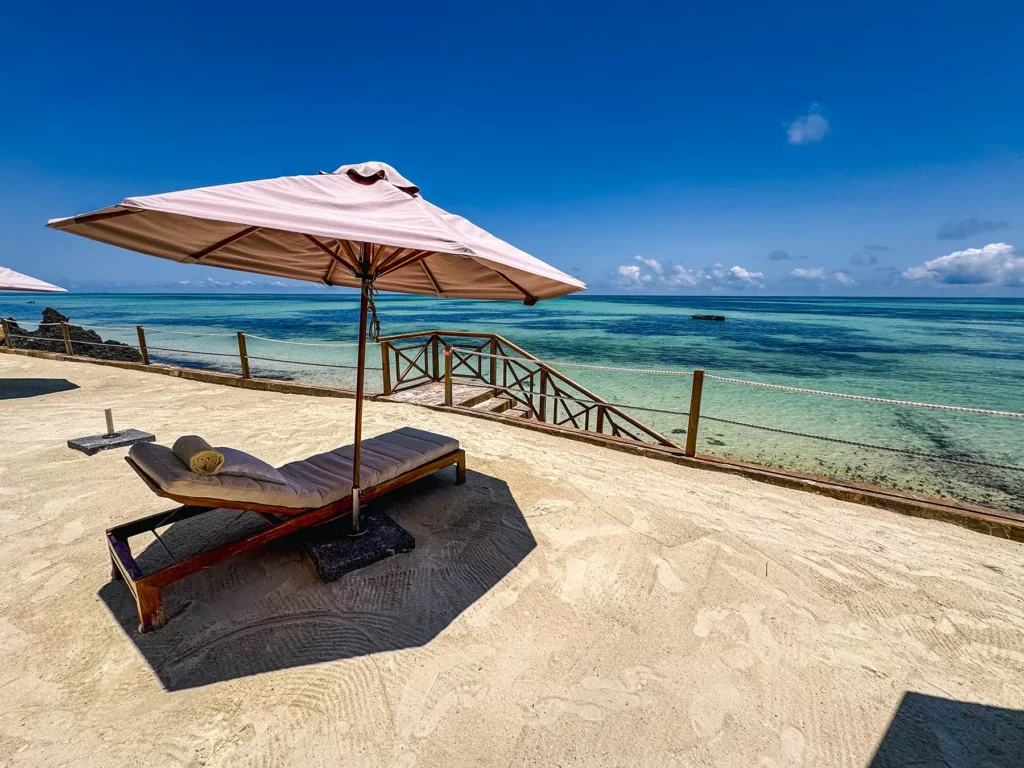
Everything You Need to Know To Plan The Perfect Zanzibar Holiday
Picture a dreamy tropical island paradise where history, culture, and architecture blend harmoniously with nature. Here, the long white sandy beaches with swaying palm trees sit beside the gentle turquoise waters of the Indian Ocean.
You can watch my experience in Zanzibar below or scroll on to continue reading this guide.
Zanzibar is an archipelago in the Indian Ocean, located just off the eastern coast of Tanzania. Its convenient location – just a short flight from the world-class national parks on Tanzania’s mainland -makes it ideal for combined safari and beach holidays.
The island’s diverse history is reflected in its blended architectural and cultural heritage, which incorporates influences from Africa, the Middle East, and Europe.
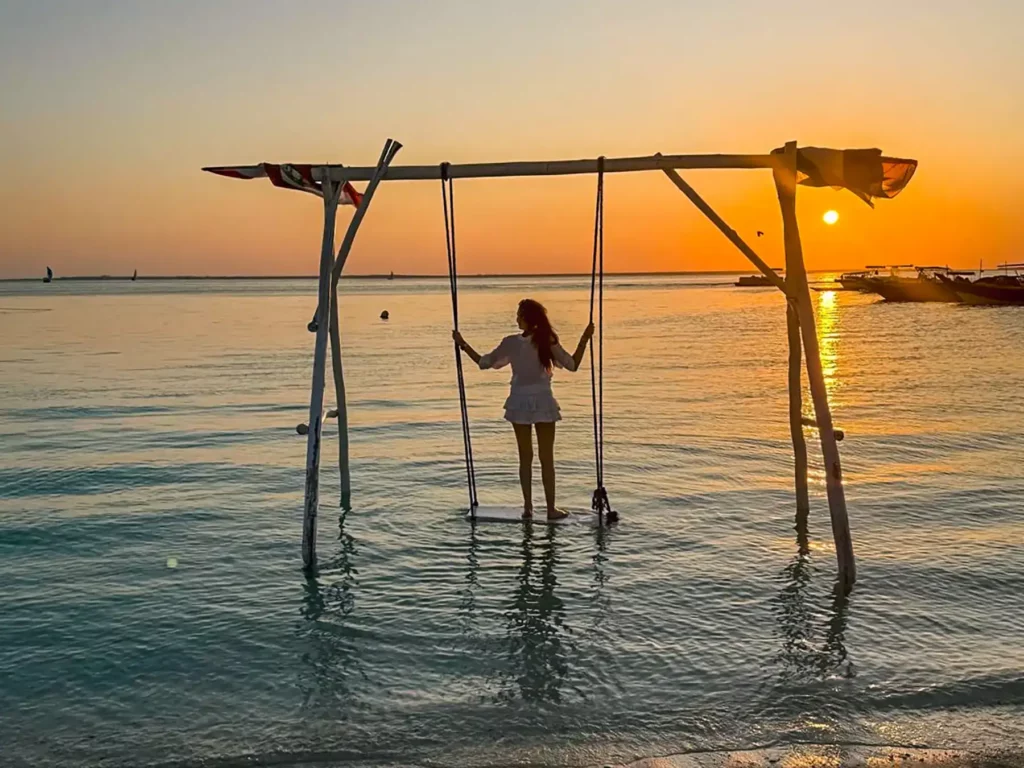
Zanzibar played a key role in the spice trade route, and merchants from around the globe set up bases there.
Head to Stone Tone, a UNESCO World Heritage Site, to get a taste of the island’s past while wandering through its winding alleys, historic buildings, the site of the Old Slave Market and vibrant culture.

You can jump to more information on each of part of this section using the links below.
Multiple Islands to Stay on or Explore
Where is Zanzibar Located?
Zanzibar is an archipelago and located off the East Coast of Africa, just south of the equator.
Zanzibar consists of two larger and more developed islands (Unguja aka Zanzibar Island and Pemba Island), as well as a host of other tiny, mostly uninhabited islets and sandbanks. They form a semi-autonomous part of Tanzania.
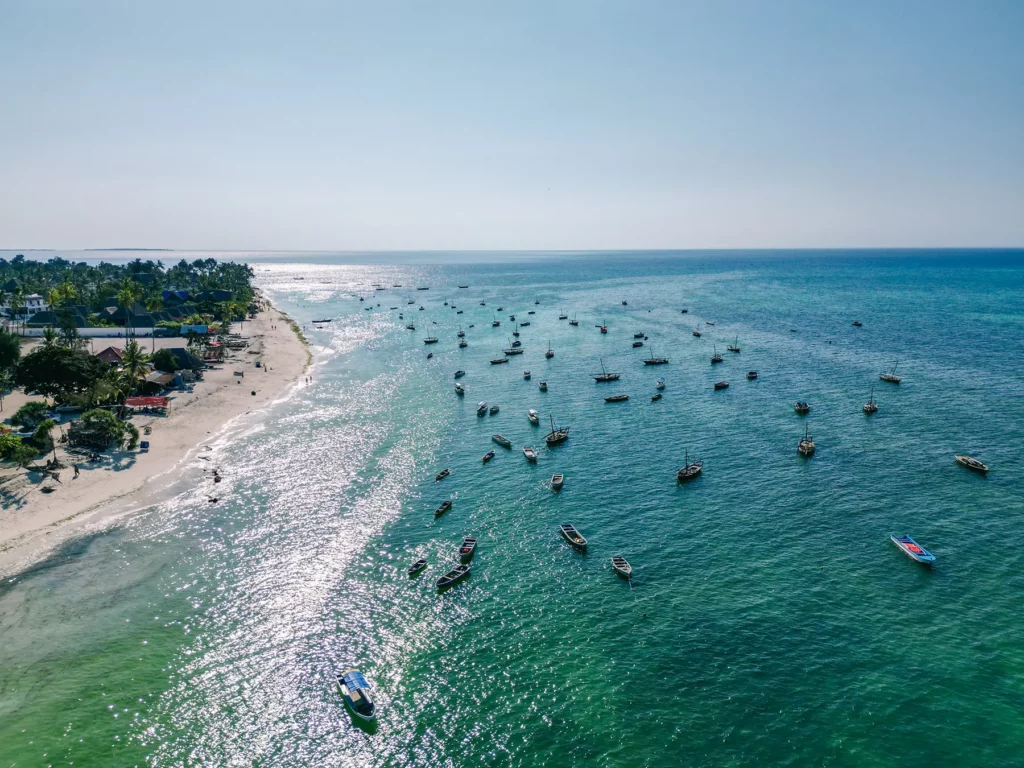
What is Zanzibar Famous for?
Today, Zanzibar is mainly known for its stunning beaches, crystal clear waters and a range of incredible water sports activities, including swimming, snorkelling, scuba diving, sailing, kayaking, and fishing.
Zanzibar is equally known for its delectable food, especially seafood dishes, which are uniquely and exquisitely flavoured by the island’s homegrown aromatic spices.
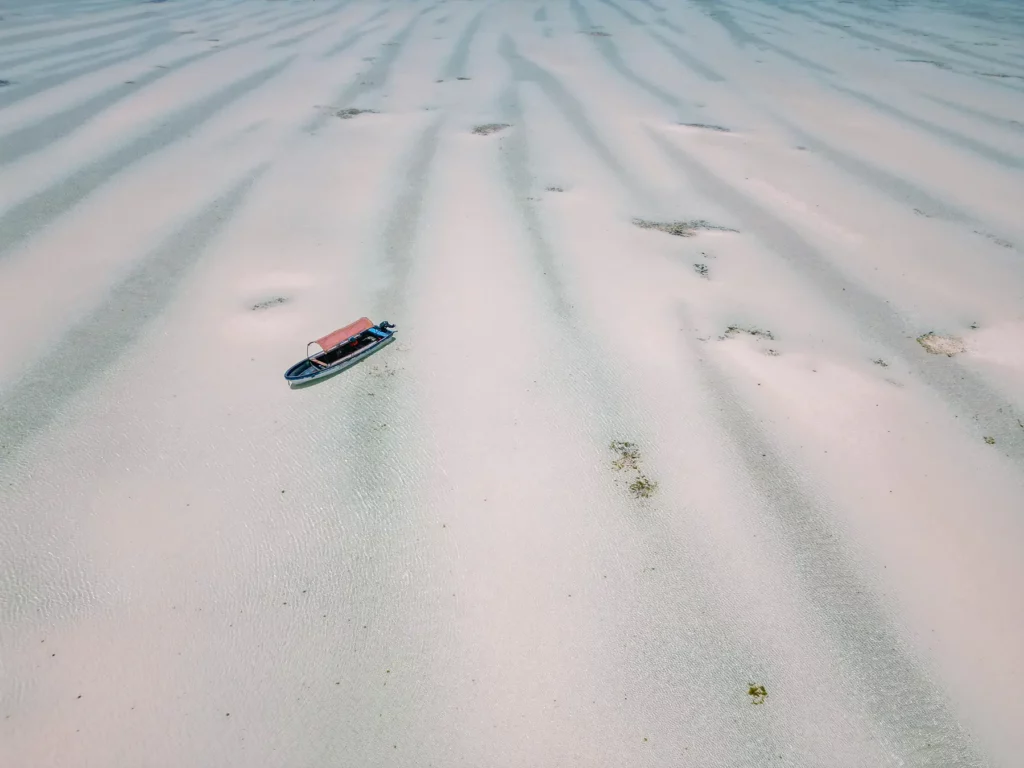
Zanzibar also has a dark past – once an important player in the spice and ivory trade, it later became central to the slave trade for hundreds of years, especially when demand for enslaved people grew in North and South America during the 18th and early 19th centuries.
A visit to the old slave market in the historic Stone Town in the heart of Zanzibar City will be a sobering reminder of an awful chapter of this beautiful island’s turbulent past.

How Big is Zanzibar?
The two main Zanzibar islands Unguja (Zanzibar Island) and Pemba Island cover approximately 2,645 km² (1,021 sq mi), which is less than 0.3 % of Tanzania’s total area. However, their financial contribution to the country is huge.
Zanzibar’s tourist industry alone contributes nearly a billion US dollars annually to the Tanzanian economy, while the agricultural and fishing sectors add $410 million. Together, they employ just under a quarter of a million people.
To give you a sense of scale, the two Zanzibar islands are larger than Mauritius and Seychelles, both independent countries. However, the island of Bali, another favourite holiday destination, is more than double the size of the two Zanzibar Islands.
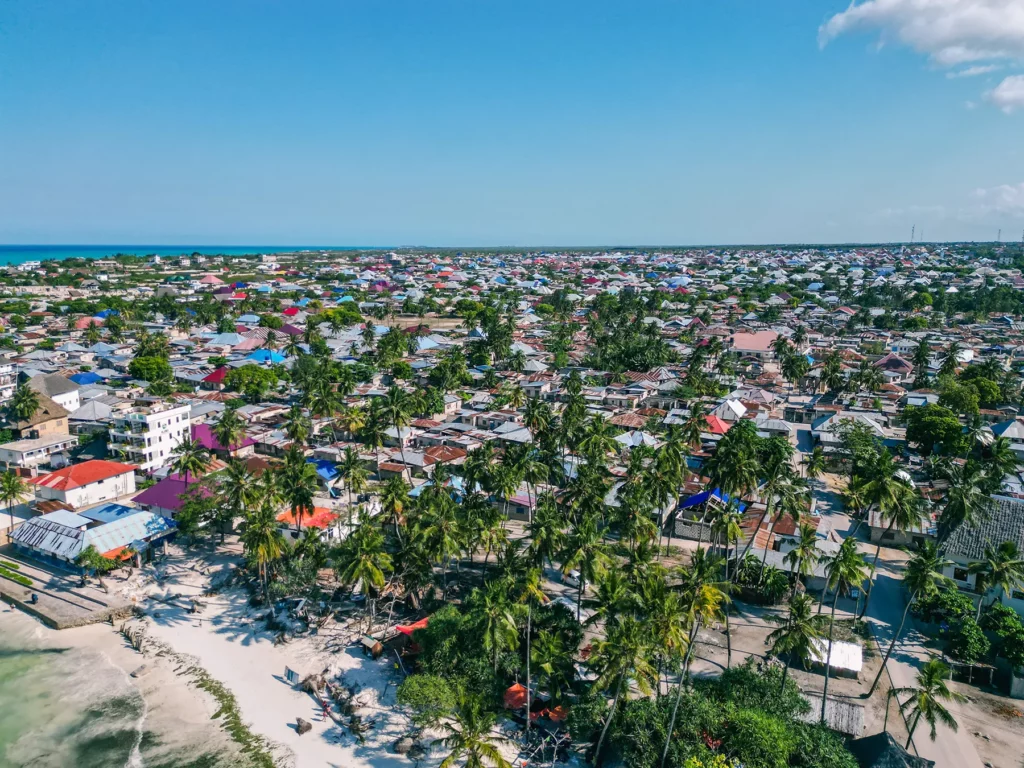
The Maldives consists of hundreds of tiny islands, which together take up only 116 square miles (300 km²). Thus, the Maldives are a mere fraction of Zanzibar.
The numerous smaller Zanzibar islands surrounding Unguja and Pemba are mere pebbles in the ocean, most of them only a few hundred metres long and mostly uninhabited. They do, however, make fantastic day excursion destinations.
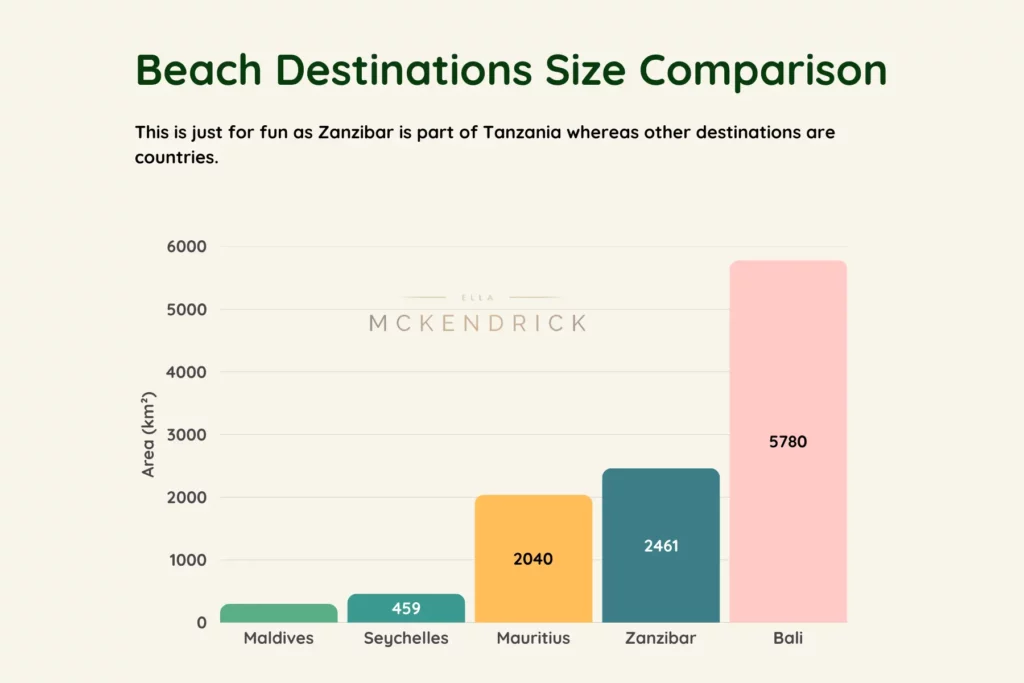
Zanzibar Archipelago has Multiple Islands to Stay on or Explore
The official name of the main & largest island in the Zanzibar archipelago is Unguja, but it is commonly and informally referred to as Zanzibar or Zanzibar Island, with Zanzibar City as its capital, possibly because Unguja is difficult to pronounce for tourists.
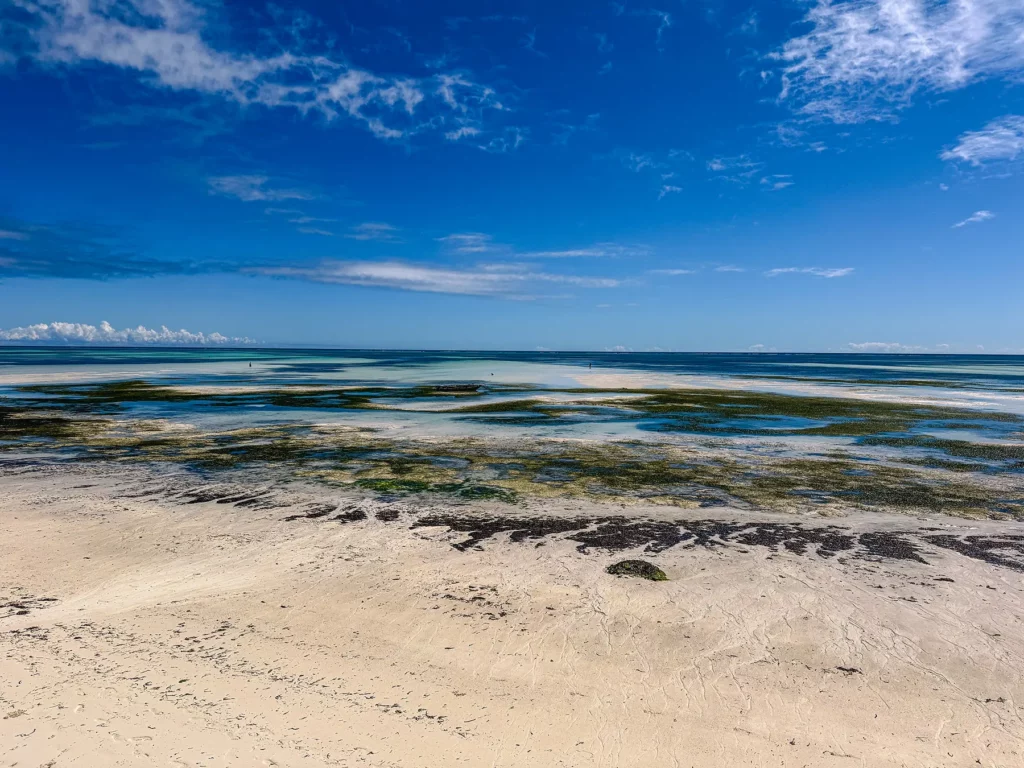
At its closest point, Unguja is about 23 miles (37km) off the Tanzanian mainland. From the port city of Dar es Salaam, it takes about two hours to reach Unguja by boat. However, most tourists choose to fly to Zanzibar – you can fly directly from most hubs such as Doha, Amsterdam etc.
The second, smaller Pemba Island, which lies about 25 miles (40 km) to the north, is far less developed. Most of its beaches are devoid of large resorts and hotels, providing a more exotic and tranquil setting.
You can jump to more details on all the key Zanzibar islands which we cover later in this guide.
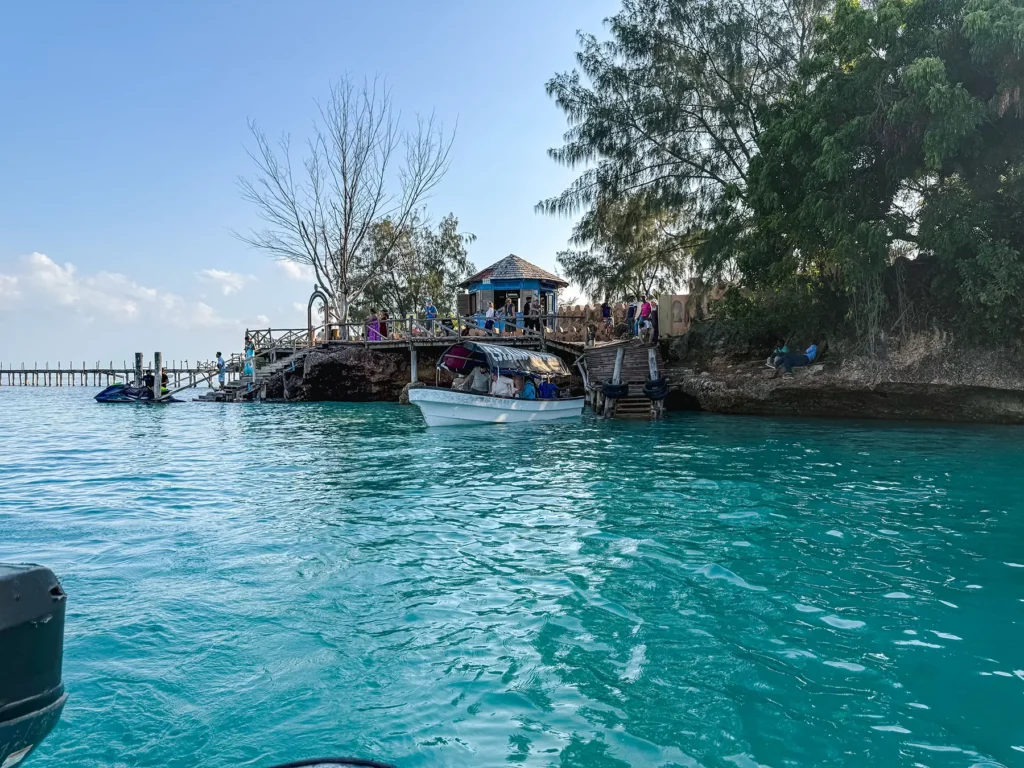
Zanzibar for Safari and Beach
Due to Zanzibar’s proximity to Tanzania’s mainland, it’s common for travellers to combine a mainland Tanzanian safari, in parks such as the Serengeti, with a beach retreat in Zanzibar. And, if you have time, I highly recommend making this part of your plan!
Whilst you can do some safari activities in Zanzibar (we’ll cover these in a moment), Tanzania’s mainland has some of the best safari reserves in the world, such as the world class Serengeti National Park, and you can easily fly to or from Zanzibar on a domestic flight, either directly from a Serengeti airstrip or via Arusha, the gateway to Tanzania’s Northern safari Circuit.
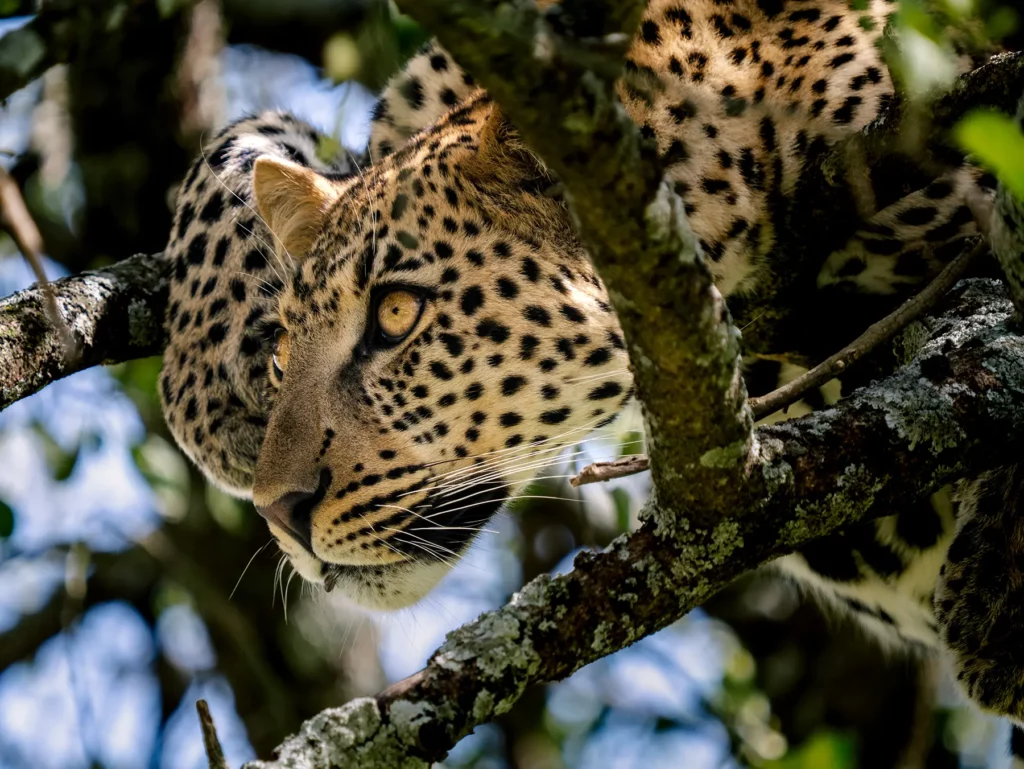
While the adventurous wildlife safaris on the mainland will put you right in the middle of the action, a Zanzibar beach stay provides the ultimate relaxation, which is precisely why they combine to make the perfect itinerary. After an exhilarating few days of marvelling at wild animals from a safari jeep, what could be better than some self-care on Zanzibar’s soft, sun-soaked sands?
For safari and beach ideas, check out my ultimate 10-day Tanzania safari and beach itinerary, perfect for a honeymoon or an epic holiday.
Alternatively, jump to the itineraries section of this guide here.

Can You Go on Safari in Zanzibar?
Yes, you can go on safari in Zanzibar. The archipelago has several protected areas, including wildlife and marine reserves, as well as one national park. The park is home to a variety of wildlife, including rare red Zanzibar colobus monkeys, Aders’ duiker, Sykes’ monkeys, and a wide range of bird species.
The island also offers the chance to see marine life, including dolphins, turtles, and vibrant coral reefs.
However, if you want to go on a traditional safari to see the Big Five (lion, leopard, elephant, buffalo, rhino) in the wild, you would need to take a short flight to Tanzania’s mainland. There, you can visit world-class safari parks such as the Serengeti National Park, Ngorongoro Crater, and Tarangire National Park.
Below, I’ll cover your safari options. You can jump to any of these sections with the links below:
Wildlife & Marine Reserves in Zanzibar
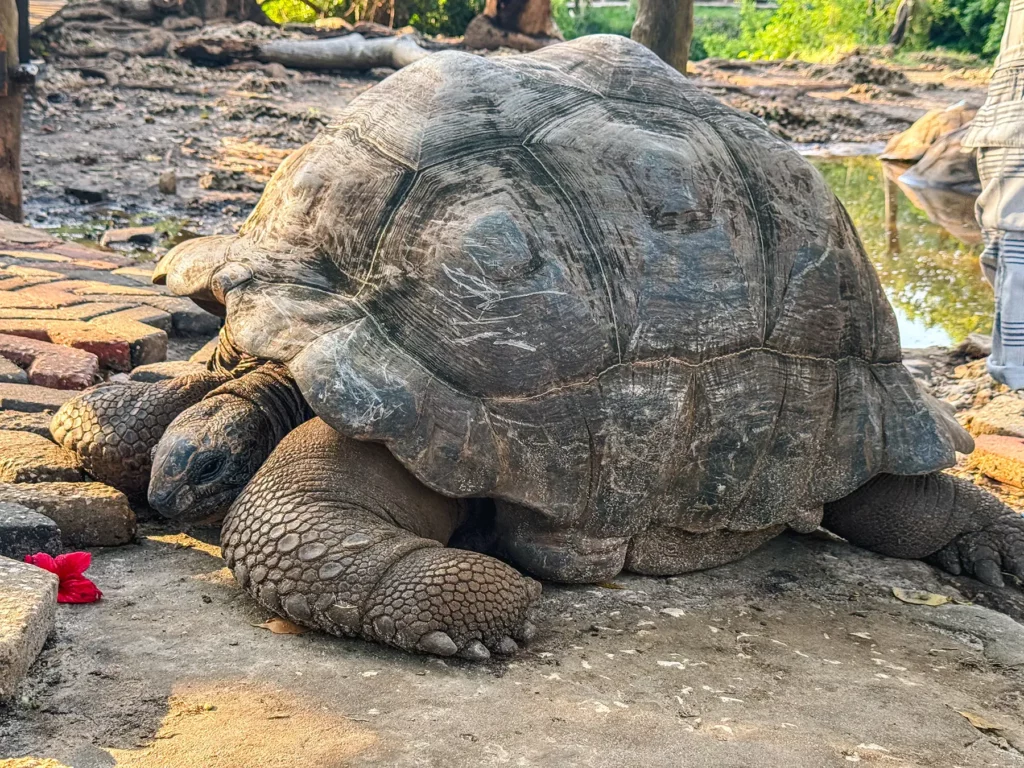
Wildlife & Marine Reserves in Zanzibar
You can jump to more information on each of reserve using the links below.
Jozani Chwaka Bay National Park (Jozani Forest)
The Jozani Chwaka Bay National Park is at the top of the list. It is Zanzibar’s sole national park and its pride and joy.
Jozani Chwaka Bay National Park includes Jozani Forest, mangrove areas, and parts of Chwaka Bay.
Situated about 15 miles (25 km) southeast of Zanzibar City on the main route to the southern section of the island, this 20-square-mile (50 km²) park is a haven for an estimated 1,600 to 3,000 rare red colobus monkeys, which are endemic to Zanzibar.
It also houses Sykes’ monkeys, bush babies, Aders’ duikers, Zanzibar servaline genets, and over 40 species of birds.
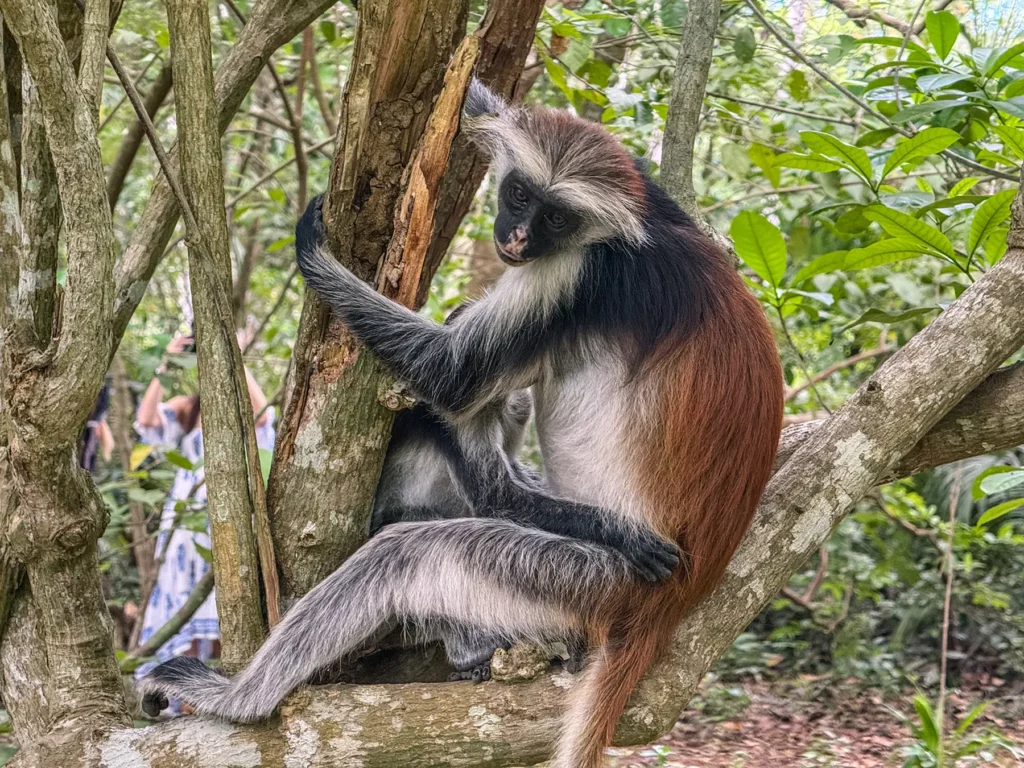
This park was once home to the Zanzibar leopard. However, with the last confirmed sighting in 1995, this animal is now presumed extinct, although unsubstantiated sightings are occasionally reported.
The forests and mangroves surrounding the park are a joy to wander through. You can lose yourself for a few hours among the gigantic trees and lush vegetation. Many of these are vital sources of natural medicinal treatments, acting as nature’s pharmacy for the local population.
Top Tip: Visits have to be booked in advance, either directly or through your tour operator and you walk around with a helpful guide. Visits last around 2 hours and I’d recommend taking plenty of water as it can be quite hot and humid.
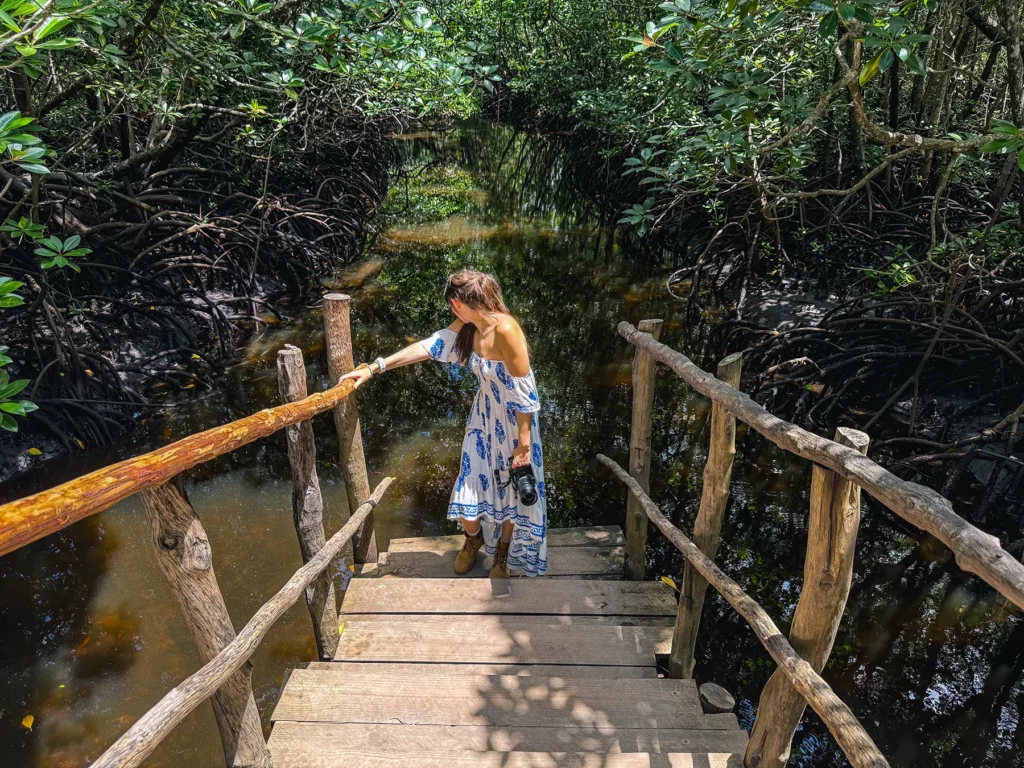
Pros of Jozani Forest
- Great place to see the endangered Zanzibar red colobus monkey, which is endemic to the island and frequently sighted
- Very diverse ecosystem including mangrove forests
- You may see other interesting wildlife like Sykes’ monkeys, bush babies, and various bird species
Cons of Jozani Forest
- Aside from the red colobus monkey you may not see much other large wildlife
- You must have a guide (I actually enjoyed this)
- Can get busy at peak times
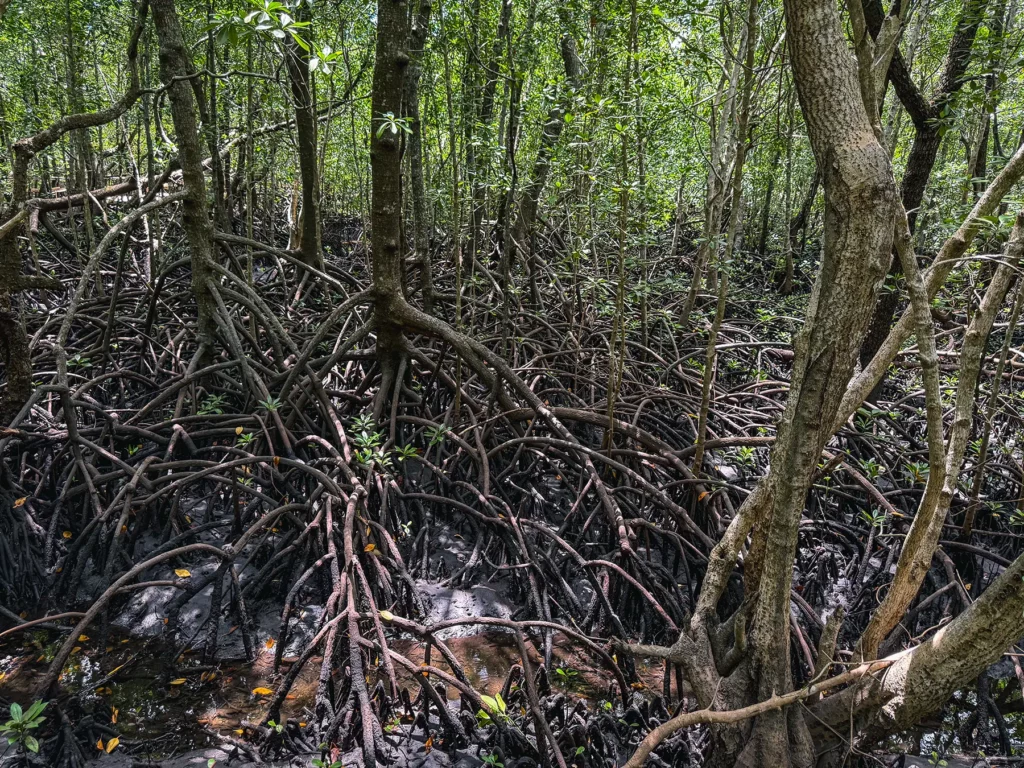
My personal experience visiting Jozani Forest
Seeing the Zanzibar red colobus monkeys was such an exciting experience. You can only enter Jozani Forest with a guide, and they will help you spot the island’s endemic wildlife as you walk into the forest. Walking beneath the trees was incredibly peaceful, and I loved the bird song. I even saw a hummingbird!
Alongside blue monkeys, I finally saw the red colobus monkeys, who were incredibly calm in our presence. Baby monkeys were jumping around in the canopy above while a nearby mother held her very tiny baby close. So sweet!
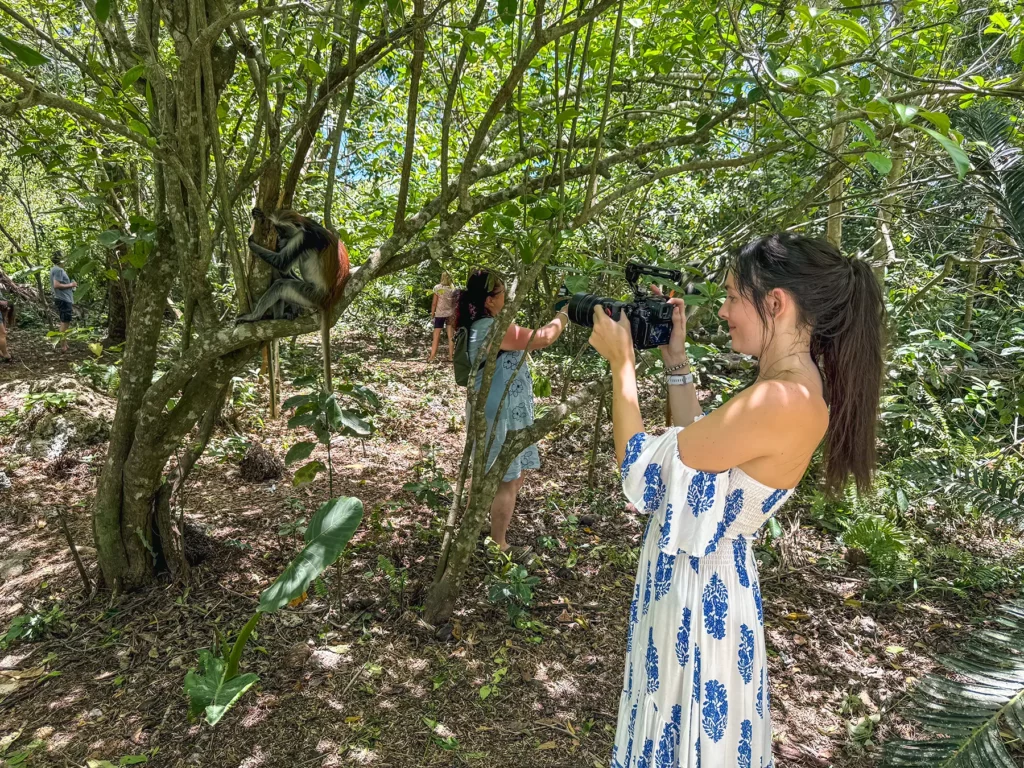
Kiwengwa-Ponge Forest Reserve
The Kiwengwa-Ponge Forest Reserve is a similar, but smaller, park located in the northeastern section of Unguja, 12 miles (20 km) from Zanzibar City.
In the reserve, you can see red colobus and vervet monkeys, duiker, and over 40 species of birds, among which the vivacious Fischer’s turaco, Zanzibar Sombre-Greenbul, crowned hornbill, and white-browed coucal are reasonably common sightings.
A walk in this forest will lead you to the Kiwengwa Caves, a labyrinth of stalactite-filled caverns and caves which hold cultural and spiritual importance.
On a darker note, the cave’s history also includes a time when enslavers used it to incarcerate enslaved people, who were awaiting shipping to the Middle East.
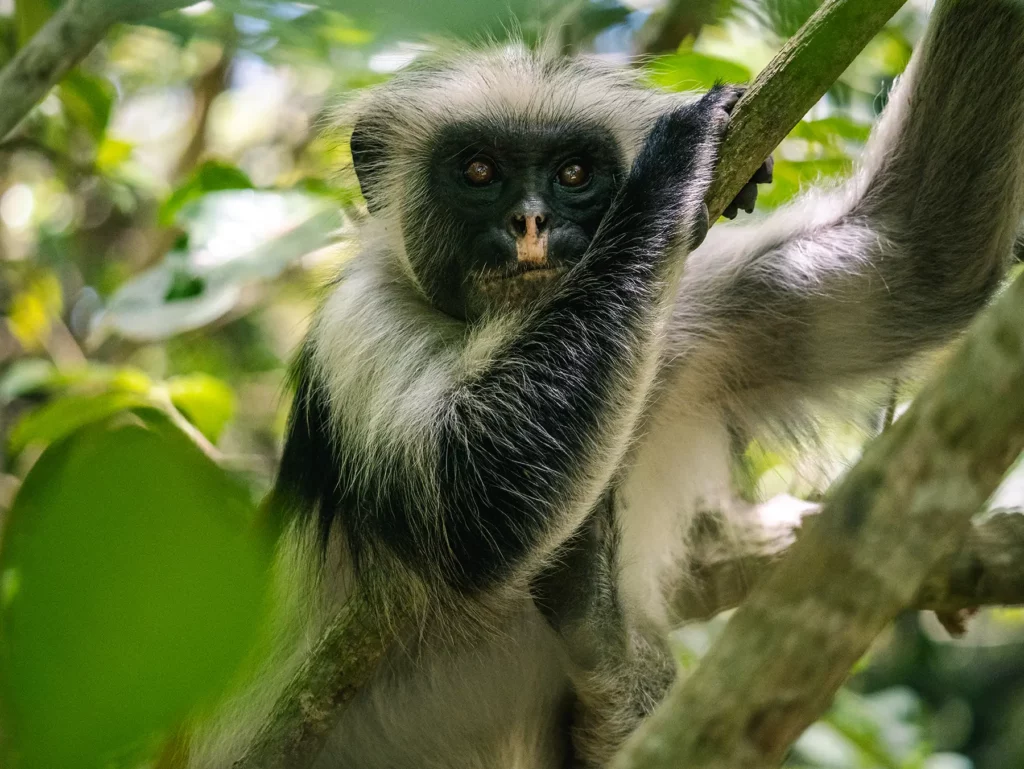
Pros of Kiwengwa-Ponge Forest Reserve
- Chance to see the Zanzibar red colobus monkey, which you can’t see anywhere else in the world
- Explore various types of forest and coral caves with stalactites and stalagmites
- Less crowded compared to some of the more famous spots
Cons of Kiwengwa-Ponge Forest Reserve
- Ongoing timber extraction since the 1970s has led to forest degradation, impacting wildlife
- Less developed for tourism, with fewer amenities and infrastructure compared to other parks
- You must have a guide

Ngezi Forest Reserve, Pemba
Located at the northern tip of Pemba Island, Ngezi Forest Reserve is the second-largest protected area in Zanzibar.
Despite its modest size, the reserve offers rich biodiversity, serving as a haven for red colobus monkeys, vervet monkeys, and the tiny blue duiker, which stands just 41 cm (16 inches) tall. Like other reserves in the region, it also features important mangrove ecosystems.
It is also home to the famous and endemic Pemba flying fox, one of the largest fruit bat species with a massive wingspan of over 5 feet (1.6 metres).
Several other animal and bird species are also found here, including Javan civet cats, hyrax, feral pigs, malachite kingfishers, African goshawks, and the raucous hadeda ibis, possibly the noisiest bird in the world.
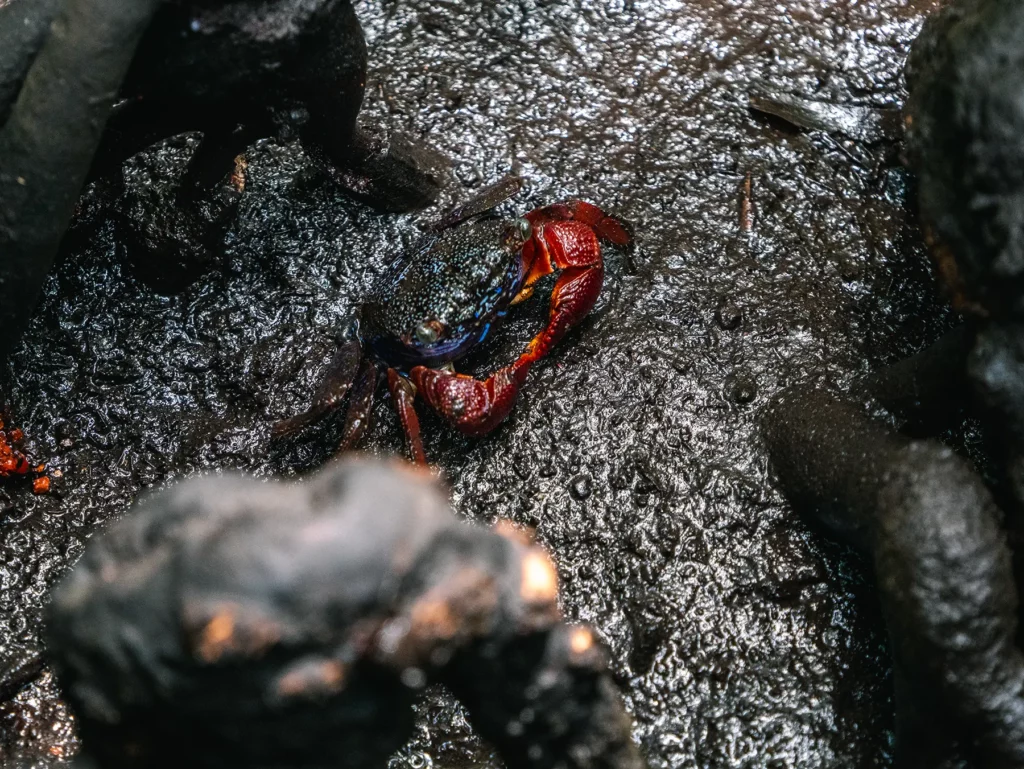
Pros of Ngezi Forest Reserve Pemba
- Potential to see endemic wildlife such as Pemba flying fox, Pemba vervet monkey, and Pemba scops owl
- Diverse habitats including tropical forests, mangroves, swamps, and heathlands
- Visits can include activities which support local communities
Cons of Ngezi Forest Reserve Pemba
- You must have a guide
- Few tourist facilities; trails can be challenging, especially during rains
- Past logging and ongoing pressures pose risks to the reserve
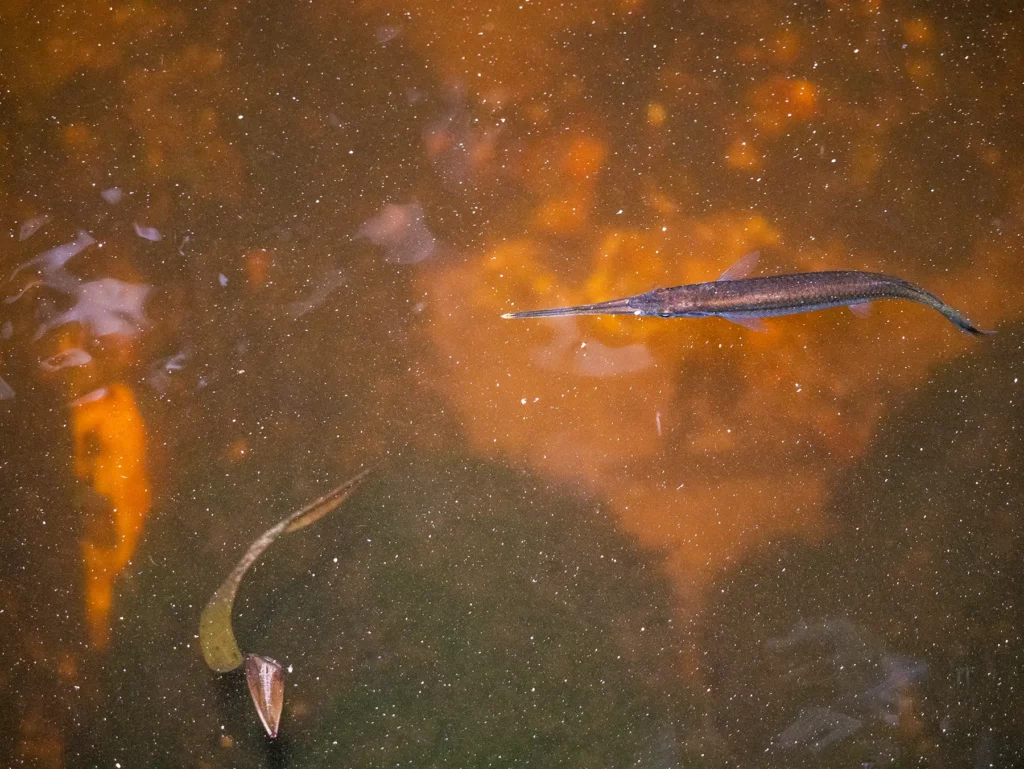
Marine Parks and Reserves in Zanzibar
Much of Zanzibar’s natural beauty lies beneath the crystal turquoise waters surrounding it, so you can swap your safari boots for flippers and sink beneath the waves!
There’s nothing quite like visiting one of the countless marine reserves scattered around the islands and enjoying an environment of a completely different kind.
You can jump to more information on each of reserve using the links below.
Mnemba Marine Park
Mnemba Marine Park is perhaps the most accessible marine park in Zanzibar, perched just 1.8 miles (3 km) off the north eastern shores of Unguja (Zanzibar’s main island).
The marine park consists of a private island which is surrounded by reefs and, at low-tide, pristine sandbanks.
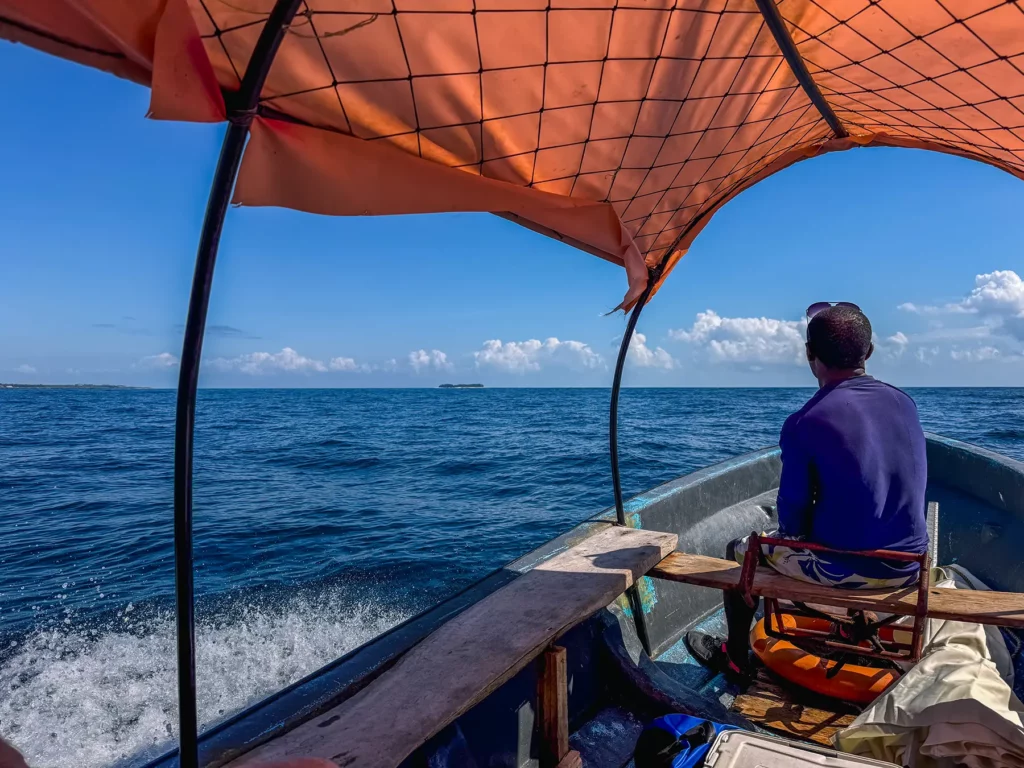
Whilst the island itself is privately owned by the &Beyond Resort and external visitors aren’t allowed to set foot on the island, the surrounding reefs and sandbanks can be visited by all.
There are thought to be an estimated 600 species of coral reef fish in the marine park. Some of the most frequently seen species include palette surgeonfish (more commonly known as Dory from Finding Nemo) and the stripey Sergeant major fish.
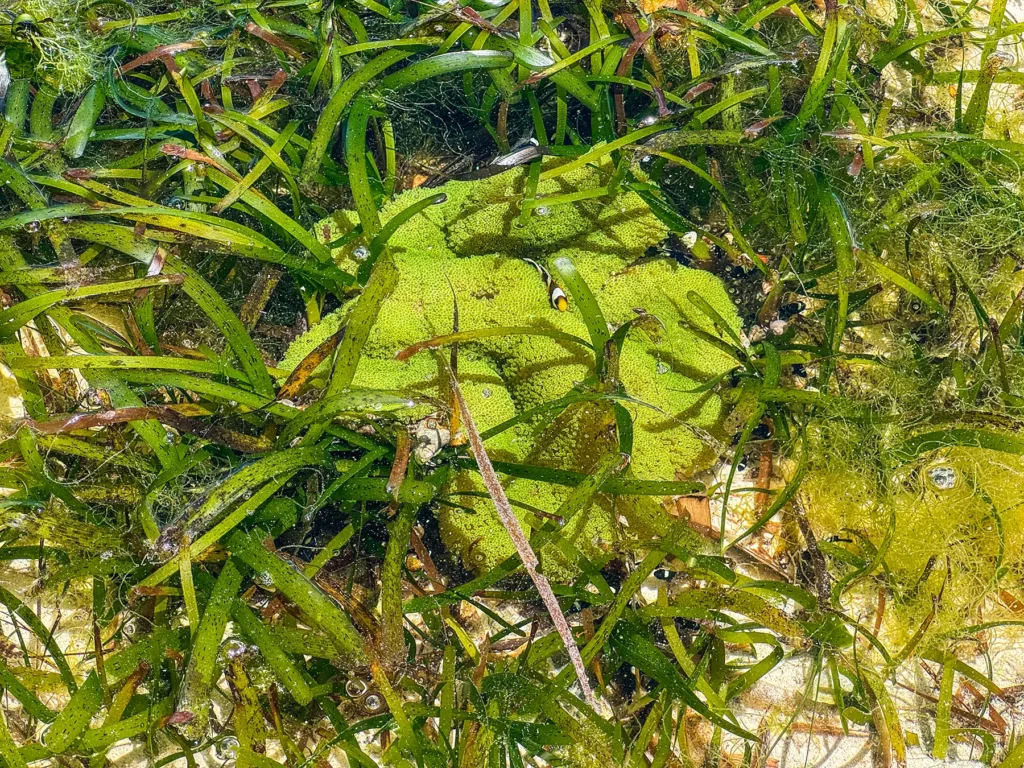
Whilst there’s a myriad of life to see in the marine park at all times of year, green sea turtles lay their eggs on Mnemba Island’s beach between February and September and humpback whales can be spotted in the area between July and September.
Dolphins are a species that is frequently spotted here. Although, I’d personally avoid boat trips to see them as the ethics of these tours is questionable. If you’re lucky, you may even spot a whale shark within the marine park!

The reef’s proximity to the surface makes it ideal for both novice and experienced snorkellers whilst the reef’s drop-off can be great for diving.
The reef can get pretty shallow in places, and whilst it may be tempting to rest your feet on the floor, please don’t – corals are extremely sensitive and standing on them can kill them.
Boat trips to Mnemba Marine Park are offered by most hotels. It’s a mere 20 minute boat ride from the closest beaches (Nungwi and Matemwe, for example) and a tour usually consists of dolphin watching, snorkelling and some drinks and snacks on a sandbank.
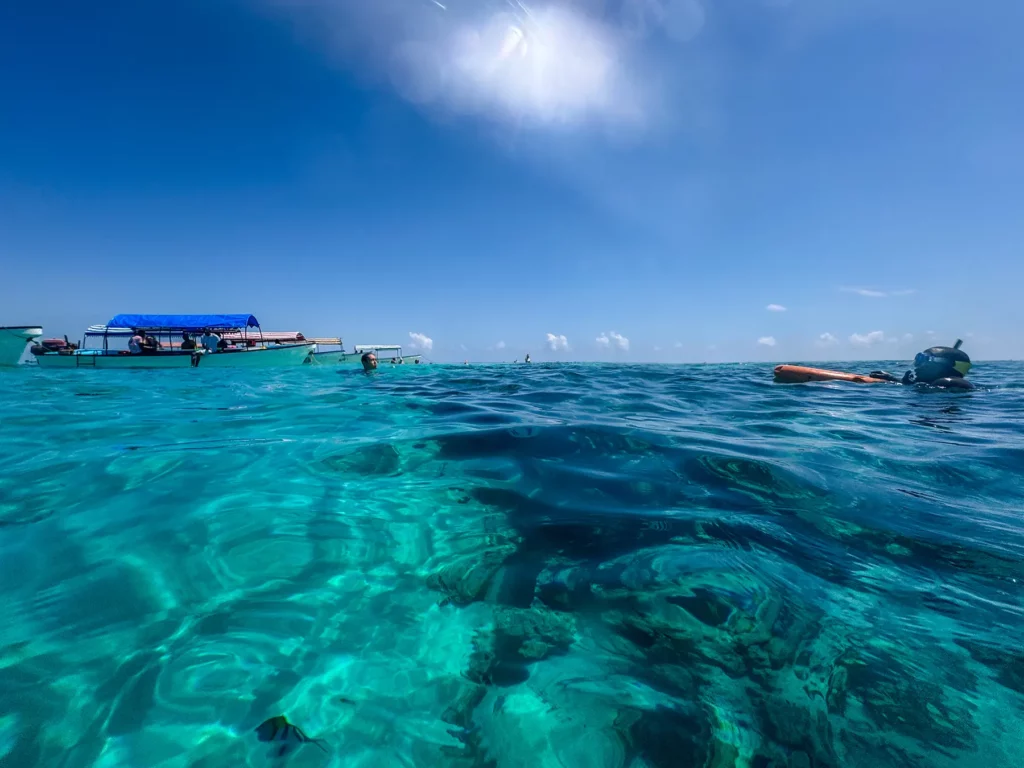
Most boat trips are private and therefore customisable. I’d highly recommend skipping the dolphin part of the tour as I found it distressing watching so many boats surround the dolphins and tourists practically jumping on top of them.
The boat trip typically lasts 3 – 5 hours, depending on how long you spend relaxing on your sandbar!
Optimal snorkeling and diving conditions are typically between November and March when the ocean is at its calmest. Outside these months, weather and sea conditions may be less favourable.
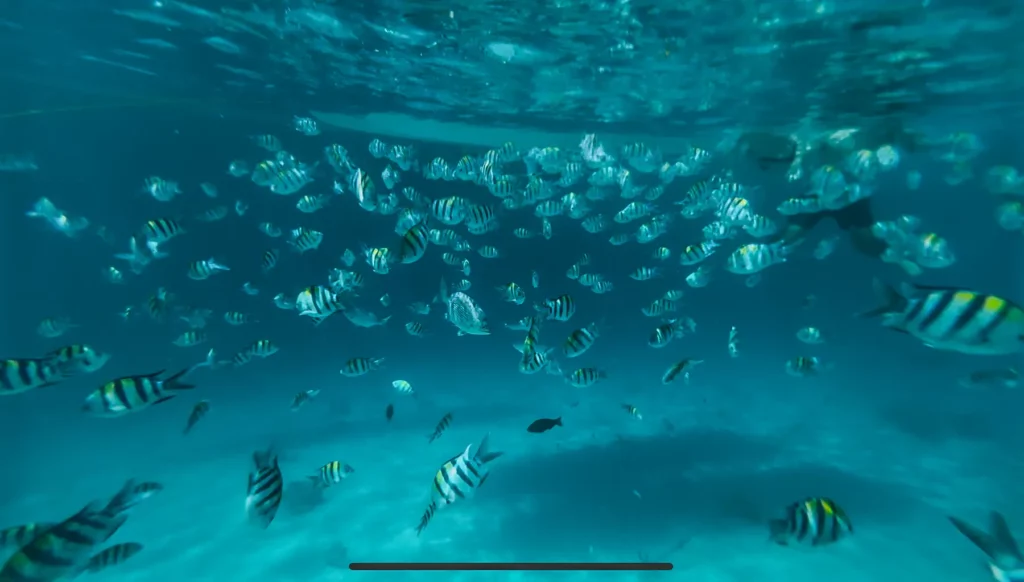
Pros of Mnemba Marine Park
- Diverse range of marine life, including over 600 species of coral reef fish, green sea turtles, dolphins
- Occasional sightings of whale sharks and humpback whales during their migratory seasons
- Exceptional water visibility, providing clear views of the vibrant coral reefs and marine life
- The reef’s proximity to the surface makes it ideal for both novice and experienced snorkellers
Cons of Mnemba Marine Park
- The island itself is privately owned by &Beyond and landing is prohibited for non-guests
- Can get very busy at peak periods
- Tourist boats often crowd dolphins so I’d recommend skipping any dolphin watching in the marine park
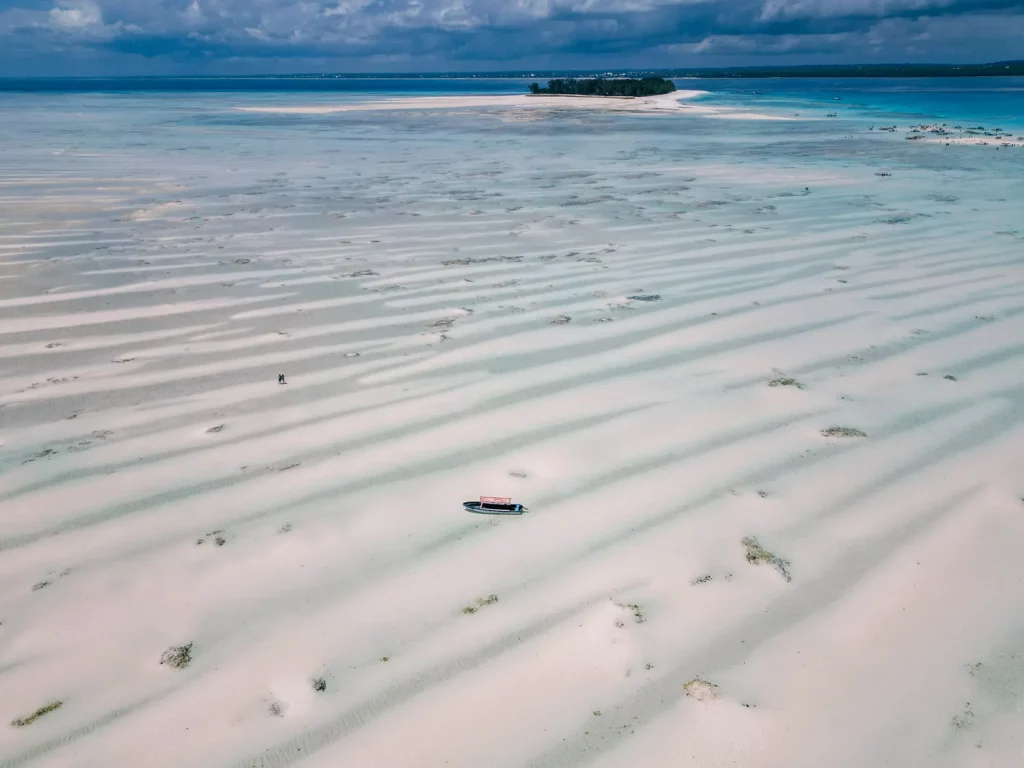
Chumbe Island Coral Park
Situated about 5 miles (8 km) southwest of Zanzibar City is a virtually untouched island known as Chumbe Island.
This forest-clad island is home to a single small-scale hotel, otherwise it’s wild, inhabited by charming coconut crabs and an abundance of birds.
In fact, it’s known as an important bird area, famous for housing a breeding colony of some 750 pairs of roseate terns.
If that sounds impressive, just wait till you hear about the shallow reef which encircles the island. At least 90% of all hard coral species which can be found in East Africa have been documented in Chumbe’s reefs. These corals support 400 fish species including the rare Giant Grouper.
With so much to be seen beneath the waves, it’s no surprise that Chumbe Island Coral Park is one of the best places in Zanzibar for snorkelling.
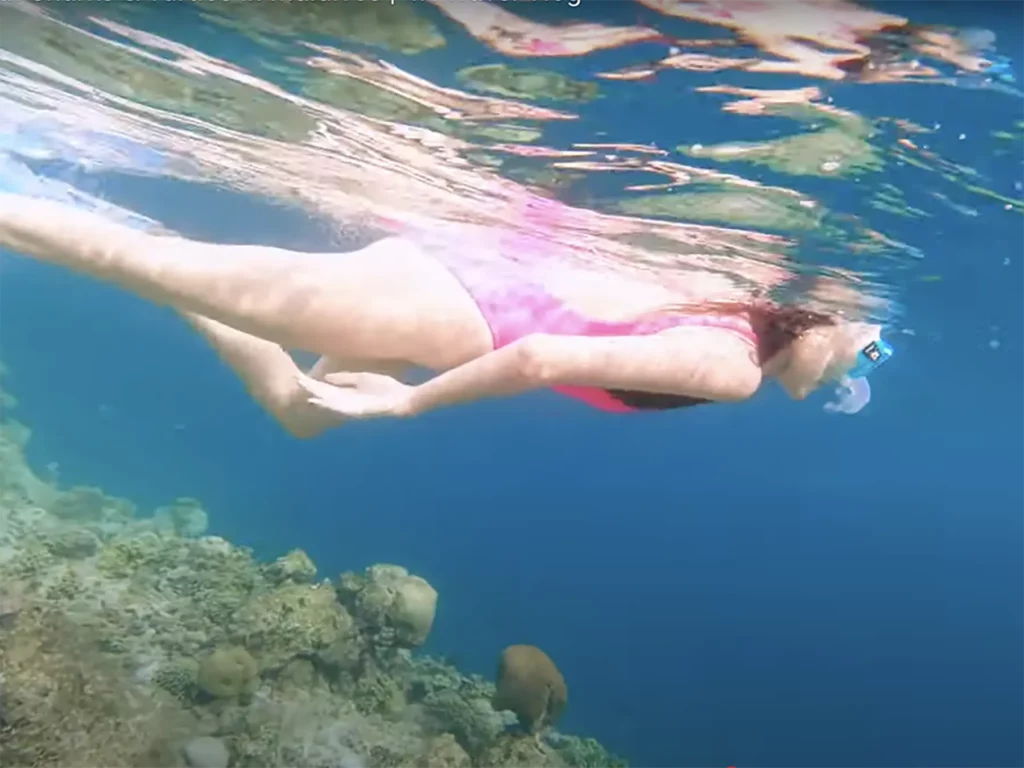
The shallow coral reefs range from one to three metres in depth and are ideal for novices, while experienced snorkelers can explore the deeper reefs and witness a wider range of tropical fish species, such as trevally and barracuda. It’s also possible to spot the bottlenose dolphins that often hang out around the reefs.
Even if you’re not a strong swimmer, there are opportunities to see the island’s sealife without submerging yourself beneath the waves. At low tide the intertidal zone becomes exposed, allowing visitors to walk around the island’s entire shoreline and explore the rock pools, inlets, and sandbanks teeming with juvenile fish and other marine creatures.
In order to keep the island’s reefs healthy, visitor numbers are limited and the priority goes to those who are staying on the island. The island is only open to day-trip visitors when there’s availability in the lodge.
The island completely closes within the long-rainy season, typically for the months of April and May.
You can arrange your day-trip visit or stay on the island here.
Pros of Chumbe Island Coral Park
- Home to over 500 fish species and 90% of East Africa’s hard coral
- One of the region’s most pristine reefs
- Much of the income from the park is reinvested back into conservation
- Helps support local communities through employment
Cons Chumbe Island Coral Park
- Only 14 guests can stay overnight, and day-trips are only permitted if there is availability at the lodge. In other words, if the 14 spaces are booked up, outside visitors can’t access the reserve
- Access is via a 45-minute boat ride from Zanzibar
- To protect the reef, scuba diving is prohibited; only guided snorkeling is allowed (not really a con if it protects the reef!)
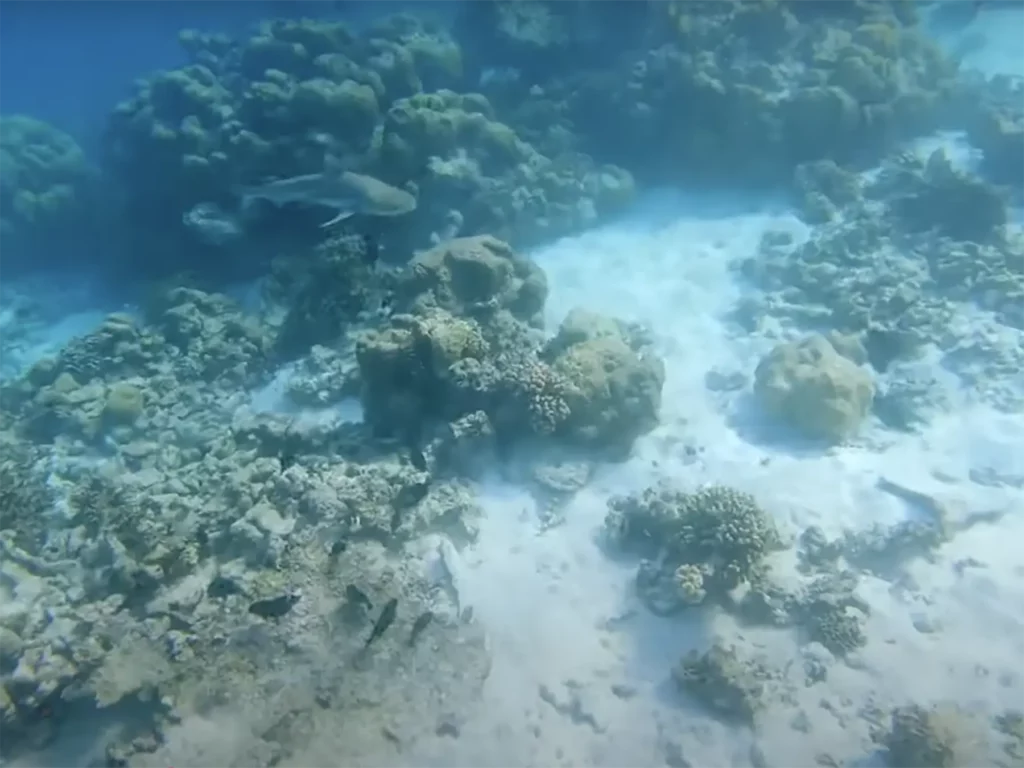
Menai Bay Conservation Area
The Menai Bay Conservation Area (MBCA) is Zanzibar’s largest marine protected area, covering 180 square miles (470 km²) of coral reefs and seagrasses, 38 miles (60 km) of mangrove forest-covered coastline, and six islets, situated off the southwest coast of Unguja Island.
The area was officially declared a conservation area in 1997 in order to address over-fishing. The project has been a success with 200 bottlenose and critically endangered humpback dolphins counted in the area in the year 2000.
However, ongoing efforts are definitely needed, especially for the humpback dolphin – there are thought to be only 19 individuals left and the shallow coastal waters of Menai Bay are perfect for them.
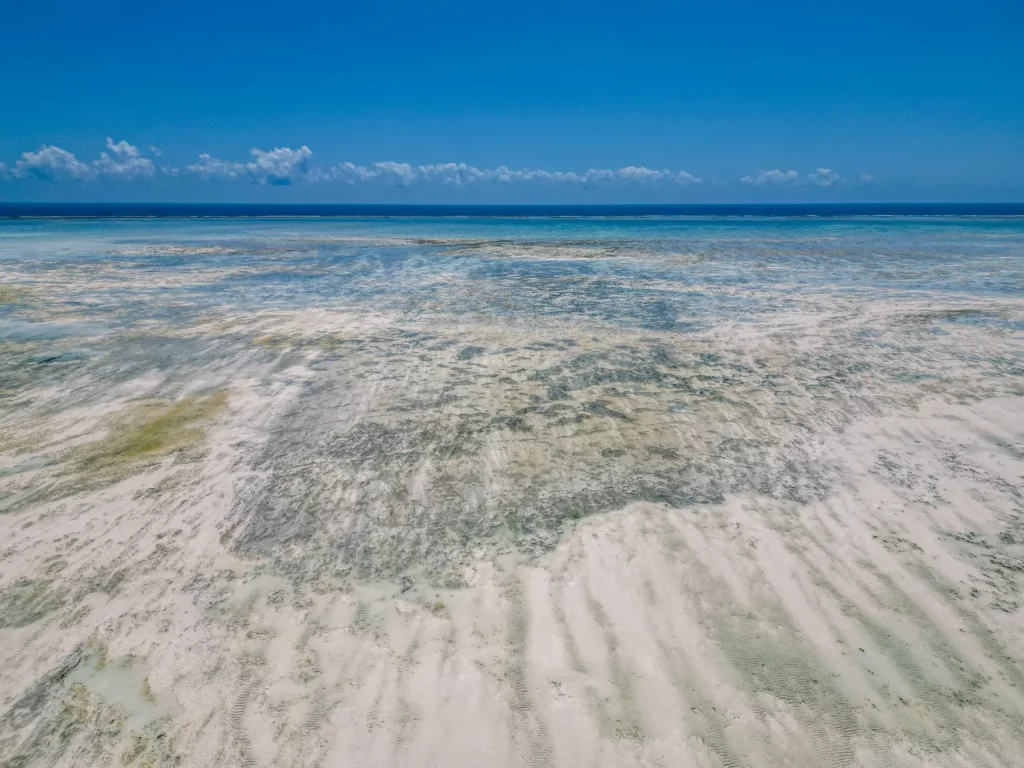
The average water depth in the bay area is around 10 metres (32 feet) during high tide. As well as dolphins, you may encounter turtles and a vast array of fish.
Boat trips from the mainland typically start from Fumba village and take place in a traditional dhow boat. The tours typically last for around 5 hours and include snorkelling, swimming in a mangrove lagoon and a seafood lunch on one of the islands.
Only a very small number of tours operate in this area. The most popular is The Safari Blue. They offer both group tours and private boat charter.
Pros of Menai Bay Conservation Area
- Encompasses diverse habitats, including coral reefs, seagrass beds, and mangrove forests.
- Home to resident populations of Indo-Pacific bottlenose dolphins and endangered Indian Ocean humpback dolphins
- The MBCA is co-managed by local communities and government authorities, promoting sustainable fishing practices and alternative livelihoods such as eco-tourism.
Cons of Menai Bay Conservation Area
- Boat-based dolphin watching, can disturb marine life
- Increased tourism has led to coral reef degradation along the coastline
- Some illegal fishing practices persist due to limited enforcement capacity
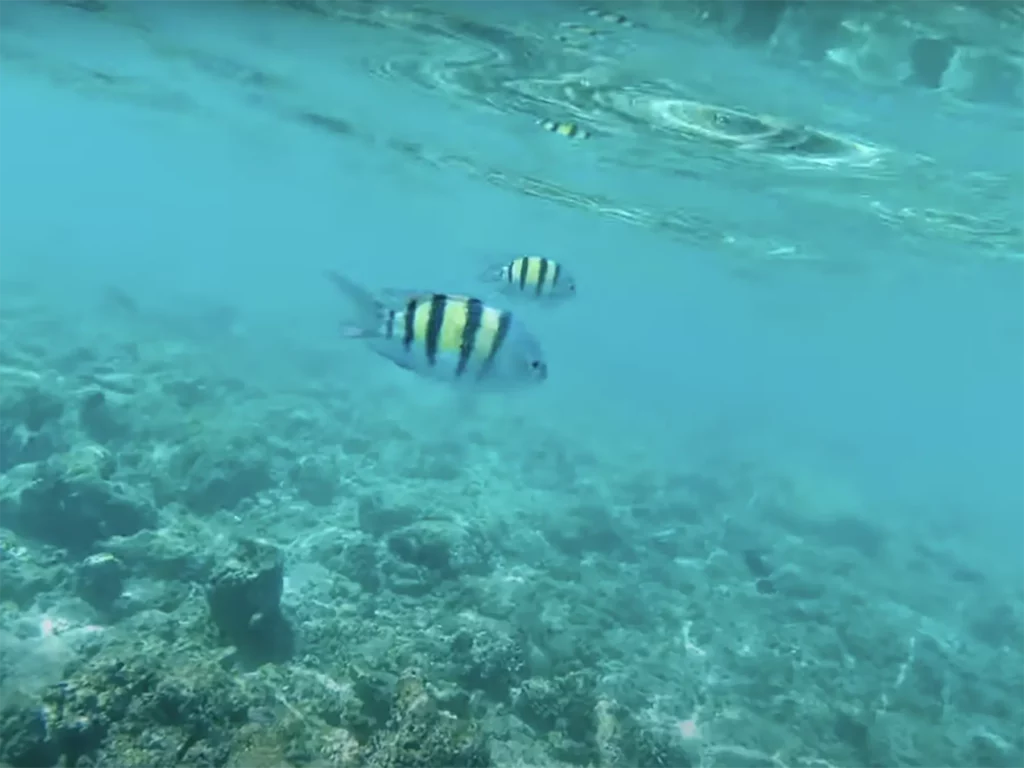
Misali Marine Park
The Misali Marine Park forms part of the Pemba Channel Conservation area and is located around the densely wooded Misali Island, which lies off the southwestern coast of Pemba Island.
Although the marine park covers an area of over 8 square miles (21 km²), most people choose to snorkel on the coral reefs surrounding Misali Island, as these are easily accessible from the shore.
The depth of the reefs varies from a few feet to sudden drop-offs. They host many fish species, including the rare and bizarre-shaped humphead wrasse, which may reach over 6 feet (2m) long!
You may come across groups of hammerhead sharks in the deeper reefs in the Pemba Channel, as they prefer the deeper open waters and seldom, if ever, venture close to Misali Island or the mainland of Pemba.
The long beach on the west side of Misali Island is a favourite turtle nesting site. Here, you can see these creatures munching on various corals or coming ashore to lay their eggs.
You can arrange boat excursions to Misali Marine Park from Wesha or most of the few hotels on Pemba Island. Unlike some of the other smaller islets of Zanzibar, lodging or camping is not allowed on Misali.
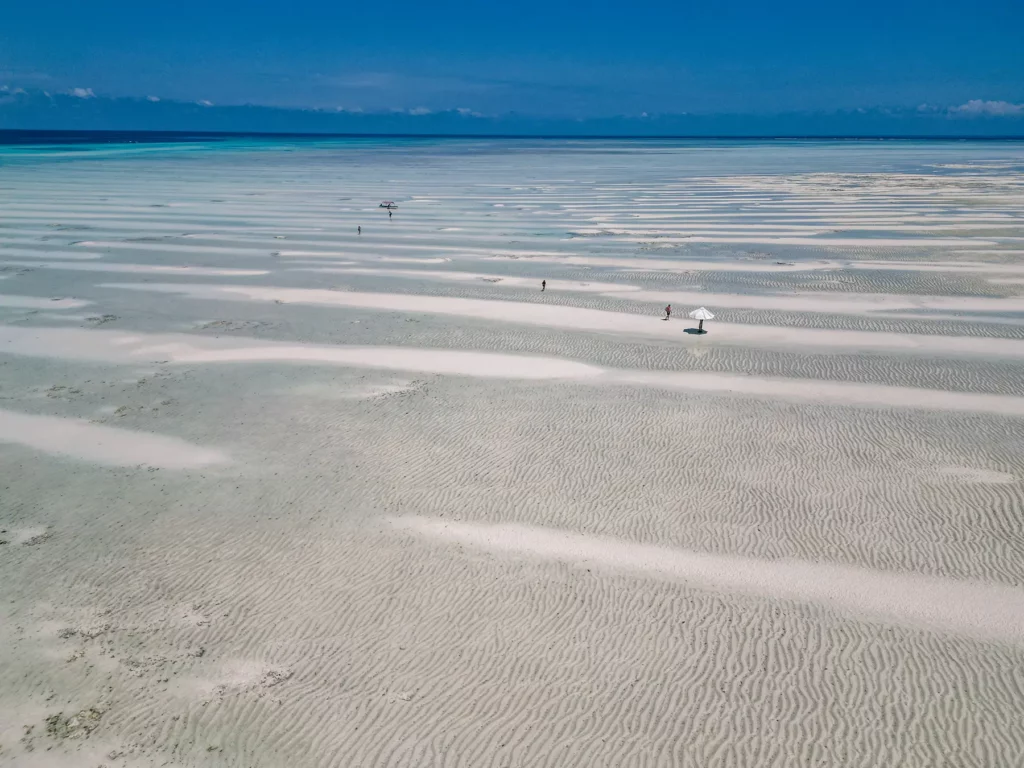
Pros of Misali Marine Park
- Over 350 fish species and 40 coral genera, making it one of East Africa’s most diverse reef systems.
- Supports nesting sites for green and hawksbill turtles
- Home to endemic species like the Pemba flying fox and coconut crab.
- Managed by the Misali Island Conservation Association (MICA), involving 36 Pemba villages in conservation efforts.
Cons of Misali Marine Park
- Illegal activities like dynamite fishing and use of fine-mesh nets persist, damaging coral reefs
- Rising sea temperatures and coral bleaching threaten the reef
- Over tourism at busy times of the year can negatively impact the ecosystem
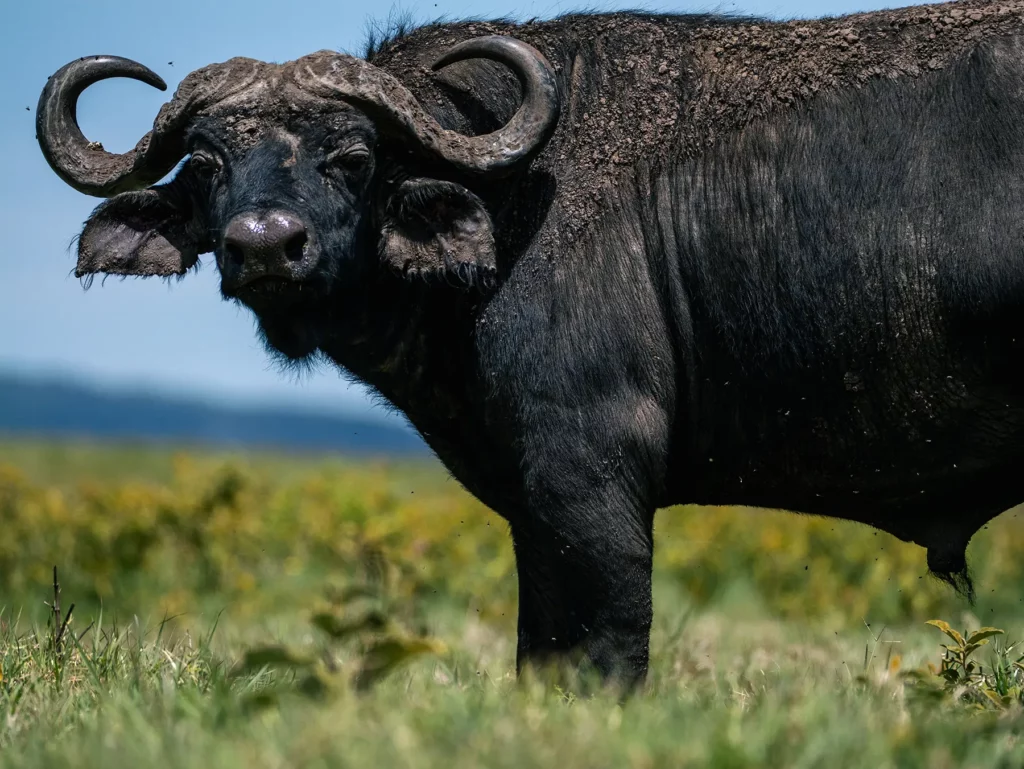
Safari Reserves on Tanzania’s Mainland
Alternatively, if you want to see large land-based wildlife, such as Africa’s Big Five (lion, leopard, elephant, buffalo, and rhino), or catch a glimpse of the famous Great Wildebeest Migration, you can do all this without leaving Tanzania.
You could be in Seronera, right in the heart of Tanzania’s Serengeti National Park, by taking a 2-3 hour direct flight from Zanzibar.
Or you could fly to Arusha in just 90 minutes, which would place you at the gateway to Tanzania’s prime game reserves, including the Serengeti, Tarangire, and Ngorongoro Crater.

If you’re feeling brave, you can also take one of the high-speed passenger ferries that take approximately 1 hour 45 minutes to 2 hours to Dar es Salaam, from which you can fly to virtually any safari park in Tanzania within an hour or two.
However, the ferries can be over crowded and don’t have the best safety record. Notably the 2011 sinking of MV Spice Islander I and the 2012 sinking of MV Skagit, both attributed to overloading and poor safety practices.
For this reason as well as convenience and speed I prefer to fly between Zanzibar and Tanzania.
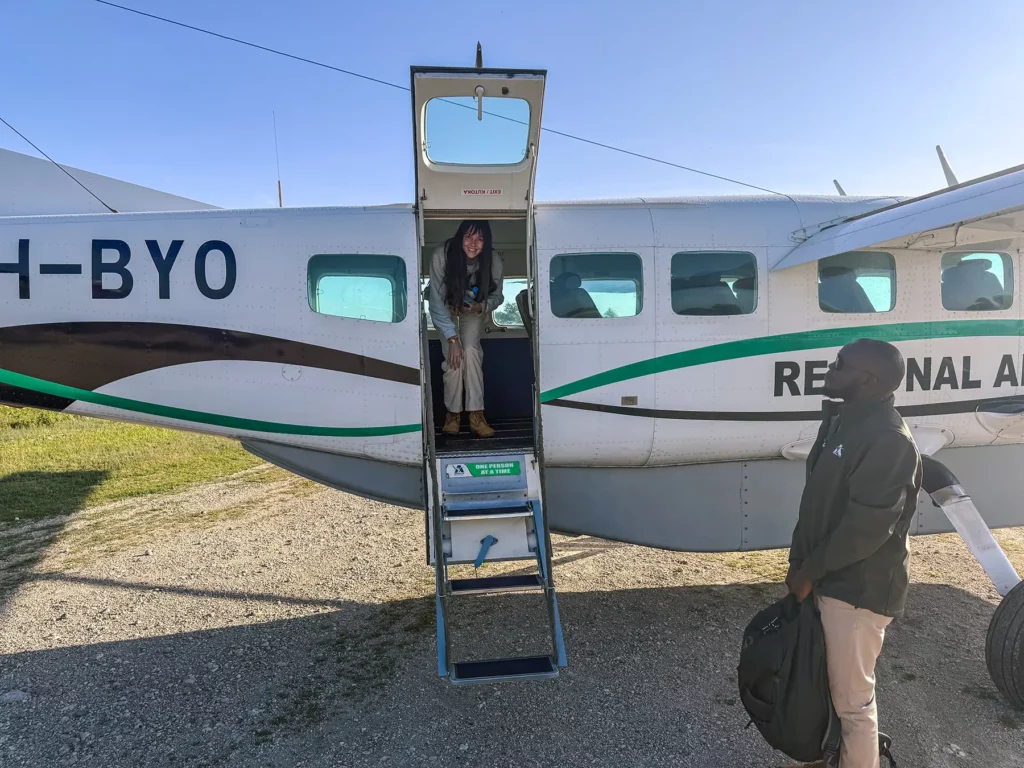
How to Book Your Zanzibar Safari and Beach Adventure
Without a doubt, the most popular and easiest way to book a safari and beach holiday is with a local tour operator. I booked my Tanzania safari and beach adventure through this method, and I was extremely happy.
If you’re only planning to go to Zanzibar during your trip, without adding a safari in Tanzania, then the DIY method could work for you too.
However, if you’re going to be in Zanzibar, it would be a shame not to include a safari. You’re so close to arguably the best national park in the world: Tanzania’s Serengeti National Park.
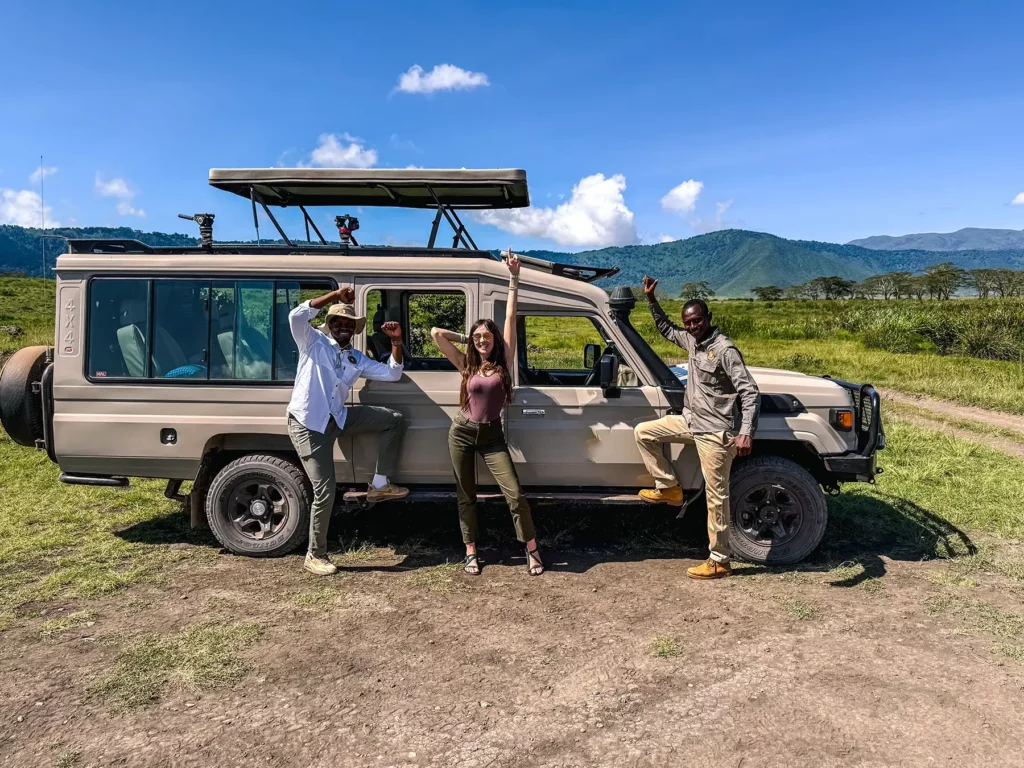
These types of trips are highly convenient, as your tour operator will take care of everything, from booking hotels and permits, to providing up-to-date recommendations on the best places to visit based on recent wildlife sightings.
You can get quotes from the same local tour companies I use to organise my own trips here: Safaris By Ella
Other types of safaris are available, including self-drive safaris and fly-in-to-hotel safaris, where you fly from lodge to lodge, and each lodge offers game drives. And of course, there are package holidays, where an international travel agent takes care of everything, including international flights.
The option you choose will significantly impact the price of your safari and beach holiday, as well as the experience itself. Below, I will discuss the pros and cons of each option.
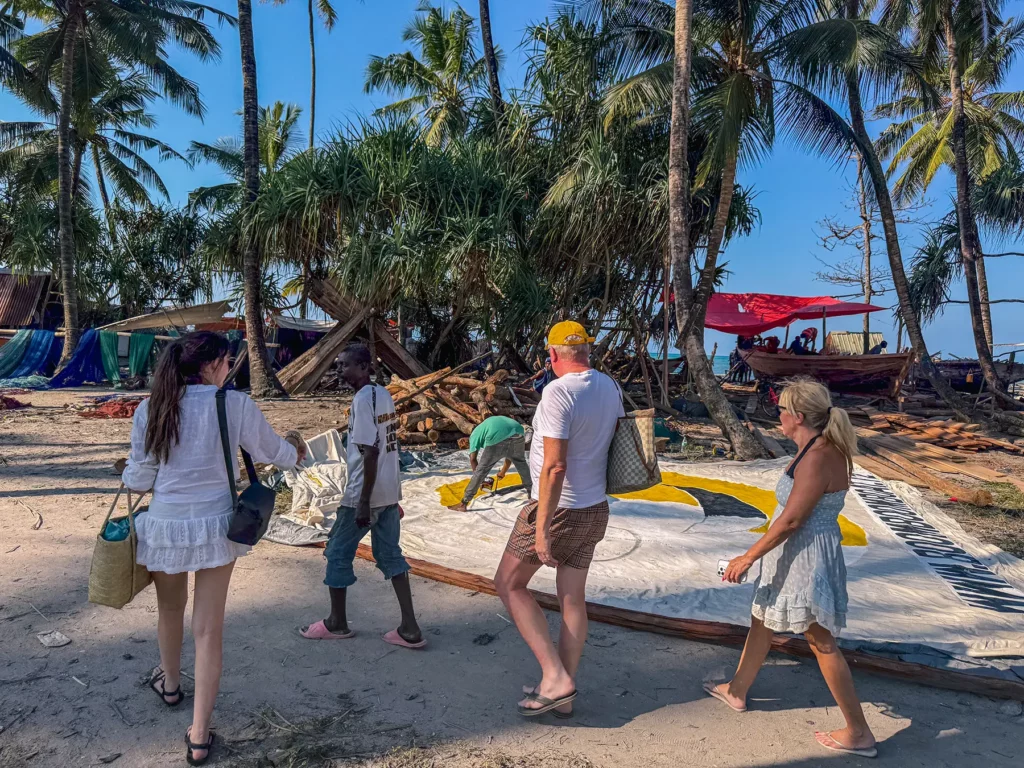
You can jump to more information on each of the booking options using the links below.
Option 1: DIY Safari & Beach with Self Drive
Option 3: Hotel-Provided Safaris
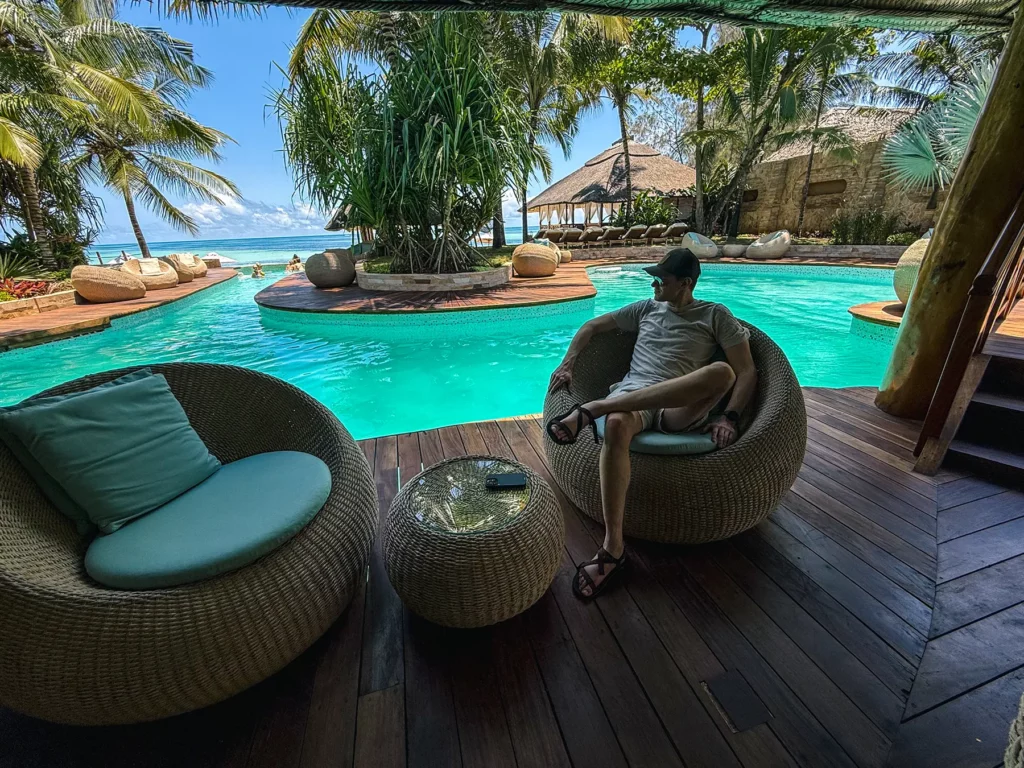
Option 1: DIY Safari & Beach with Self Drive
If you’re only going to Zanzibar, without the addition of a safari, then self-driving can work although it’s not for the faint hearted.
However, self-drive for the safari part may not be the best choice for most safari-goers. That said, those who are experienced with driving and maintaining off-road vehicles in a foreign country may feel confident with self-driving for the safari element.
- Most budget-friendly option, as you’re not paying for a driver guide
- Self-driving can potentially – but not always – be cheaper than booking through a local tour operator.
- Sense of freedom and adventure when travelling on your own terms.
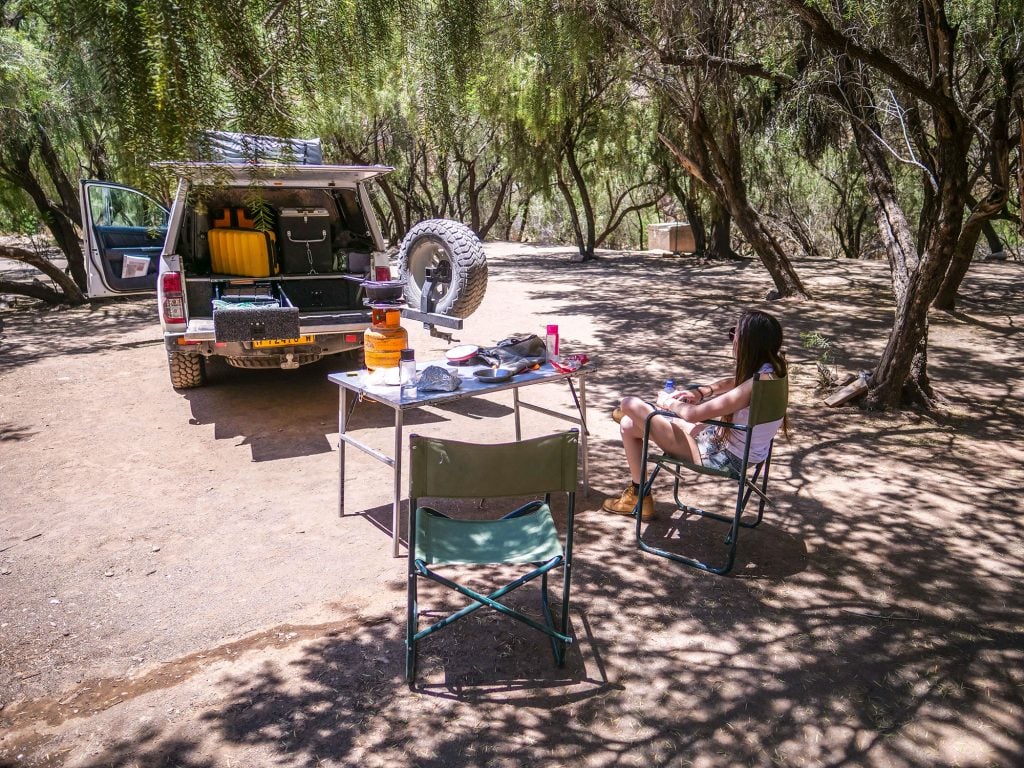
Pros of Self-Drive Safaris:
- Most budget-friendly option, as you’re not paying for a driver guide
- Self-driving can potentially – but not always – be cheaper than booking through a local tour operator.
- Sense of freedom and adventure when travelling on your own terms.
Cons of Self-Drive Safaris:
- You won’t save as much by self-driving as you expect; after paying for national park permits, hotels, food, car rental and fuel, the cost savings are minimal.
- You’ll miss important wildlife sightings, as you don’t have a guide who knows the best places to find animals or access to their radios for sightings. You can, of course, follow other vehicles (like I did on my self-drive safari in Etosha, Namibia), but this is a little bit of a gamble as the vehicle may be heading to lunch, the restroom, or even leaving the park.
- Getting lost becomes a risk, as you won’t be with a driver who knows the roads.
- Car breakdowns can be stressful and costly when travelling alone and you’ll waste game viewing time and park fees.
My Verdict on Self-Drive Safaris:
Personally, I don’t think a self-driving safari in Tanzania & Zanzibar is worth it. Although self-driving may make sense in countries that are easier to navigate, such as South Africa and Namibia, I think the negatives outweigh the minimal savings of not having a guide for the safari part of your trip in Tanzania.
Self-driving in Zanzibar could work for those who are very confident drivers and lack the budget for taxis. I’ve self driven quite a bit in Africa but in Zanzibar I used taxis for a more relaxing experience.
How to Book a DIY Self-Drive Tanzania Safari
- Option 1: Comparison sites which provide multiple quotes from verified suppliers such as Safaris By Ella. Make sure to write you want to self drive in the notes when requesting a quote. (This is a hybrid approach where you’ll drive yourself but they will arrange everything)
- Option 2: Research and book all elements of the trip yourself using Google and online travel agents.
Join the rapidly growing tribe of over 1,000 travellers who’ve booked their dream safari using my insider tips and recommendations. Get your free quotes and my top tips and recommendations now.
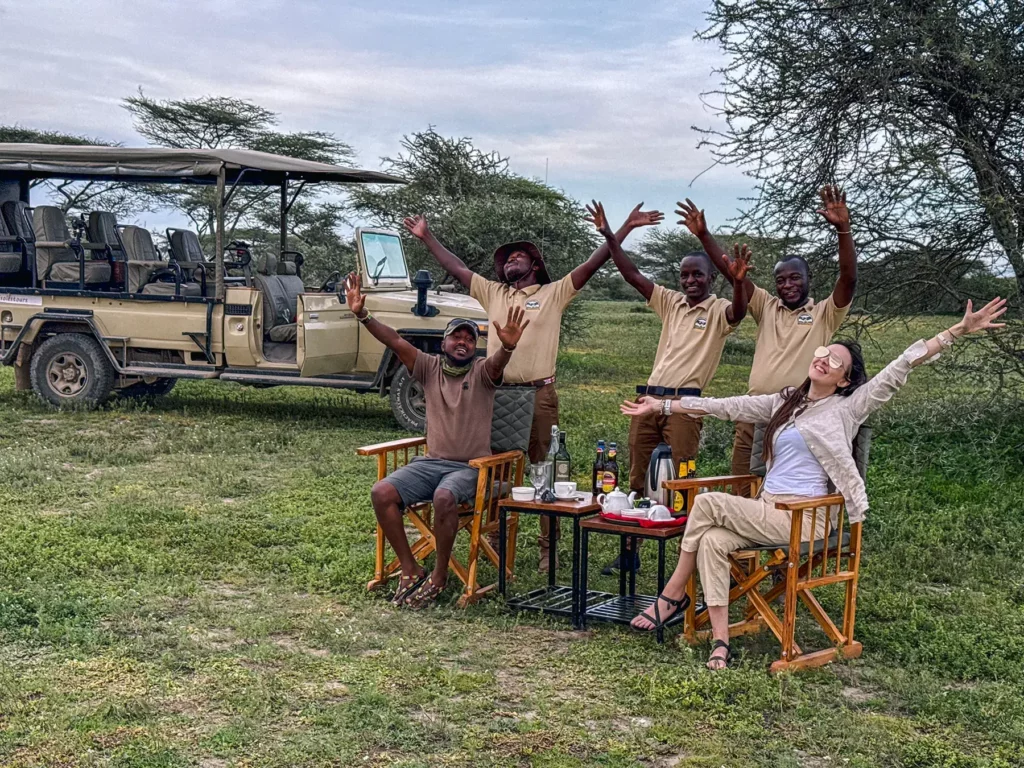
Option 2: Local Tour Operator
My preferred option is definitely to book with local safari tour operators, especially when including a safari on Tanzania’s mainland, and it is my go-to when planning a trip. This option is suited to the vast majority of safari-goers, as local operators offer a comprehensive and hassle-free safari experience that takes the stress out of planning.
Pros of Local Tour Operators:
- Local operators will typically take care of everything apart from your international flights, so you can sit back and relax during your trip. This includes handling hotel bookings, arranging meals, providing a driver, guide, and vehicle, and obtaining safari permits.
- Value for money – the costs aren’t much different than booking a safari yourself, but much cheaper than booking with international agents. For example, tour operators often receive special rates at hotels, so you pay the same amount for the hotel but with the hassle of booking taken care of.
- You have a knowledgeable guide who knows the roads and the wildlife and is a good tracker – they also have access to a radio to maximise sightings
- As local companies have on-the-ground knowledge, they are better at planning than international travel agents, as they have info on the latest sightings, which roads are best, etc.
- Additionally, hotels will keep rooms reserved for tour operator bookings, so even if a hotel is showing as fully booked online, the tour operators may still be able to get you a room there.
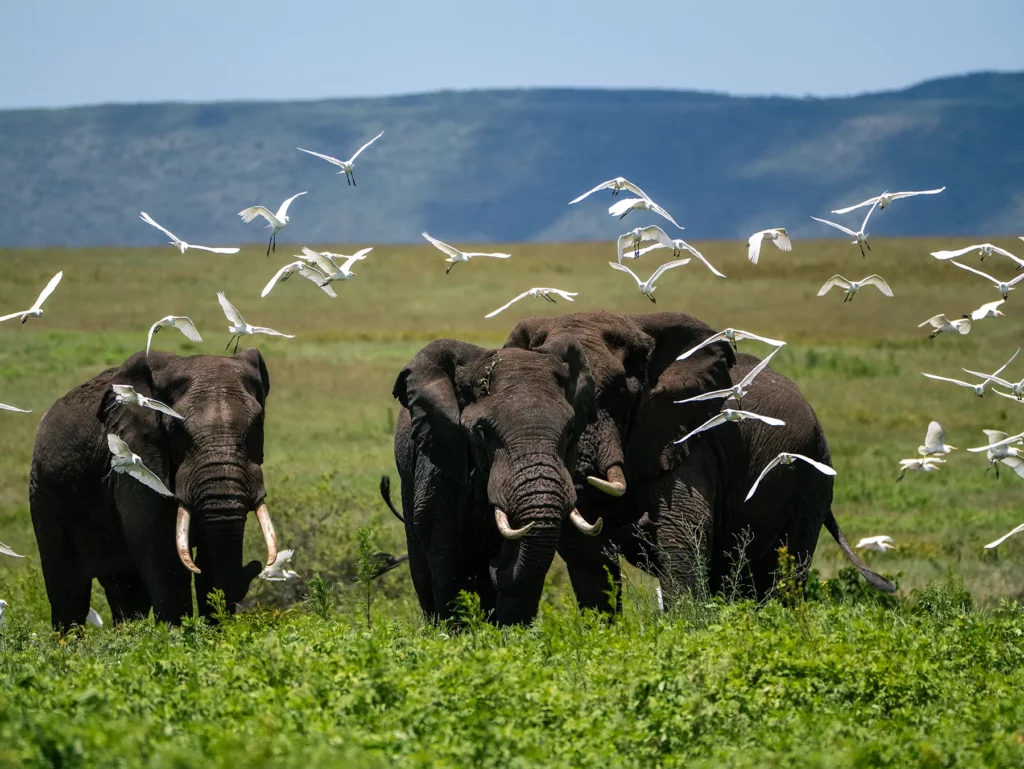
Cons of Local Tour Operators:
- In my experience, if a local operator seems unusually cheap, it’s likely because they’re offering cheaper accommodation or there will be hidden costs later. Also the quality of other vital things can slip too – for example, they may have less experienced guides, which can significantly impact the amount of wildlife you see on your safaris, or even incur unexpected add-on costs later. If the price seems too good to be true, it probably is.
- You’ll usually need to book international flights yourself
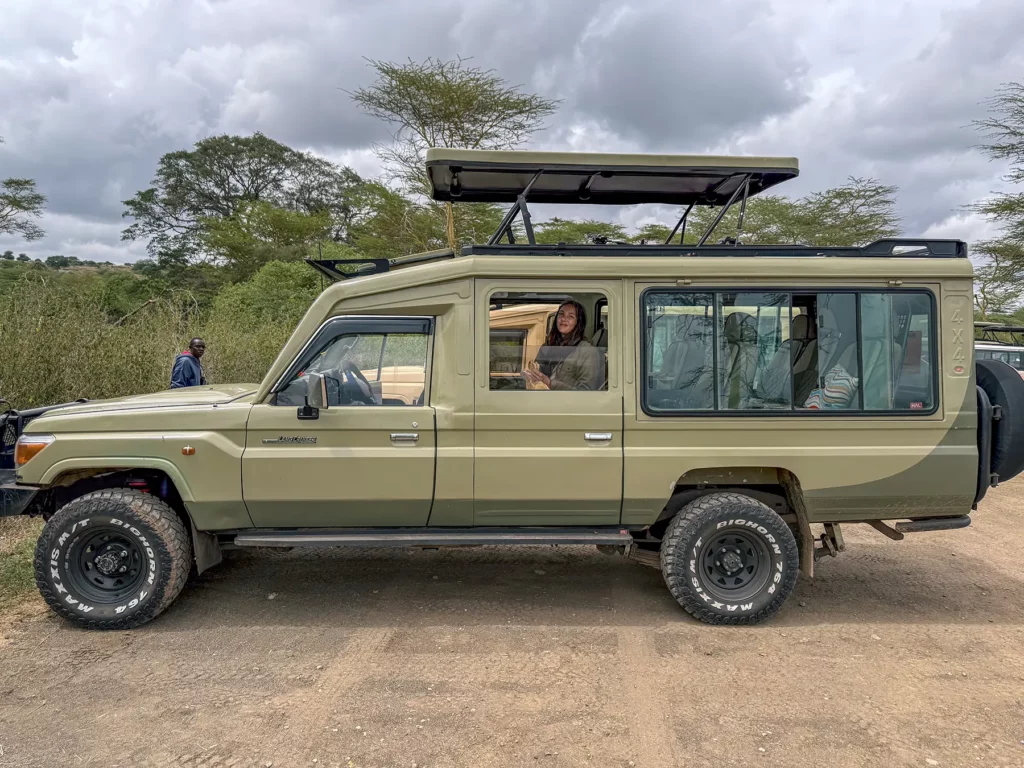
Top Tips
- Not all tour operators are equal, and be aware that the cheapest option isn’t always the best! It’s imperative to always check online reviews of a safari tour company and pay particular attention to any negative ones they have.
My Verdict on Local Tour Operators
Local operators usually provide the best value safaris, but make sure you don’t just go for the cheapest. Instead, opt for the best supplier with whom you feel a connection. When researching who to pick, always check online reviews and pay particular attention to negative feedback.
A good company will have consistent praise for guide knowledge, vehicle quality, and overall experience.
I’d love to help you choose the perfect local tour operator. You can receive safari quotations from my favourite local tour operators who I have personally been on safari with and had an excellent experience with here on Safaris By Ella.
Recommended Booking Options For Your Safari and Beach Itinerary
Safari with local tour operator
Most popular & best experience – typical prices for this itinerary start from $250 per person per day.
Visit safarisbyella.com for free quotes from trustworthy local tour companies I use to book my own trips.
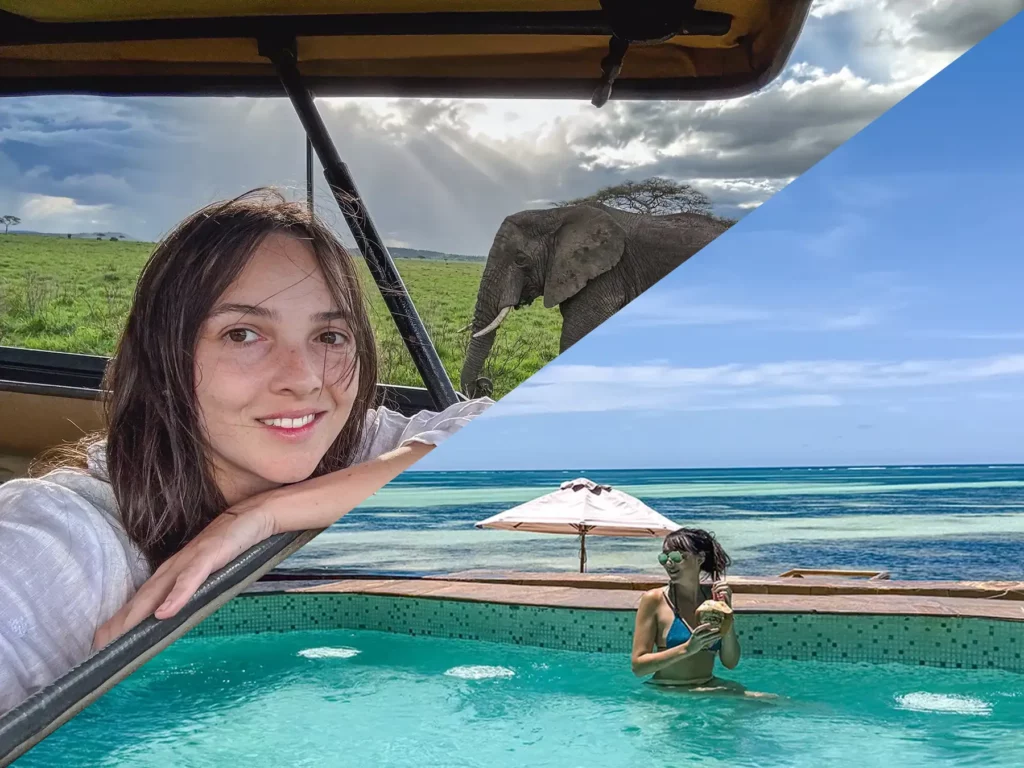
How to Book with the Best Local Safari Companies
- Comparison sites which provide multiple quotes from verified suppliers such as Safaris By Ella
Join the rapidly growing tribe of over 1,000 travellers who’ve booked their dream safari using my insider tips and recommendations.

Option 3: Hotel-Provided Safaris
Many high-end safari lodges offer their own safaris which basically involves them using their own vehicles to provide the safari which is usually a group safari.
This option is only suitable for those with a large budget and who don’t mind sharing the vehicle. If that’s you, this is an option to consider if you want to be based in the same place for an extended period or if you want to fly from lodge to lodge.

Pros of Hotel-Provided Safaris:
- Perfect for you if you want time for relaxing in between safaris, as hotel safaris minimise moving around
- Accommodation is typically of a high standard
- Flying in saves driving time
Cons of Hotel-Provided Safaris:
- Hotel safaris are more expensive than booking with local tour operators.
- Some airstrips require private chartered flights which can be $1,500 – $3,000 each way, shared between your party.
- Hotel safaris are not typically private, so you will have to share the safari vehicle with other guests from the hotel. This gives you less flexibility in terms of which sightings you go to, how long you will spend at each sighting, and how long you will spend on safari as a whole. However, you could choose a different safari company for private game drives instead. They will also book the lodge as part of the safari package, usually at preferential rates.
- Not suitable if you want to visit multiple safari parks, as you won’t have transport or a driver.
Top Tip:
Consider combining lodge stays with a private local safari company for game drives. This approach offers both luxury accommodations and personalised wildlife viewing.
Conclusion: While hotel-provided safaris aren’t suitable for everyone, they can be convenient for safari-goers with large budgets who don’t plan to move around much.

How to Book a Hotel-Provided Safari
- Option 1: My recommended tour operators on Safaris By Ella can arrange hotels and air or road transport to and from the hotels. If you opt for the more cost-effective road transport, since they have driven you to the hotel, you might find it cheaper to use the safari company for safaris rather than using the hotel-provided safaris.
- Option 2: Check with your chosen accommodation whether they provide this service and the booking requirements.
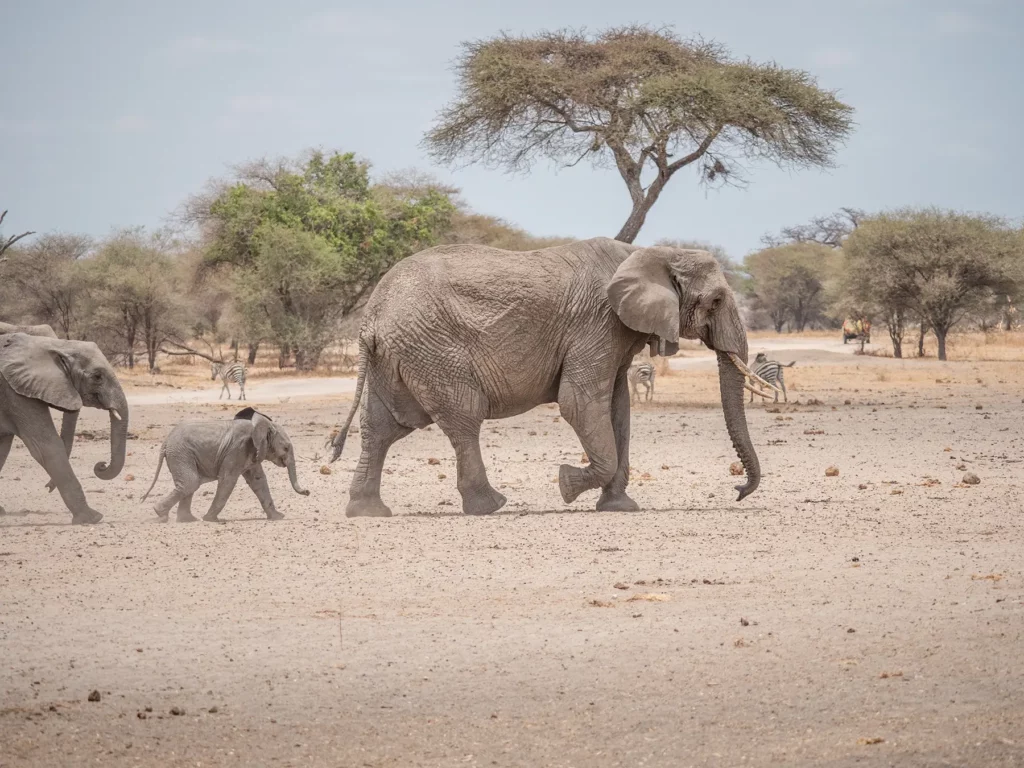
Option 4: International Travel Agents
If budget isn’t a concern for you and you want your entire trip taken care of, including international flights, booking with an international travel agent may be an option to consider.
However, I personally don’t book my safari trips this way anymore, as agents hike up the costs: you’ll typically pay 25% – 40% more than booking through a local tour operator.
This is because they normally outsource the safari to a local tour operator and add their overheads and profits on top of the price.
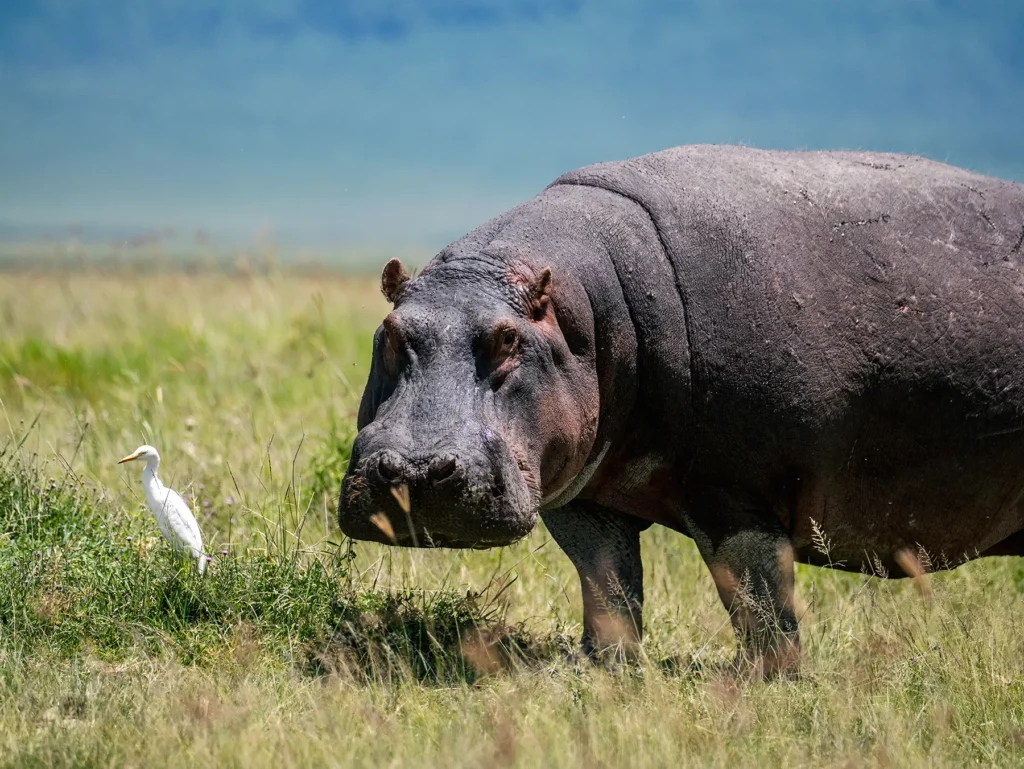
Pros of International Travel Agents:
- International travel agents take care of everything, including your international flights.
- In the UK, you will be covered by Package Travel Regulations, which can provide some assistance if they go bust before your trip. If they book international flights as part of your package, you will be covered by the ATOL scheme. In the US, schemes such as the Airline Passenger Protection Act and the Federal Aviation Administration’s consumer protection rules apply when booking through a local travel agent.
Top Tip:
High levels of protection are also available when booking directly with local tour operators but without the high costs of International travel agents.
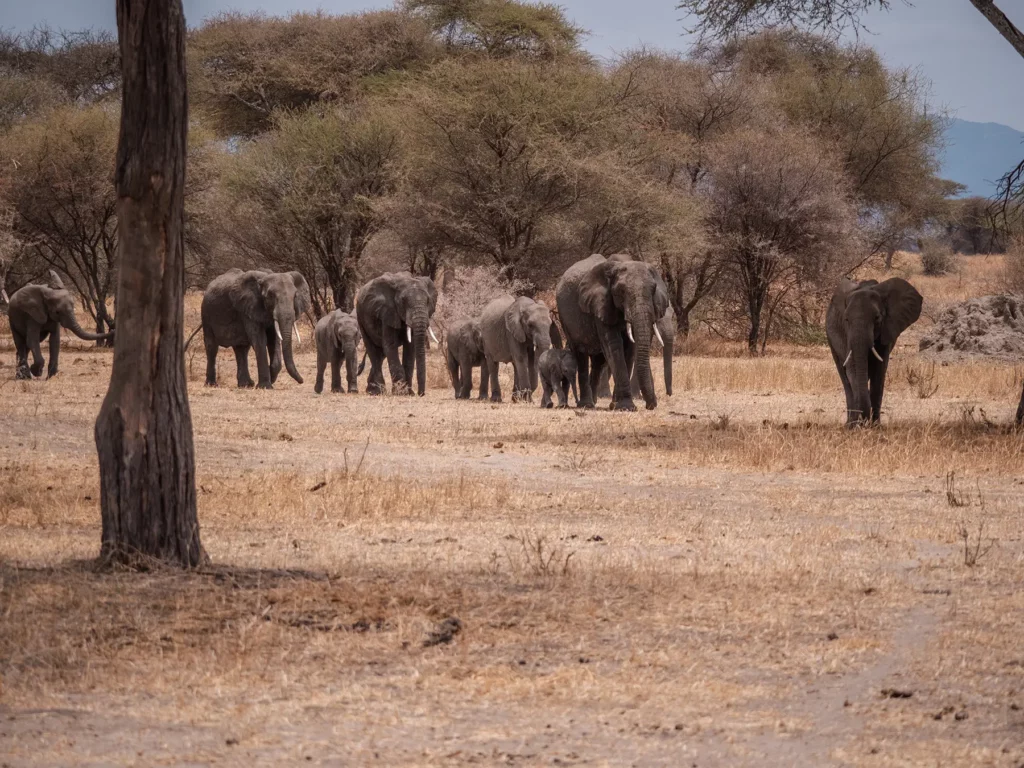
Cons of International Travel Agents:
- By far the most expensive way to book your safari is through an overseas tour operator. Overseas tour operators will typically subcontract the actual safari to a local tour operator, but they pay a lot more for the safari, as you also have to cover the travel agent’s fees.
- Lack of on-the-ground knowledge compared to booking with a local company
- 30 – 50% more expensive than a local tour operator for the same experience
- You won’t have as much control over which local tour operator the agent ultimately outsources the tour to, and the local tour operators are who will ultimately have the biggest impact on the quality of your safari.
Besides a potentially easier international flight booking, there is not much advantage to booking your safari with an international travel agent. At best, your safari experience will be similar to what it would be if you were booking with a local operator, just at a much higher price.
Ultimately, I always recommend booking directly with a local tour operator. In my experience, this approach offers the best balance between a rewarding safari experience and good value for your money.
How to Book Your Safari with an International Travel Agent / Safari Company
- Comparison sites which provide multiple quotes from verified suppliers such as Safaris By Ella. When you select a luxury budget on the quote request, you will receive a quote from my recommended International safari company as well as my recommended local companies for comparison.
Join the rapidly growing tribe of over 1,000 travellers who’ve booked their dream safari using my insider tips and recommendations.
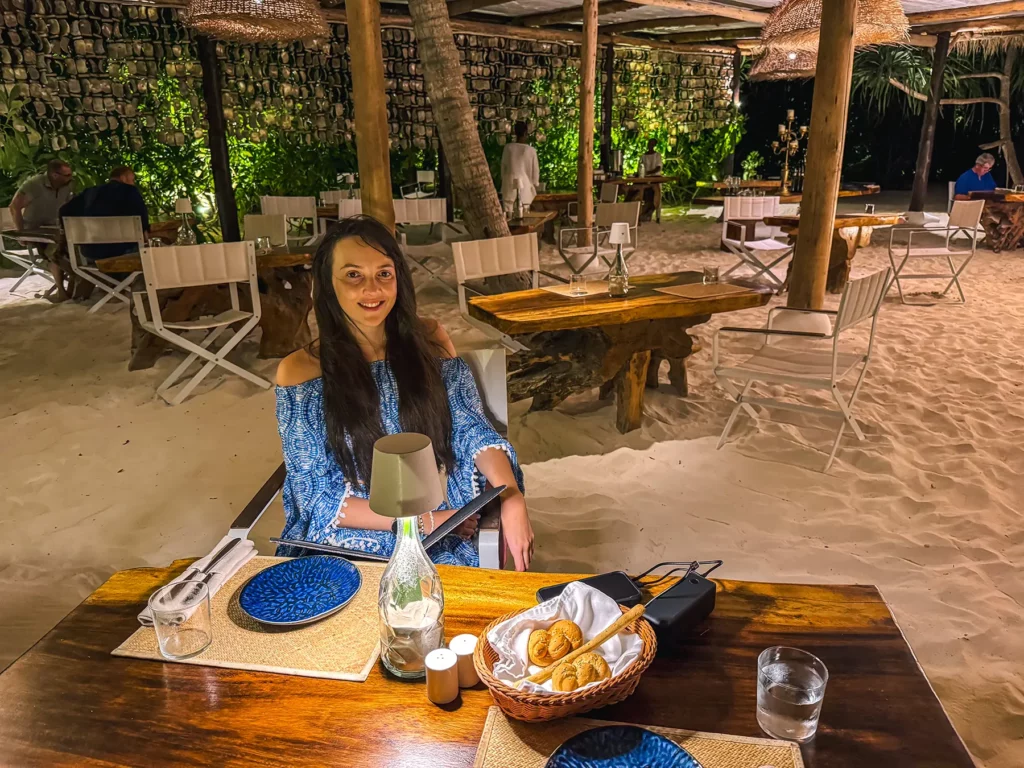
How Much Does a Zanzibar Holiday Cost?
For a Zanzibar Holiday, prices per person per day start at around $220, assuming daily activities, comfortable accommodations, and two people sharing.
Mid-range prices start at $350 and luxury prices start at $600 with luxury plus sitting at $3,000 per person pay day for private island accommodation in peak periods.
Chart showing costs per person per day based on luxury level.
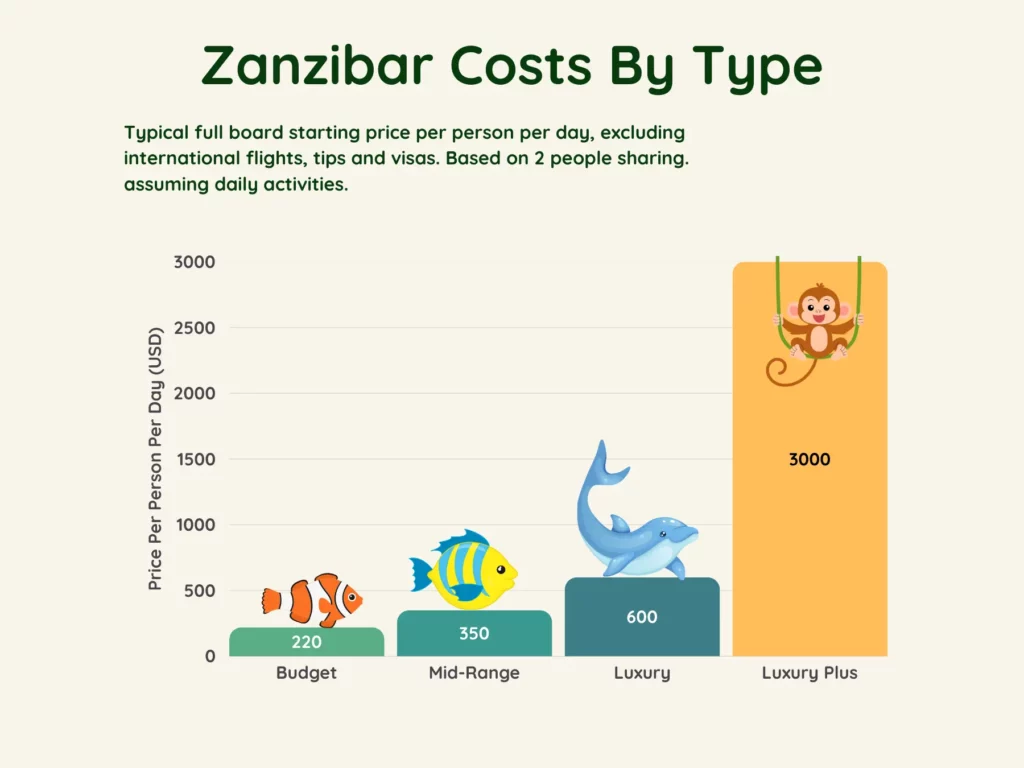
How do Zanzibar Costs Compare with other Beach Destinations?
To put Zanzibar’s cost into perspective, the average price for luxury 5-star hotels is slightly better than that of similar premium beach destinations such as the Seychelles, Mauritius, and Maldives, as the table below shows.
However, Zanzibar is very much an up-and-coming destination, so prices rise as demand grows. I’m already seeing prices go up at my favourite hotels.
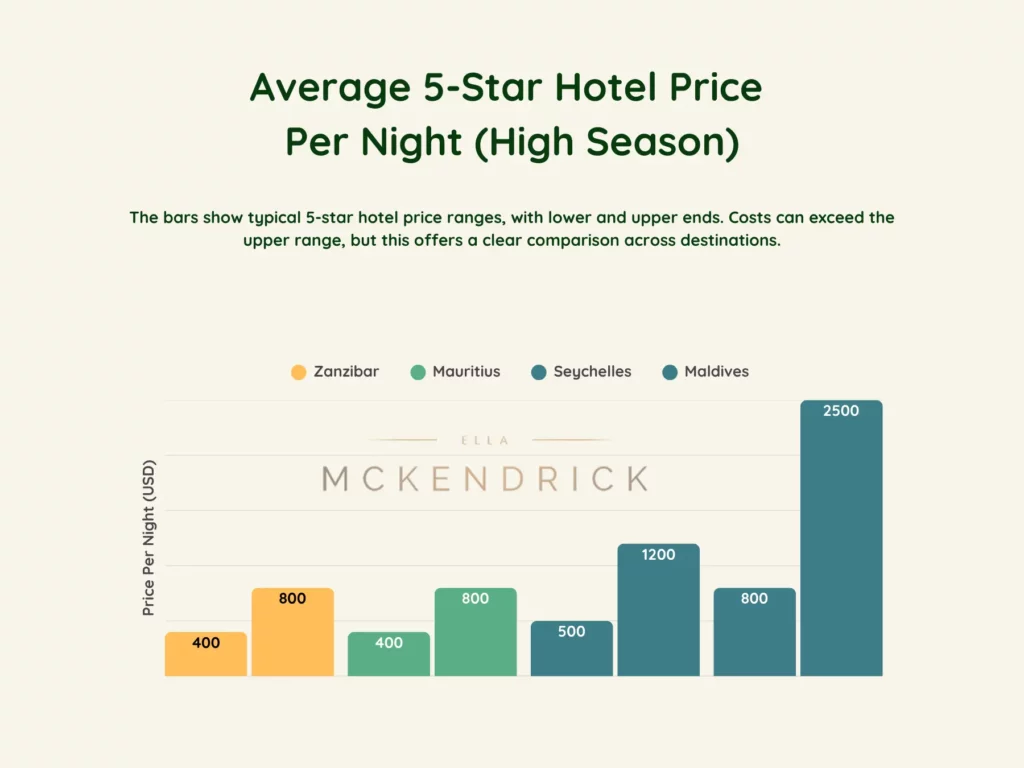
If you want to know about the costs for the safari side of things, you can read my guide to Tanzania safari costs. However, in a nutshell, you can budget from $350 per person per day for a private safari in Tanzania. Group safaris are slightly cheaper, while luxury safaris can cost $600 or more per person per day.
Chat showing costs per person per day for the days on safari.
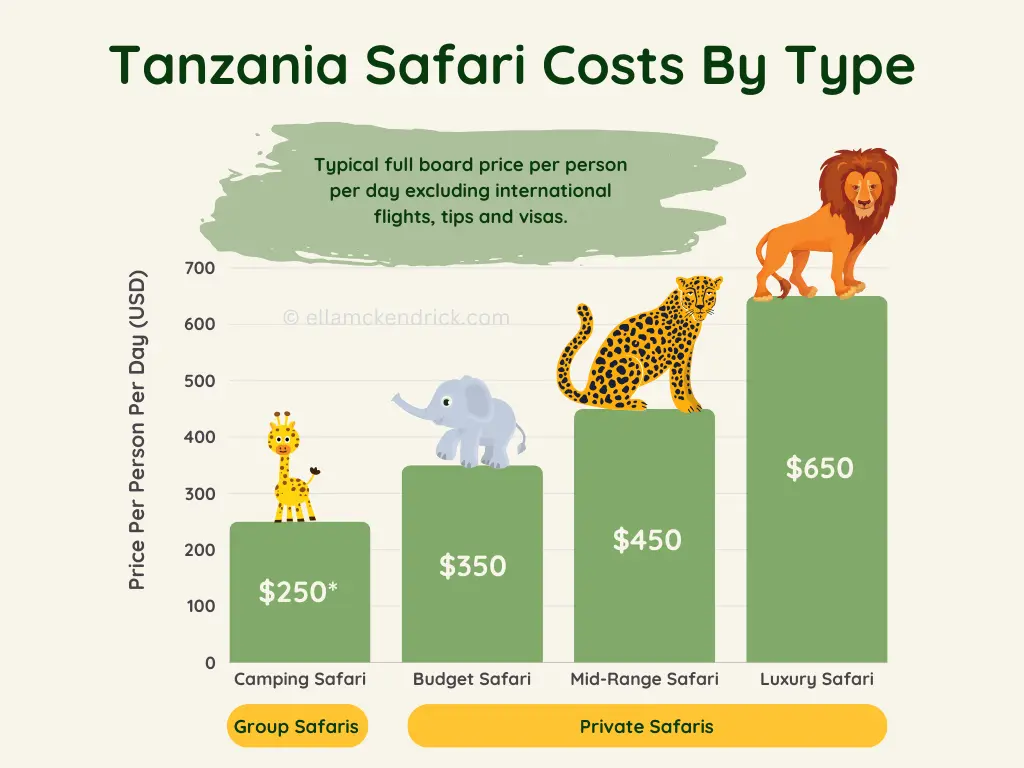
Let’s dig into the various cost aspects of a typical trip to Zanzibar.
Zanzibar Costs Breakdown
As we can see in the chart below, around 55% of the cost of a budget Zanzibar holiday is accommodation costs. Meals, excursion costs, and transfers make up the rest.
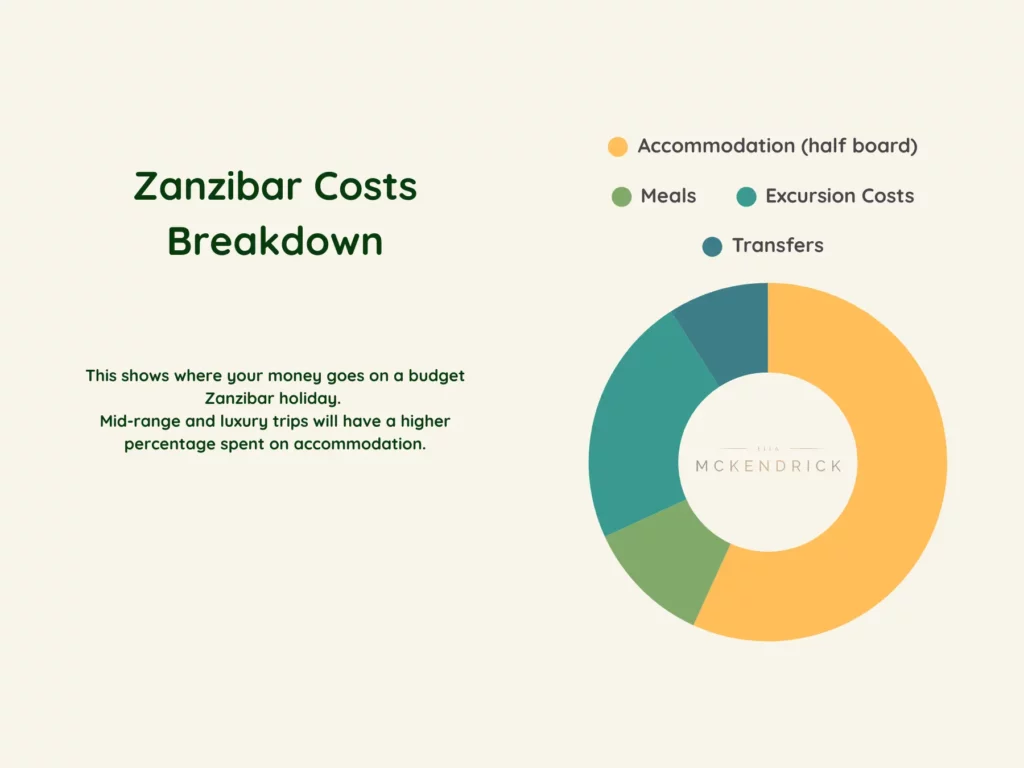
Factors Affecting Zanzibar Costs
Let’s take a closer look at these categories of costs.
Accommodation Costs
For those on a strict budget, basic guesthouses or inland lodges with limited facilities are available. In contrast, those travelling with a mid-range budget can stay in comfortable bungalows with pools, breakfast, and good beach access.
Zanzibar has a lot to offer luxury travellers, from high-end resorts to private islands, with all-inclusive packages or boutique experiences and private pools.
Budget accommodations start from $35 per night, though these are often away from the beach. And let’s be honest you’re probably going to Zanzibar for luxury, relaxation and beach time.
Mid-range bungalows offer modern amenities and full board for $150per night for a twin room.
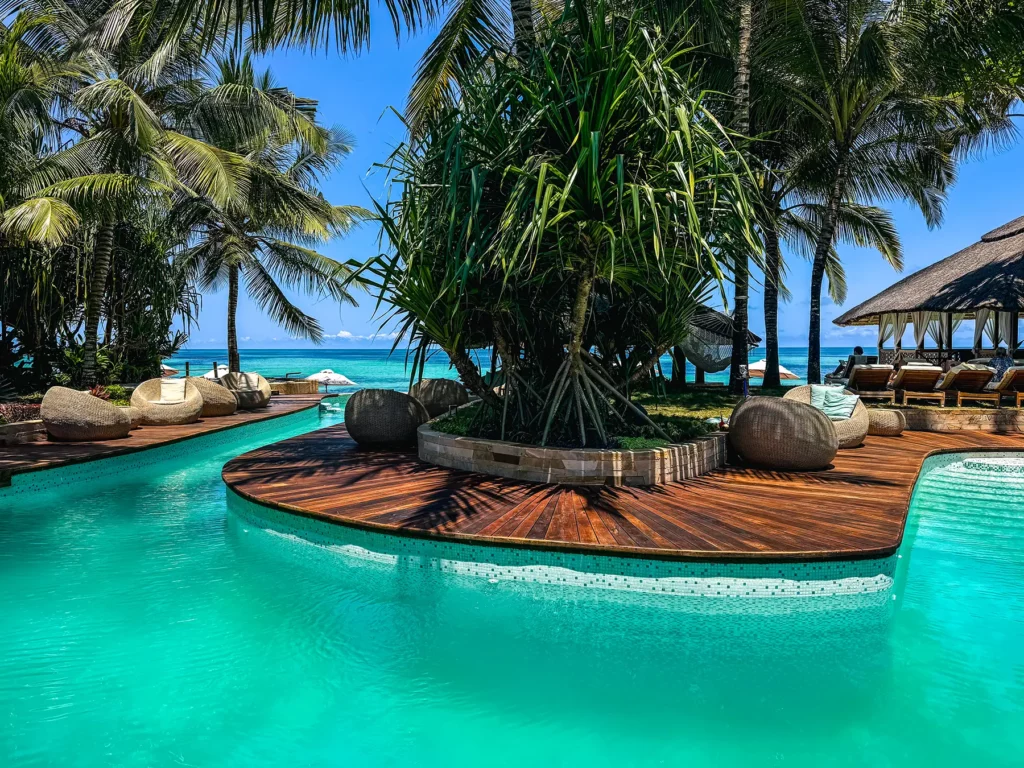
Five-star luxury resorts start at $250 a night for a room for two people and you can easily spend $800 per night full board for a really nice luxury boutique hotel on the beach.
At the high end, super luxury villas on private islands such as Mnemba Island charge $3,000 per person per night on a full board basis so that’s $6,000 a night for a couple.
My preference: I normally opt for a luxury boutique hotel on the beach as I want to really wind down and relax in Zanzibar so I’m OK spending around $1,000 per night, full board. You can however, get some good deals on 5-star luxury hotels such as LUX* Marijani Zanzibar for about £200 per night.
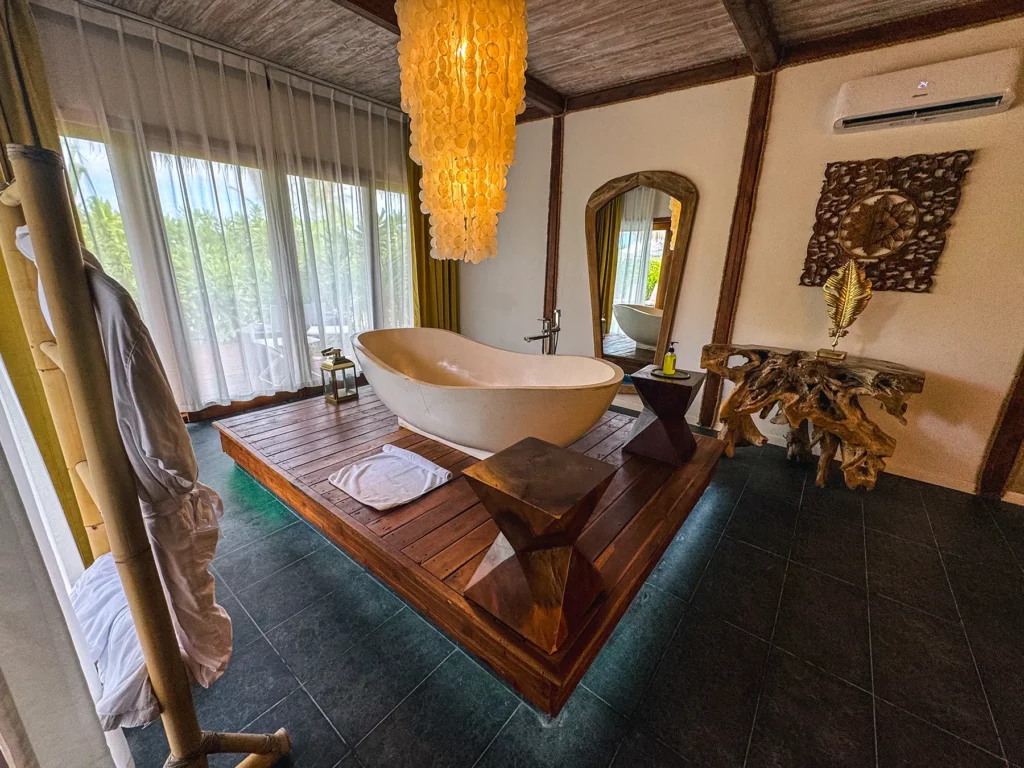
Food Costs
Plenty of food options are available for most budgets, starting with meals at tourist restaurants, which are among the most popular and cost around $15–$20 per dish. For a cheaper alternative, you can eat at local restaurants outside of the touristy areas, budgeting around $30 per day.
At high-end restaurants, such as The Rock, expect to spend around $25–$35 per meal, though lobster and other seafood dishes can cost $45 or more.
On the whole, Western and beachfront restaurants are generally more expensive.
My preference: My favourite restaurants are the Sharazad, The Door Restaurant & Cafe in Stone Town, Zanzibar Queen on Matemwe Beach and The Rock Restaurant. At Nungwi and Kendwa, the beachfront restaurants are great if you choose one with good reviews.
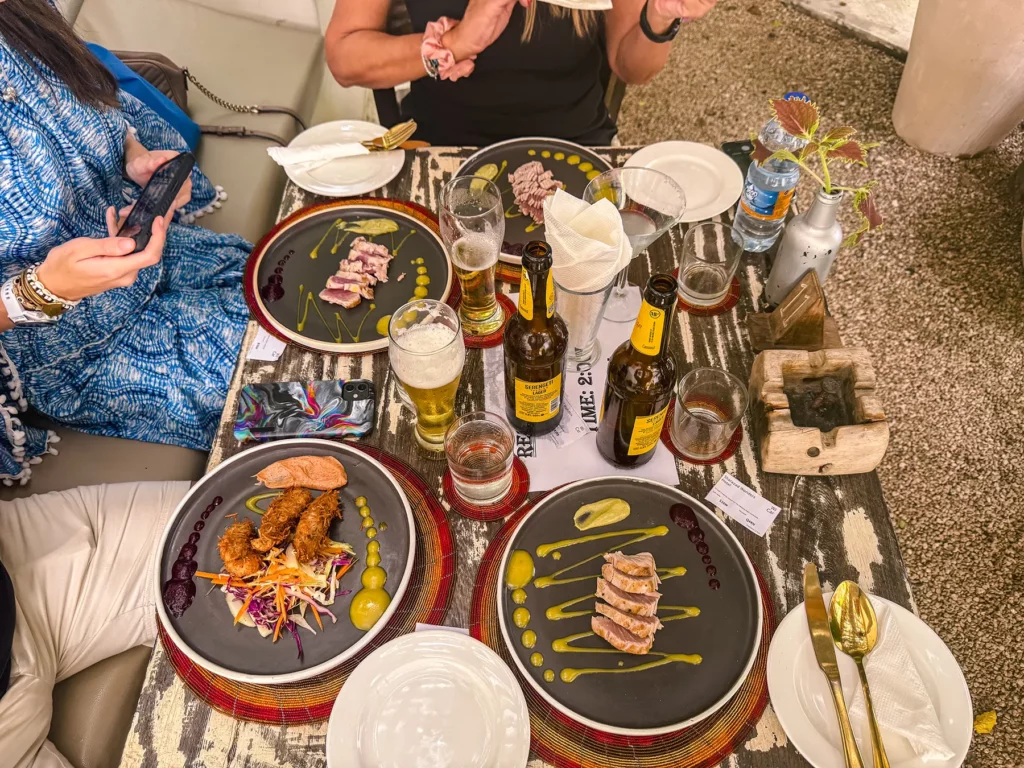
Excursion & Transfer Costs
Return taxis can cost around $50 for destinations an hour away and they typically wait and then drive you back.
Typical excursion costs are below
(Per Person, Based on 2 People, excluding transfer costs)
- Jozani Forest Tour: ~$40
- Prison Island Trip: ~$55 (I got this for $30 but might be more expensive when it’s busier)
- Mnemba Island Snorkeling: ~$70
- Spice Tour: ~$30
- Stone Town Tour: ~$35
Consider what activities you want to do before your trip, such as snorkelling and island tours, as more excursions will quickly increase costs. If you’re on a budget, group and shared tours are cheaper than private excursions.
Also, factor in the distance of your transfers, as travelling distances (for example, from the airport to a hotel in Nungwi) will raise costs. On that note, be aware that there are no ride-sharing apps on Zanzibar; you’ll have to rely on private taxis or arrange transport in advance.
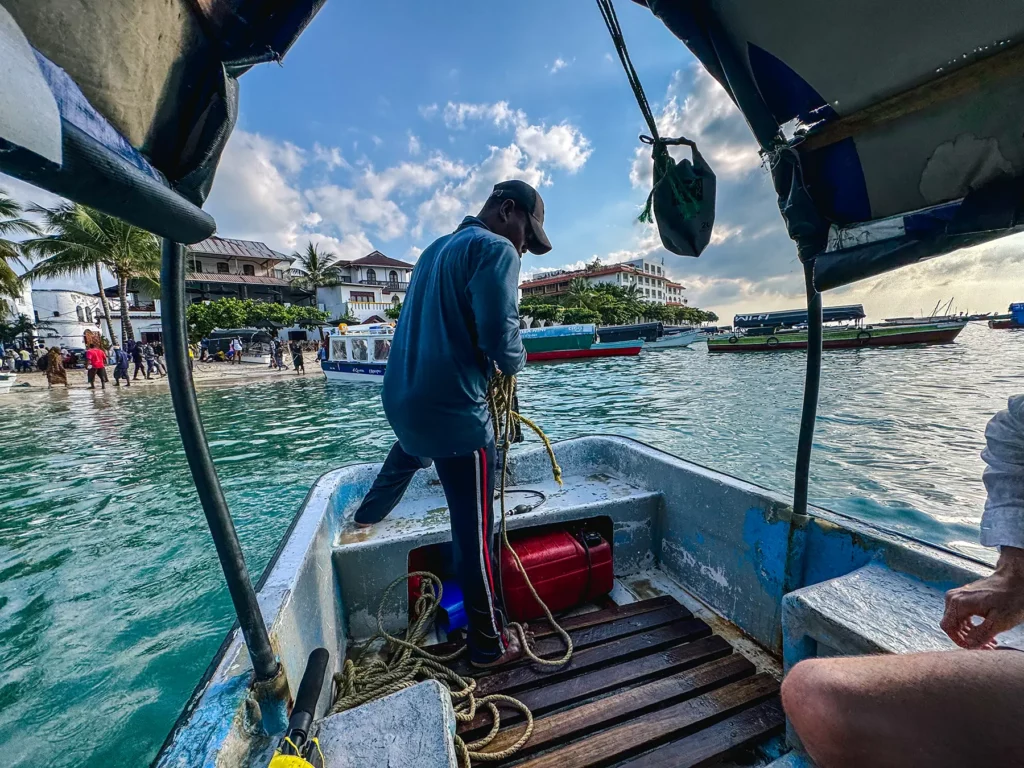
Transport Costs
A private airport transfer to Nungwi or Kendwa (approximately 63 km) will cost around $40-$50. Private transfers can be costly, especially over long distances, but they are often necessary to get to your accommodation or the location of your excursions.
There is no Uber in Zanzibar, but you can book taxis in advance or through local tour operators.
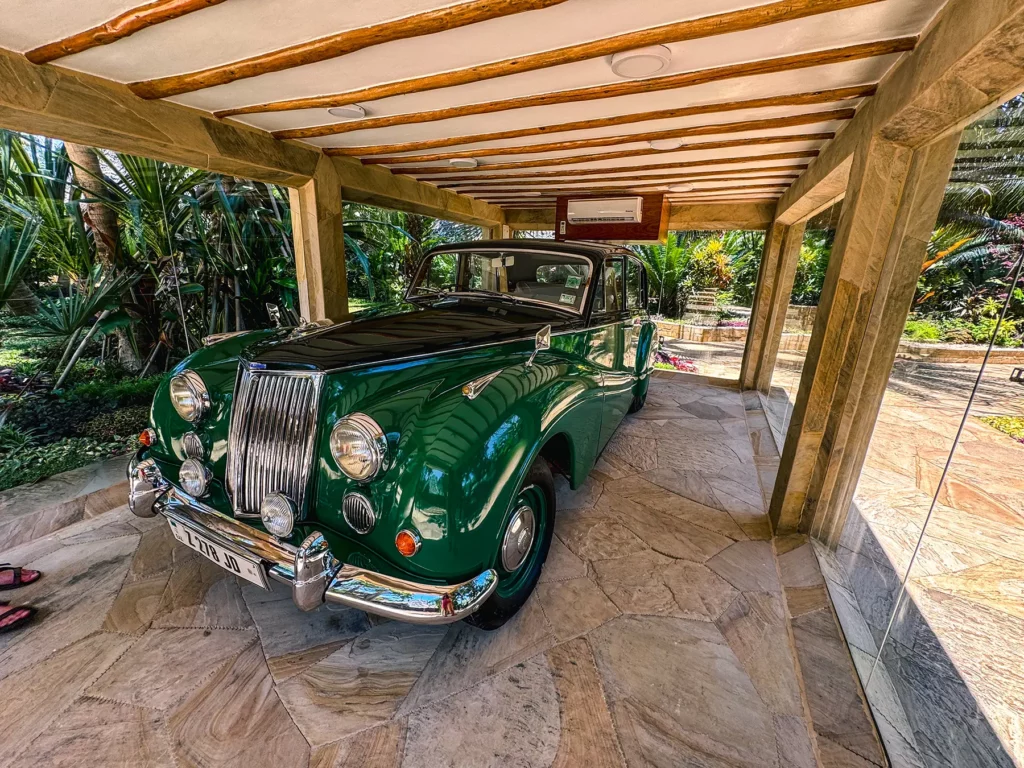
Zanzibar Honeymoon
You’ll be hard-pressed to find a more romantic honeymoon destination in Africa than Zanzibar.
With stunning beaches, turquoise waters, and rich cultural charm, it has everything you could wish for on a once-in-a-lifetime getaway and an essential addition to a Tanzania honeymoon itinerary.
The best-rated luxury resorts and boutique hotels, many of which are located on the northeast coast, can provide a great honeymoon experience.
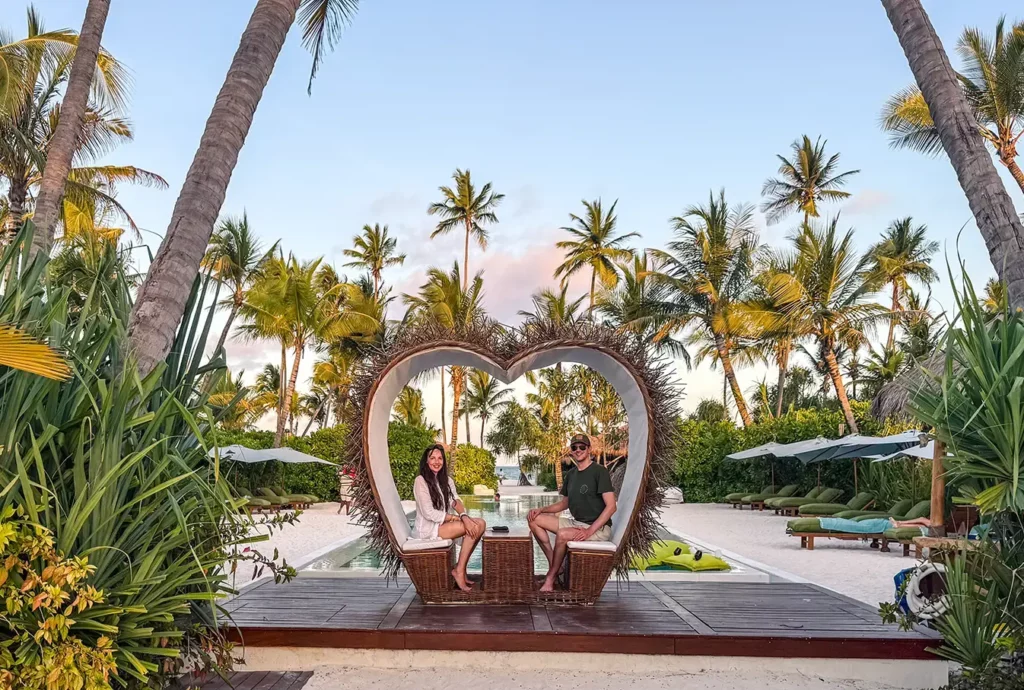
Honeymoon features include rose petal baths, floating breakfasts, couples massages, spa treatments, private dinners on the beach, day tours to uninhabited islands, and whatever else they can think up to make your honeymoon unforgettable.
Many newlyweds combine a trip to Zanzibar with a world-class safari in reserves such as the Serengeti National Park on Tanzania’s mainland. You can view my ultimate Tanzania honeymoon itinerary.
Let’s take a quick look at the pros and cons of Zanzibar as a honeymoon destination.
Pros of Zanzibar for a Honeymoon
- Romantic scenery with white-sand beaches, turquoise waters, and stunning sunsets
- Lots of romantic activities such as sunset cruises, spa treatments, private beach dinners, and island tours.
- Great snorkelling and other watersports to enjoy with your loved one
- Cultural charm with options to explore Stone Town, spice farms, and local markets for a unique experience.
- Easily combined with the world-class safari reserves in Tanzania mainland for a safari and beach honeymoon
- The weather is fantastic most of the time, apart from the rainy season (March-May)
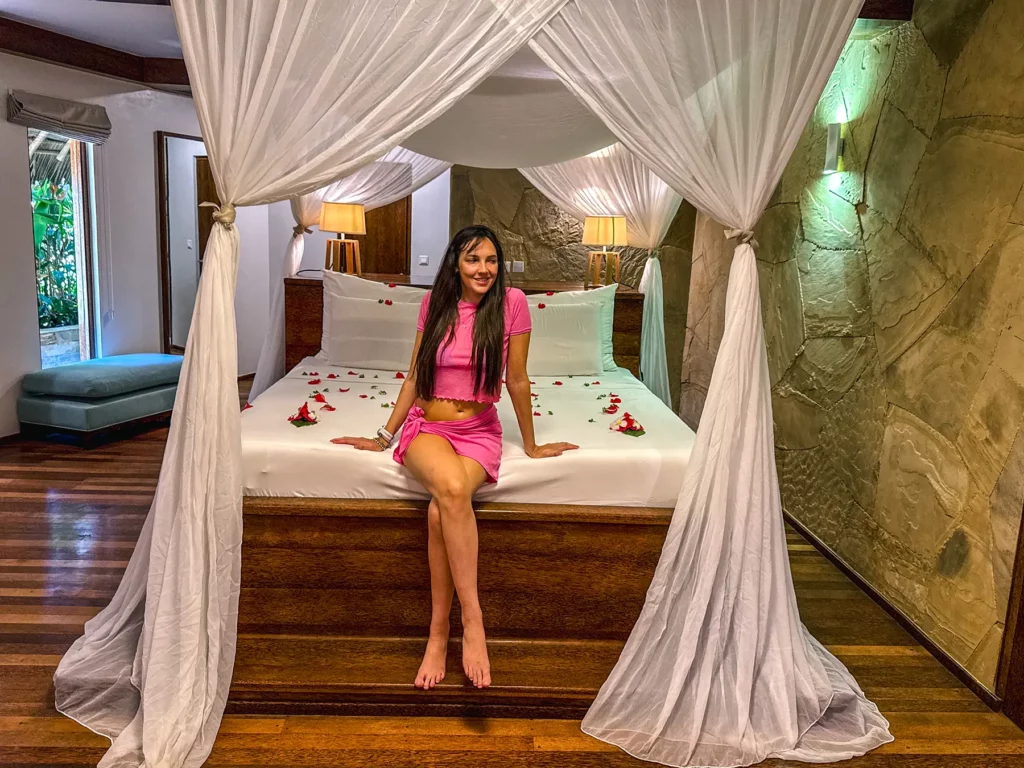
Cons of Zanzibar for a Honeymoon
- Accommodation is more expensive than Asia, but then again, so are most of the popular honeymoon destinations and Zanzibar is better value compared to the Maldives.
- Malaria area, so requires precautions such as anti-malaria medication and bug spray.
- Not ideal for couples seeking a party or clubbing scene
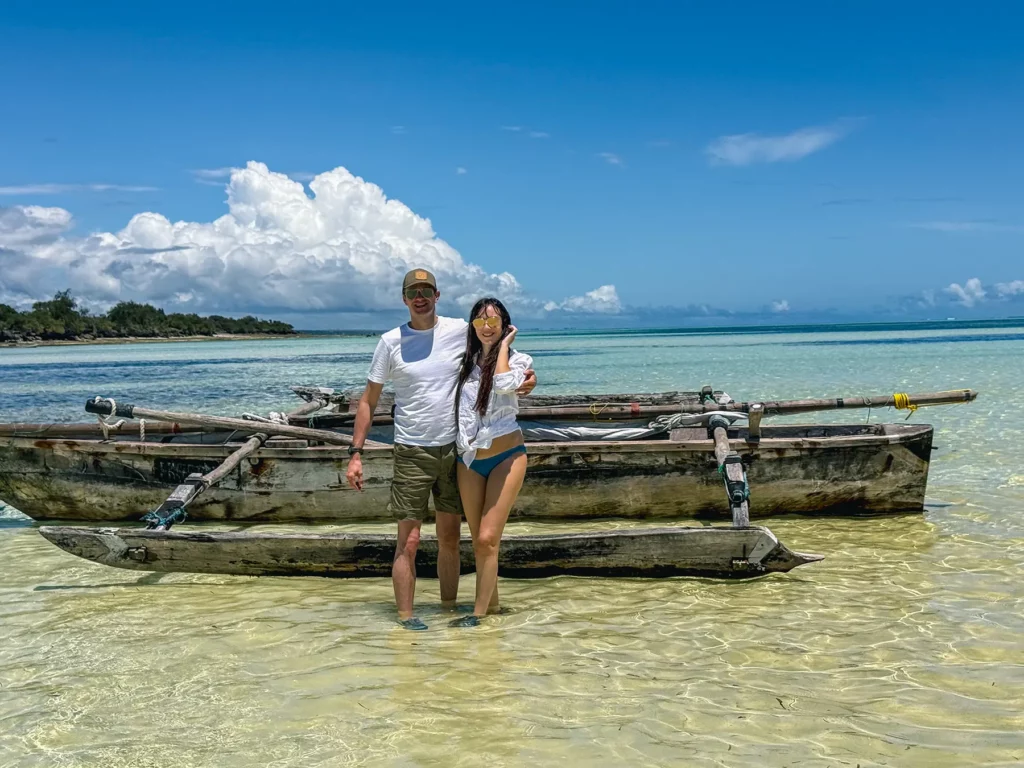
Where are the Best Beaches in Zanzibar?
Most of Zanzibar’s best beaches are in the north of the island, with the northwest coast being the prime location for beaches with minimal tidal movements, which is great for swimming. Kendwa and Nungwi are examples of these.
The northeast also has some fantastic beaches too but with more tidal movement. At some times of day the beach will be a narrow strip and at others it may stretch for as far as the eye can see, sometimes up to 1.2 miles (2 kilometres). These beaches tend to be slightly quieter than those in the northwest.
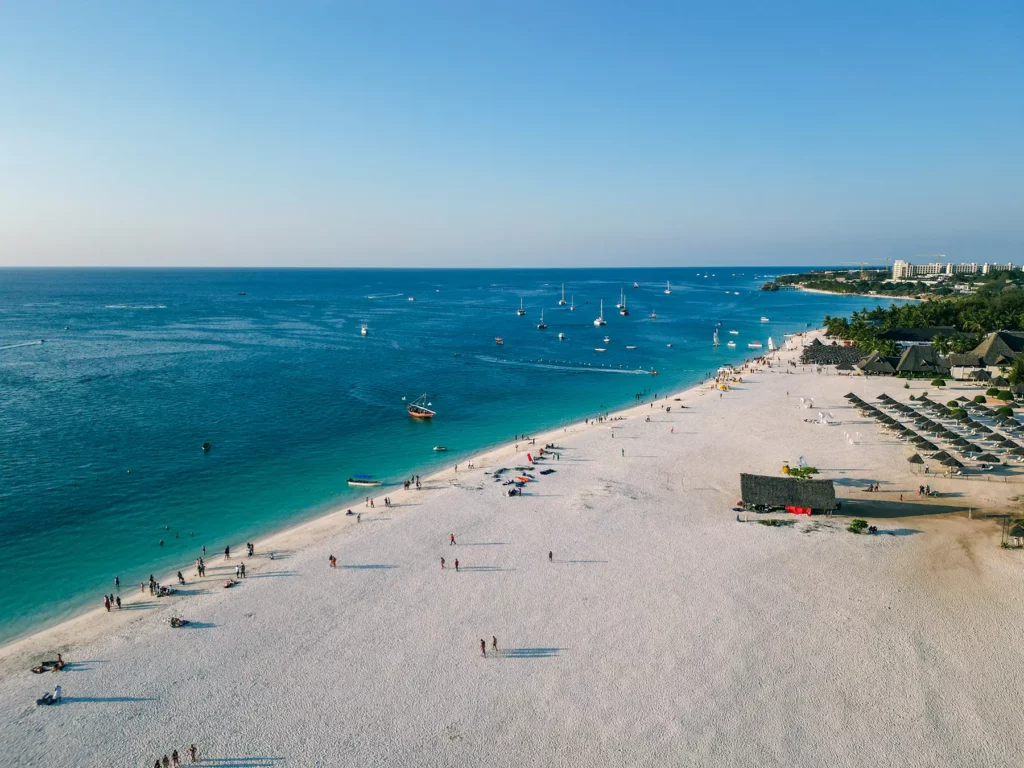
In saying this, the south of the island can’t be discredited. There are some charming beaches on the southeast coast. These are slightly quieter than the north.
Top Tip: There are various free tide apps which you can add to your phone to help with planning and when you’re on your trip.
You can jump to more information on each beach topic using the links below.
Which Part of Zanzibar has the Best Beaches?
Which Side of Zanzibar has Better Beaches?
Is it Safe to Swim in the Sea in Zanzibar?
Best Zanzibar Beach for Snorkelling
What is the Prettiest Beach in Zanzibar?
Best Zanzibar Beach for Sunsets
Best Zanzibar Beach for Diving
Best Zanzibar Beach for Paddle Boarding and Kayaking
What is the Calmest Beach in Zanzibar?
Best Zanzibar Beach for Beach Bars

Which Part of Zanzibar has the Best Beaches?
The northwest of Zanzibar is widely recognised as housing the best beaches: Nungwi and Kendwa.
These beaches are popular due to the minimal tidal differences, meaning the beaches stay consistent throughout the day and the waters are generally calm and perfect for swimming in. It also means that the beaches are more aesthetically pleasing as they are less likely to have seaweed on them.
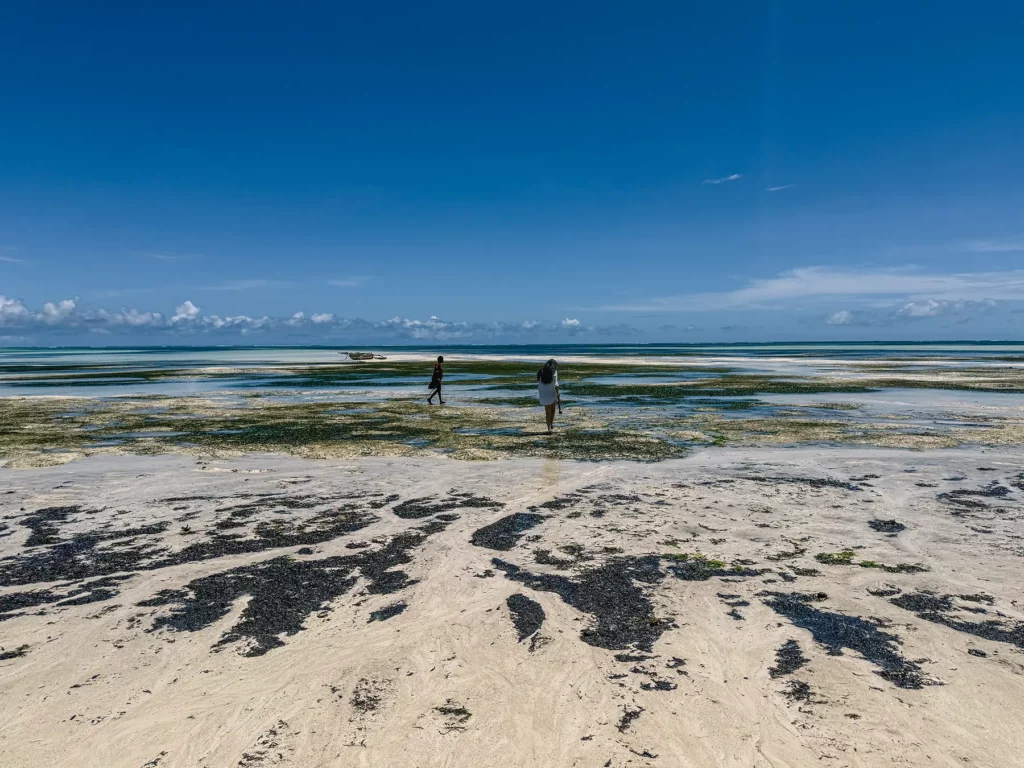
In addition to this, their position (Kendwa on the west coast and Nungwi in the very north) means they are gifted with fantastic sunsets.
Whilst Kendwa and Nungwi take the cake when it comes to what traditionally makes a beach perfect, I personally prefer quieter beaches which are a little more rugged.
The good news is if, like me, you prefer to feel as if you’re on a secluded island with barely anyone around, there are plenty of quieter beaches in the north. Pongwe is one of my favourites. It has the perfect combination of natural beauty and is relatively quiet.
All in all, northern Zanzibar has it all when it comes to beaches.
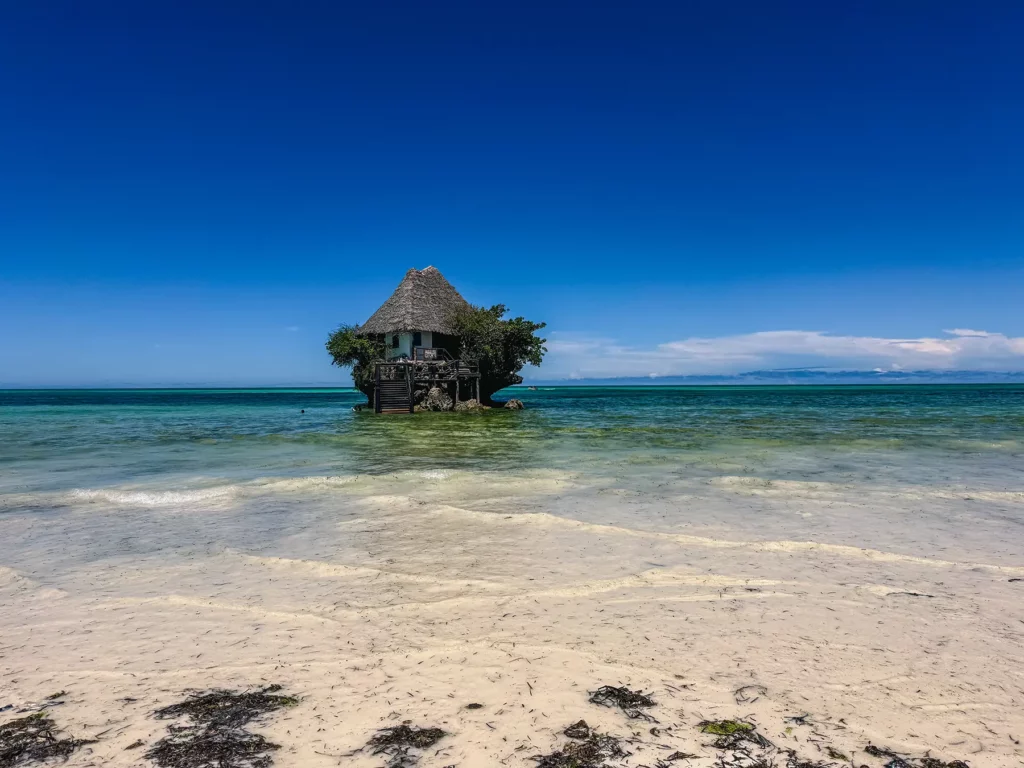
Which Side of Zanzibar has Better Beaches?
The simple answer is it depends what you’re looking for.
For picture-perfect beaches with wide expanses of pristine sand that are lapped upon by turquoise waves, the west coast of Zanzibar is better.
This is because there is less tidal movement here and so the beaches are consistent, the water calmer and little gets washed up upon the shores. They also experience magnificent sunsets. As you can expect, however, these beaches are pretty popular.
For a quieter and more exclusive experience, the east coast is best. The east side has a more dramatic tidal range, which means long walks across the exposed seabed to reach the water during low tide.
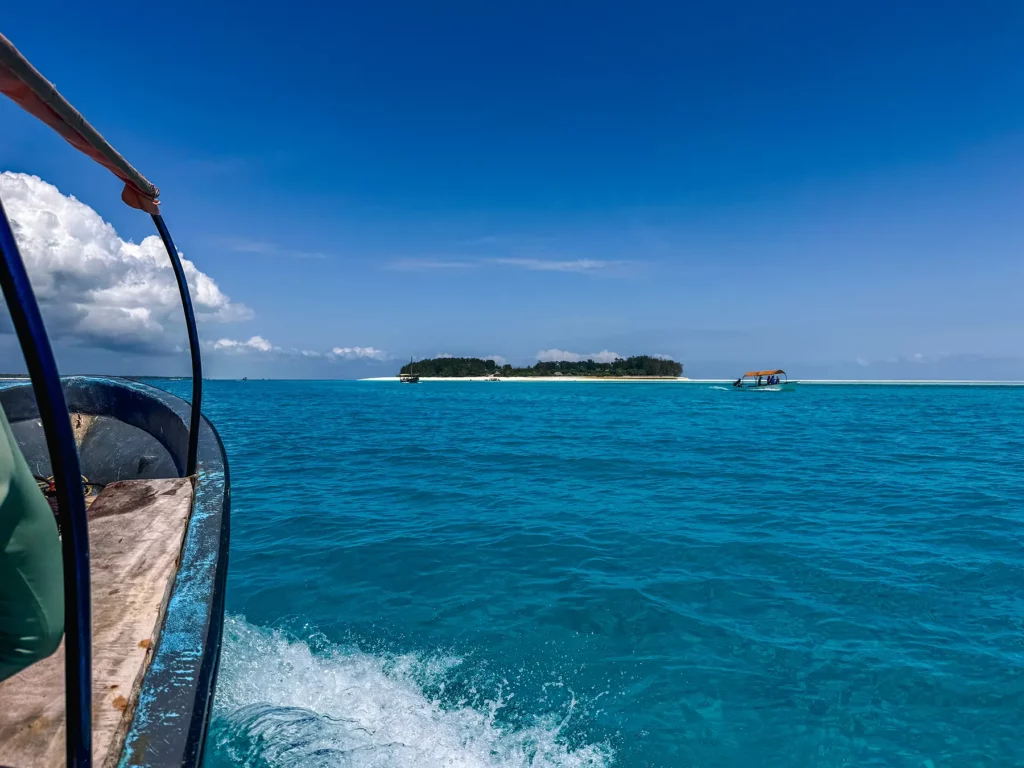
But there are perks to the tidal changes, most notably you can often find critters hanging out in shallow tidal pools. I was fortunate enough to see some clownfish and even a starfish. This side of the island also experiences wonderful sunrises – great for early risers like me!
The eastern side of the island also offers better snorkelling, diving and wind and kite surfing conditions.
You can mitigate the effects of the tide by planning your visit during neap tides, when the tidal variation is smaller. Neap tides occur seven days before and after a new or full moon.

Is it Safe to Swim in the Sea in Zanzibar?
Yes, it is generally safe to swim in the sea in Zanzibar. However, there are a few things to consider in order to ensure a perfect experience.
Positives of swimming in Zanzibar:
- Many of Zanzibar’s beaches have gentle slopes and shallow waters, making them suitable for families with young children.
- Most sharks around Zanzibar are small reef sharks that are generally harmless to humans, and there have been no recorded shark attacks that I could find in Zanzibar’s waters.
- Along the deeper reefs, you will undoubtedly find some bigger species, mostly blacktip and whitetip sharks, which are naturally not aggressive, as well as the giant whale sharks, which we all know are totally harmless to humans.
Things to keep in mind when swimming in Zanzibar to stay safe:
- Stonefish and sea urchins are often present, so I’d recommend wearing water shoes to help avoid injury by stepping on them by mistake.
- Some areas may have strong currents, especially near reef edges, so always follow local advice or signs.
- Most beaches do not have lifeguards, so swim cautiously and avoid going too far out alone.
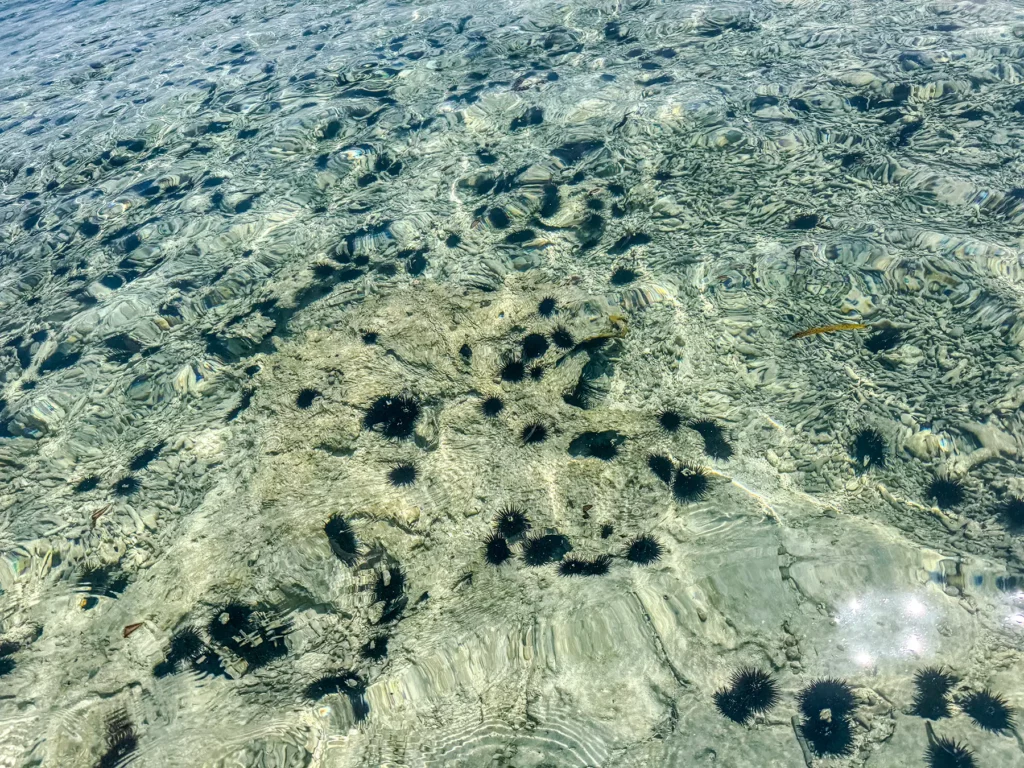
Romantic Zanzibar Beach for Couples
Pongwe beach on the east coast of the island and Mnemba Island are in my opinion the best beaches for couples. These two beaches are quiet, allowing you to have a private beach experience.
Pongwe houses just a handful of boutique hotels which are spread out, separated by rows of lazy palms. Many of these hotels, including my favourite, Tulia Resort, are perfect for couples.

Mnemba Island is a small private island just off Unguja’s northeast coast. Housing just 12 bandas, the island offers a tranquil and exclusive experience. It’s just you, a lush jungle island interior and some of Zanzibar’s best coral reefs to explore.
Other beaches worth mentioning are Nungwi and Kendwa, both wonderful for sunset and swimming, and Matemwe, which has a number of fabulous luxury hotels on it.
Winner: Based on my personal experience at the beach, Pongwe is the winner on the northeast of the island
The beach is so quiet and tranquil compared to many other beaches in Zanzibar. One evening at sunset I walked along the beachfront for several kilometres and scarcely encountered another soul.

Best Zanzibar Beach for Swimming
Kendwa beach on the northwest coast of Unguja is the best beach in Zanzibar for swimming. The minimal tidal range provides excellent swimming conditions throughout the day. The waters close to shore range from half a metre to two metres deep, and they are extremely calm, making them ideal for almost everyone.
Kiwengwa Beach on the east coast is another serious contender. It offers a long, uncrowded stretch of beach with shallow, calm waters that are generally safe for young children. A long, deep channel running parallel to the beach, directly in front of the long pier, offers swimmable waters even at low tide.

Pongwe Beach, also located on the east coast but a bit further south, is regarded by many as one of the best swimming beaches in Zanzibar. A natural coral reef shelters its calm, shallow water, and strong currents are absent.
Paje Beach, even further south on the east coast, is another favourite swimming beach, even though the waters recede a long way out during low tide.
Winner: Kendwa Beach is my personal choice when it comes to swimming.
Of course, it’s incredibly picturesque with its sweeping sands and quaint fishing boats, but its lack of tidal current also creates calm waters that are perfect for swimming in. While it does feel a bit touristy compared to other areas, you won’t notice much else but the scenery when out in the turquoise waters.
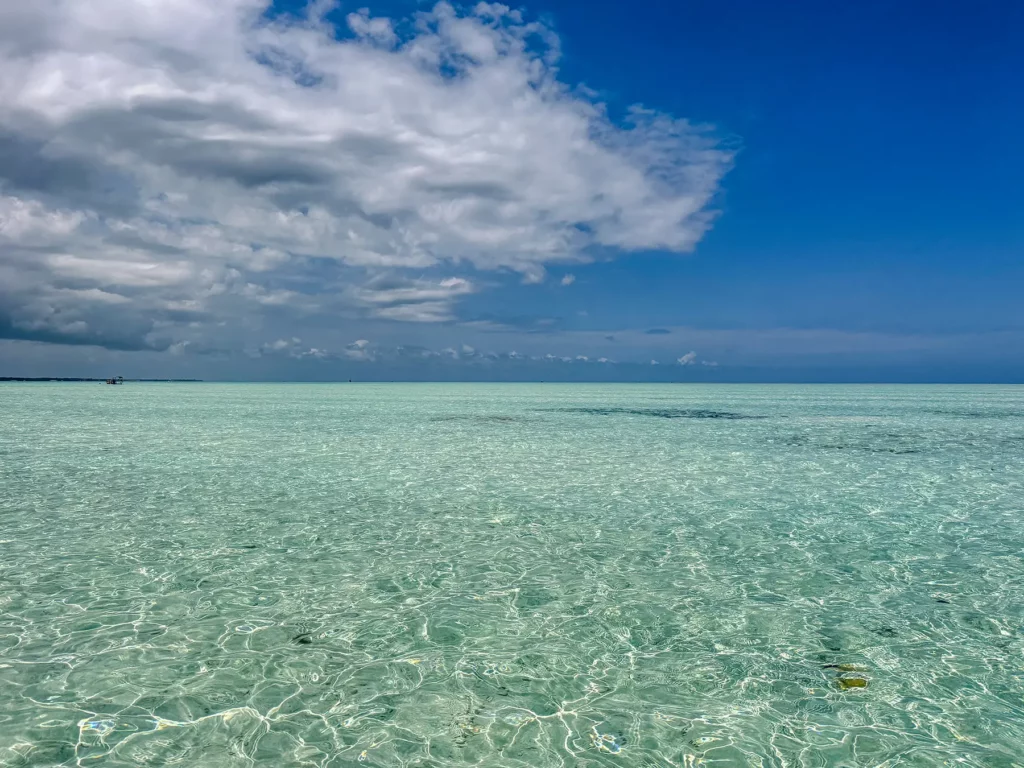
Cleanest Zanzibar Beach
Overall, the Zanzibar coastline is pretty clean, but Kendwa and Nungwi are the two best options. Because they don’t have much tidal current, debris such as seaweed doesn’t tend to wash up here, leaving the sand pristine.
Unlike the beaches you may be used to in other destinations, such as Bali, all the beaches I saw in Zanzibar were trash-free. So, besides natural debris like seaweed, there are plenty of beautiful stretches of beach to choose from.
Winner: In my experience, Kendwa is the winner.
Nungwi has a bustling village behind it, so there was a lot of human activity on the beach and construction going on nearby. In contrast, Kendwa seemed a little more well-maintained and finished. It also has the fewest tidal changes, keeping it looking the cleanest.

Best Zanzibar Beach for Snorkelling
The best Zanzibar beach for snorkelling is Mnemba Marine Park.
Okay, it’s not technically a beach (unless you’re staying on the exclusive Mnemba Island itself), however, you’ll find that in Zanzibar it is tricky to snorkel directly from the beach due to how far out the reefs are.
Mnemba Marine Park is just off the northeast coast of Unguja. It’s easily reachable by boat – the journey taking 20 minutes from all nearby beaches including Nungwi and Matemwe.
The reef in the marine park is large and thriving. Expect to see countless fish here!
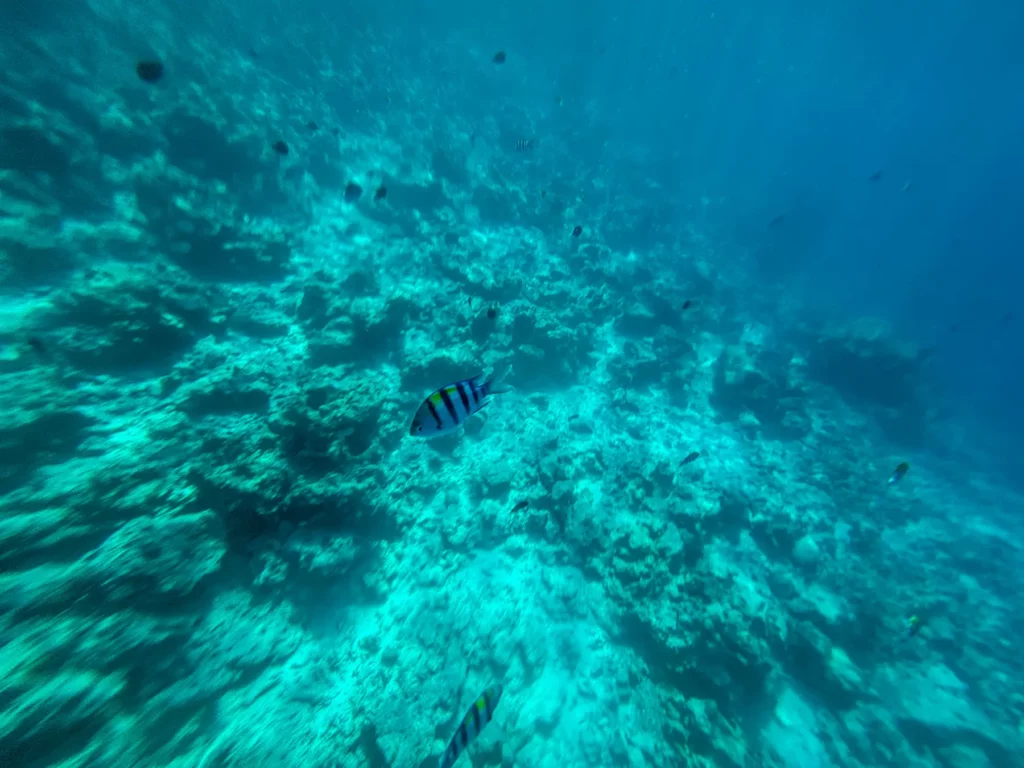
Another contender is Chumbe Island, a private island just off the southwest coast of Unguja. It’s considerably less accessible than Mnemba, hence why I wouldn’t rate it as the best. However, its exclusivity has meant that the reefs are more preserved. Generally only those staying on the island’s small resort can visit.
Menai Conservation Area is the third best place to snorkel, in the south of Unguja. The reefs here aren’t quite as impressive as Mnemba or Chumbe however.
The three options above are all beaches around small islands and require taking a boat trip to reach them.
Truthfully, there are limited options when it comes to snorkelling straight from a beach on Unguja. Kendwa beach in the north used to be a popular option. However, over the years the reef has been all but destroyed by fishing boats.
Winner: Mnemba Atoll – with its crystal clear waters, coral reefs, and diverse marine life, it’s no wonder that snorkelling at this protected marine park is considered a must-do in Zanzibar.

What is the Prettiest Beach in Zanzibar?
Personal preferences play a role in this. However, Kendwa is generally considered the most beautiful beach in Zanzibar due to its extensive swathe of sand, gently swaying fishing boats in crystal clear waters and lush vegetation to the south of the beach.
If you visit at sunset, it’s hard not to be awed by this gorgeous area of Zanzibar as it’s illuminated by blood-red skies.
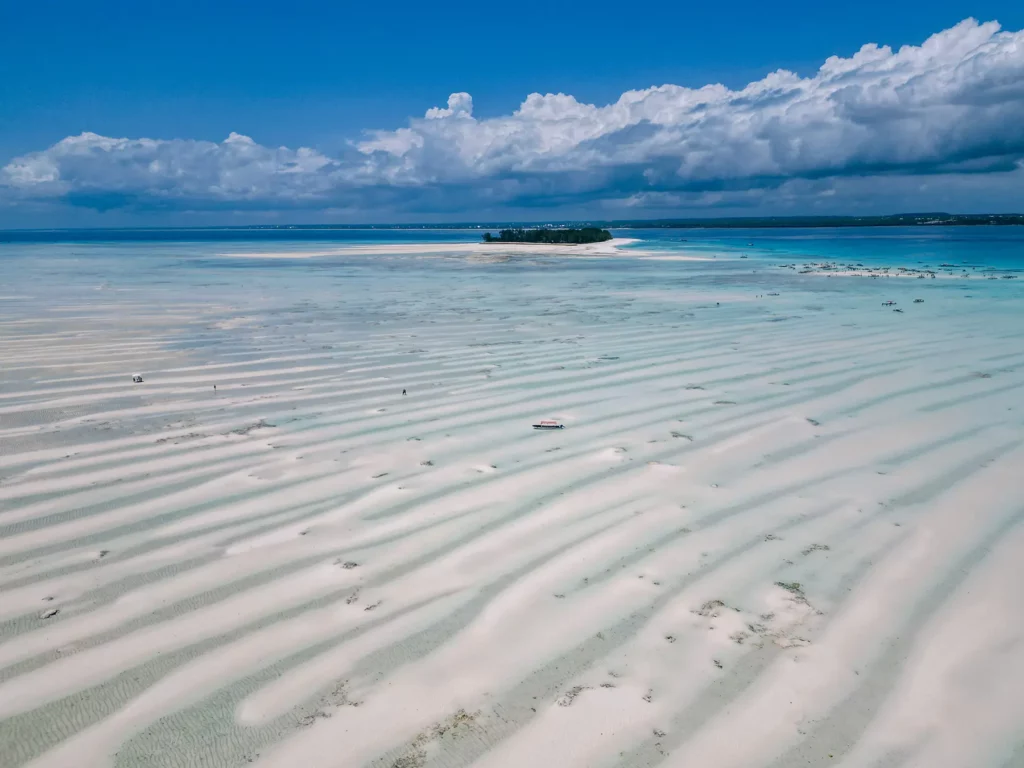
What Kendwa lacks, in my eyes, is a kind of natural beauty that you’re more likely to experience on Unguja’s east coast. Framed by coral cliffs and lapped upon by gentle turquoise waves, Pongwe beach is the epitome of what I deem pretty.
There are far fewer resorts on this beach than there are in Kendwa, meaning there are several pockets along the beach where you are backed by palm forests.
The strong tidal variation here does mean that more ocean debris washes along the shore but I personally love this. I spied so many gorgeous shells peeping out of the sand.
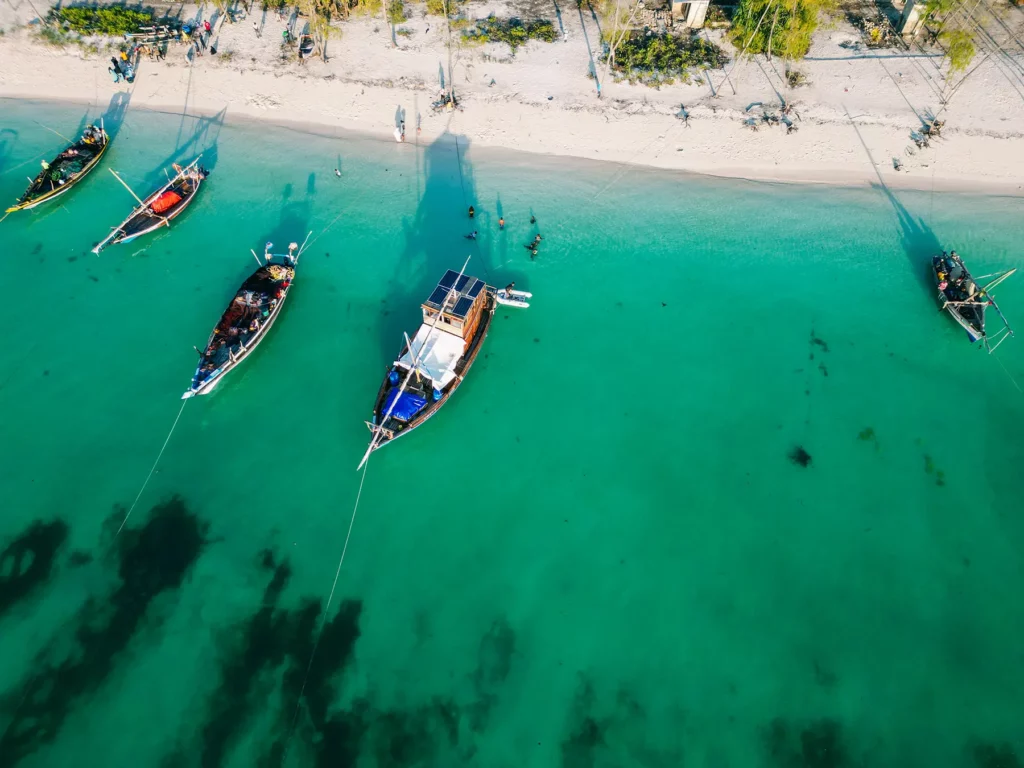
The perfect blend of traditional beauty and natural beauty has got to be Mnemba Island, however. It carries the best of both Kendwa and Pongwe beach.
Surrounded on all sides by vast expanses of white sand, some of which suffer from minimal tidal differences, the island is postcard perfect. Additionally, it is gifted with both exceptional sunrises and sunsets.
With only one resort on the island (consisting of just 12 bandas), it’s unspoiled and beautifully exclusive. However, at $2,000 per person per night, Mnemba Island isn’t accessible to everyone.
Winner: Mnemba Island is the winner here, closely followed by Pongwe and Kendwa beaches which are far more accessible.
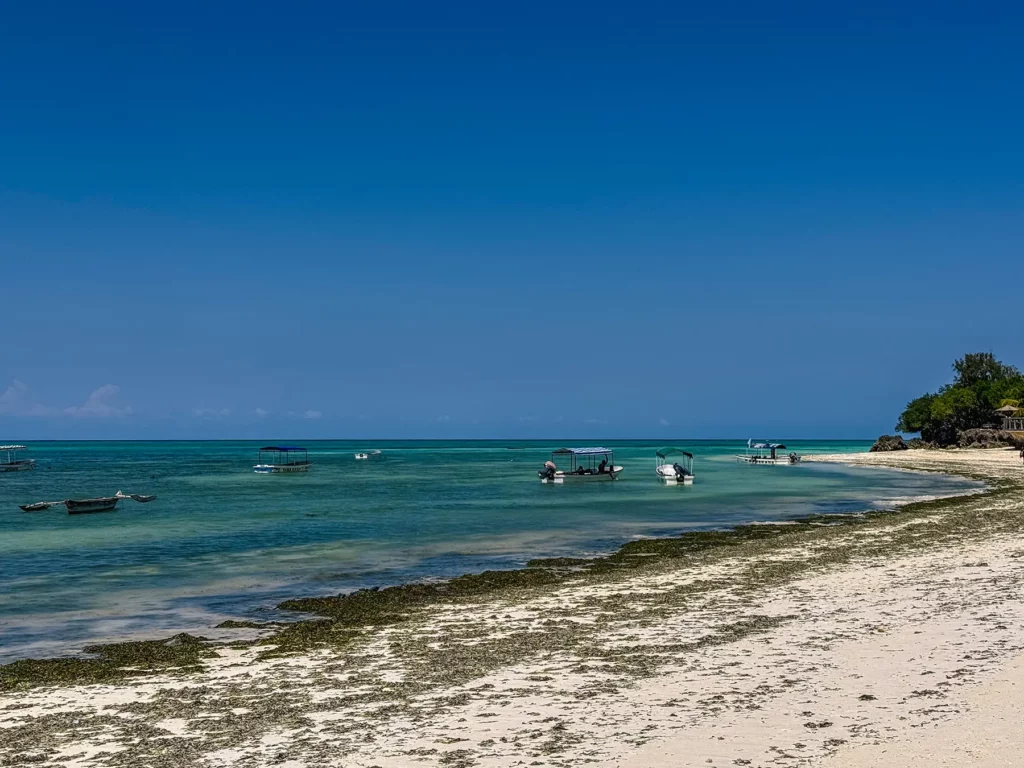
Best Zanzibar Beach for Sunsets
Perched on Zanzibar’s northwest coast, Kendwa Beach is the best beach on the island for sunset.
Kendwa Beach boasts an unobstructed west-facing view, making it perfect for watching sunsets. With a wide beach and calm waters, you can enjoy a famous Zanzibar sunset from upon its white sands or one of its sunset beach bars, which are perfectly positioned to get the most out of the view.
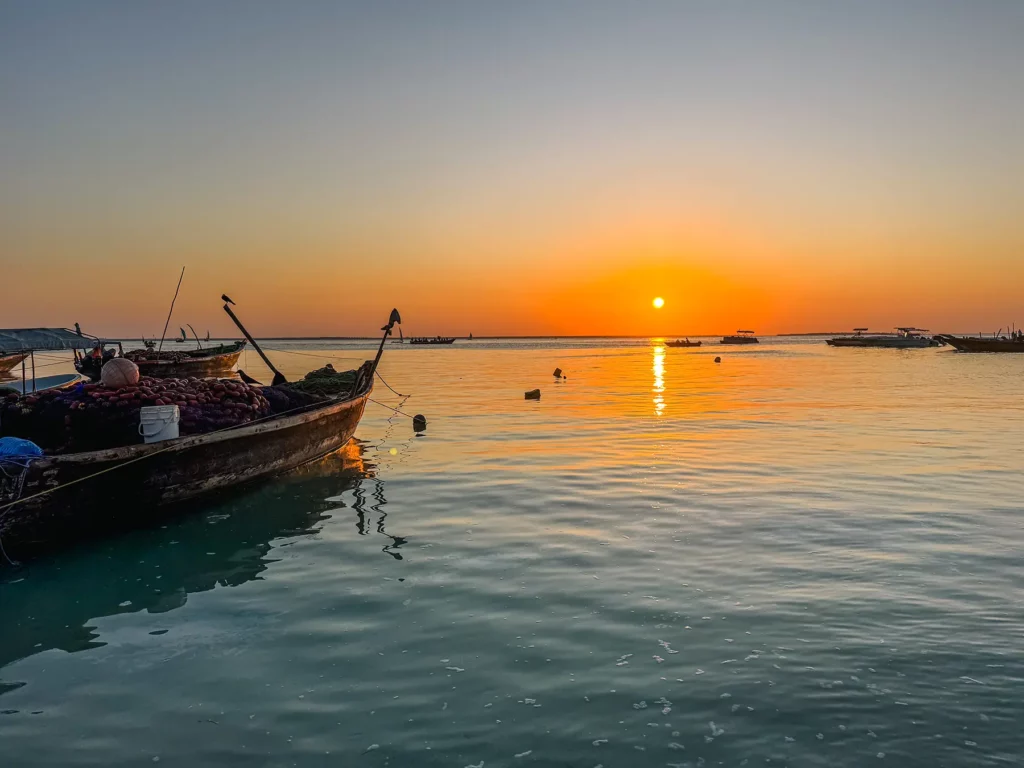
Another lively sunset spot is Nungwi Beach. With its great mix of natural beauty and local culture, Nungwi offers stunning horizon views, which are enhanced by the local boats that become silhouetted against the sunset.
For a more serene and less crowded option, my pick would be Paje Beach. Ideal for peaceful and picturesque sunsets, the colours across the sky and tidal flats are genuinely breathtaking.
Winner: Kendwa had the best sunset in my experience, with its vast horizon, golden glow over calm waters, and a perfect mix of atmosphere and tranquillity.
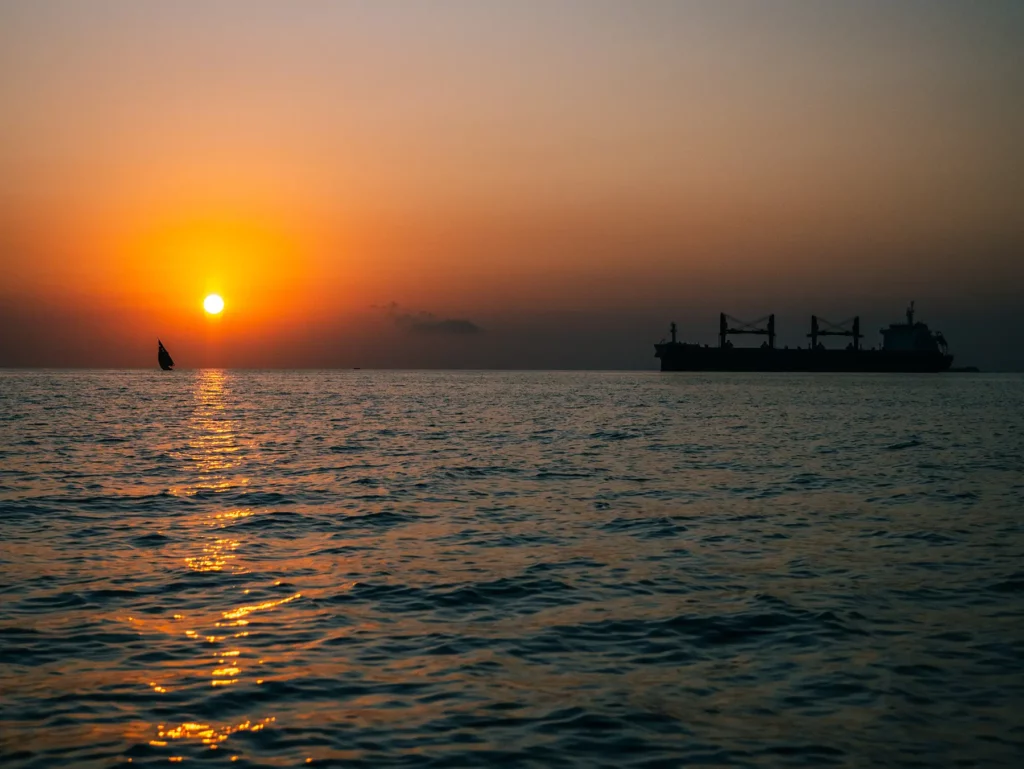
Best Zanzibar Beach for Diving
The best options for scuba diving in Zanzibar are Chumbe Island, located about 5 miles (8 km) off the west coast, and Mnemba Marine Reserve, which lies less than a mile off the northeastern tip of Zanzibar, and, of course, the beaches of Misali Island off the west coast of Pemba.
All these spots offer breathtaking diving amongst the best on and around the African continent, with some of the most diverse and marine-rich reefs found anywhere in the world.
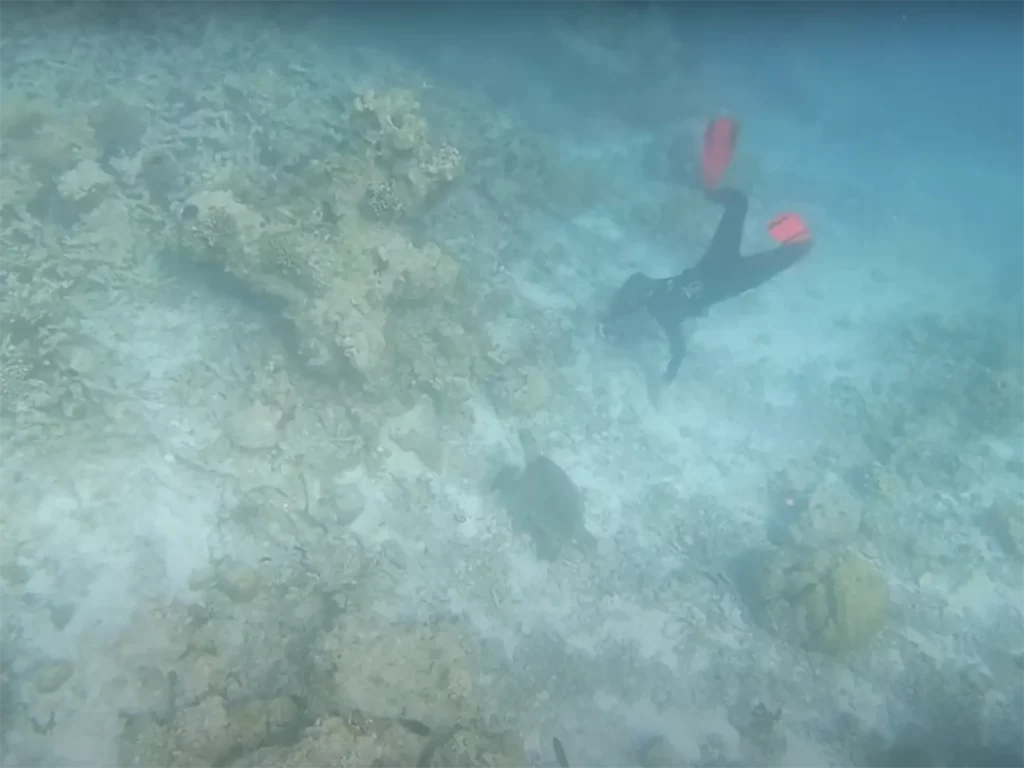
Amongst the brightly coloured corals, divers will encounter a vast array of colourful reef fish, such as various surgeonfish species, triggerfish, butterfly fish, Moorish idols, angel fish, groupers, puffers, parrotfish, wrasses, moray eels, boxfish, batfish, lionfish, etc.
Hovering in mid-water or cruising along the reefs, pelagic predators like barracuda, trevallies, mackerel, sharks, dolphins, whale sharks and of course, turtles abound all year round.
The only downside may be that the best reefs can be a bit crowded during peak tourist season.
Winner: Mnemba Island (Mnemba Atoll) is the winner due to its exceptional visibility, frequent sightings of turtles, reef sharks, moray eels, and schooling fish, as well as its suitability for divers of all skill levels.
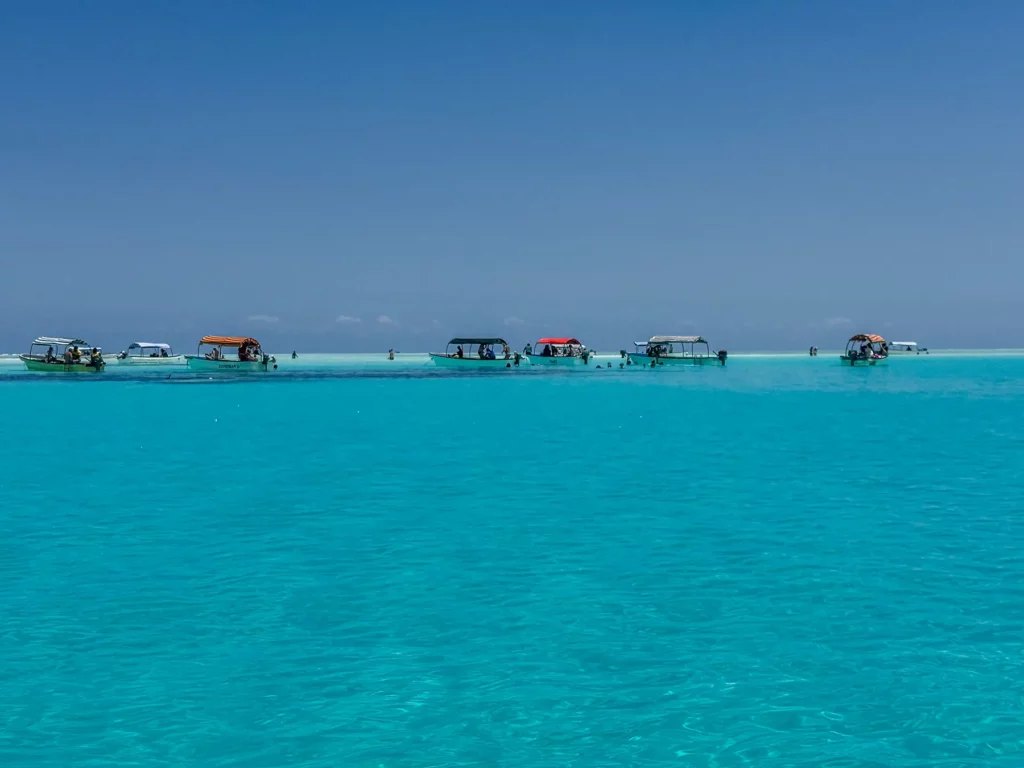
Best Zanzibar Beach for Paddle Boarding and Kayaking
Beaches on Zanzibar’s west coast, including Kendwa and Nungwi are best for paddleboarding and kayaking due to the gentle tidal currents and generally sheltered nature.
Nungwi beach houses an abundance of waterspot companies making it perhaps the best option. From here you can kayak to other locations, including Kendwa beach.
Many resorts, hotels, and kayak operators across the island offer kayaking excursions in transparent kayaks, allowing kayakers to enjoy the island’s beauty both above and below the water as they glide over the vividly coloured corals.
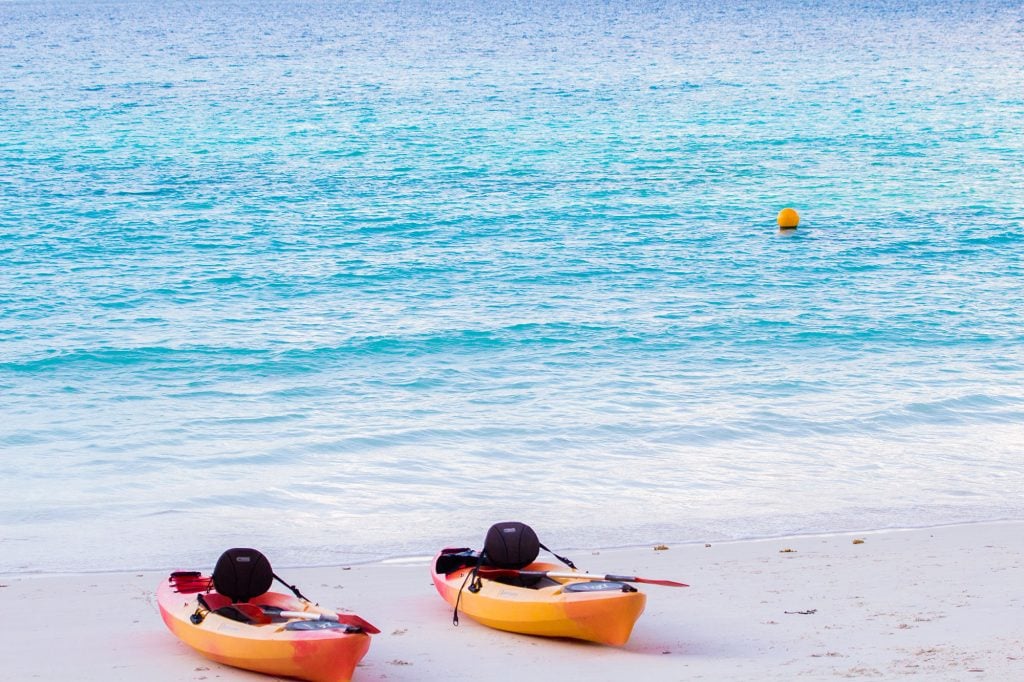
The east coast, on the other hand, is better suited for wind and kite surfing. During the peak season, between June and October, it is more exposed to the prevailing southeast winds.
It’s certainly possible to enjoy paddleboarding or kayaking on the east coast but you’ll have to time your activity with the tides.
Winner: Nungwi, being calm with minimal tides and an abundance of watersports companies to choose from.
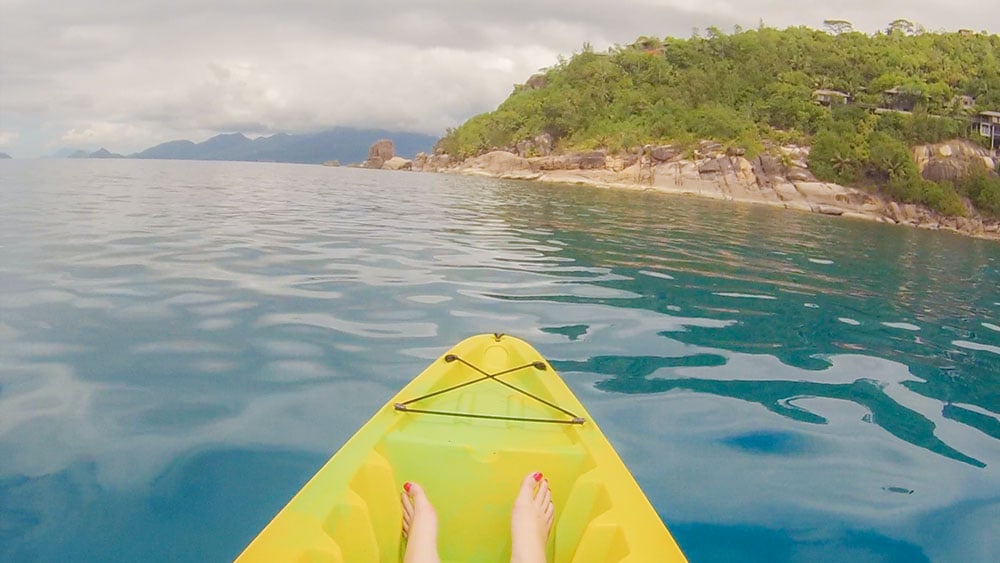
What is the Calmest Beach in Zanzibar?
The calmest beaches in Zanzibar are in the northwest of Unguja, including Kendwa and Nungwi beaches. The lack of tidal current makes the oceans calm and perfect for swimming, paddleboarding and kayaking.
Kendwa every so slightly has the upper hand here due to its sheltered position.
In saying that, many beaches on Zanzibar’s east coast are also calm. A large reef several kilometres out to sea shelters the beaches and surrounding waters. There are, however, drastic tidal changes here which ultimately make them not quite as calm as the northwest coast.
Winner: Kendwa Beach due to its sheltered nature and lack of tidal currents.

Best Zanzibar Beach for Beach Bars
Matemwe and Kilimanju beach, on the northeast coast of Zanzibar are the best beaches for beach bars. Although they have different names, this is actually one long expanse of sand that’s littered with hotels, restaurants and beachbars.
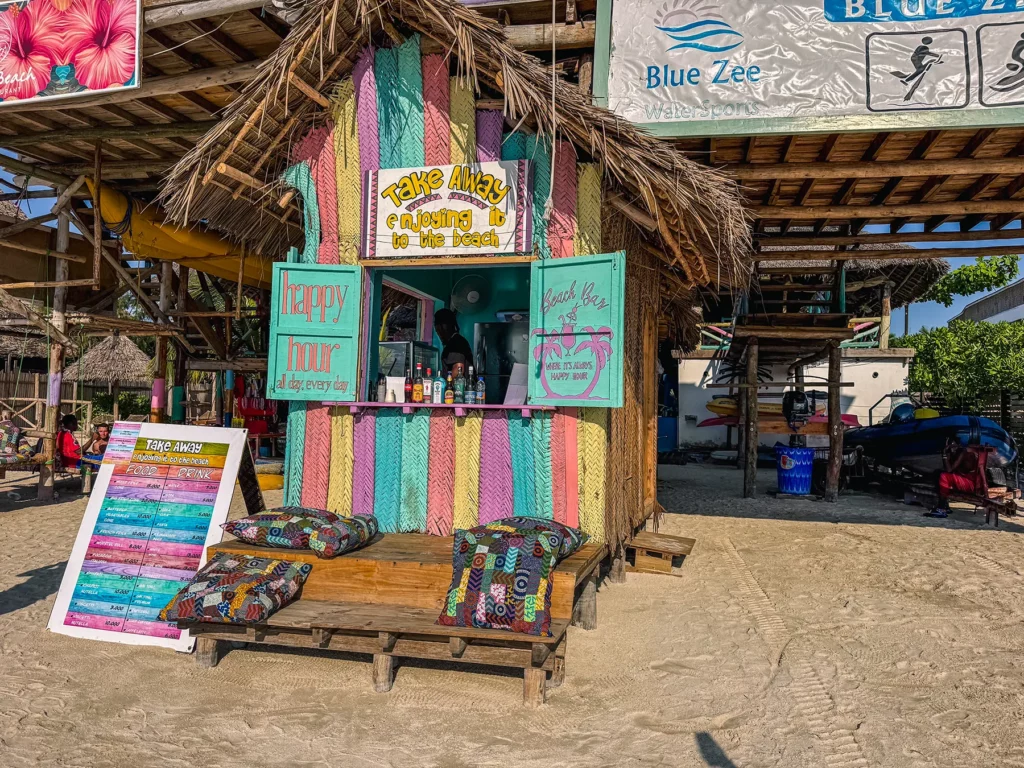
There’s quite literally something for everyone here, from rustic beach huts to plush beach bars including Melia’s iconic Jetty Lounge in the ocean.
The only downside of Matemwa and Kilimanju beaches is their lack of sunset. Although the sky still undergoes a dazzling transformation in the evenings, from blue to pink and purple.
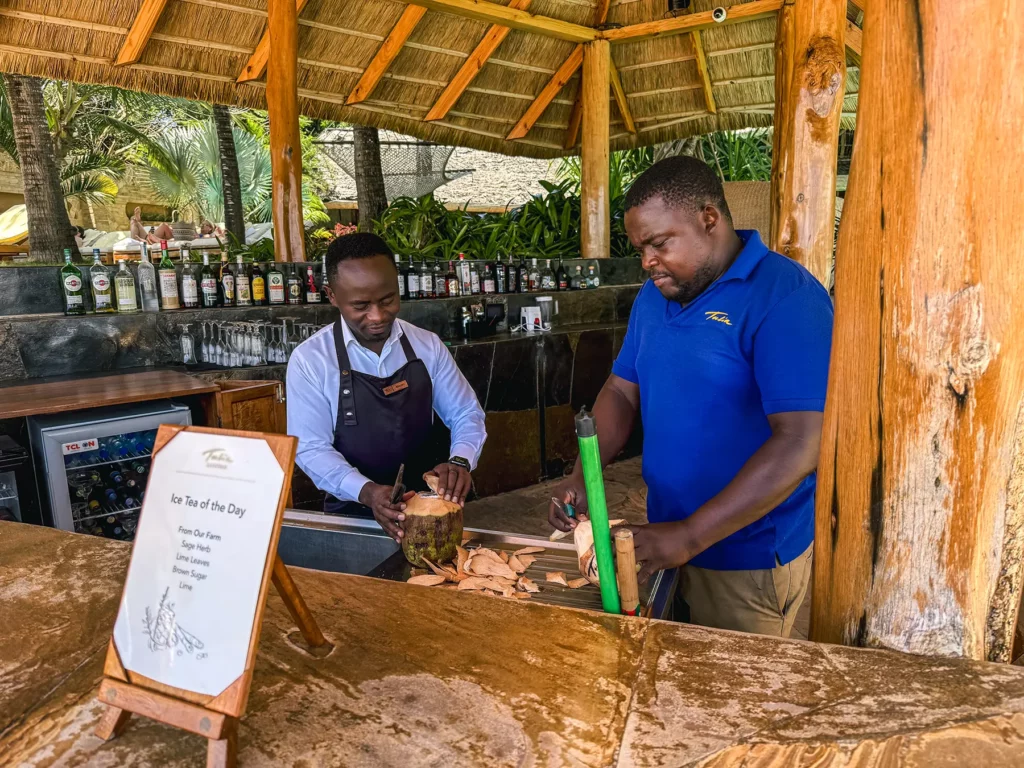
When it comes to sunsets, Kendwa beach really can’t be beaten. Fortunately, there are a handful of beach bars here too, including my favourite Furaha Beach Bar & Restaurant.
Although Nungwi is an extremely popular beach, I personally found it lacked choice when it came to beach bars and so won’t be including it in this lineup.
Winner: Kendwa beach has the best sunsets but Matemwe and Kilimanju in the northeast have the most choice when it comes to beach bars.

Top 3 Beaches in Zanzibar Overall
The top 3 Zanzibar beaches are all located on the northern part of Zanzibar Island.
1. Kendwa Beach
It is a top favourite for most visitors to Zanzibar, and for good reasons too. Situated on the northwest-facing section of the island, it offers magical sunset views.
During the day, a minimal ridgeline range ensures swimming and beach activities throughout the day. A beautiful beach, whether visiting during the day or staying for sunset
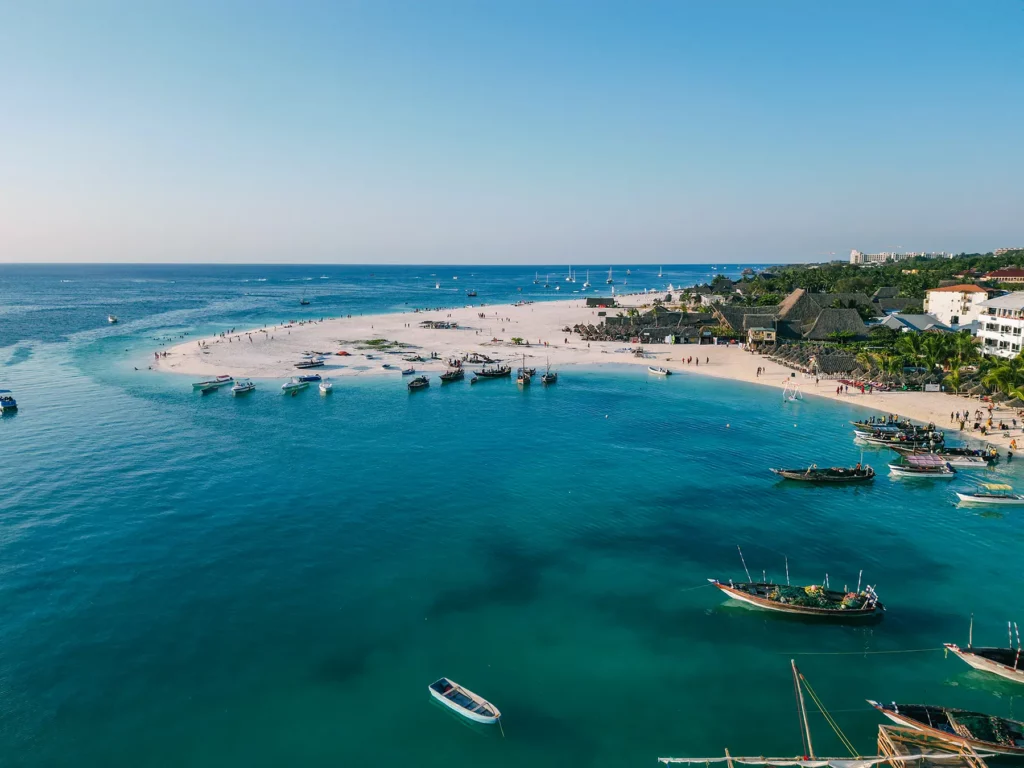
Pros of Kendwa Beach
- Its calm waters make it perfect for kayaking, paddleboarding and swimming
- A good selection of bars, restaurants, and hotels
- Breathtaking sunsets – some of the best on the island!
Cons of Kendwa Beach
- Due to its popularity, Kendwa can get pretty busy
- It feels a bit touristy with the entryway to the beach forcing you to pass by endless stalls selling souvenirs
2. Pongwe Beach
With a breathtaking stretch of white sand, Pongwe has an idyllic and natural feel to it. It’s less touristy than Kendwa, providing gorgeous views but without the crowds.
Due to the distinct tidal shifts, this beach can change quite drastically with the waters sometimes coming right to the shore and other times being kilometres away. However, the water is calm and can be great for swimming in at high tide.

Pros of Pongwe Beach
- Gorgeous stretch of sand that is relatively unspoiled by tourism
- Less crowded than more popular beaches such as Kendwa
- The waters are calm and perfect for swimming in at high and medium tide
- Few hotels on the beach make it naturally beautiful
Cons of Pongwe Beach
- Tidal shifts mean more debris washes on the shores and that you can’t swim at all times of day
- Less nightlife and fewer restaurant options
3. Mnemba Marine Reserve
Just off the northeast coast of Unguja, Mnemba Marine Reserve is made up of coral reefs, sandbanks and a private island.
At low tide the waters retreat and reveal stunning sandbanks which stretch on for kilometres within the marine reserve. These stretches of sand are perfect for a picnic lunch or some drinks. There’s nowhere else on the island quite like this – it’s just you on a sandbank in the middle of nowhere!

Pros of Mnemba Marine Reserve
- Best place to go snorkelling in Zanzibar
- Sandbars are unique and completely breathtaking.
- Easy to hire a boat here from any of Zanzibar’s northeast beaches.
- The waters are typically shallow and perfect for swimming.
Cons of Mnemba Marine Reserve
- It’s extreme beauty and abundance of ocean life make it a very popular spot and it can get busy.
- The island within the reserve is private so can’t be set foot on unless you’re staying there.
Top Tip: To make the most of your boat trip to Mnemba Marine Reserve, I recommend asking your guide to take you to a private area of sandbank.
The sandbanks are extremely popular and it’s not uncommon to see dozens of people here. Therefore if you prefer solitude, like I do, simply request to go to a quieter area.
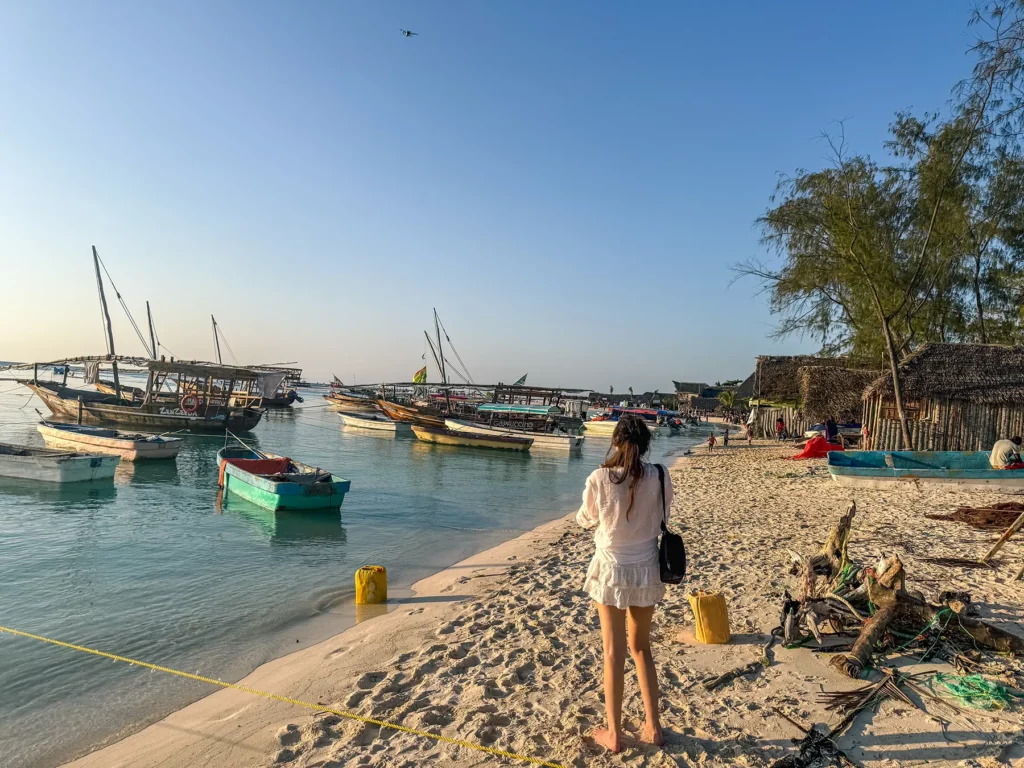
Wildlife in Zanzibar
Wildlife may not be the first thing that comes to your head when you think of Zanzibar. And yet, this archipelago has some unique and interesting critters, many of which can only be found here.
Most notably Zanzibar is home for the endemic Zanzibar red colobus monkeys, which can be found nowhere else on earth in the wild.
Another unique creature which sadly cannot be found here anymore is the now-extinct Zanzibar leopard.

Other species that are unique to Zanzibar here include the recently-discovered Zanzibar servaline genet, and the diminutive Aders’ duiker, also known as Africa’s rarest antelope which is found only on Zanzibar and in Kenya.
Additionally, 357 species of birds have been documented in Zanzibar, including 16 globally threatened species.
The best place to see Zanzibar’s land-based wildlife is Jozani Forest, the island’s only national park, southeast of Zanzibar City. Jozani Forest National Park includes an area of forest as well as mangrove swamps.
Whilst the Zanzibar red colobus monkey is the prized animal to see here, you can also see blue monkeys and a range of birds (I saw a humming bird) in the forest. In the mangroves it’s common to see giant mud crabs and western reef herons. I was delighted to see a western reef heron feasting on a prawn!
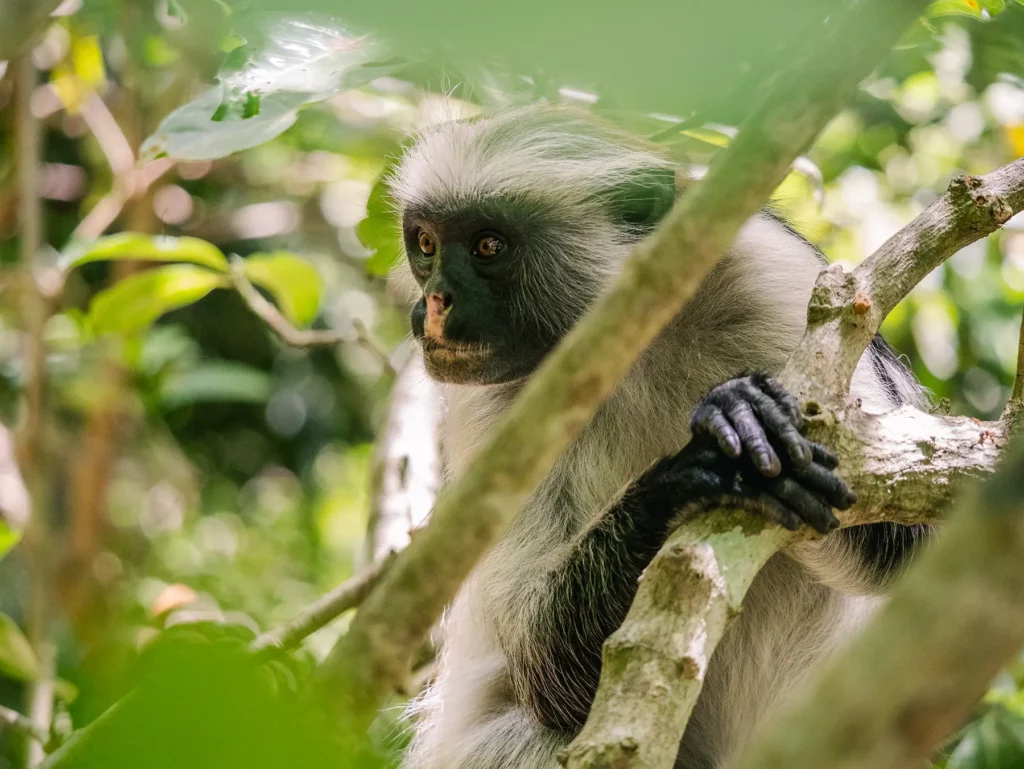
Other places to visit include the Kiwengwa-Ponge Forest Reserve and the Ngezi Forest Reserve on Pemba Island.
Most of Zanzibar’s vibrant wildlife lives beneath its crystal-clear blue waters. In this beautiful underwater world, a wide variety of marine life can be found, including green turtles, numerous fish species, sharks, dolphins, and whales.
You can jump to more information on each park to the Zanzibar wildlife section using the links below.
What is the Main Animal of Zanzibar
What are the Rarest Animals in Zanzibar?
Is Zanzibar Good for Birdwatching?
Swimming with Sea Turtles in Zanzibar
The Legend of the Zanzibar Leopard
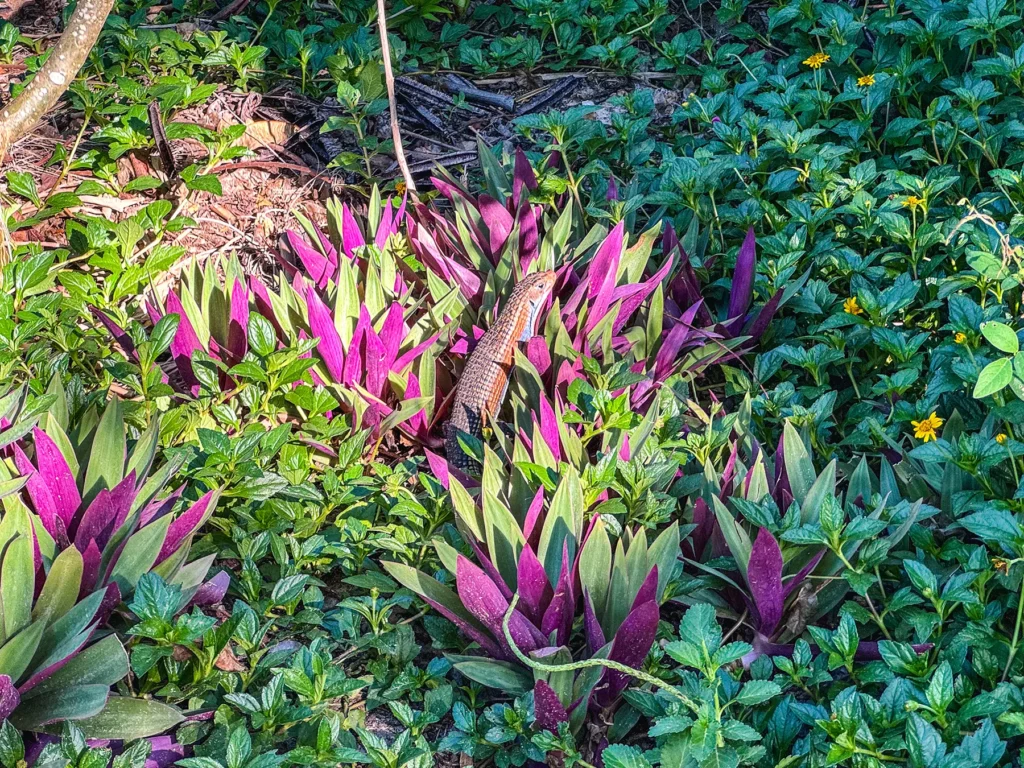
What is the Main Animal of Zanzibar
Zanzibar’s most iconic animal is the rare and endangered Zanzibar red colobus monkey.
Although most visitors may have never heard of them, the monkeys are an absolute joy for those who can spot them. Less than 2,000 are estimated to remain, half of which are in the Jozani Forest of Jozani Chwaka Bay National Park.

What are the Rarest Animals in Zanzibar?
The tiny Aders’ duiker is one of Zanzibar’s rarest animals, with a total population estimated at 1,400. Habitat loss due to human agricultural and urban expansion threatens this vulnerable species, despite the lack of predators, such as pythons.
Another rare and endangered species is the Zanzibar servaline genet, a small cat that zoologists only recently discovered, although the local population has known about it for centuries. This cat is only found on Unguja Island.
Beneath the waves, the humpback dolphin, which can sometimes be seen off Zanzibar’s southern coast, is another critically endangered species.

Is Zanzibar Good for Birdwatching?
Yes, Zanzibar is good for birdwatching, especially for coastal and forest species.
The archipelago is home to over 357 recorded bird species, with a good mix of both resident and migratory species, the latter of which are at their peak between April and November.
You can also see endemic species such as the Pemba green pigeon, Pemba sunbird, and Zanzibar red bishop.
The best places for birdwatching in Zanzibar are Jozani Forest, Chwaka Bay, Ngezi Forest on Pemba, and the archipelago’s mangroves and coastal lagoons.
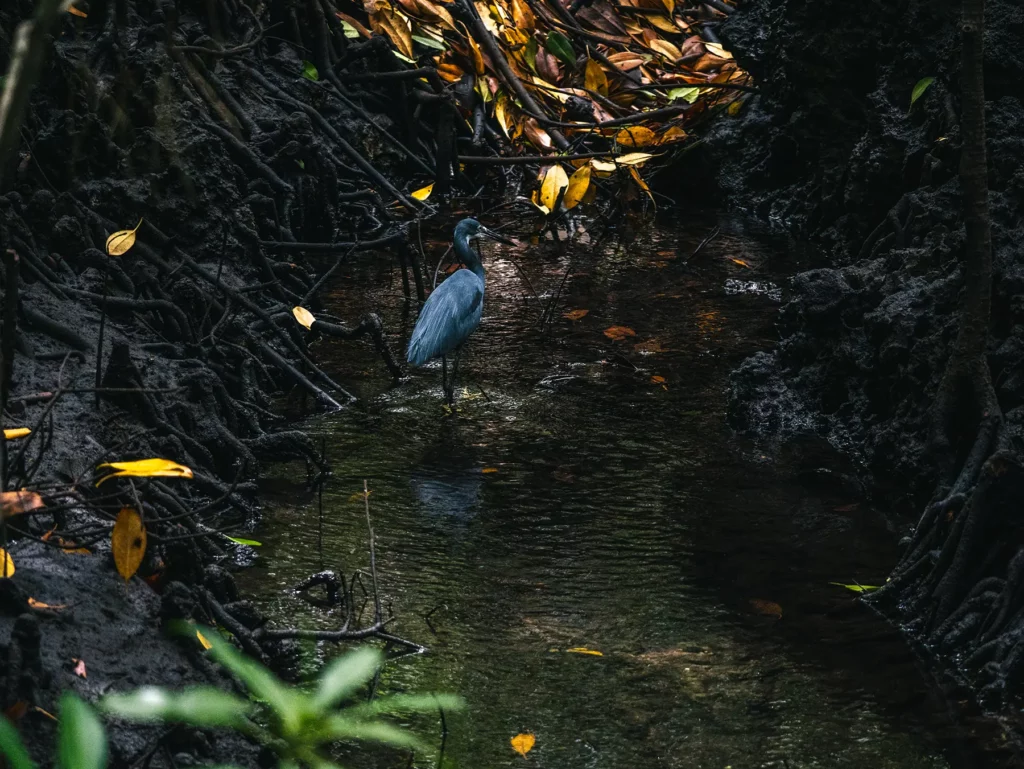
Swimming with Sea Turtles in Zanzibar
Several beaches of Zanzibar are favourite nesting sites for turtles, and visitors can encounter these creatures in the water cruising over the coral reefs, especially around Mnemba and Chumbe. Sightings are never guaranteed, however.
Top Tip: While there are places where you can see and swim with turtles in captivity in Zanzibar, I don’t recommend these, as critics argue that the swimming and feeding interactions cause stress and disrupt natural behaviour. Additionally, enclosure size and conditions have been flagged as inadequate by some animal welfare groups.
There’s nothing more rewarding than seeing turtles and other marine creatures swimming peacefully in their natural habitat.
Some of the best diving locations which give you a chance of seeing them include the following.
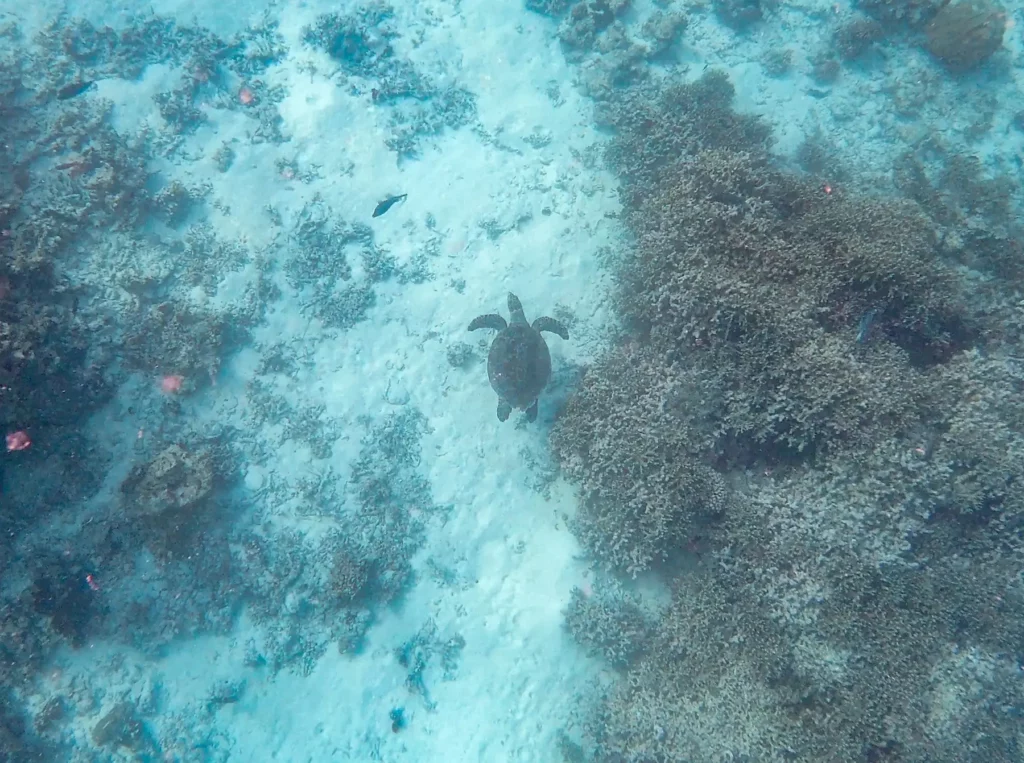
Reefs of Mnemba Island for Swimming with Sea Turtles
These reefs are among the premier snorkelling and scuba diving hotspots in Zanzibar. Tour operators arrange various boat tours to the atoll and island, which the ‘andBeyond’ hotel group privately owns.
Situated less than 2 miles (3 km) off the northeast coast of Zanzibar, the Mnemba Island and atoll reefs lie in an oval shape spanning 4 miles across (6 km). Their depths range from 7 to 100 feet (2 to 30 m), which is ideal for experienced divers and novice snorkelers.
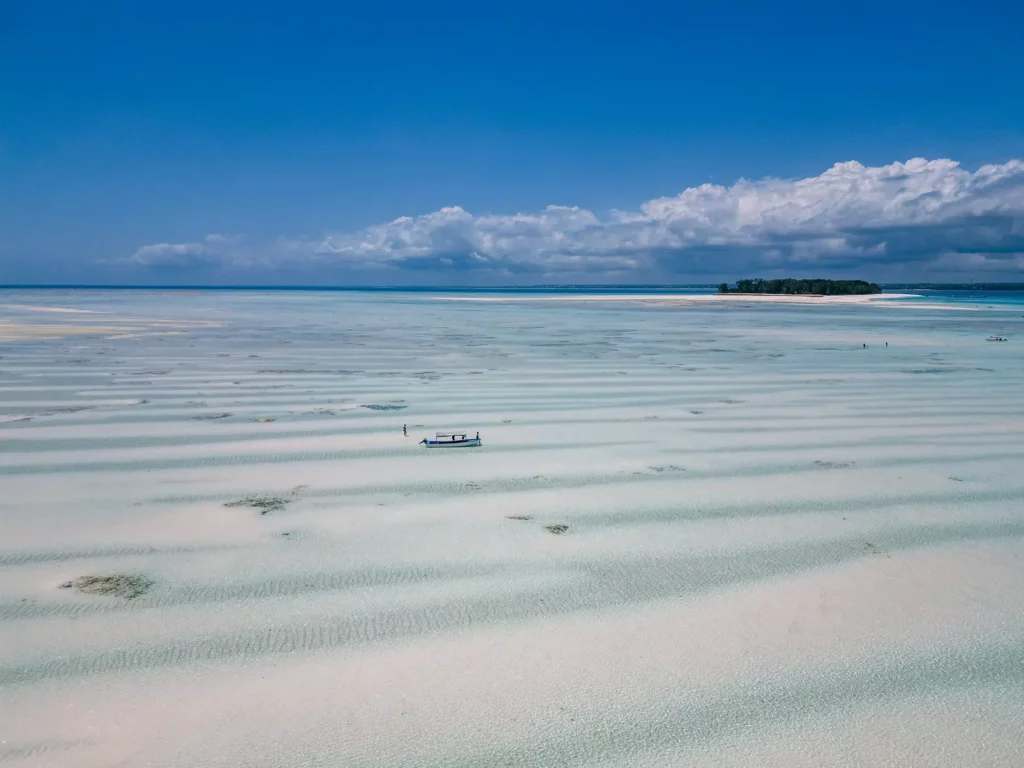
Pros of Mnemba Island for Swimming with Sea Turtles
- Good chance of seeing turtles and dolphins.
- The water is usually crystal clear, offering excellent visibility and providing opportunities for underwater photography.
- Diverse array of other marine life, including the elegant Moorish idols, tons of brightly coloured butterfly fish, surgeon fish, small groupers, the beautiful but deadly lionfish, moray eels and hundreds of other reef species.
- Along the deeper reefs and drop-offs, visitors may spot Napoleon Wrasse, bigger grouper and shoals of yellow snappers cruising slowly over the coral, alongside pelagic gamefish, such as trevallies, barracuda, rainbow runners, and tuna.
Cons of Mnemba Island for Swimming with Sea Turtles
- Visiting requires a tour, so snorkelling or diving here is more expensive than some other options.
Reefs of Chumbe Island for Swimming with Sea Turtles
Situated about 4 miles (7 km) off the southwestern coast of Zanzibar, the reefs around Chumbe Island are another marine protected area offering stunning snorkelling, scuba diving, and thriving marine life.
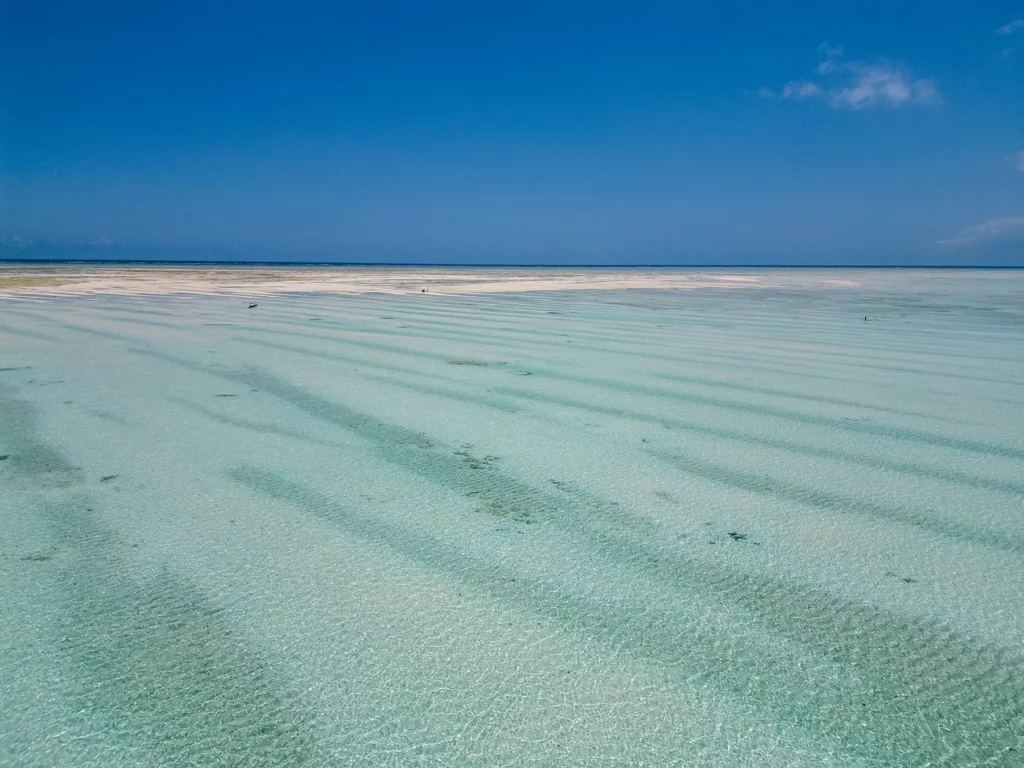
Pros of Chumbe Island for Swimming with Sea Turtles
- Much of Chumbe’s coral reefs are in extremely shallow waters, making it ideal for inexperienced snorkellers.
- Amongst the 59 types of corals, you can spot over 500 species of fish ranging from the tiny sea goldie to large predators like grouper, barracuda, giant trevally, dolphins and black-tip sharks.
- Protected seagrass beds provide a vital feeding ground for green turtles, so you may find several munching away in the shallow water.
- Along the sandy seabed, look out for stingrays and colonies of garden eels.
Cons of Chumbe Island for Swimming with Sea Turtles
- Visiting is typically restricted to guests staying on the private island unless the hotel has availability, in which case they release a select number of day passes.
Nungwi for Swimming with Sea Turtles
It is unlikely that you’ll encounter any turtles simply by swimming straight off Nungwi Beach. The barrier reefs around the island’s northeast side will be your best option. These are wonderful diving spots, teeming with life throughout the year.
Nungwi has earned its reputation as being a good place to swim with turtles due to the fact that it houses the Nungwi Mnarani Aquarium, a large natural tidal pool on the northern tip of the beach.
The aquarium claims to be a turtle sanctuary and visitors can swim with and feed turtles. Although the pictures look gorgeous on Instagram, the reality of the situation isn’t so beautiful.
According to recent online reviews, the pool is dirty with little to no enrichment for the turtles, and baby turtles are kept in small buckets. The turtles are noted as seeming distressed (and can you blame them when over 100 visitors each day hop into a tiny pond with them?) and visitors sometimes get bitten by the turtles.
Doesn’t sound great, right? You’re better instead to visit one of Zanzibar’s premier snorkelling destinations and hope to encounter a wild turtle who is living free, exactly as they should be.
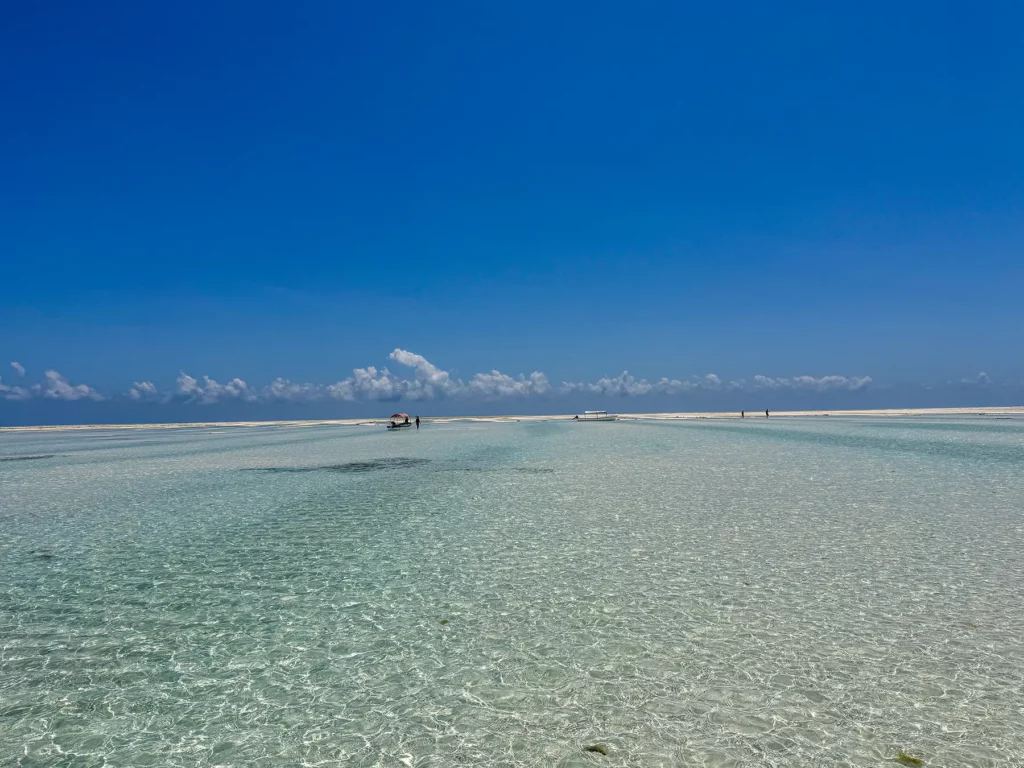
Pros of Nungwi for Swimming with Sea Turtles
- The beach’s barrier reef in the west is a great diving spot where you may encounter turtles
Cons of Nungwi for Swimming with Sea Turtles
- It isn’t possible to see turtles when swimming directly off the beach
- Nungwi Mnarani Aquarium which houses captive turtles for visitors to swim with keeps the turtles in questionable conditions
Kendwa Beach for Swimming with Sea Turtles
Situated on the northwest-facing side of the island, Kendwa is not only one of the best beaches in East Africa but is also a stone-throw away from some of the most sublime diving and snorkelling in Zanzibar.
Do note however, that it is unlikely you’ll encounter a turtle when swimming directly off the beach. You’ll need to take a boat to the reefs surrounding nearby Tumbatu Island.
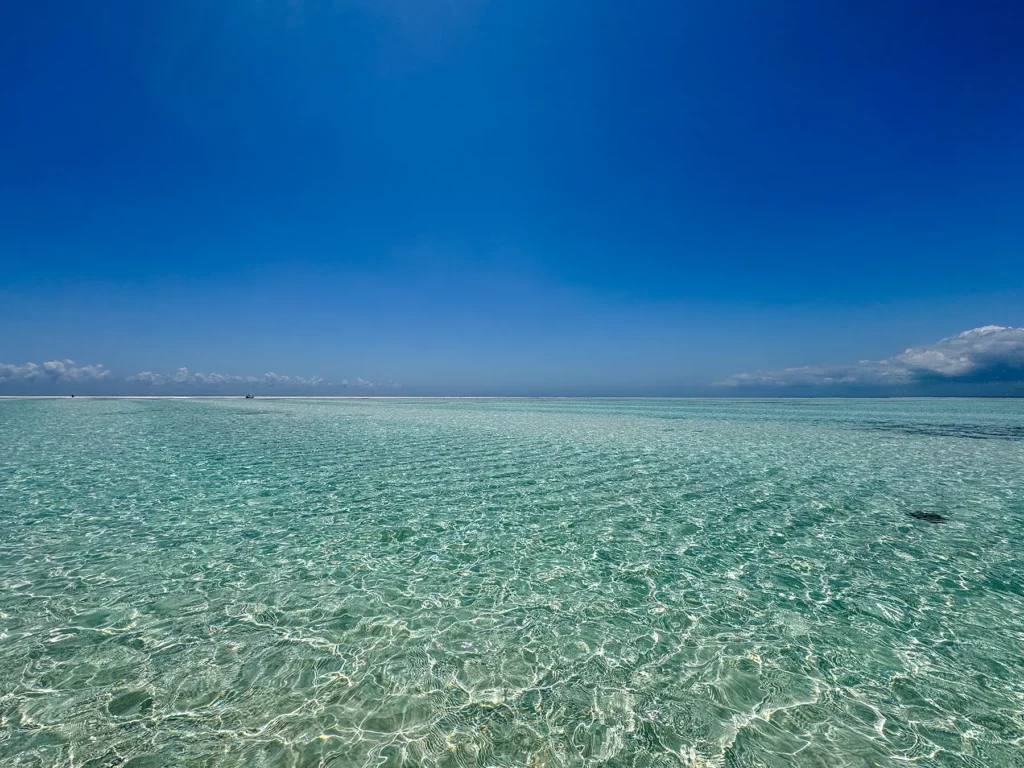
Pros of Kendwa Beach for Swimming with Sea Turtles
- The coral reefs surrounding Tumbatu Island, where you can see sea turtles, lie just 4 miles (7 km) offshore, a mere 30 minutes’ ride away. Currents are rare here, and the reefs are only 10 feet (3 meters) deep, making them perfect for both advanced and novice divers, snorkelers, and underwater photographers.
Cons of Kendwa Beach for Swimming with Sea Turtles
- Reefs closer to Kendwa beach including Kendwa reef are not in the best condition.
- Access to Tumbatu Island is restricted due to local regulations, so snorkeling excursions are typically conducted by boat without landing on the island.
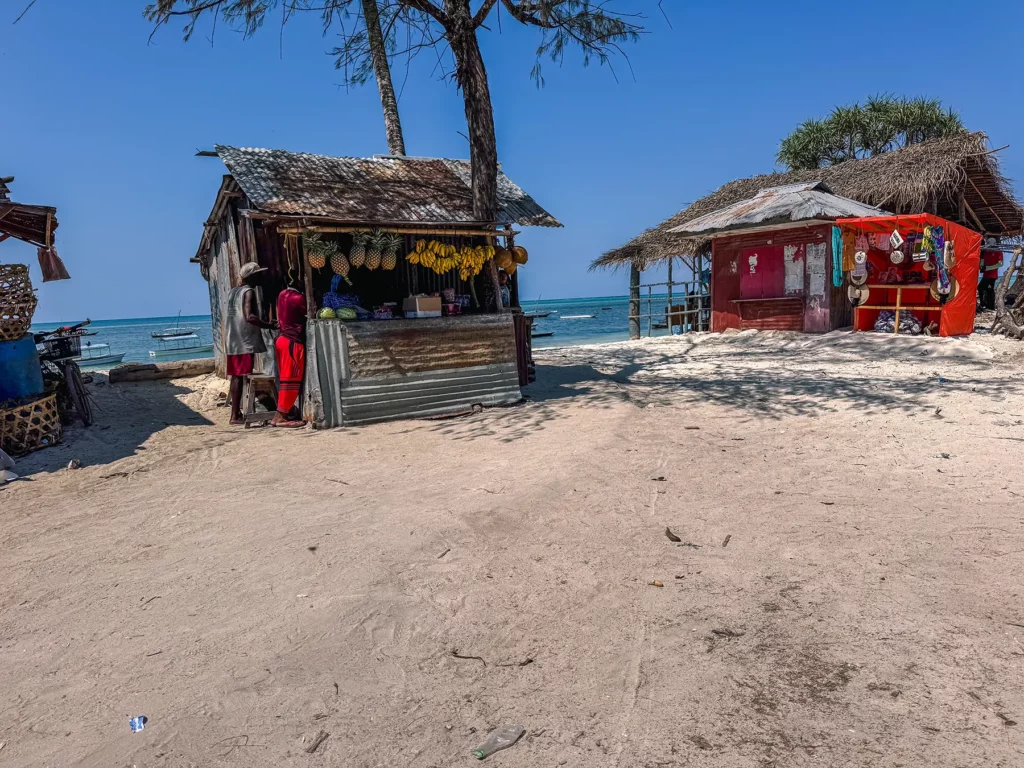
The Legend of the Zanzibar Leopard
Zanzibar was once home to one of the most elusive leopard species: the Zanzibar leopard.
Although there are occasional reports of sporadic and unconfirmed sightings, the last confirmed sighting was in the 1980s, so the leopard is presumed to be extinct.
Having evolved in isolation from other leopard subspecies at the end of the last ice age, approximately 10,000 years ago, when rising sea levels and tectonic plate movement separated Zanzibar from the African mainland, the Zanzibar leopard was once the island’s largest predator.
The local conditions led to it being a smaller leopard than its larger African cousins. Still, habitat loss and human-animal conflict, inflamed by the superstition that witches trained them to kill people, resulted in their demise, and they were hunted to extinction.
In 2018, American adventurer Forrest Galante briefly captured what he claimed to be a Zanzibar leopard on film in the Jozani Chwaka Forest. Although a cat is certainly visible in the photo, most scientists remain sceptical of its true identity.
The only Zanzibar leopard you’ll likely see here today is the mounted specimen on display in the Zanzibar Museum.
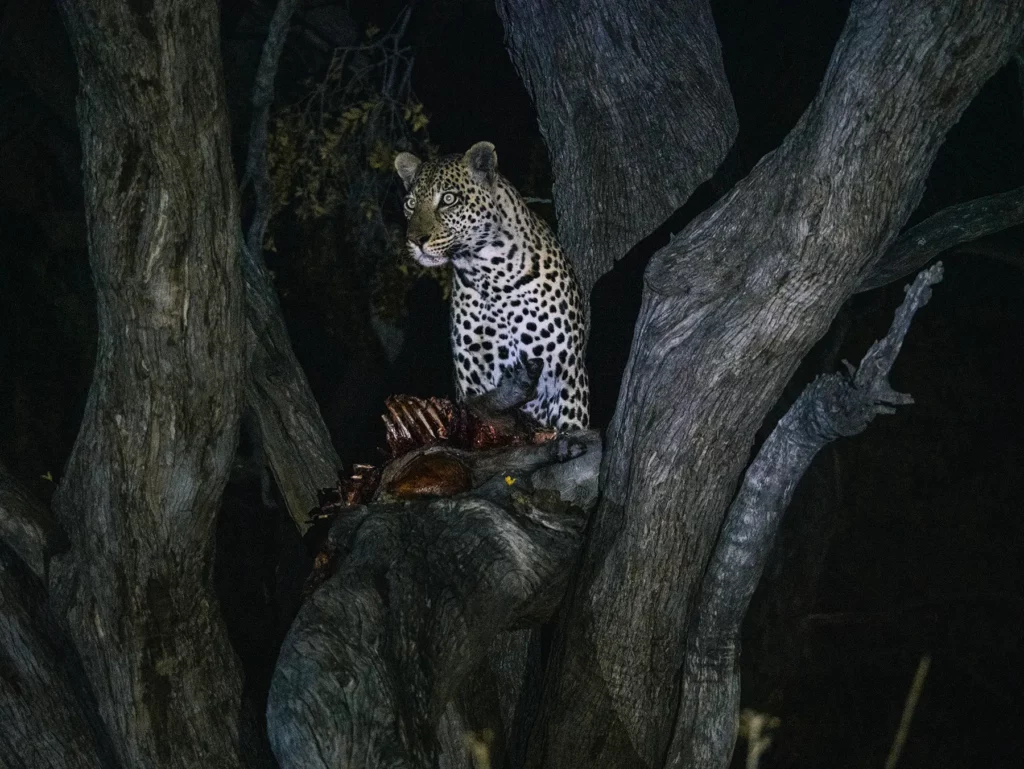
Wildlife Conservation in Zanzibar
Wildlife conservation is of ongoing importance in Zanzibar, both on land and underwater.
In addition to the efforts made by Jozani National Park, Kiwengwa-Ponge Forest Reserve, and the Ngezi Forest Reserve, numerous initiatives continue to preserve Zanzibar’s natural environment.
One of the best success stories happened at Mnemba Island. Until recently, this underwater paradise and its marine inhabitants were in critical danger due to overfishing, overtourism, and warming waters caused by climate change.
To make matters worse, after conventional fishing methods failed to produce good catches, locals started dynamiting the reefs, further exacerbating the problem.
Fortunately, a hotel group and the local communities collaborated to help save the reef. They took many innovative measures, including planting steel mesh tables studded with pieces of coral into the seabed.

They also extended the reefs with stone structures to create nursery sanctuaries and encourage marine growth. Before long, fresh corals began to grow, welcoming more fish back to the area.
To avoid the same issues reversing their efforts, they created regulations to protect the reef from future damage, such as limiting the number of tourist boats and prohibiting fishing in vulnerable areas. Fishermen could also train as rangers, thus helping to police the reserve while earning a livable income.
Within a surprisingly short period, the dying reefs began to come back to life, reminding us that when given a chance, nature can heal.

Embark on the Safari & Beach Holiday of Your Dreams
Save time and ensure an incredible safari experience by getting quotes from my recommended local safari companies
I’m here to make booking your perfect safari quick, easy and risk-free.
Join the rapidly growing tribe of over 1,000 travellers who’ve booked their dream safari using my insider tips and recommendations.
It takes under 60 seconds to fill out the form and in under 48 hours you will receive multiple, no-obligation proposals from my favourite local tour operators with glowing online reviews.
Get your free no-obligation safari quotes and my top safari tips and recommendations
A Brief History of Zanzibar
Zanzibar’s strategic location along the Indian Ocean trade routes made it a vital commercial hub for centuries, attracting merchants from across the globe. Arab and European influences are still visible in Zanzibar’s culture and architecture today, especially in Stone Town.
Here’s a very quick overview of Zanzibar’s history:
Zanzibar’s First Permanent Settlers
Centuries before traders set eyes on Zanzibar, the first known permanent settlers were Bantu-speaking Africans from the mainland, who arrived around 1000 AD. However, archaeologists believe humans have likely been in Zanzibar for over 20,000 years.
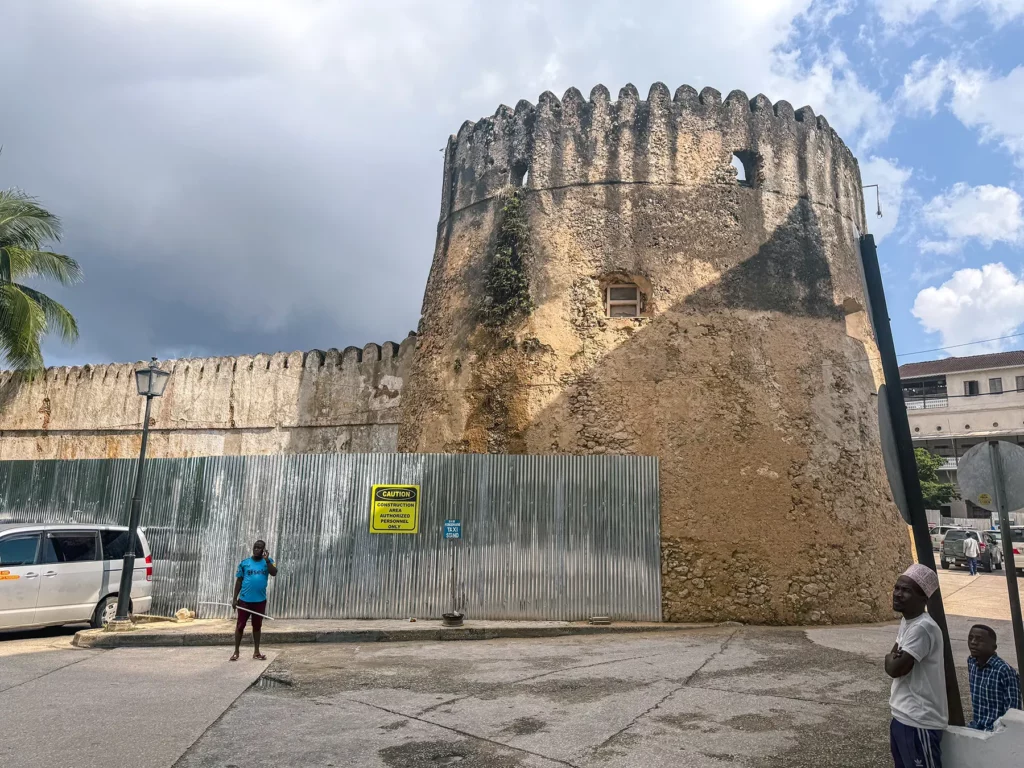
Traders Arrive in Zanzibar
Second, came the Persian traders, who arrived in the 1st century AD. Many eventually settled here, introducing Persian customs, styles, and Islam to the locals until 1499, when the Portuguese took control of Zanzibar.
Over the course of around 200 years, the Portuguese introduced Christianity and European trade practices into the mix. However, they were eventually pushed out by the Omani Arabs in 1650, who transformed the island into a key hub for trading cloves and ivory, and the Sultan of Oman moved his capital to Zanzibar. Meanwhile, Indian traders also settled here and became a major commercial force.
The East African Slave Trade
During the Omani rule, Zanzibar became a hub of the East African slave trade. Tragically, thousands of enslaved people were brought from the mainland to work on spice plantations or be sold abroad.
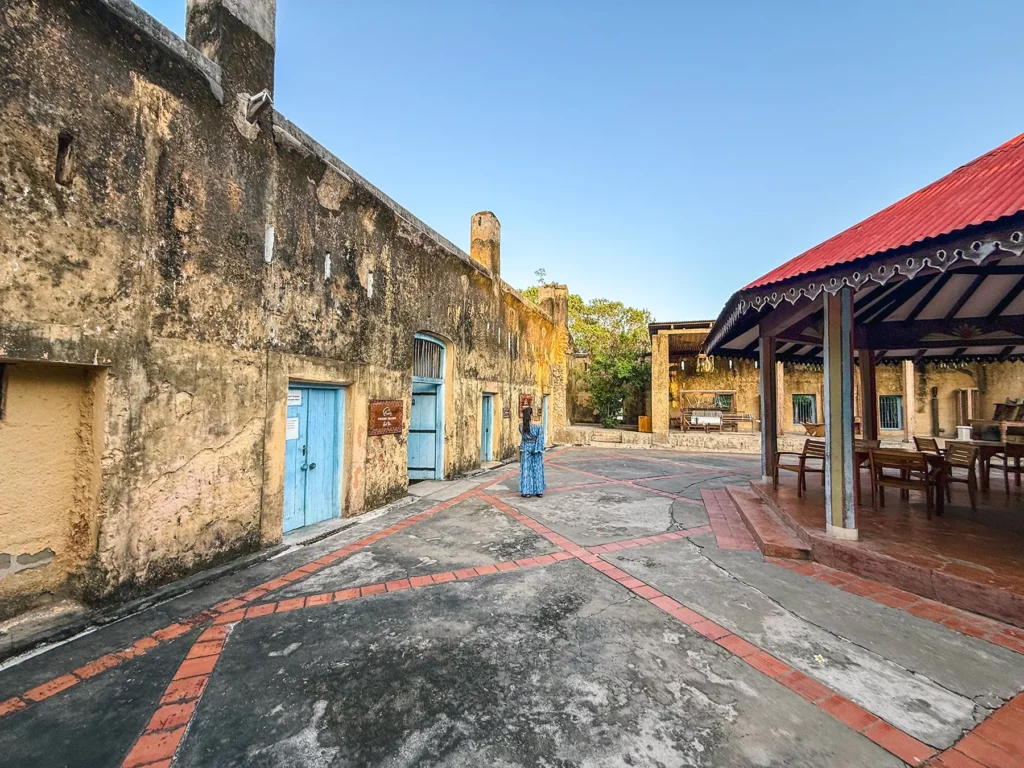
The historic Stone Town became the largest slave market in East Africa. Today, the Anglican Cathedral in Stone Town stands on the site of the former slave market, which was once the largest slave market in East Africa.
The Shortest War in History
Soon after Zanzibar became a British protectorate in 1890, the Anglo-Zanzibar War broke out in 1896. However, it only lasted 38 minutes, making it the shortest war in history. Britain remained heavily influential over the island.
A year later, in 1897, slavery was officially abolished.
Independence
Zanzibar gained independence when Britain ended the protectorate in December 1963. Just a month later, the ruling Arab Sultan was overthrown during a violent revolution led by African insurgents.
That same year, Zanzibar united with Tanganyika to form Tanzania, and in the decades since, it has evolved into a peaceful destination better known for its culture, history, and beaches than its tumultuous past.
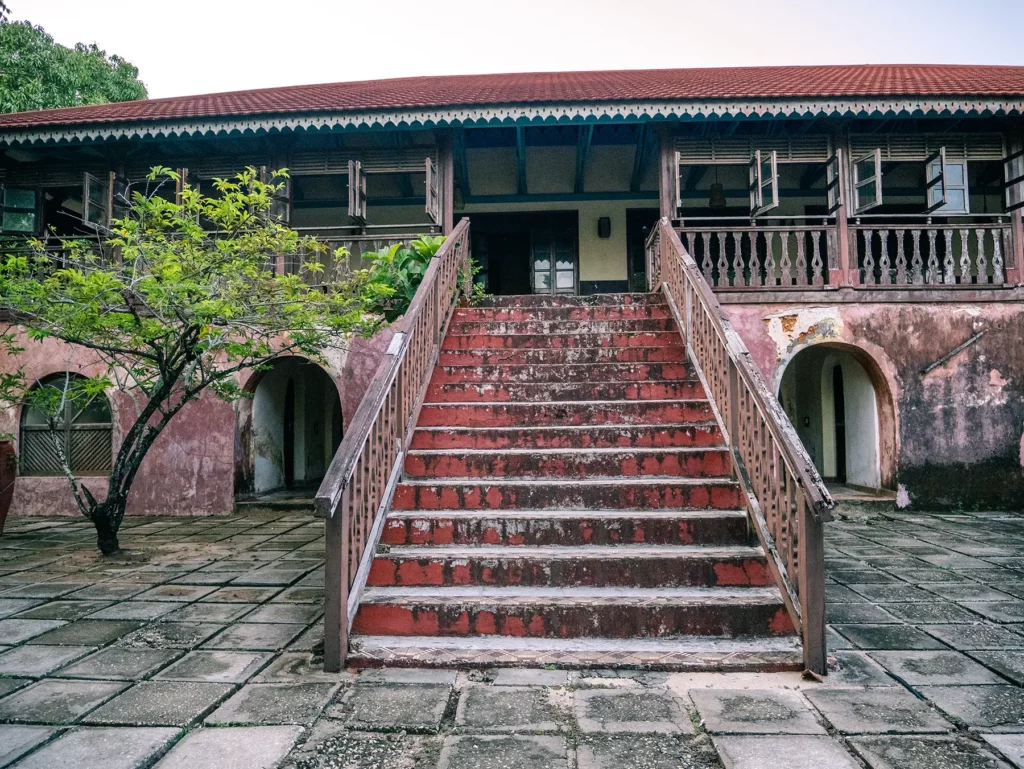
Weather & Climate
Zanzibar’s temperatures are generally consistent throughout the year with the average temperature ranging from 25°C to 32°C (77°F to 90°F).
The island has two dry seasons (June – October and mid-December – mid-March) and two rainy seasons (mid-March to – May and November – mid-December).
Because the islands lie at sea level, night temperatures rarely drop below 70°F (21°C).
Daytime temperatures remain relatively constant throughout the year, with minimal variation between summer and winter.
February is the hottest month of the year with average daytime temperatures around 31–32°C (88–90°F) and high humidity, whilst July is generally the coolest month of the year with temperatures average typically around 25 and 26°C (77–79°F).
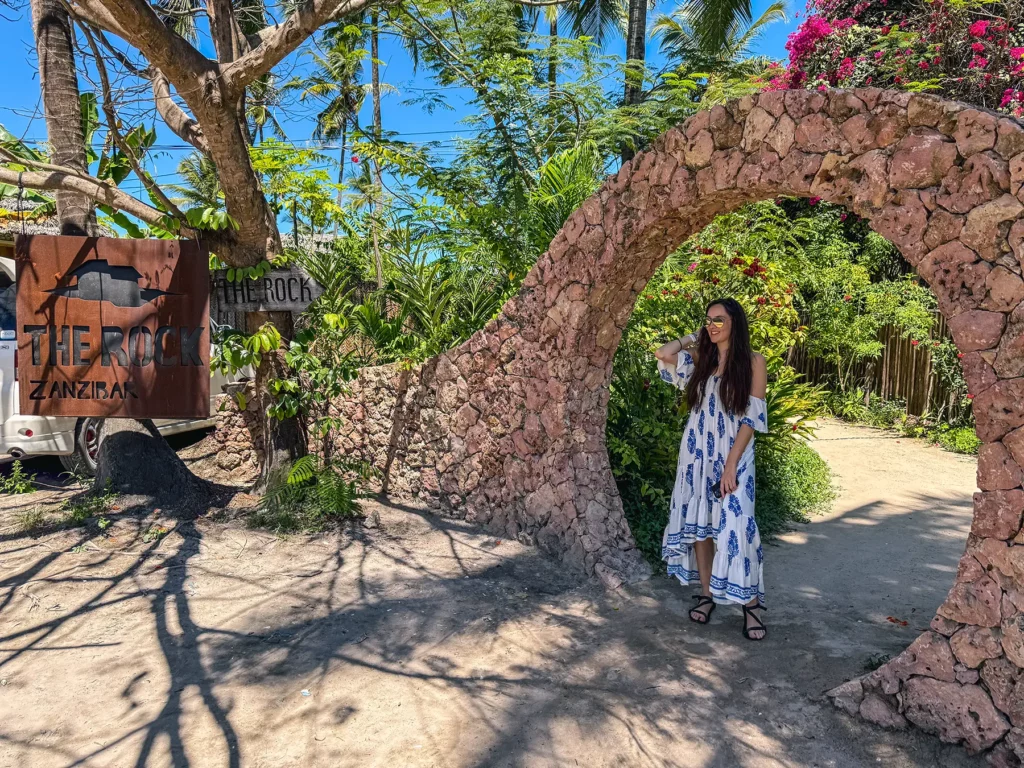
When is the Best Time to Visit Zanzibar?
Like the rest of Tanzania and most of East Africa, Zanzibar experiences two dry and two wet seasons.
Jump more information on each of the seasons using the links below.
The Long Dry Season (June – Mid-October)
The Short Dry Season (Mid-December – February)
The Short Rainy Season (Mid-October – Mid-December)
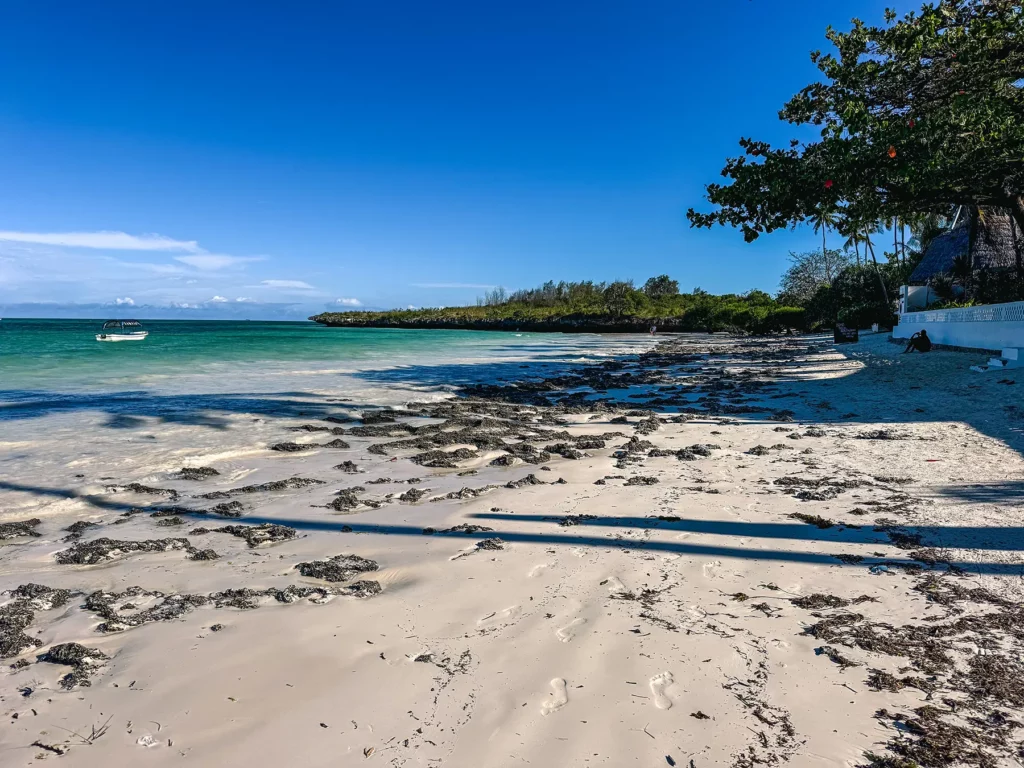
The Long Dry Season (June – October)
The long dry season is by far the best time to visit Zanzibar. It also coincides with the best time to go on safari in Tanzania, when you can witness the Great Migration in the Serengeti, making it the perfect time for a combined Tanzania bush and beach holiday.
Quick Facts
Weather: Temperatures remain pretty mild throughout the day during this period (25–28°C, 77–82°F), with mostly sunny skies, little chance of rain, and calm seas. It is perfect for all water and beach sports and activities.
Wildlife / Marine life: Wildlife and marine life are pretty constant throughout the year. June and July fall within the turtle nesting season, when masses of green turtles arrive to lay their eggs on several beaches across the archipelago.
Prices: Prices are also at their highest during this time of year.
Snorkelling / diving: Sea conditions are generally good. Scuba divers should carefully plan open-water dives, as some offshore waters can get rough.
Unique features and events: June and July are a great time to witness turtle hatchlings emerge from the sand and take their first steps, dashing across the beach to get into the water.
If you’re anywhere near the village of Makunduchi, in the southeastern part of Zanzibar, a unique festival called Mwaka Kogwa takes place there around July and August to celebrate the Persian New Year.
For the sailing fraternity, a regatta between Zanzibar and the mainland takes place in August and lasts several days. The Dar es Salaam Sailing Club organises the Tanzacat Regatta & Zanzibar Raid.
Pros of The Long Dry Season (June – October)
- Fewer mosquitoes
- Mild temperatures
Cons of The Long Dry Season (June – October)
- Busiest time of the year, and hotels and beaches can get slightly crowded
- Highest prices
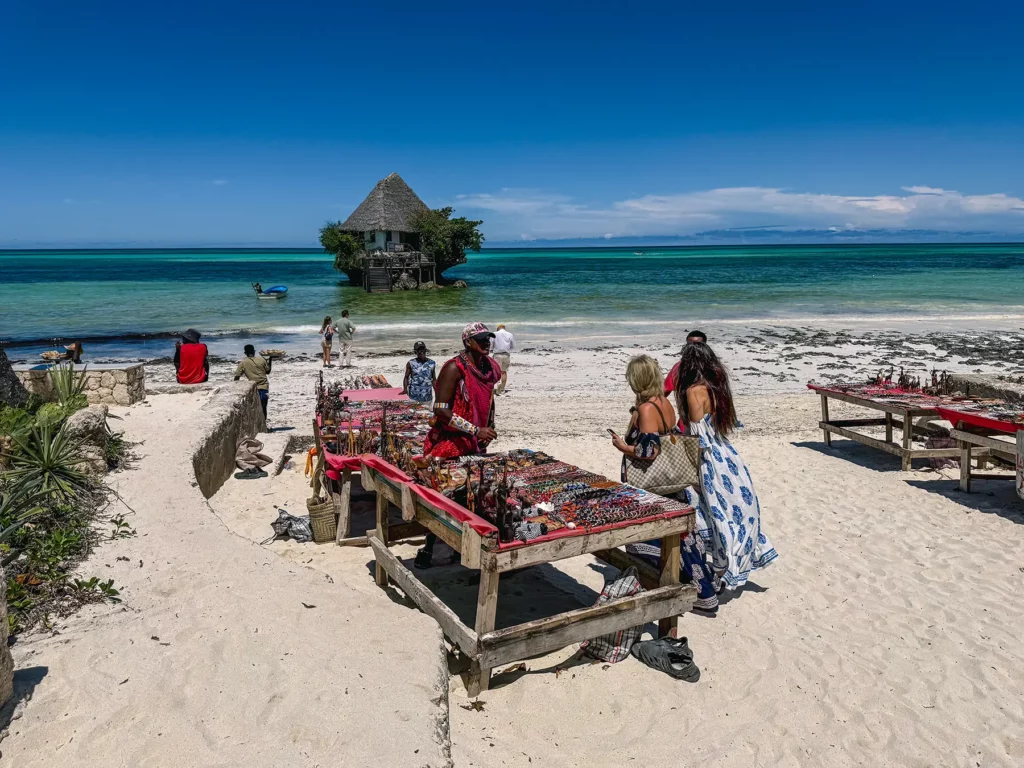
The Short Dry Season (December – February)
These months are also a good time to visit Zanzibar, although you may have to contend with a few days of higher temperatures and humidity. That said, this season is primarily dry.
Quick Facts
Weather: This is the hottest time of the year with temperatures typically in the region of 30–32°C (86–90°F). February is typically the hottest month, potentially reaching temperatures of 95°f (35°c).
Fortunately, the northeastern breeze coming off the sea offers some welcome relief and helps flatten the waves off the west coast. Chances of rain are minimal, but you may still experience a light afternoon shower or two.
Wildlife / Marine life: A great time for spotting migratory birds and local species in Jozani Forest and mangrove areas. February is also a great time of year to see green turtles nesting. Notable nesting sites include Mnemba Island, Matemwe, and Nungwi beaches.
Prices: Since this is a shoulder season, prices are slightly cheaper than during peak season, but not as low as in the off-season.
Snorkelling / diving: Watersports activities remain perfect, with sea temperatures reaching up to 84°F (29°C).
Unique events: In February, the Sauti za Busara Festival takes place in the historic town of Stone Town. The festive rhythms of African jazz and pop music, along with tons of local food, set the town into a constant buzz. For a few days, Stone Town transforms into a massive cultural celebration.
Pros of The Short Dry Season (December – February)
- Hotels and beaches are quieter than the long rainy season
Cons of The Short Dry Season (December – February)
- Hot weather and high humidity

The Short Rainy Season (October – November)
You should expect some rain during this period, but it will usually be light and mainly in the early mornings and late afternoons. Crowds begin to dwindle, making the island feel more tranquil.
Quick Facts
Weather: Temperatures and humidity levels begin to rise with temperatures hovering around 27–30°C (81–86°F), and rainfall becomes more frequent.
Wildlife / Marine life: This is the beginning of bird season, which can last until April. During this time, most birds are busy courting and preparing their nests, and many species begin arriving from the northern hemisphere.
Prices: The prices of accommodation and tours can be less than in the dry season.
Snorkelling/diving: The rains are typically light and, to be honest, quite welcome, but they may affect visibility or ocean conditions in some places. It’s still a great time of year to snorkel and dive.
Unique features: Birding season is approaching its peak, making it a good time for birders to visit.
Pros of The Short Rainy Season (October – November)
- Hotels are cheaper and quieter vs peak season
- Beaches are less crowded
- Strikes the balance between being peaceful whilst still having pretty good weather
Cons of The Short Rainy Season (October – November)
- More mosquitos than the dry seasons and there is a likelihood of rain in the early mornings and late afternoons
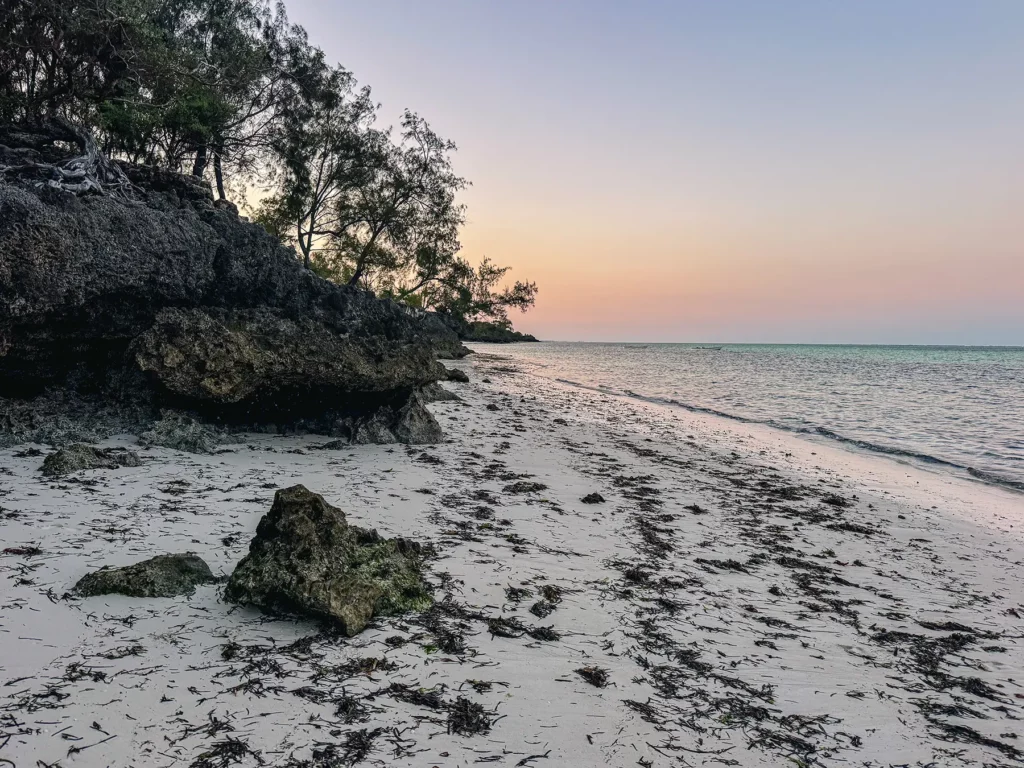
The Long Rainy Season (March – May)
Due to the heavy nature of the rains, this season is not a good time to visit Zanzibar if you want to do sightseeing, chill on the beach, and experience the island at its best. Many hotels close altogether for this period.
Quick Facts
Weather: Temperatures hover at around 28–31°C (82–88°F) and the island receives over 30 inches (800 mm) of rain during these three months.
Wildlife / Marine life: The wildlife and marine life remain abundant, but sightseeing and diving conditions are not usually good here.
Prices: Prices are at their lowest at this time of year.
Snorkelling/diving: Possible but not recommended, as visibility is significantly reduced.
Pros of The Long Rainy Season (March – May)
- Hotels, resorts, beaches and parks are quiet
Cons of The Long Rainy Season (March – May)
- Many shops and resorts shut down due to the excessive rain and lack of tourists
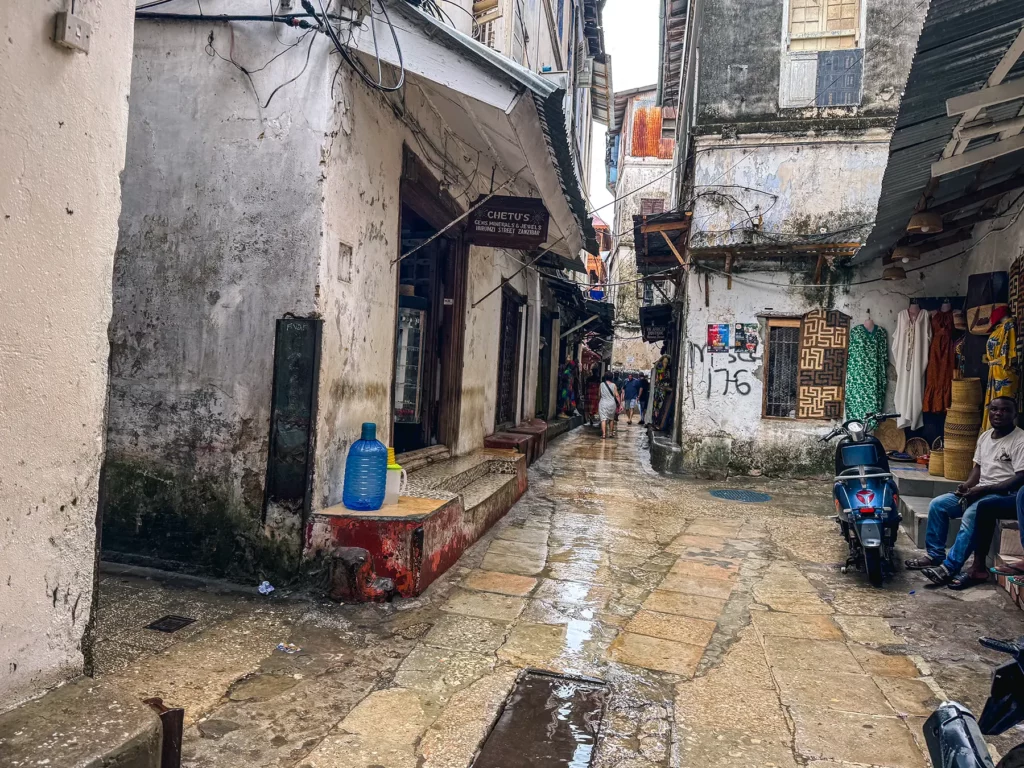
How Many Days Should I Spend in Zanzibar?
You should spend a minimum of three days in Zanzibar and a week if you have time.
If, for instance, you just want to spend some time relaxing on the beach in between or after a safari on Tanzania’s mainland, three days may be enough. You can see my Tanzania and Zanzibar itinerary for ideas.
However, at least seven days may be necessary to explore the whole island and some of the smaller islands offshore, as well as to have time for relaxing.
If you have plenty of time, take a look at my 2-week Tanzania and Zanzibar itinerary.
My recommendation: I would personally recommend a week in Zanzibar as a good option for most people – this is how long I would normally spend there.
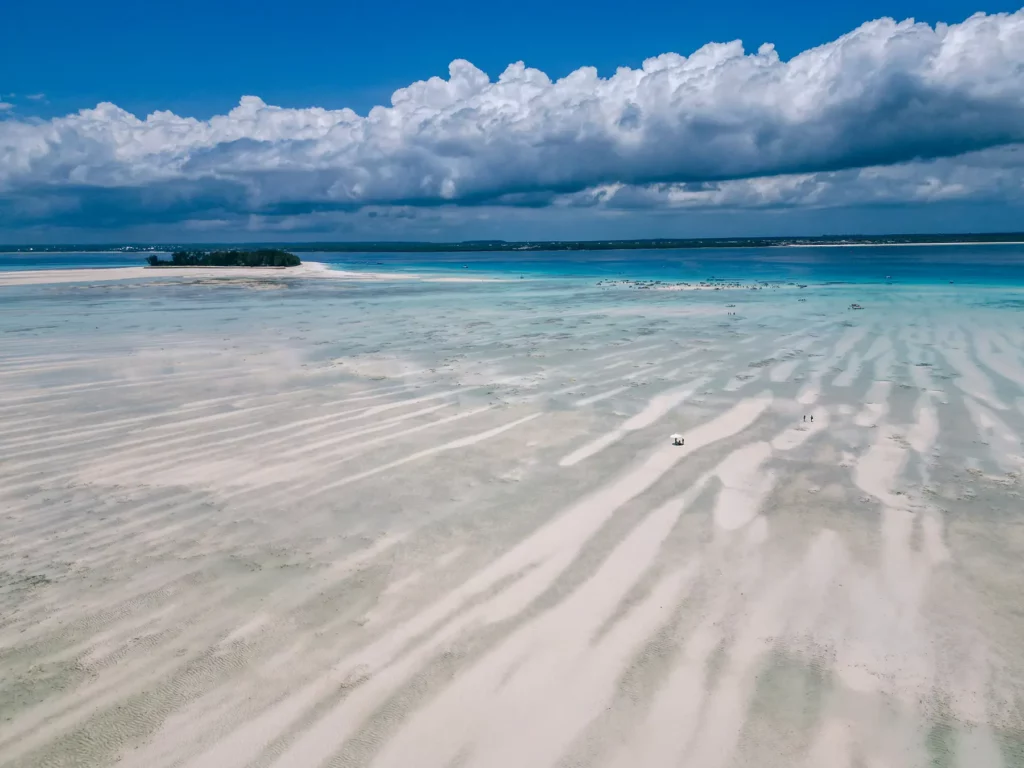
List of the Zanzibar Archipelago Islands
Don’t be deceived by the small size of the Zanzibar Archipelago Islands, as there is so much to see, do, and experience in this little corner of paradise.
In addition to the two larger islands, organised day tours can take you to dozens of smaller, primarily uninhabited islands and sandbanks.
Below, I’ll cover the key islands, including their pros and cons, so you can decide which ones to include in your itinerary.
You can jump to more information on each Zanzibar island using the links below.
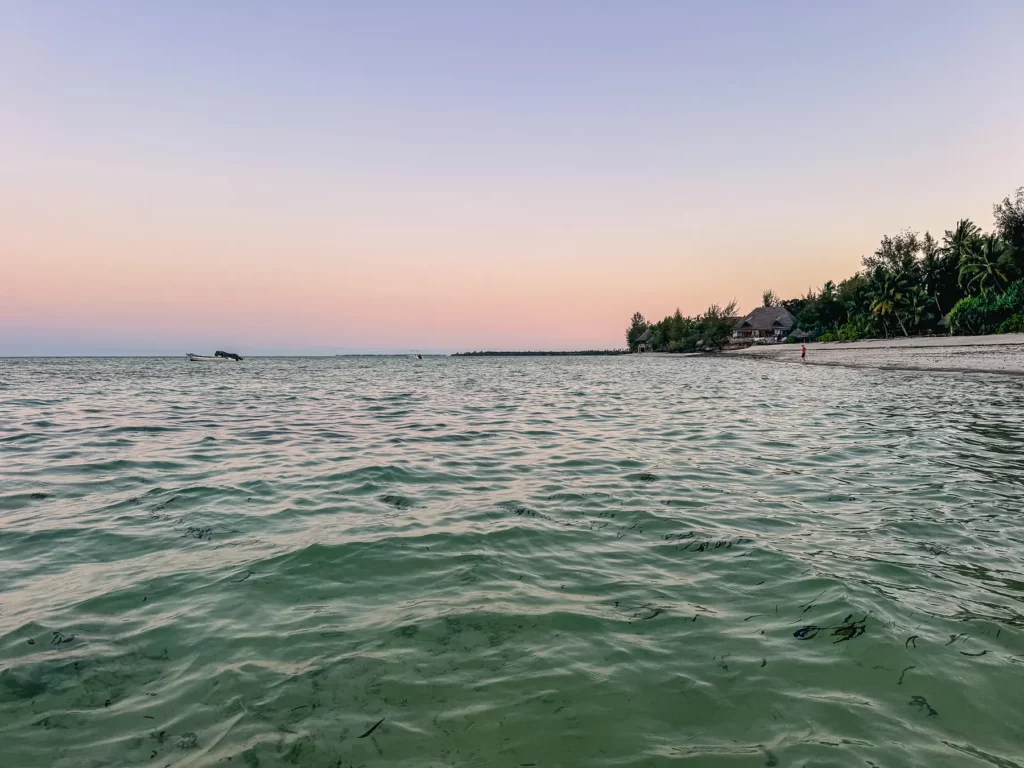
Unguja Aka Zanzibar Island
Quick Facts:
Size: 55 miles (90 km) long and 16 miles (25 km) wide at its widest point
Airports/ Airstrips: Abeid Amani Karume International Airport (ZNZ)
Popular areas: Nungwi, Kendwa, Paje, Jambiani, Stone Town, Matemwe
Good to know: The main island of the Zanzibar Archipelago
Unguja is the biggest and main island of the archipelago, and it is usually referred to as Zanzibar. Zanzibar City is its capital, including the old and historic Stone Town, a must-visit destination.
It can be reached by air from domestic and international airstrips and airports. Here are some examples below:
| Departure Location | Airport Name | Code |
|---|---|---|
| Arusha, Tanzania | Arusha Airport | ARK |
| Near Arusha, Tanzania | Kilimanjaro International Airport | JRO |
| Various Parks, Tanzania | Safari Airstrips (e.g. Seronera, Kogatende) | – |
| Dar es Salaam, Tanzania | Julius Nyerere International Airport | DAR |
| Nairobi, Kenya | Jomo Kenyatta International Airport | NBO |
| Doha, Qatar | Hamad International Airport | DOH |
| Amsterdam, Netherlands | Schiphol Airport | AMS |
| Dubai, United Arab Emirates | Dubai International Airport | DXB |
| Istanbul, Türkiye | Istanbul Airport | IST |
| Addis Ababa, Ethiopia | Bole International Airport | ADD |
| Muscat, Oman | Muscat International Airport | MCT |
| Frankfurt, Germany | Frankfurt am Main Airport | FRA |
| Zurich, Switzerland | Zurich Airport | ZRH |
It can also be reached by ferry from Dar es Salaam, which takes approximately 2 hours. Although I don’t personally recommend the ferry option due to safety issues due to overcrowding in the past.
Long white sandy beaches fringed with tall swaying palm trees and a crystal turquoise ocean bursting with marine life, ideal for every type of water-related activity.
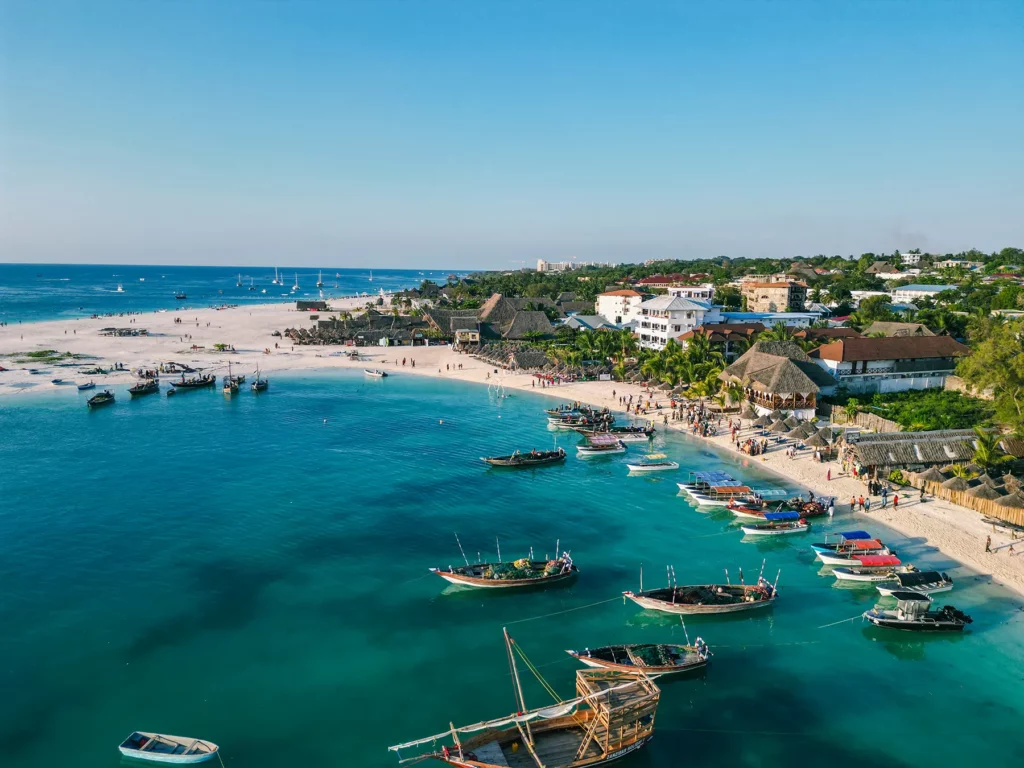
Pros of Unguja Aka Zanzibar Island
- Beautiful white sand beaches with turquoise waters, ideal for swimming, sunbathing, and watersports
- Historic Stone Town, a UNESCO World Heritage Site, which is rich in Swahili, Arab, Indian, and colonial history
- Excellent snorkelling and diving at Mnemba Atoll, Chumbe, etc.
- International airport
- Wide range of accommodations
- Jozani Forest is great for a walking safari to view primates
Cons of Unguja Aka Zanzibar Island
- Popular spots like Nungwi and Stone Town can get crowded in peak season
- Tidal Swings on East Coast: Can limit swimming at certain times
- Seasonal Rains (Mar–May) disrupt activities
- Less wildlife compared to Tanzania’s mainland
Pemba Island
Quick Facts:
Size: 40 miles (63 km) long and 12 miles (18 km) wide
Airports/ Airstrips: Pemba Island
Popular areas: Spice farms, coral reefs, Jambagome Ruins
Good to know: Pemba is the second-largest island in the Zanzibar Archipelago, about 30 miles (48 km) north of Unguja.
While Unguja is more developed and a popular tourist destination, Pemba remains relatively undiscovered and has only three hotels.
Pemba is accessed by air by several charter airlines, with most visitors flying from Zanzibar or Dar es Salaam. It is also accessible by ferry from Zanzibar, using the Azam Marine ferry, but the crossings can sometimes be a bit rough.
Despite its diminutive size, Pemba produces 70% of the world’s clove supplies.
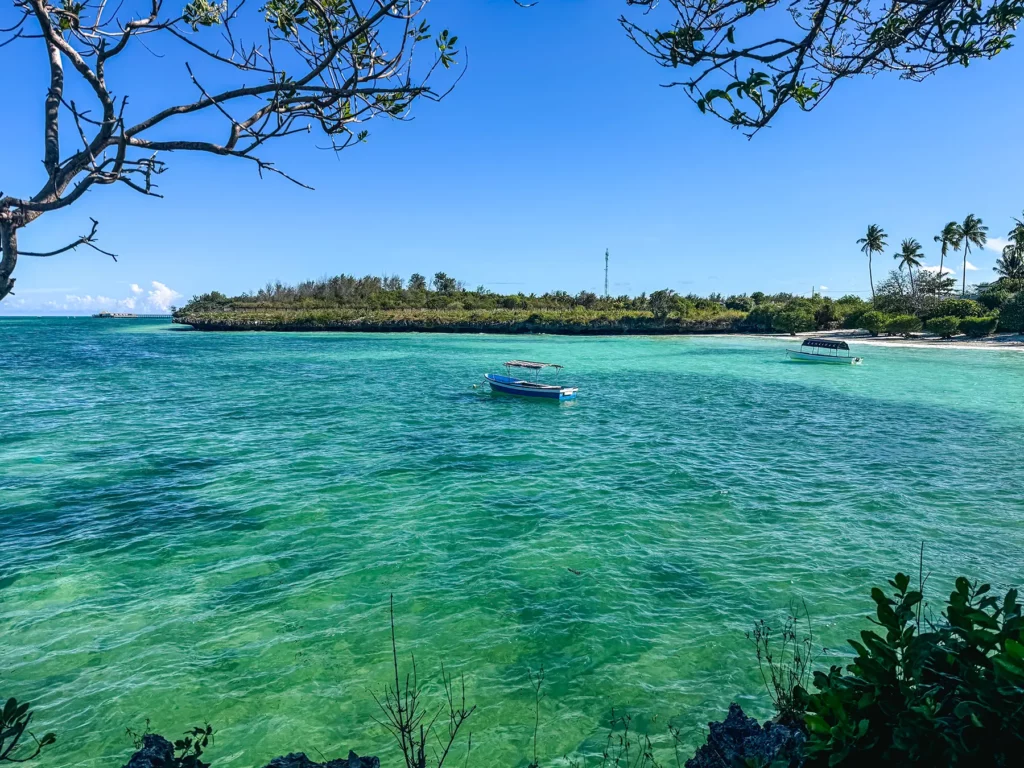
Pros of Pemba Island
- Tours of clove plantations
- Brilliant snorkelling and diving
- Being just under the equator, it is mild and consistent almost all year round (apart from March – May)
- It is a nature lover’s paradise, consisting of lush hills and forests, mangrove-fringed lagoons, hidden beaches, quaint coves, tidal sandbanks, small villages, clove plantations, and ancient ruins
- Very quiet and ideal for seclusion
Cons of
- Fewer direct flights than Tanzania Island
- Some marine and forest areas have access restrictions or require permits
- During the long rainy season, the island receives extremely heavy rainfall from March to May, forcing hotels to shut down
- Less wildlife compared to Tanzania’s mainland
- Limited accommodation options
- Little in the way of nightlife or resort-style amenities
Mafia Island
Quick Facts:
Size: 30 miles (49km) long and 10 miles (17km) wide
Airports/ Airstrips: Mafia Airport
Popular areas: Mafia Island Marine Park, Chole Bay, Juani Island
Good to know: Although not strictly speaking part of the Zanzibar Archipelago, Mafia Island is often associated with the region.
Mafia Island is slightly smaller than Pemba and is located approximately 80 miles (130 km) south of Zanzibar, lying 10-12 miles (15-20 km) off the east coast of Africa. It is also one of the only three inhabited Tanzanian islands, with a population of around 65,000 people.
You can fly from Zanzibar Island (Abeid Amani Karume International Airport, ZNZ) to Mafia Island (Mafia Airport, MFA).
You can also reach Mafia Island by flying out of Julius Nyerere International Airport in Dar es Salaam, or by sea, taking the government-run ferry from the harbour.
If you thought that life’s clocks run slow in Zanzibar, they become even slower here, with its laid-back atmosphere and scenic views perfect for relaxation.

Pros of Mafia Island
- Mafia Island Marine Park (MIMP) is located off the south-western coast of Mafia Island and includes Chole Bay, which is the island’s main diving and snorkeling area
- Some of the beaches of Juani Island on the southern end of Chole Bay are favourite turtle hatchling areas
- It is possible to swim with whale sharks, especially during November and December
- Humpback whales pass through Mafia Island’s waters during September and October
- Being closer to Tanzania’s southern circuit game reserves, like Nyerere and Ruaha National Parks, it is possible to combine a bush and beach break
Cons of Mafia Island
- Few direct flights and the ferry service may not be very reliable
- Very quiet island with limited dining, entertainment, and shopping (you may actually consider this a pro!)
- Limited accommodation options
- Marine park fees apply, and some conservation rules such as dive restrictions
Other Smaller Islands
The Zanzibar Archipelago includes many smaller islands, tiny islets and sandbanks. They are all uninhabited, except a select few, which are privately owned. Staying on any of these islands is pretty expensive, but some of them can be visited on organised day tours as well, arranged by tour operators and hotels on Zanzibar.
Among the best small islands are:
- Mnemba Island, particularly well-known for diving and snorkelling. The island itself is only for hotel guests but day trips can visit the reefs around the island.
- Tumbatu Island, a narrow strip stretching vertically for about 6 miles (10 km) with a small population
- Chumbe Island, a densely wooded island surrounded by secluded beaches and fantastic snorkelling coral reefs.
- There are also dozens of tiny, completely isolated islets and sandbanks scattered around Zanzibar, and tours are available for those looking for a uniquely private island experience.
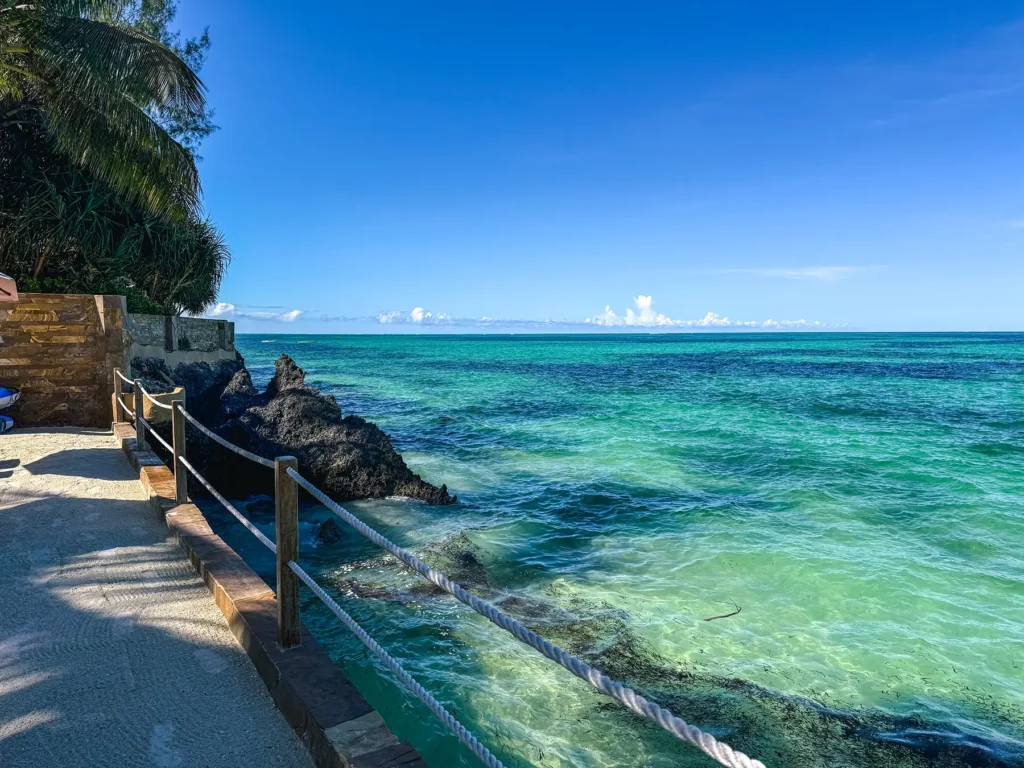
Things to do in Zanzibar
Although most people come to Zanzibar to enjoy its glorious beaches or to snorkel and swim in its inviting turquoise waters, it’s only when they arrive that they realise just how much more there is to do, see, and experience.
Here are just a few things to do in Zanzibar.
You can jump to more information on each of the things to do in Zanzibar using the links below.
Take a Boat to Prison Island aka Changuu Island
Visit Stone Town
First and foremost, visiting the historic Stone Town is a must-do.
Within this one square kilometre of intricately carved doors and small winding streets, you will sense the ancient cultures of Persia, Arabia, Asia, Africa, and Europe in the architecture, monuments, aromatic spicy aromas, and, of course, the food and people.
Its rich history has earned Stone Town UNESCO World Heritage Site status in 2000.
A good idea would be to take a guided tour through Stone Town, which takes you to all its attractions, historic sites, markets, eateries, and interesting shops.
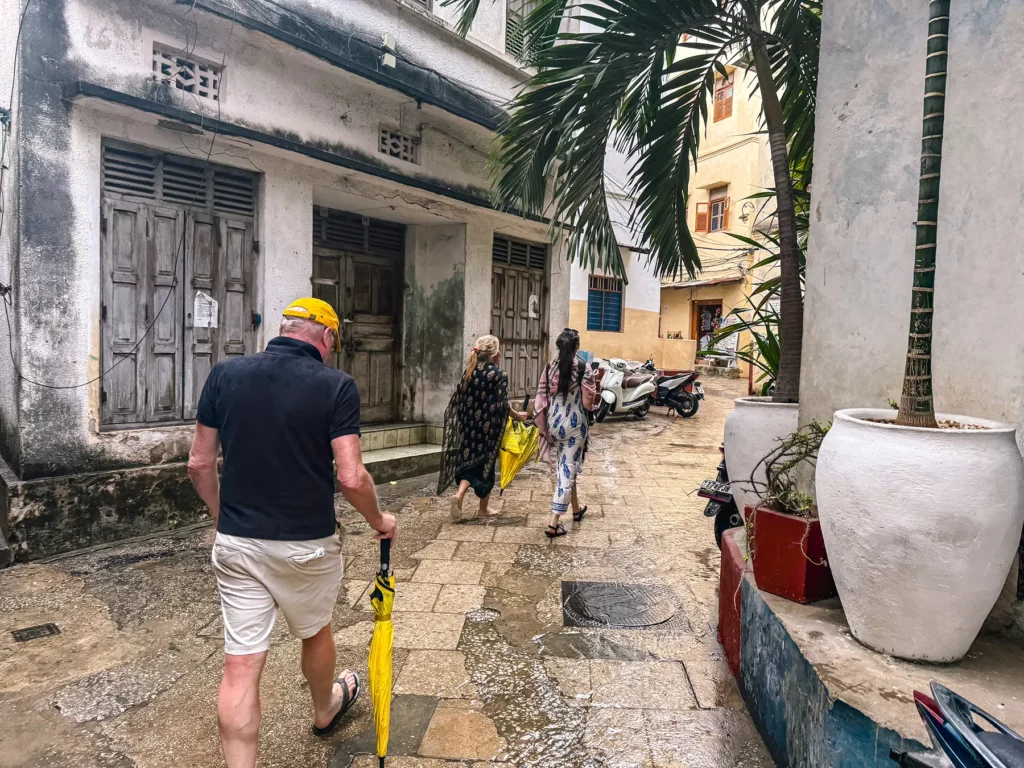
Among the most famous landmarks, you will come across an imposing 300-year-old fort and an elaborate mosque built by the Omani Arabs, a large palace built by the Sultan, a Catholic Cathedral built by French missionaries, and an Anglican Cathedral built by the British, all on the site where the dreaded slave market once stood.
You will also visit the dungeons where enslaved people were kept awaiting ‘export’ and the monument depicting how they were presented to their potential buyers and masters, chained by their necks.
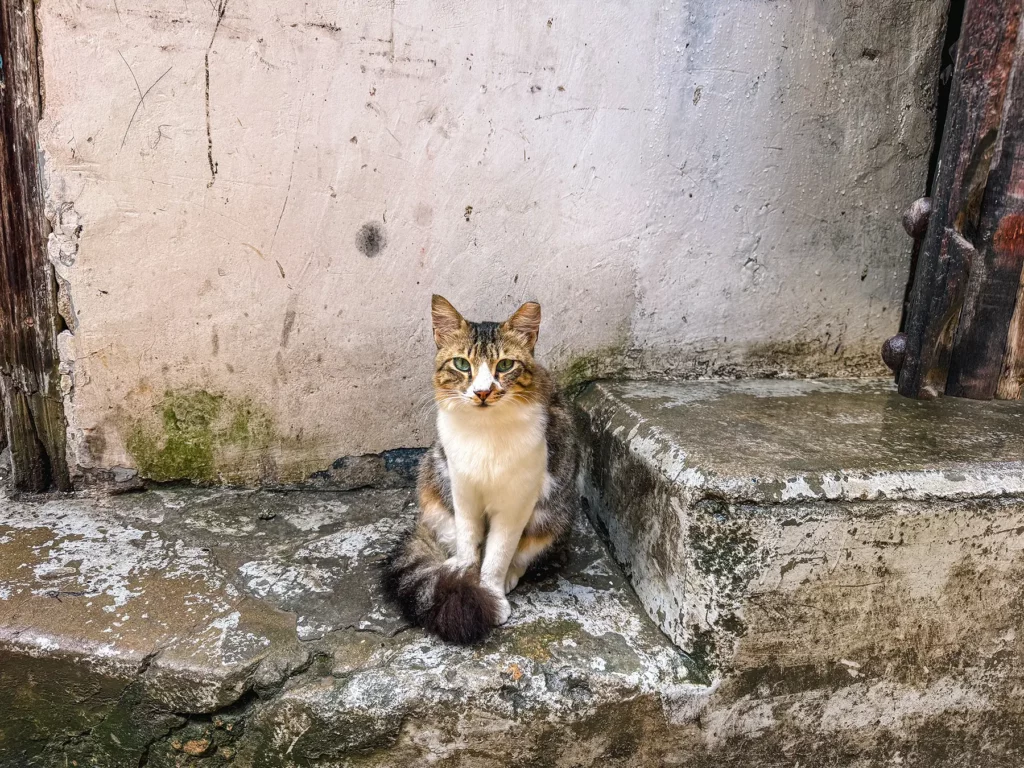
And if you’re a rock fan, you can visit the house where Freddie Mercury, the charismatic and legendary Queen frontman, once lived before coming to England.
Stop at the famous Jaws Corner for a cup of coffee in the heart of Stone Town and listen to the banter and arguments of the locals as they gather here every day to discuss every topic under the sun, from today’s Premier League games to world politics.
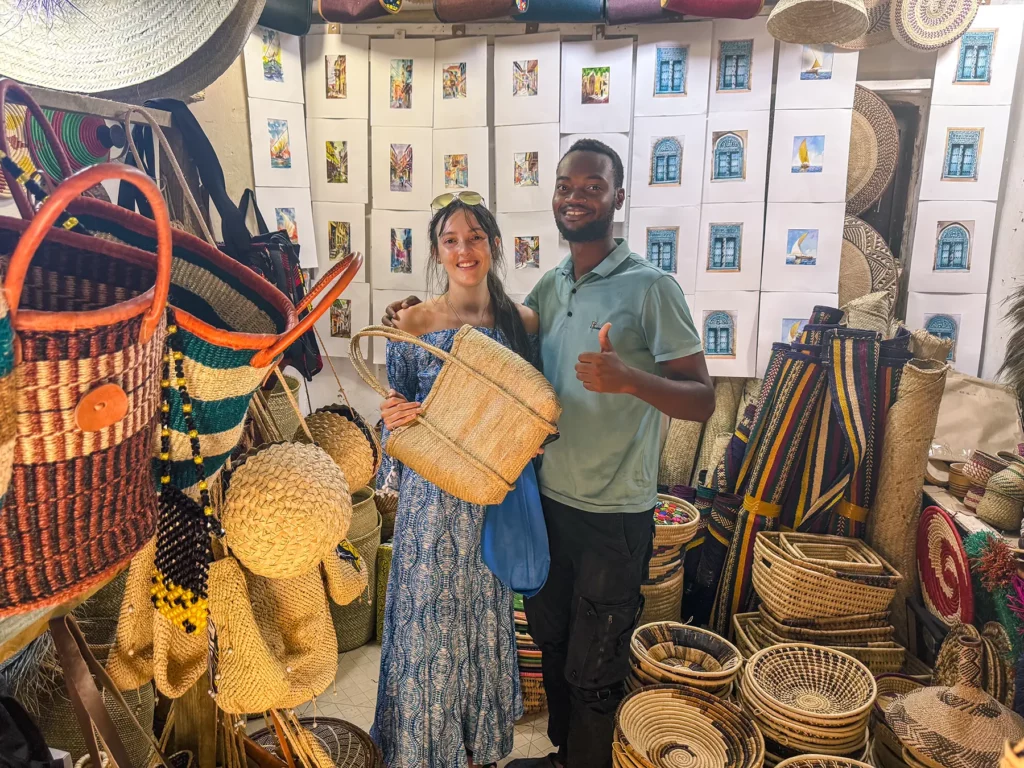
You will instantly recognise this dilapidated, colourful courtyard, sitting at the junction of two alleyways, by its mural of ‘Bruce’, the infamous shark from the 1970s blockbuster ‘Jaws,’ though the film has no direct connection to Zanzibar.
From Stone Town you can catch a boat to Prison Island to see the Giant tortoises which takes about 20 minutes.
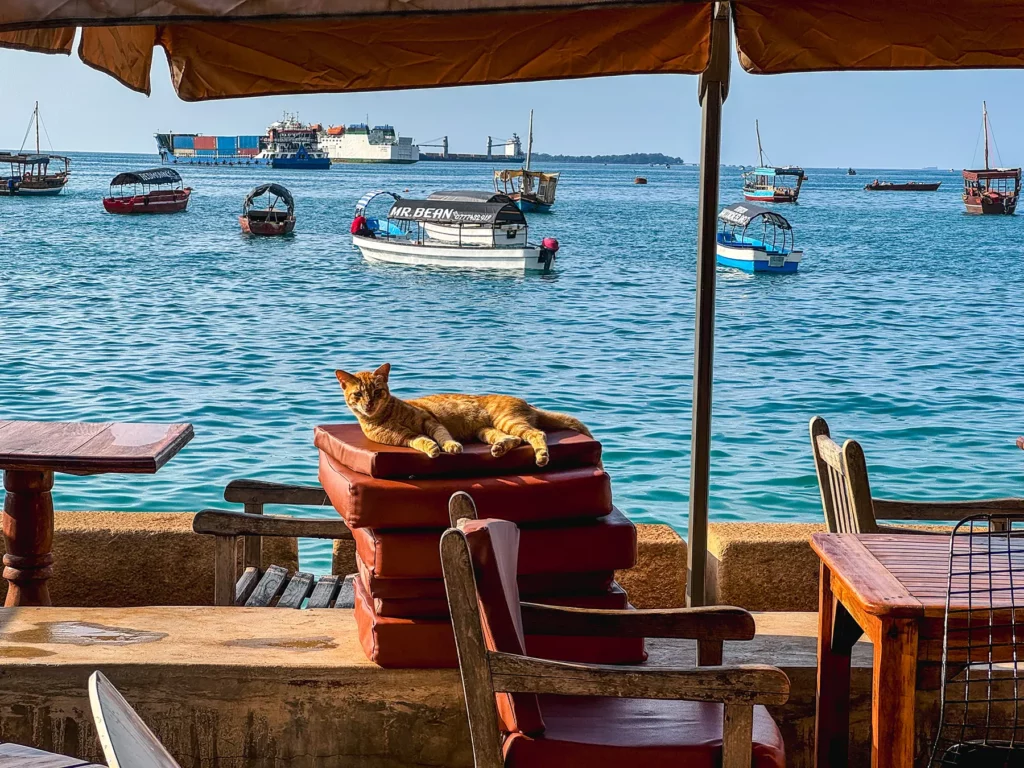
Pros of Stone Town
- Small enough area to explore in one day, either independently on foot or a guided tour
- The ideal place to learn about the history of Zanzibar, as Stone Town was a key hub in the historic spice trade and later the slave trade.
- Lots of historical things to see including architectural landmarks, historic sites, including the dungeons, and Freddie Mercury’s house.
- Full of character, from the winding streets, multicultural influences, and unique attractions
- Good for clothes shopping and eating local food
Cons of Stone Town
- Can get busy in peak periods
- Potential to get hassled by shop vendors, which can feel overwhelming. Although I didn’t have too many issues myself.
My Personal Experience in Stone Town
Stone Town is a charming and characteristic old town, and I loved wandering around the old town, admiring the cobblestone streets and local cats. It’s pretty compact, so it didn’t take us long to view all the key monuments, such as Freddie Mercury’s House, the Old Fort, and the House of Wonders.
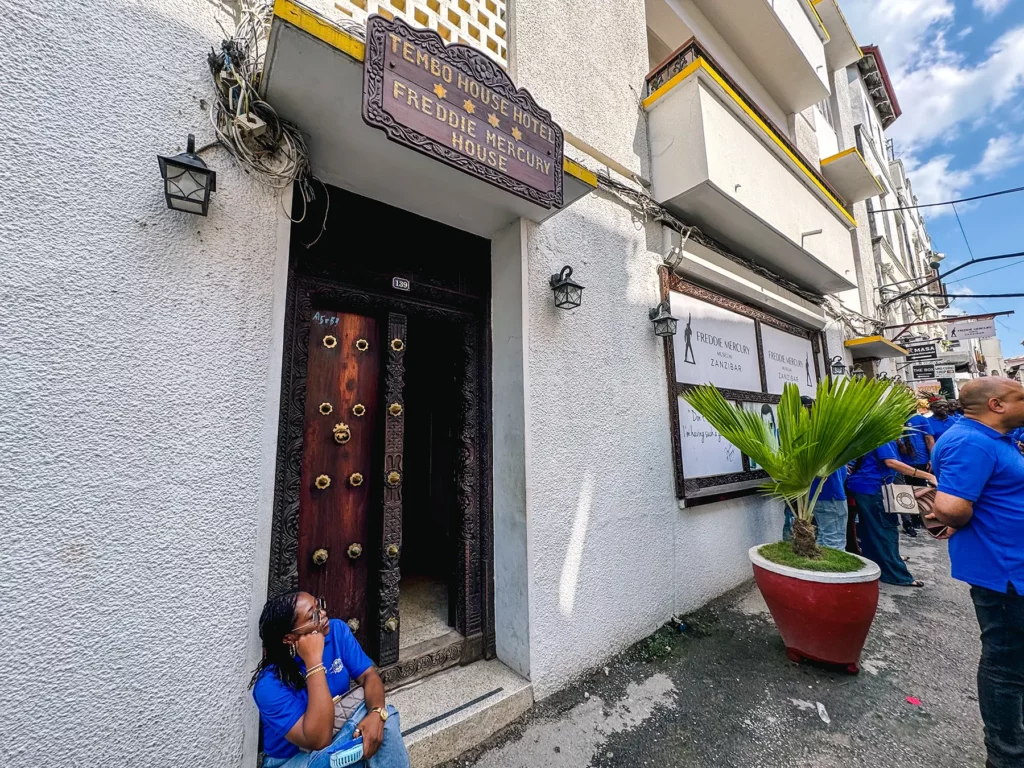
After the rain started pouring, I sought shelter within the spice market; we couldn’t resist buying a few of the tantalising spices on offer. Later, I bought some handmade jewellery and a beach bag made from sisal.
Finally, we ate at Sharazad The Door Restaurant & Cafe, and the food was fabulous!
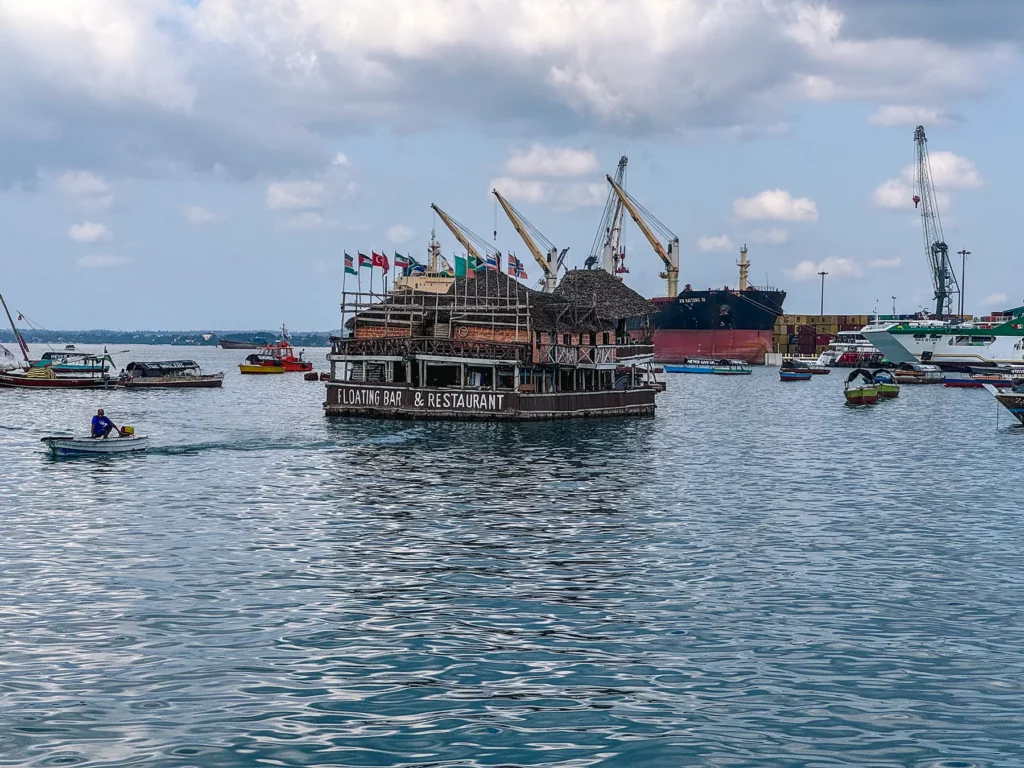
Take a Boat to Prison Island aka Changuu Island
Lying approximately 5–6 km (3–4 miles) northwest of Stone Town, Zanzibar, Prison Island (aka Changuu Island) can be visited in around 20 minutes by arranging a private boat trip on Stone Beach.
Top Tip: I paid about $35 USD (plus tips) for my private return boat trip when booking directly with one of the boat operators on the beach. If you book through a 3rd party company, this could be as much as $150.
Although it has a dark history, today its main attractions are the giant tortoises it houses. Estimated at around 200 years old, they are enormous.
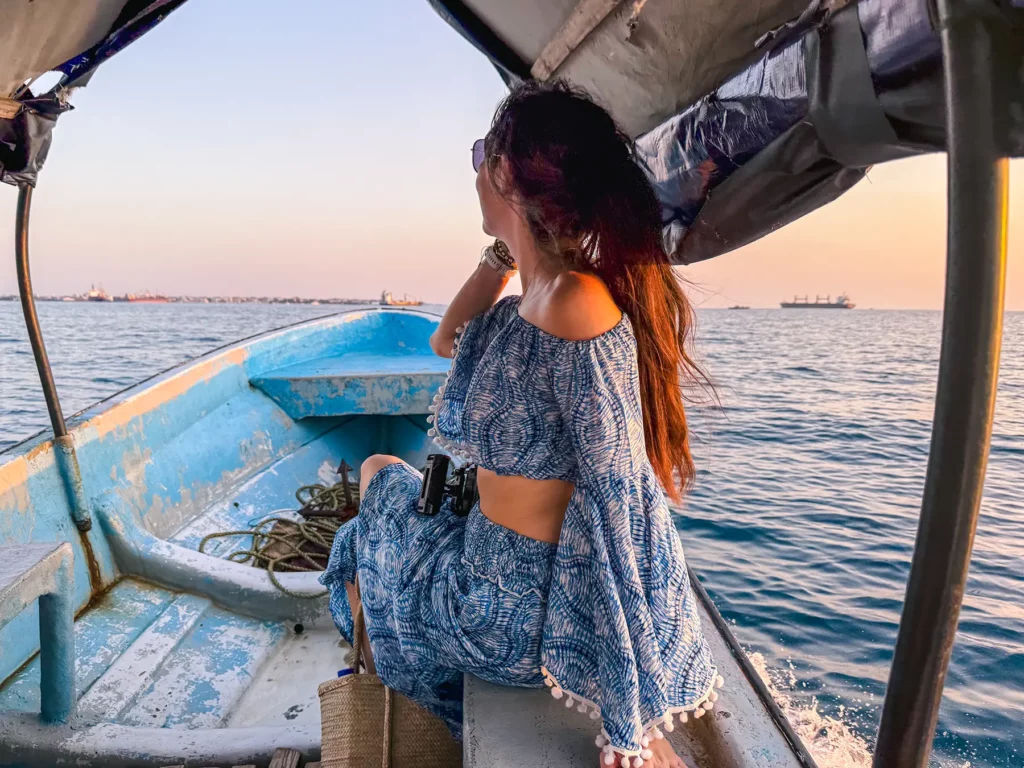
It is a densely wooded island that is home to various wildlife and surrounded by sparkling waters and colourful reefs, where visitors can go snorkelling.
You can also spend a few days in the lodge on the north-west corner of the island, although most visitors come here as part of a day tour and prefer to stay in Stone Town.
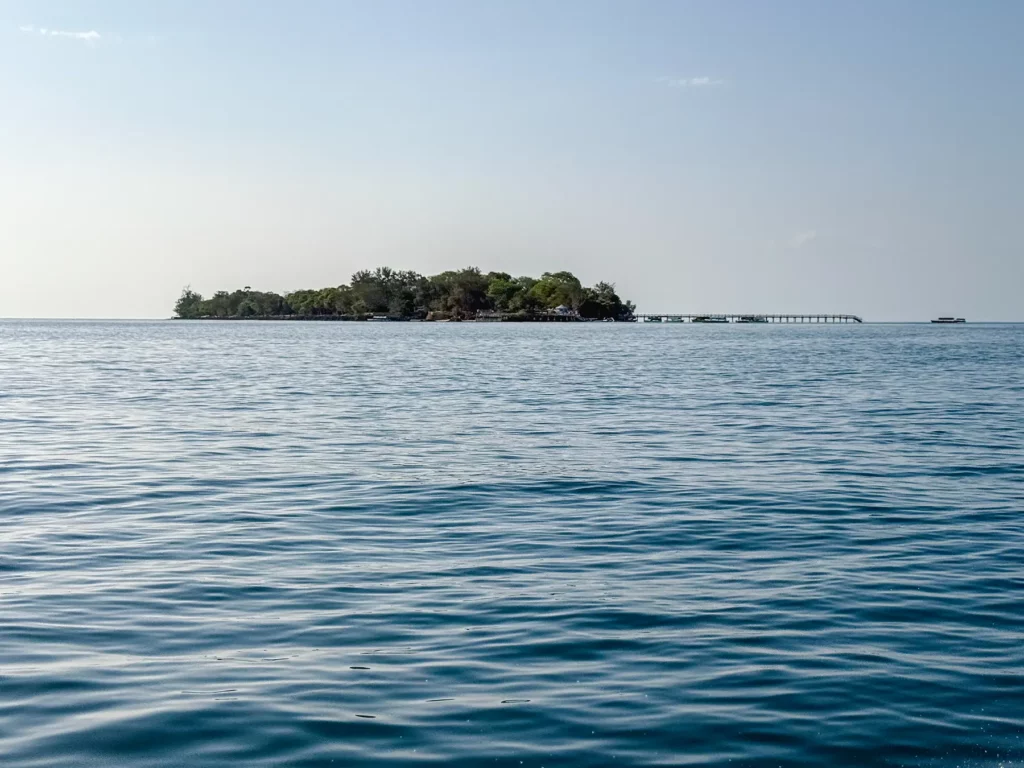
The island has a complex history – in the 1860s Arab enslavers used Prison Island to imprison ‘rebellious’ enslaved people. The British later built an official prison there, but it never housed any prisoners. This did, however, give the island its sinister name. I
In the 1920s, it was used as a quarantine station during the yellow fever epidemic. The old prison was converted into a hospital and used to quarantine people taken from passing ships for two weeks before they were allowed to continue on their journeys.
There is also the remains of an abandoned luxury hotel on the Island.

My Personal Experience Taking a Boat to Prison Island
On Stone Beach, we negotiated a boat ride to the nearby Prison Island. We paid around $35 for a return trip, which took about 20 minutes each way.
We also chose to pay an extra $6 in tips at the end to the two sailors. We arrived on the island around an hour before closing time, at 4 pm, which was a good move, as there were very few other visitors. We pretty much had the island to ourselves!
First, we visited the tortoise sanctuary, where we got acquainted with some of the island’s giant Aldabra tortoises, including one impressive 200-year-old tortoise. He had a crack in his shell, which happened when an entire coconut tree landed on him, and amazingly, he survived.
The only negative of being here so late in the day is that other attractions, like the Prison Bar and bookstore, were closed, but at least we had a gorgeous sunset on the way back to Stone Town.

Try Zanzibar Food
Zanzibar’s melting pot of cultures is evident in its cuisine, with most dishes enhanced by the island’s rich spices and local, home-grown, or freshly caught produce.
Some of the most famous dishes you have got to try include ‘biryani and pilau’, a meat, chicken or fish and rice dish originating from India, the famous ‘Zanzibar pizza’ with its own unique flavours, and being renowned for its octopus, ‘octopus everything’ which is prepared in many ways.
It may be in a curry, on a skewer or straight off the grill, flavoured by the island’s aromatic spices and simmered in coconut milk.
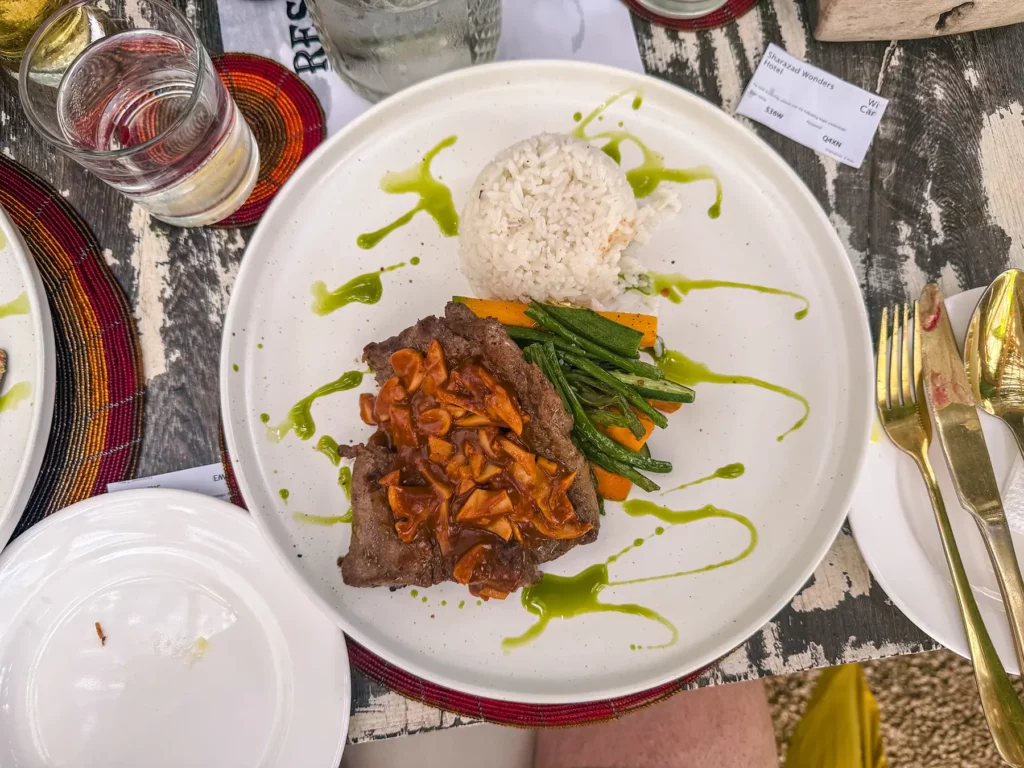
Other dishes to try include ‘chip mayai’, a sort of French fry omelette; ‘mandazi’, a Swahili doughnut snack seasoned with cardamom; tons of ‘mishkaki’ dishes consisting of barbequed skewered meats; and ‘sorpotel’, a hodgepodge of Indian, Portuguese, and Zanzibari influences made with chunks of liver and tongue flavoured with tamarind and other exotic spices.
For people with a sweet tooth, you have to try the ‘Zanzibar chocolate,’ which has nothing to do with chocolate but is actually a diamond-shaped sesame bar soaked in honey and other lovely gooey ingredients – very addictive.
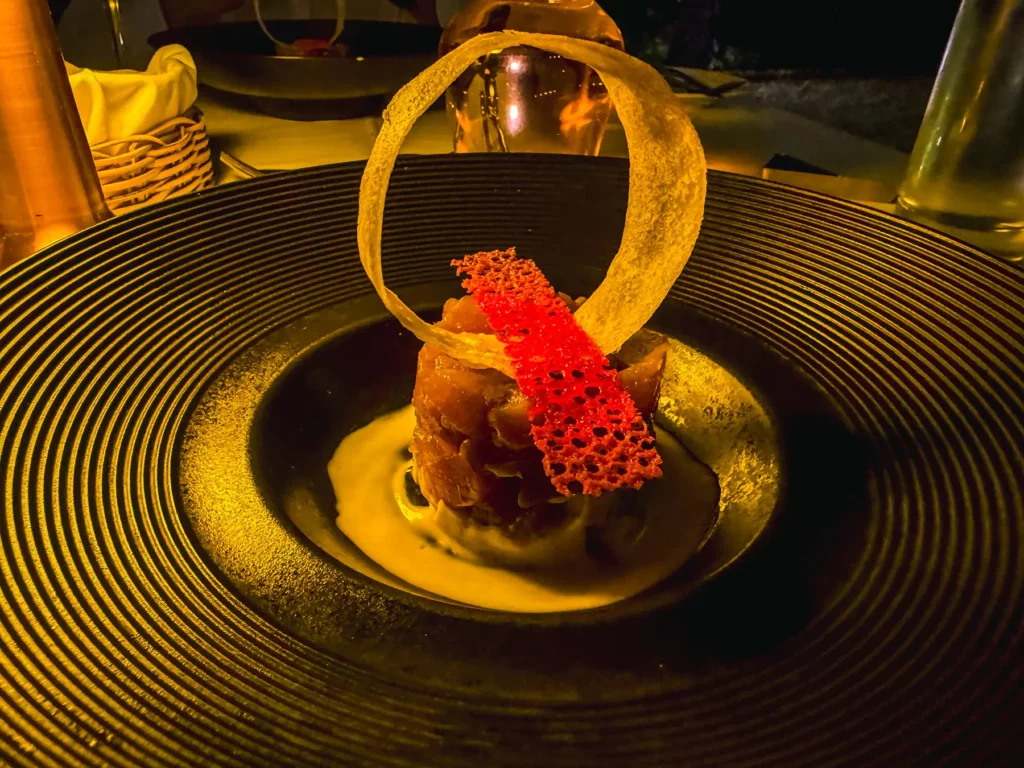
For the not-so-adventurous, you’ll be glad to know that you can still find plenty of restaurants serving traditional Western or Middle Eastern foods, like pizzas, pastas, burgers, salads, fish and chips, etc.
One of the best places to experience the flavours of Zanzibar is the Forodhani Night Market, which is located in the heart of Stone Town, a stone’s throw from the sea.

One of the most unusual settings for a restaurant is ‘The Rock’, situated on the southern end of Pingwe Beach on the east-facing coast. It is precisely what its name implies – a rock.
Set below the high water mark, it is accessible by boat at high tide and offers spectacular views of the ocean and the coastline. The restaurant specialises in Italian-style cuisine with a Zanzibari twist, creating some truly memorable dishes. It is not cheap, but it is a very novel way of dining in the middle of the sea—at high tide, that is.
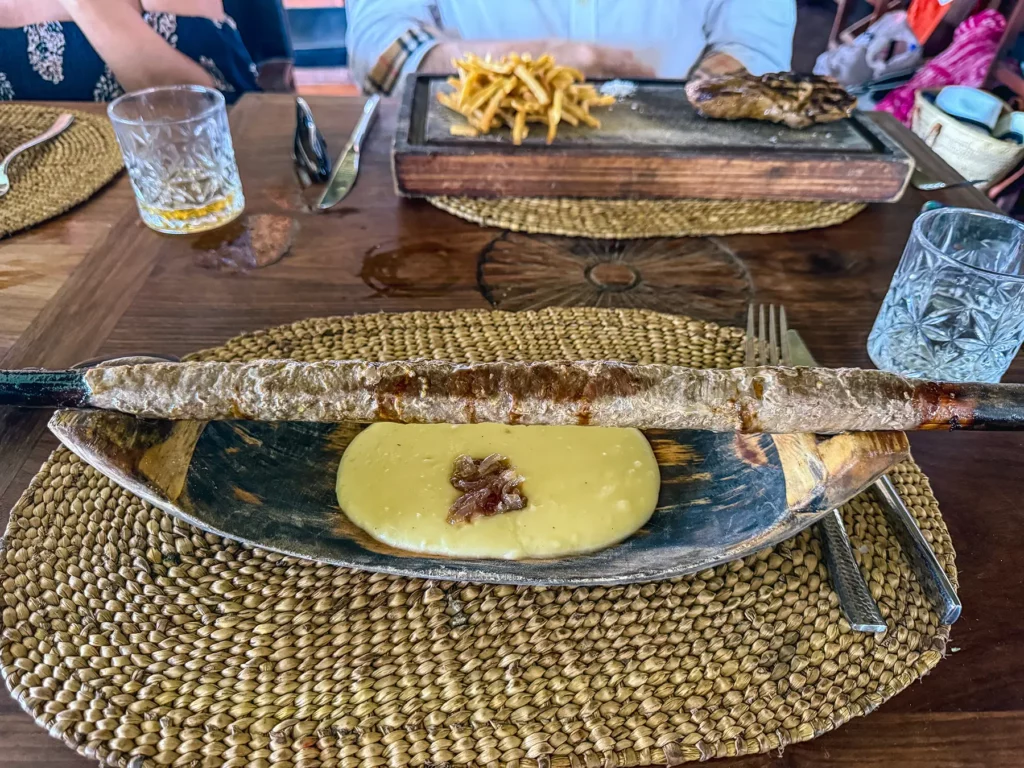
My Personal Experience Trying Zanzibar Food
The food at Sharazad, The Door Restaurant & Cafe in Stone Town, and Zanzibar Queen on Matemwe Beach were delicious. At Nungwi and Kendwa, the beachfront restaurants are as much about the views as the food, and there were plenty of options to choose from.
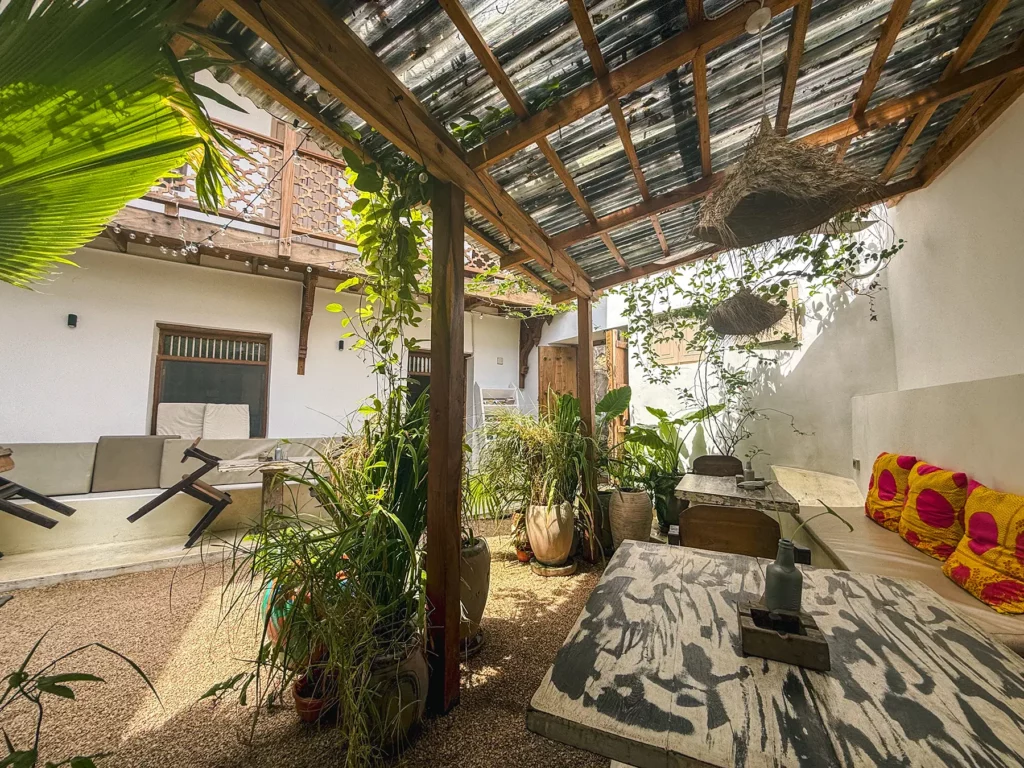
The Rock Restaurant definitely lived up to the hype, and I’m glad I made a reservation for high tide to see it in all its glory. When we arrived, we hopped on a small boat and paddled over to the restaurant, which was larger than I expected. The meal itself was lovely. The location is the main draw, but I honestly really enjoyed the food too.
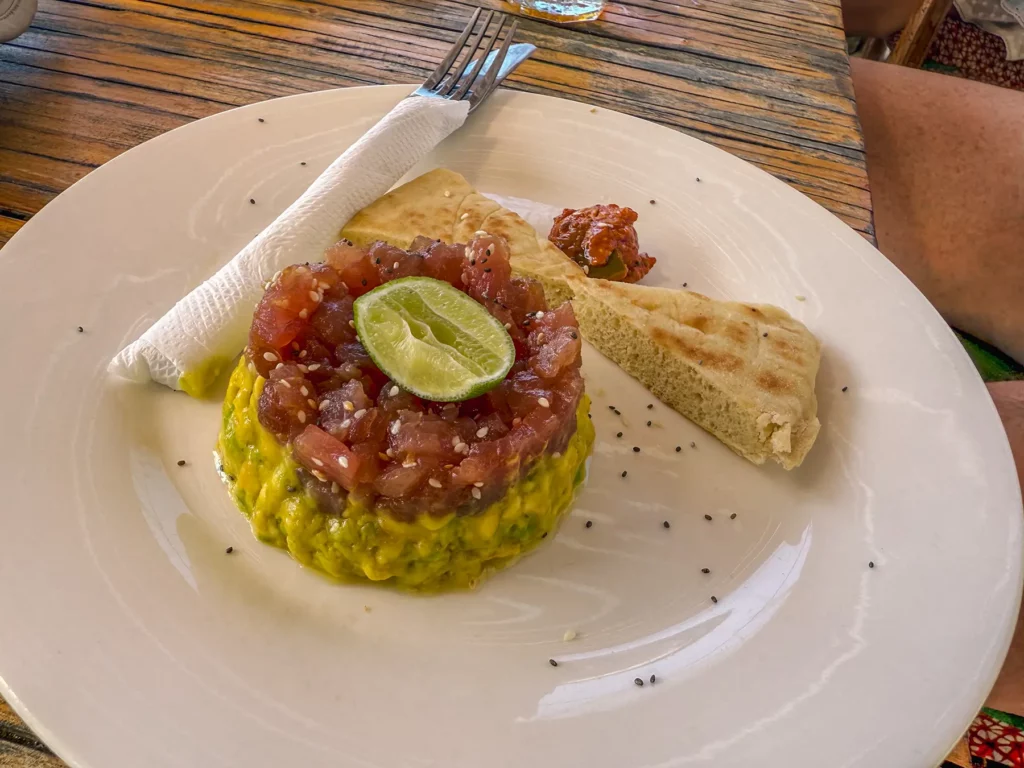
Stay On Private Islands
If you want total privacy and exclusivity and have a big budget, consider staying on one of Zanzibar’s private Islands.
Five Private Islands You Can Stay On in Zanzibar:
1. Mnemba Island
For an exclusive and ultra-luxury experience, Mnemba Island, just off the northeast coast, ticks all the boxes. Run by &Beyond, accommodation is limited to only 12 beach bandas, so this secluded escape is private in every sense.
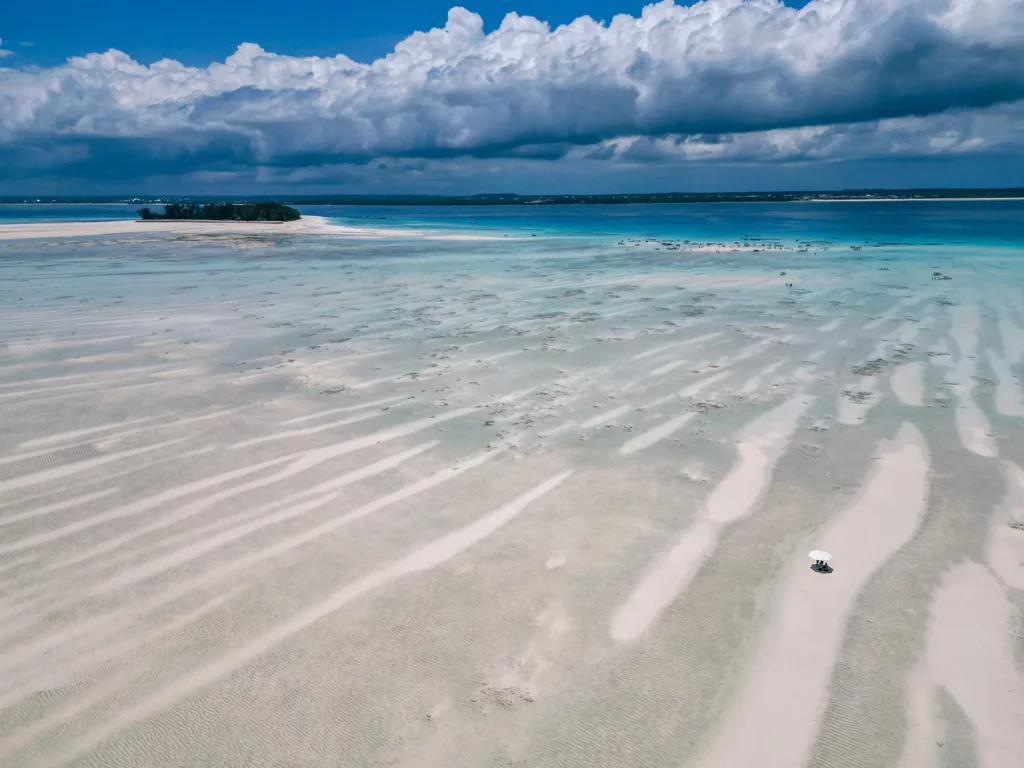
2. Chapwani Private Island
Conveniently located near Stone Town, yet peaceful and secluded, Chapwani is home to a small three-star eco-lodge resort with just 10 rooms. With great food, a stunning beach, and a nearby coral reef for underwater exploration.
3. Chumbe Island Coral Park
With a focus on conservation and sustainability, the limited eco-bungalows at Chumbe Island Coral Park provide a beautiful place to stay while connecting with nature. The Eco-reserve and marine park are stunning.
4. Bawe Island (occasionally available for exclusive hire)
Bawe Island, located off Stone Town, is sometimes available for exclusive hire. Options vary depending on the season and operators. With 30 hectares of lush, untouched nature, and 70 exclusive villas equipped with private pools and butler service.
5. Fanjove Island (part of the Songo Songo archipelago, south of Zanzibar)
While Fanjove Island is not technically part of Unguja, it’s often marketed with Zanzibar. Offering barefoot luxury in just six eco-bungalows, the island boasts a beautiful, long coral reef and endless beaches perfect for water activities.

Go Snorkelling
Many experienced divers claim that Zanzibar is the one of the best snorkelling destinations on the East African coastline, along with nearby Mafia Island, and it’s one of the main reasons people come here.
Some of the finest snorkelling can be done off Mnemba Island and the surrounding reefs, as well as around the private islands mentioned above and the southeastern coast of Zanzibar Island. Pemba Island is also known for exceptional diving and snorkeling.
The reefs are primarily covered in colourful corals, a sure sign of the overall health of the marine environment. Close inspection will reveal a myriad of tiny creatures, including flamboyantly coloured nudibranchs (sea slugs), mantis shrimp, seahorses, anemones, clownfish, lobsters, octopuses, cuttlefish, and moray eels. In the nooks and crannies, tons of butterfly fish, Moorish idols, surgeon fish, trigger fish, parrotfish, lionfish, leaf fish, trumpet fish, and grouper hover closely above the reefs.

My Personal Experience Snorkelling in Zanzibar
Snorkelling in Mnemba atoll was undoubtedly the highlight of my time in Zanzibar! I saw so many species of fish, including parrotfish, butterflyfish, sergeant major fish, and even a starfish. The reef was large enough not to feel crowded, and we had excellent visibility, perfect for snorkelling.
Better yet, we finished our trip with a picnic on a sandbar. I’m glad we requested a private sandbar, as we saw hundreds of boats moored up on another one, whereas ours was incredibly peaceful. The beautifully soft sand and perfect turquoise water made for the ideal picnic spot.
Some boat trips also include dolphin watching, but I recommend skipping this part. I saw dozens of tourist boats crowding around the dolphins and blocking their path, which I wasn’t comfortable with – and I don’t think the dolphins were either.
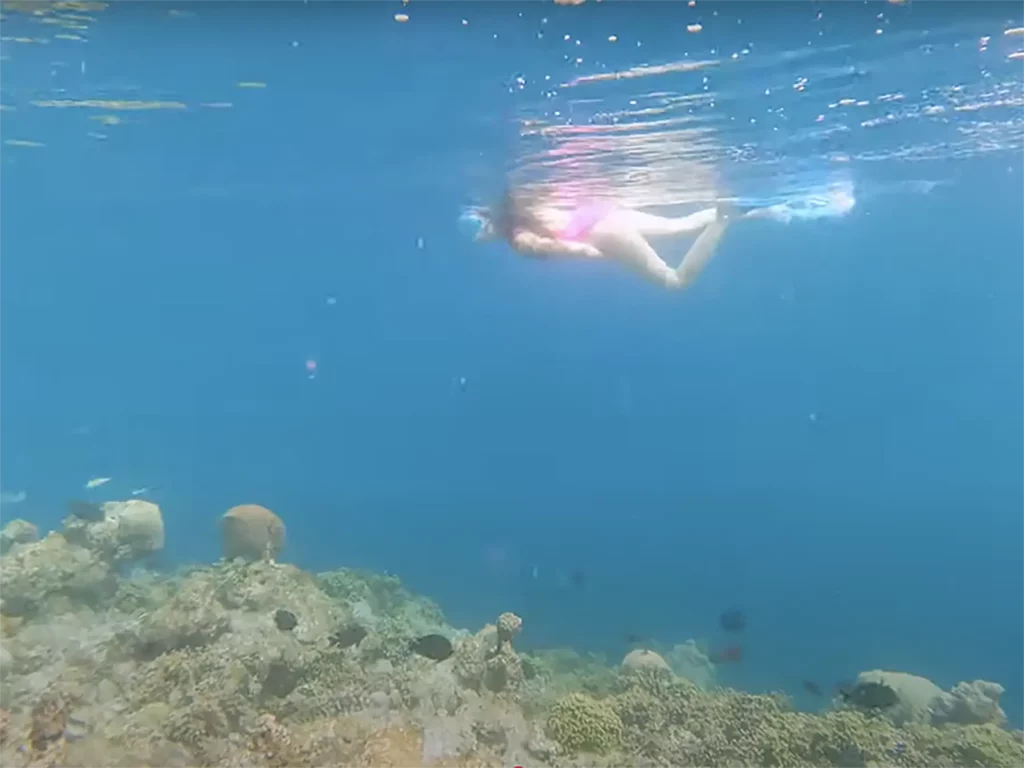
Go for a Walking Safari in Jozani Forest to see Red Colobus Monkeys
The red colobus monkeys are the most famous species in Zanzibar, although they remain on the endangered list.
Only 2,000 to 3,000 exist today, most of which are in the Jozani Forest National Park.
Unlike their black and white relatives on the African mainland, they have dark red hair on their backs, but they do share several other features and habits.
They are endemic to Unguja Island, so you won’t find them anywhere else.
You can go on a walking safari in the forest, which usually takes around 2-3 hours. You have a decent chance of spotting the monkeys.

My personal experience in Jozani Forest
On my visit to Jozani Forest it took just over an hour to come across the fabulous red colobus monkeys. Our excursion took us through dense swathes of jungle which were alive with the chorus of birds.
I even glimpsed a humming bird which was dancing around some gorgeous flowers. Occasionally I’d hear a rustling above me and turn to see a blue monkey sauntering across a branch in the canopy.
When we saw the colobus monkeys, I was amazed at just how calm they were. They sat nonchalantly in low branches, occasionally fixing us with interested glances before proceeding about their business. A highlight was seeing a mother nursing a young baby.
Our adventure then continued to a section of mangrove forest where I saw giant mud grabs and a western reef heron eating a prawn.
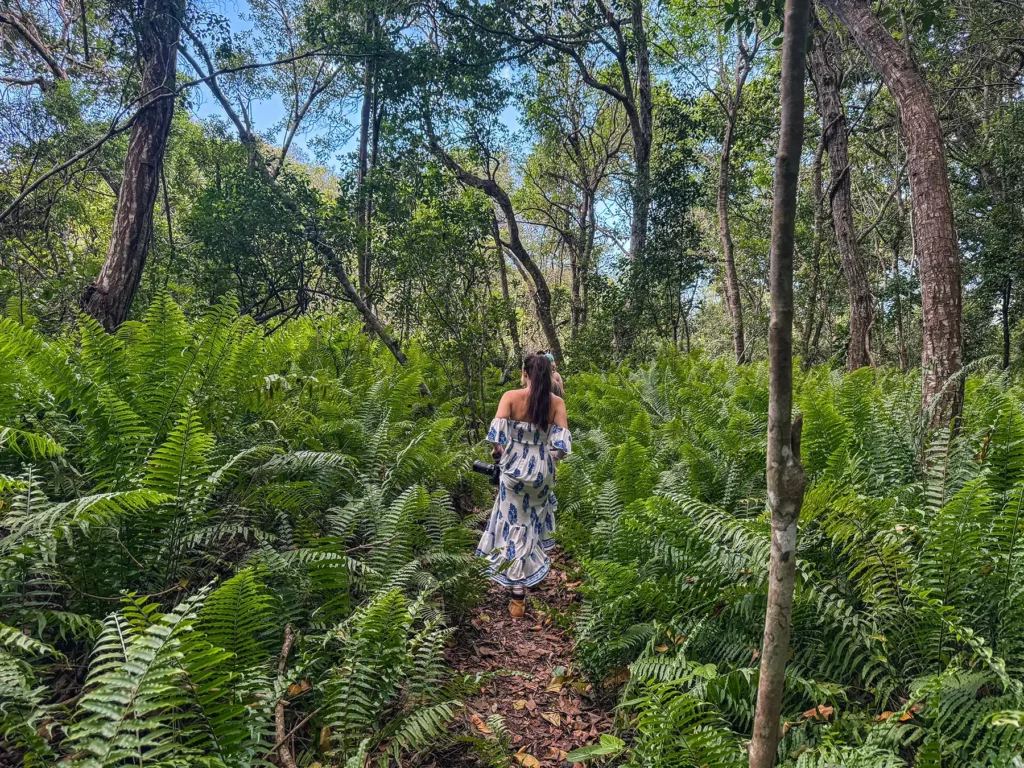
Visit a Spice Farm
While we all use spices in our food every day and have numerous bottles in our kitchen cupboards, many of us may not know what spices look like in their natural form, how they are cultivated and prepared, or where they originate.
Spice tours are extremely popular and highly informative. They take you through the plantations and teach you how each spice is cultivated and harvested before being processed into the packaged spices we use when cooking at home.
You can also see and taste the spices in their raw form and learn about their healing properties. Spice tours usually last half a day, and some include lunch.
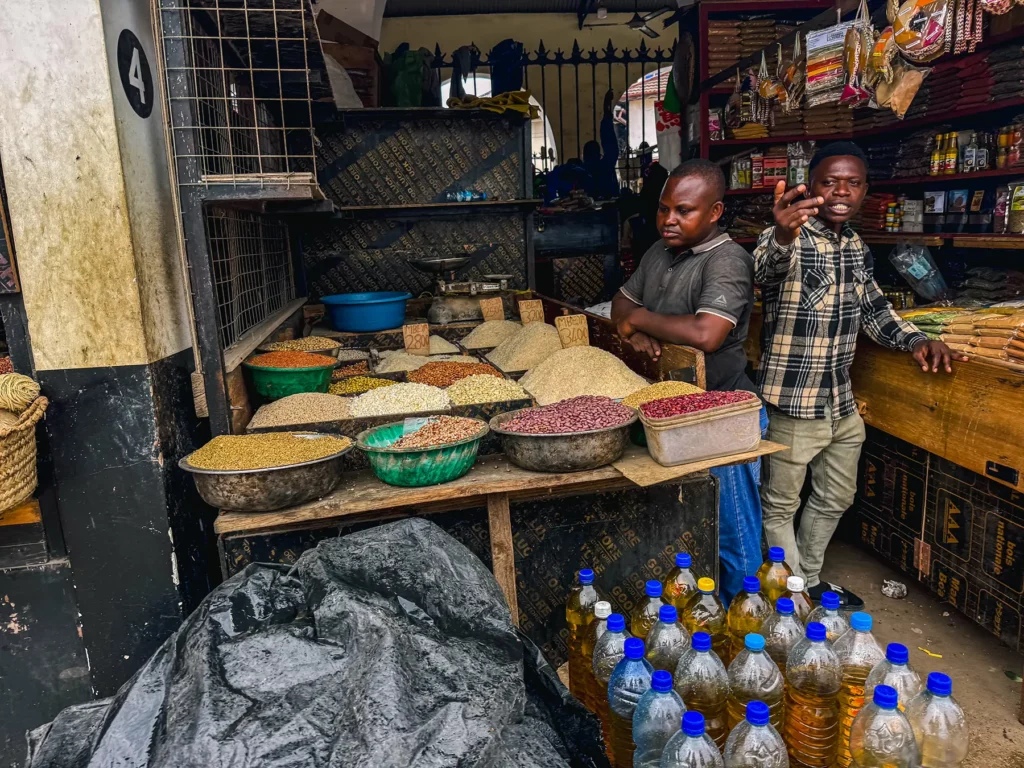
Is Zanzibar Worth It?
Zanzibar has some of the most fabulous beaches in Africa, the best reefs for diving and snorkelling, a fascinating and multicultural history, delicious food, a tropical and mild climate almost year-round, and friendly people. It is absolutely worth it!
In addition, some of the world’s best safari reserves, such as the Serengeti National Park, are just a domestic flight away in mainland Tanzania.
Where to Stay in Zanzibar
Many of Zanzibar’s top luxury resorts are located on the northeast coast, particularly in Matemwe, Kiwengwa, Pwani Mchangani and Mnemba Island (just offshore).
You can jump to more information on where to stay in Zanzibar using the links below.
Which Part of Zanzibar is the Best to Stay in?
Why the Northeast Coast is Popular for High-End Stay
Which Part of Zanzibar is the Best to Stay in?
The best place to stay in Zanzibar is the northeast coast. The northeast is where many of the best luxury resorts are located and there is amazing snorkelling at Mnemba Marine Park, and beach activities. There is even a super-luxury resort on the private Mnemba Island.
From your base on the North east coast of Zanzibar you can travel to the northwest coast which has the most famous beaches. Kendwa and Kiwengwa beaches are popular for sunsets and swimming due to less tidal impact.
My preference: I stayed at a resort on Pongwe beach on the northeast coast which was fantastic and included some day trips to Kendwa & Nungwi Beach.
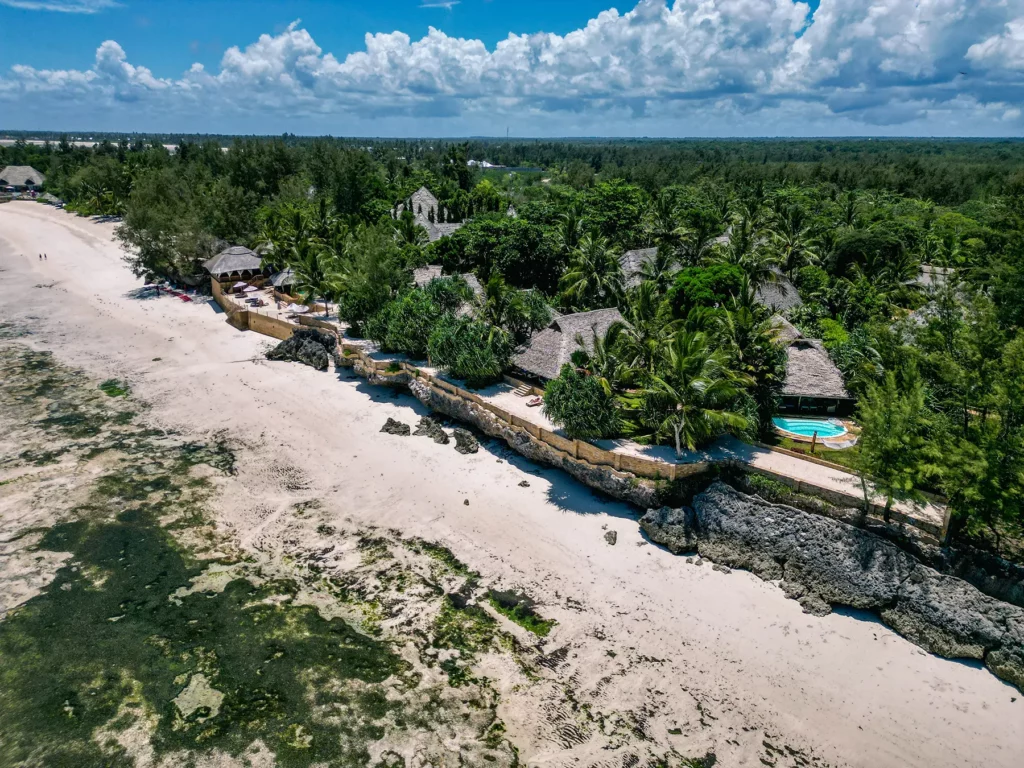
Why the Northeast Coast is Popular for High-End Stay
Although Kendwa and Nungwi on Zanzibar’s Northwest coast are famous for incredible beaches and dreamy sunsets, I recommend looking towards the northeast coast for high-end accommodation.
The northeast is simply quiet and more exclusive than the busy, northwestern areas, while still boasting absolutely stunning beaches with powdery white sand and turquoise waters.
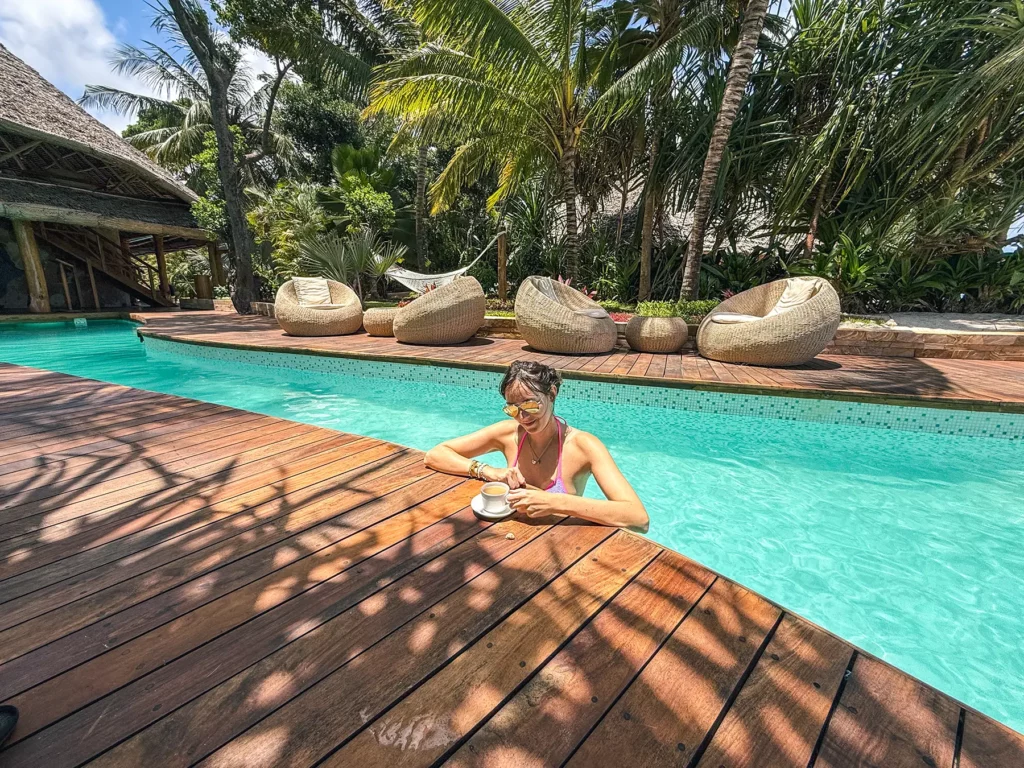
Here you’ll find spacious, beachfront resorts with a more relaxed, upscale atmosphere. For those keen to get straight into the water, the northeast’s proximity to Mnemba Atoll makes it ideal for snorkelling and diving.

Best Zanzibar Hotels and Resorts
Below, we’ll take a closer look at some of the best-rated hotels in Zanzibar, as well as my personal experiences of staying at or visiting some of them.
You can jump to more information on what to stay in Zanzibar using the links below.
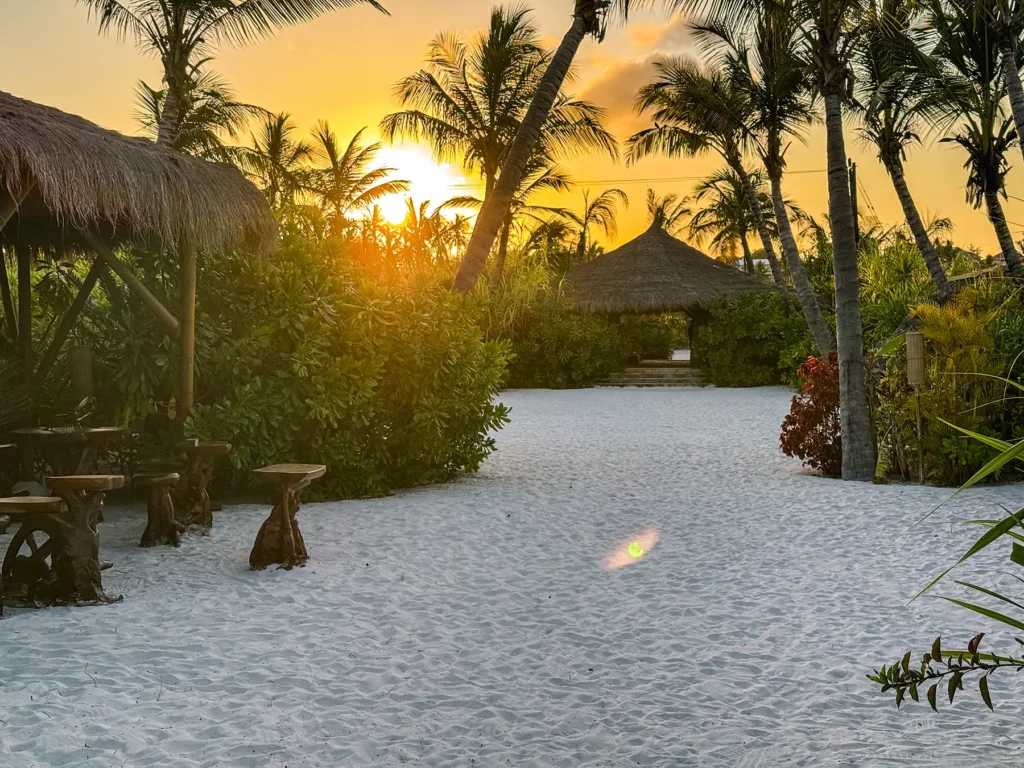
Tulia Zanzibar Unique Beach Resort
Tulia Zanzibar Unique Beach Resort is a 5-star boutique resort located on the east coast of Zanzibar at Pongwe Beach.
Known for its exclusivity and personalised service, the resort offers luxurious villas and bungalows, some with private pools and set in lush tropical gardens along a private beachfront.
Guests enjoy all-inclusive à la carte dining, a range of complimentary activities such as snorkelling, kayaking, and yoga, as well as unique features like the island’s only waterslides and an on-site organic farm.
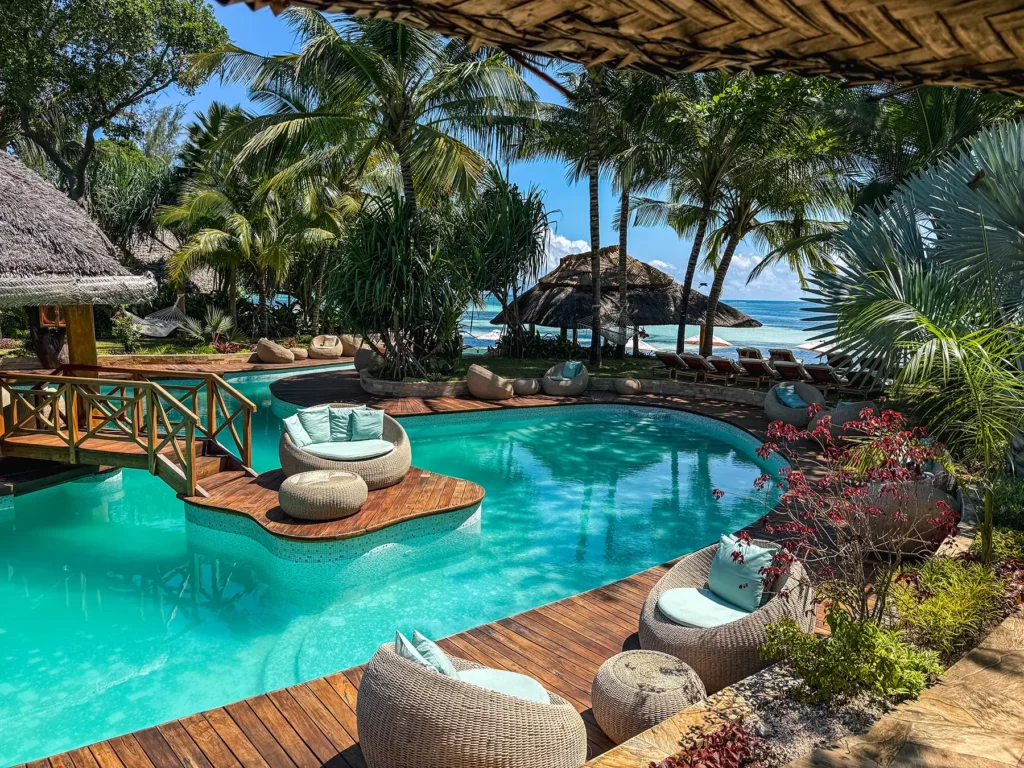
Quick Facts:
Location: Pongwe Beach, East Coast of Zanzibar
Distance from Airport: Approximately 37 km, about a 1-hour drive
Luxury Level: 5-star boutique resort known for exclusivity and comfort
Type: Boutique resort offering all-inclusive packages with amenities like outdoor pools, spa services, and fine dining
Number of Rooms: 16 villas and bungalows
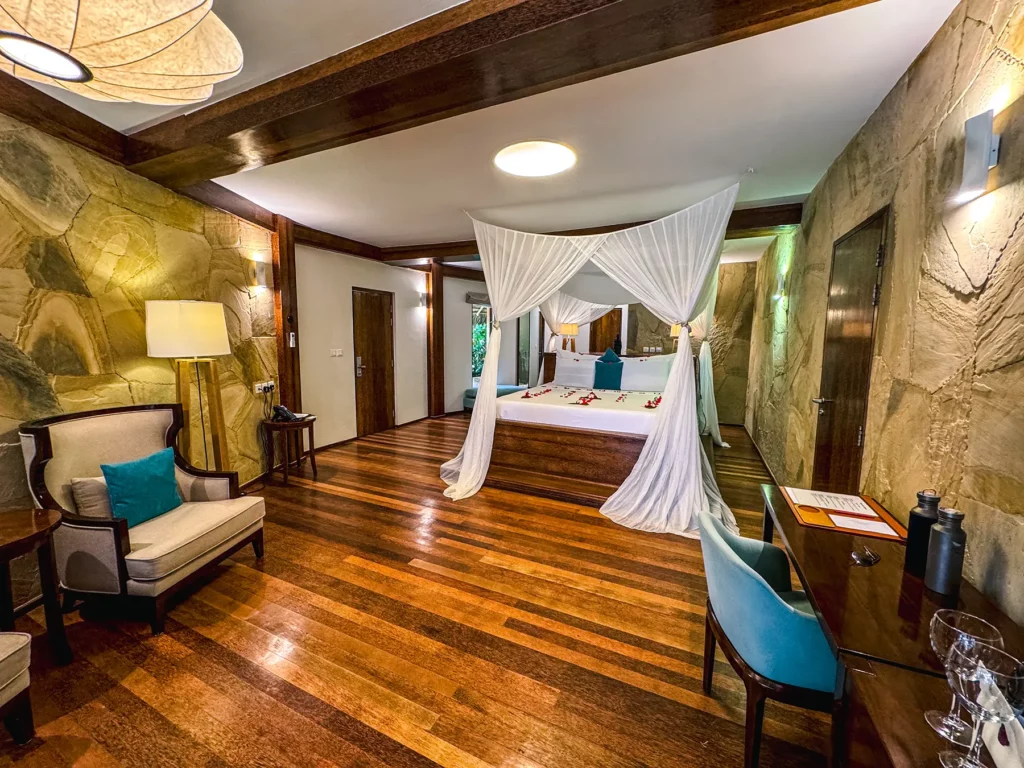
My Personal Experience at Tulia
Tulia is my favourite hotel in Zanzibar, so I can’t help but recommend it first! Next to a wonderfully quiet beach, the hotel itself is gorgeous, but it was the staff that made my stay here incredible. To my absolute delight, they put on a surprise birthday meal for me in a private garden! I had a delicious four-course meal under the glow of fairy lights – magical!
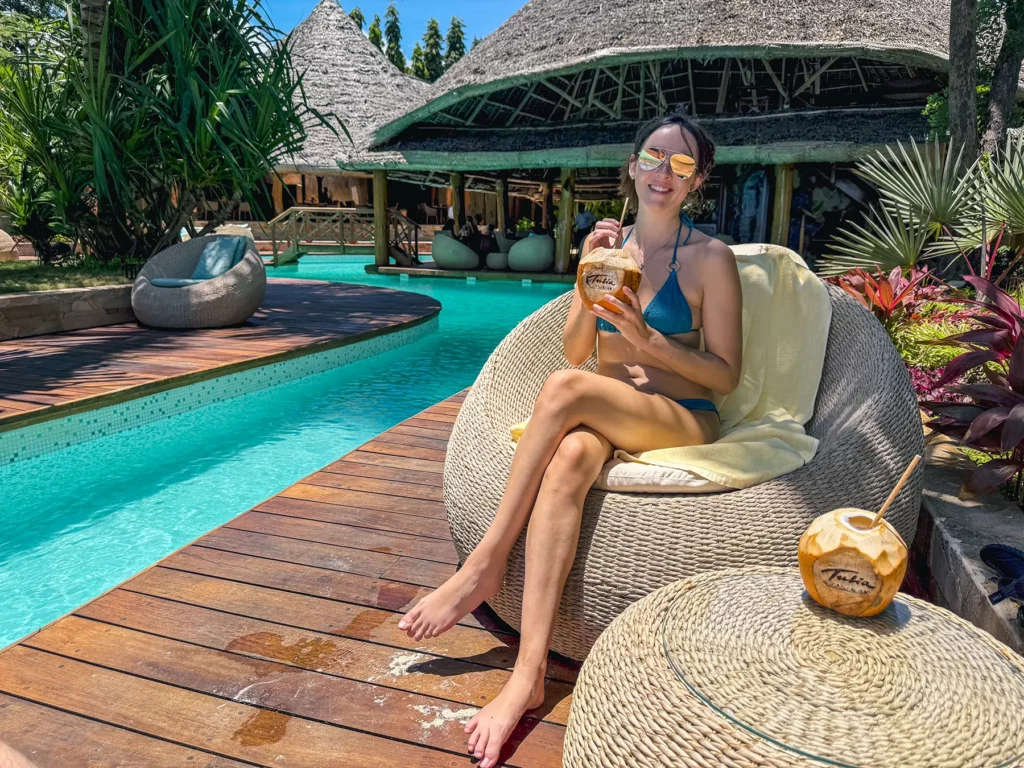
Meliá Zanzibar
Just to the north lies Melia Zanzibar, a 5-star oceanfront hotel resort in a picture-postcard setting overlooking miles of snow-white sandy beaches, a blue ocean, coral reefs, and a long jetty with a cute restaurant at the end.
It is a massive 40-acre complex with over 150 rooms and bungalows, magnificently furnished with modern amenities. Luxuries like a spa, gym, and two infinity pools are standard features here.
No less than six restaurants and bars, including the pier restaurant, offer a wide range of meals, from refined dining to tapas-style beach snacks of both local and international influences. Their ‘Spice Market’ restaurant is a real gem, serving a different theme each night.

Quick Facts:
Location: Kiwengwa, northeast coast of Zanzibar
Distance from Airport: Approximately 45 km, about a 45-minute drive
Luxury Level: 5-star boutique resort known for exclusivity and comfort
Type: Large beachfront property offering a range of accommodations from rooms to private villas
Number of Rooms: 140 guest rooms
Type: Large beachfront property offering a range of accommodations from rooms to private villas
My Personal Experience at Melia
Melia has brilliant facilities, and I particularly enjoyed having drinks in its Jetty Lounge. Opening at 5 p.m., it’s the perfect spot to watch the sunset, and you couldn’t get closer to the ocean!
On the downside, Melia is huge and feels a bit concrete compared to others, so bear that in mind if you prefer a boutique experience.
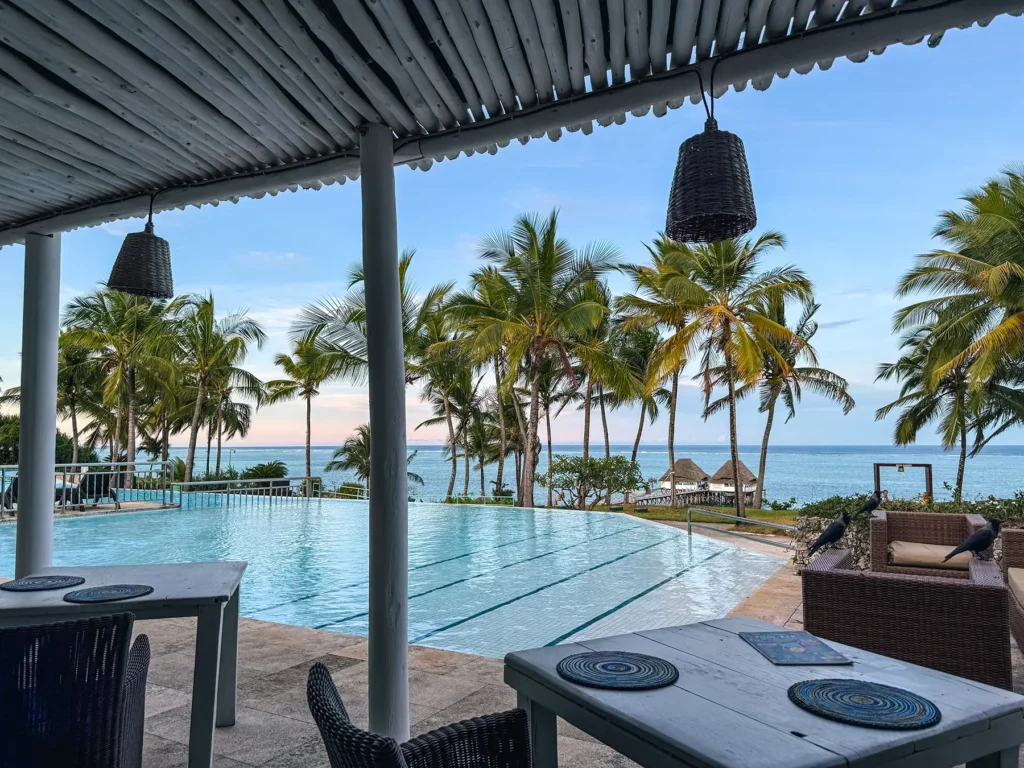
Sensations Eco-Chic Hotel
The Sensations Eco-Hotel, located on Pwani Beach a few miles north, is a small, adults-only, all-inclusive hotel catering to honeymooners.
It offers a range of beach bungalows and features a swimming pool, along with a restaurant.
The hotel is located on the beach, so when you walk around the resort, you are walking on soft white sand.
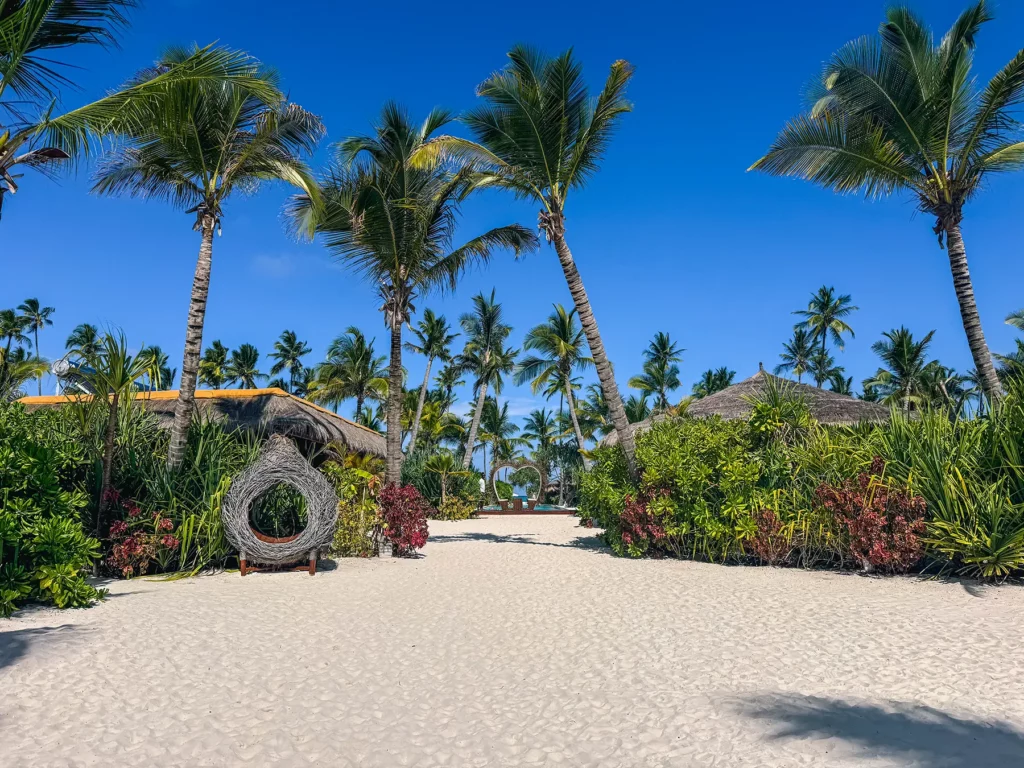
Quick Facts:
Location: Pwani Mchangani, northeast coast of Zanzibar
Distance from Airport: Approximately 50 km, about a 1-hour drive
Luxury Level: 5-star boutique hotel
Type: Adults-only, all-inclusive resort
Number of Rooms: 20 bungalows
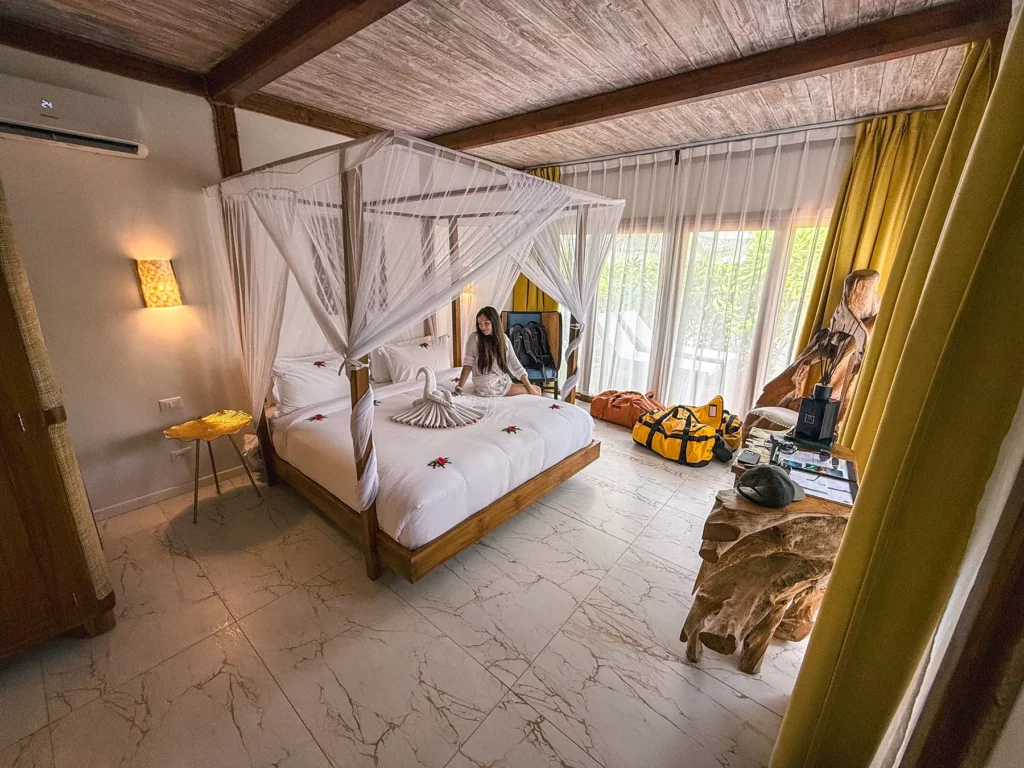
My Personal Experience at Sensations
Located on a particularly gorgeous stretch of beach, the way this resort is built in the sand is absolutely stunning, and it has a very laid-back boho vibe.
However, considering the price, I was slightly disappointed with my experience. For example, I had only brought the typical Tanzanian type G sockets, but all of the hotel’s plug sockets were European. This completely threw me off, as the hotel had no adapters I could use, which meant I couldn’t charge my devices.
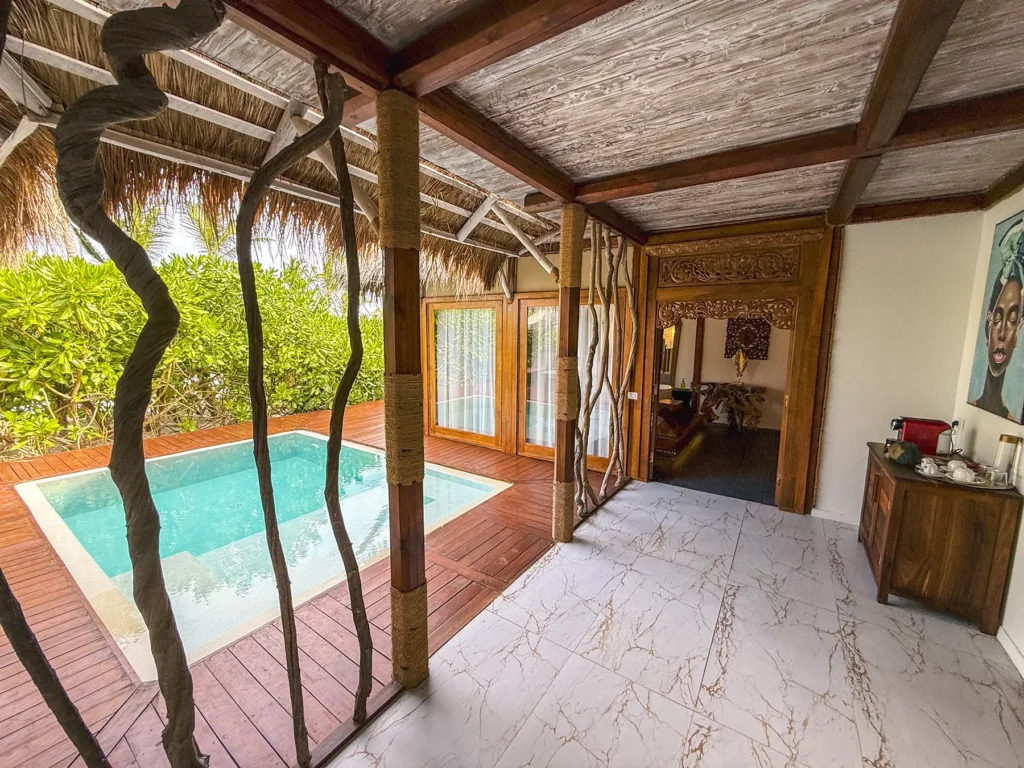
&Beyond Mnemba Island Lodge
&Beyond Mnemba Island Lodge is an ultra-luxury private island retreat off Zanzibar’s northeast coast, featuring just 12 beachfront bandas for maximum exclusivity.
Surrounded by coral reefs, it offers fantastic snorkelling, diving, and water activities. With personalised service, beachfront dining, and a strong focus on sustainability.
With peak season prices of $3,000 per person per night, a stay here requires deep pockets.

Quick Facts:
Location: Mnemba Private Island, off the northeast coast of Zanzibar
Distance from Airport: Approximately 90 minutes to 2 hours (drive + boat transfer)
Luxury Level: Ultra-luxury private island lodge
Type: Exclusive, all-inclusive retreat with a strong focus on sustainability and privacy
Number of Rooms: 12 beachfront bandas (including one family banda)
My Personal Experience at &Beyond Mnemba Island
I had a fantastic experience snorkelling the reefs just off from Mnemba Island. There were so many colourful fish, including sergeant major fish, parrotfish and butterfly fish. Perhaps the highlight however was having lunch on a private sandbar in the middle of the ocean. Other than the sound of waves crashing against distant shores, everything was silent.
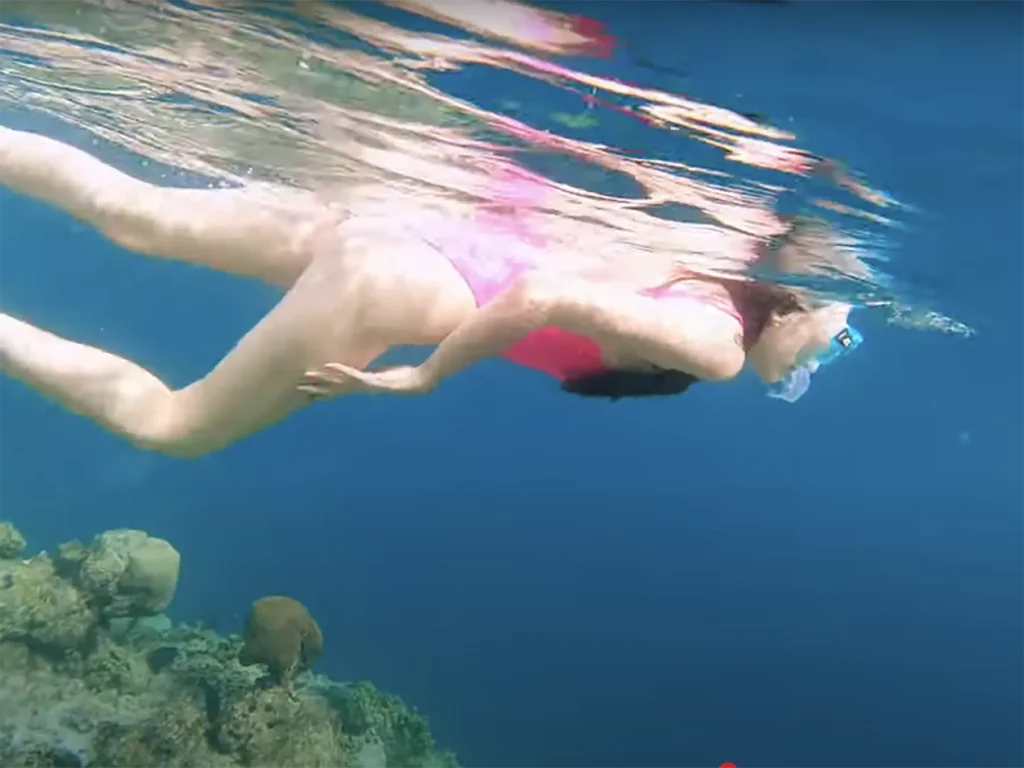
Zanzibar Queen Hotel
Located on the beautiful Matemwe Beach on Zanzibar’s popular northeast coast, the Zanzibar Queen Hotel is a 4-star resort offering luxury accommodation in modern, stylish rooms and bungalows with various bedding configurations.
The hotel offers three beachfront bungalows, while the rest are standard or deluxe rooms.
The highly rated restaurant, which is also available for outside bookings, offers a diverse menu of local and international cuisines, including barbeque, seafood, and authentic Swahili dishes. The menu is available in the dining room, restaurant, or pool area.
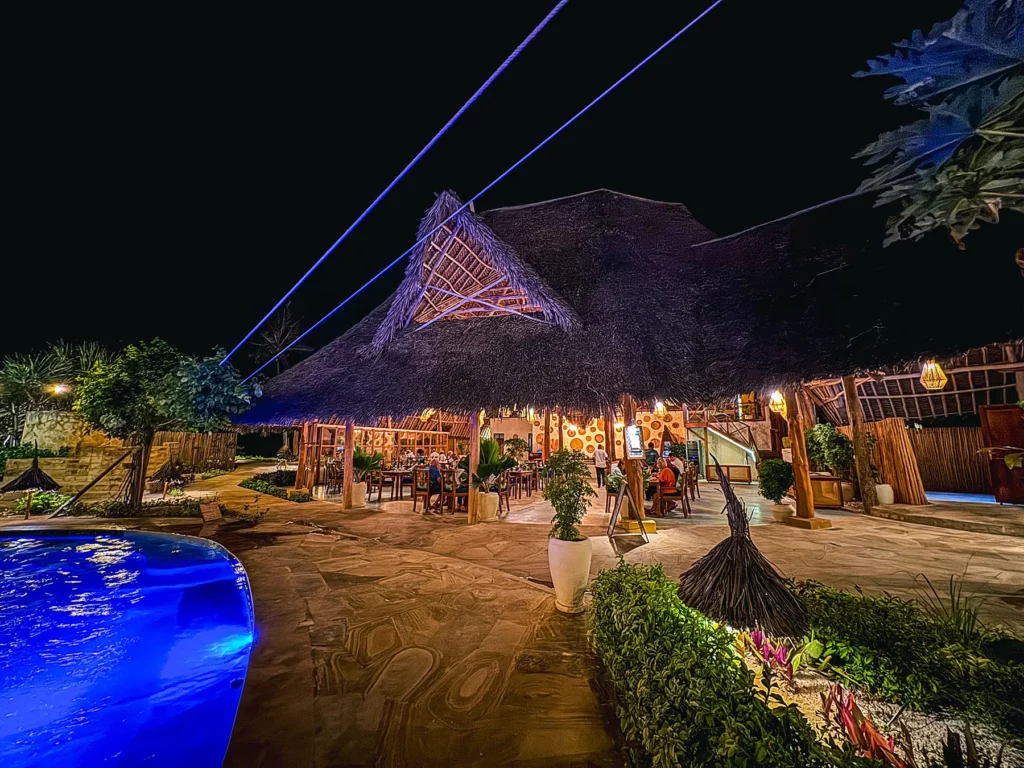
Quick Facts:
Location: Matemwe Beach, northeast coast of Zanzibar
Distance from Airport: Approximately 50 km, about a 1–1.5 hour drive
Luxury Level: 4-star resort
Type: Stylish beachfront hotel with deluxe rooms and beachfront bungalows
Number of Rooms: 34 rooms (including three beachfront bungalows)
My Personal Experience at Zanzibar Queen
The food here is terrific, and I would definitely come back for the fabulous meals! The hotel is on a gorgeous beach, giving it a scenic and relaxed vibe.
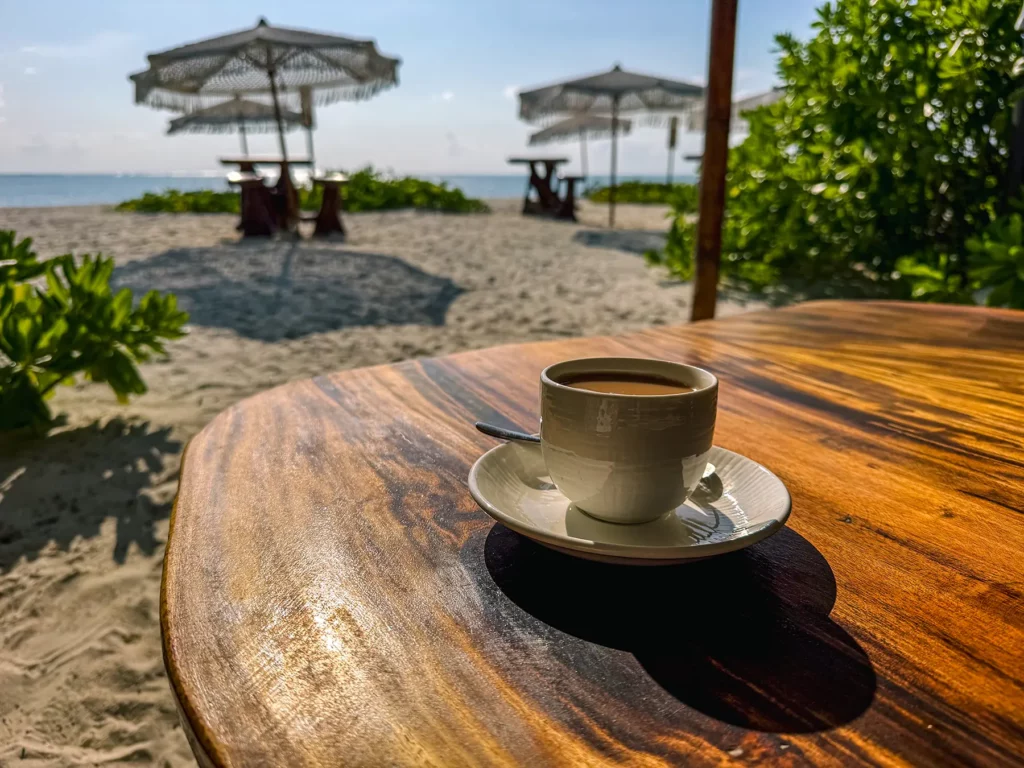
LUX* Marijani Zanzibar
LUX* Marijani Zanzibar is a 5-star boutique resort located on Pwani Mchangani Beach, blending Arabic and Swahili design elements. It features 82 villa-style rooms with either garden or ocean views, an infinity pool, a spa, and a fitness centre.
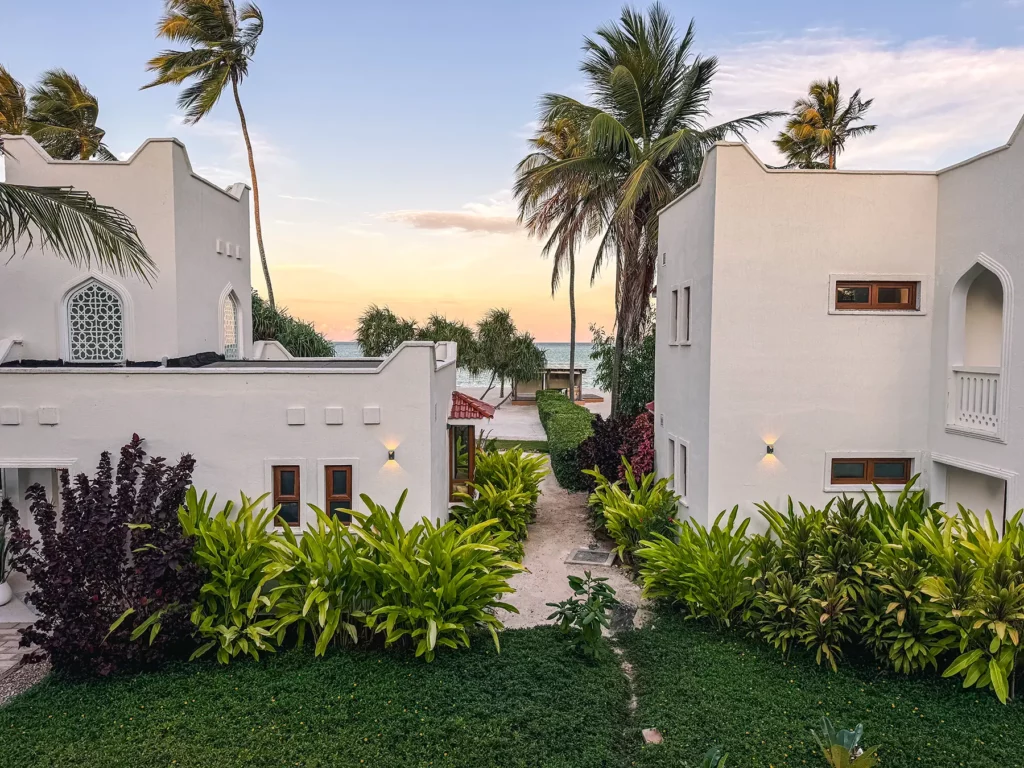
Quick Facts:
Location: Pwani Mchangani, northeast coast of Zanzibar
Distance from Airport: Approximately 45 km, about a 1-hour drive
Luxury Level: 5-star boutique resort
Type: Boutique resort blending Arabic architecture with coastal Swahili influences
Number of Rooms: 82 villa-style rooms offering garden or oceanfront views
My Personal Experience at LUX Marijani Zanzibar
This resort is so beautiful, and I love the section of Matemwe beach it’s set on. I appreciated how incredibly friendly and helpful the staff are, and you can easily plan excursions here; my Mnemba Atoll boat trip was organised from this hotel.
Overall, this is my top pick if you’re on a mid-range budget. While a double room costs around $150 per night, it feels like a luxury hotel without the super high price tag.
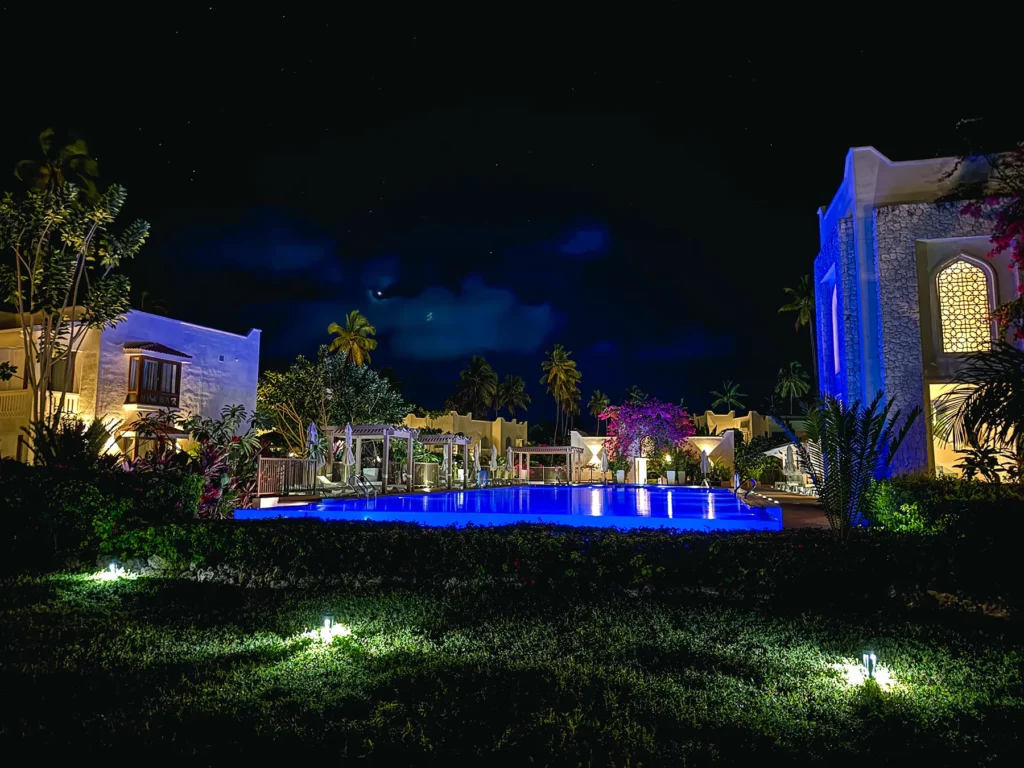

Embark on the Safari & Beach Holiday of Your Dreams
Save time and ensure an incredible safari experience by getting quotes from my recommended local safari companies
I’m here to make booking your perfect safari quick, easy and risk-free.
Join the rapidly growing tribe of over 1,000 travellers who’ve booked their dream safari using my insider tips and recommendations.
It takes under 60 seconds to fill out the form and in under 48 hours you will receive multiple, no-obligation proposals from my favourite local tour operators with glowing online reviews.
Get your free no-obligation safari quotes and my top safari tips and recommendations
What to Pack for Zanzibar
Like any beach destination, bring cool and comfortable clothing, sandals, good walking shoes, hats, shades, swimwear, goggles, and flippers, and you’ll be ready to go!
But if you’re combining a safari and beach holiday, you’ll need some warm clothing too, as the nights and early morning game drives in the highlands can get pretty chilly all year round.
A travel adapter to charge your electronic devices is a crucial piece of equipment that you may or may not need.
Tanzania operates on a 230v supply system and mainly uses type D plugs—the three round pins in a triangular shape. It also uses the type G British three-square-pin socket. If your appliances don’t have those types of plugs, it’s best to buy an international travel adapter suitable for charging several devices simultaneously.
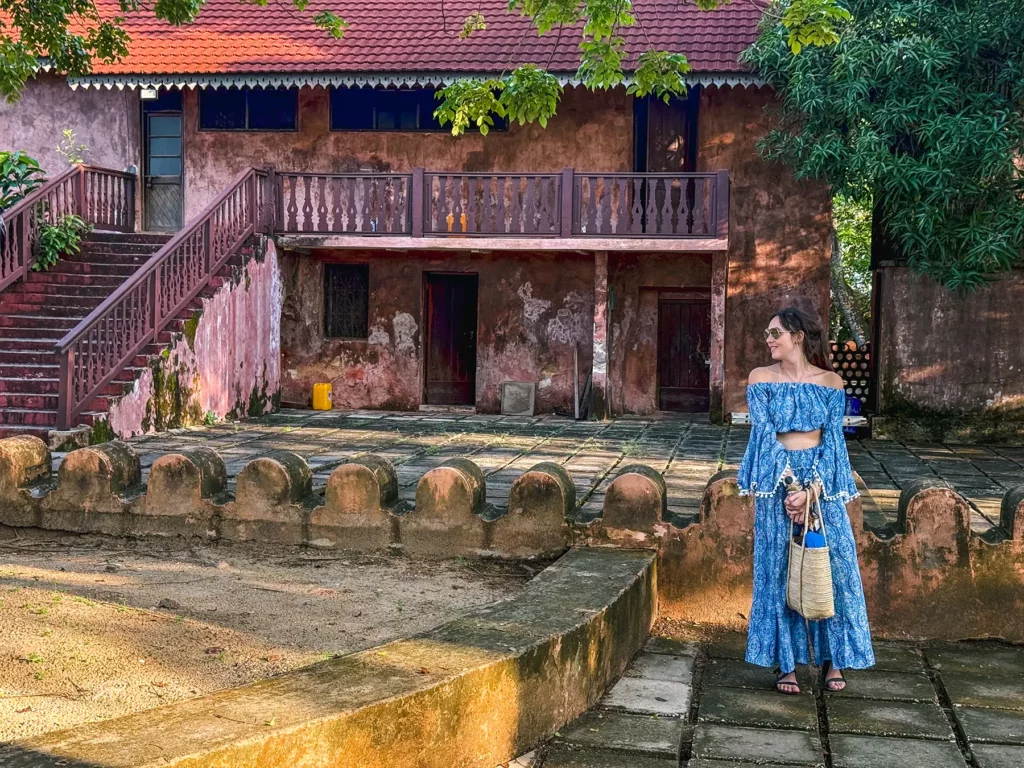
What to wear in Zanzibar
Zanzibar is predominantly Muslim, and it’s wise to dress conservatively when walking around the streets, especially when visiting mosques. Most locals, however, are aware of the value of tourism and don’t seem to mind too much about the Western-style dress code as long as it’s not too revealing or offensive. If you stick to covering from shoulders to knees, you’ll be fine.
On the beaches and around the resorts, it’s more relaxed with shorts, swimming costumes and bikinis being totally acceptable.
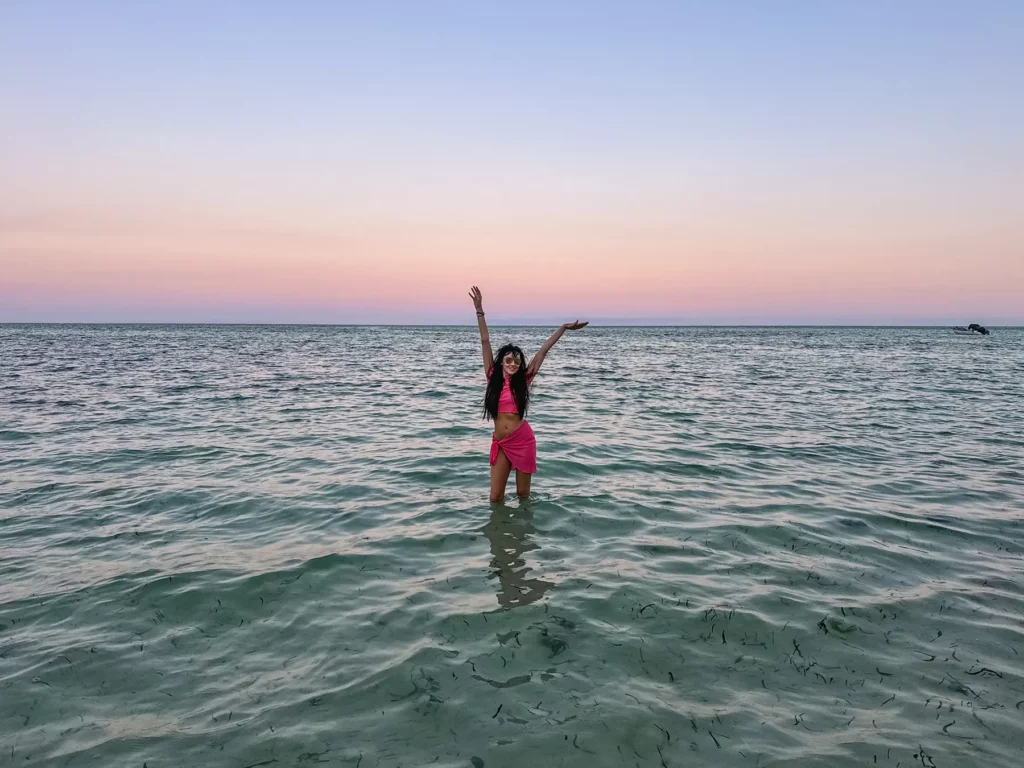
Packing List
Starting with luggage, most international flights allow a maximum of 50 lbs (23 kg) and 17 lbs (8 kg) for hand luggage.
If you’re planning to take charter flights to and from the game reserves, most airlines allow a maximum of 33 lbs (15 kg), and luggage must be soft-sided. Additionally, you can bring one small, handheld item, such as a camera, purse, or laptop.
Clothing
- T-shirts, tank tops and a combination of short-sleeved and long-sleeved shirts
- Long or knee-length skirts, or knee-length shorts and a pair of longer trousers
- A combination of some long and short dresses. Long are great for visits to towns and villages whereas hotels are comfortable with short dresses
- Swimwear, underwear and sleepwear
- A coverup is handy for the beach or by the pool. This could be a kaftan, shawls or even scarves to wrap around your shoulders
- Light rain jacket (just in case)
- Sandals and a pair of trainers or walking boots for activities such as visiting Jozani Forest
If going on Safaris too
- A pullover sweater or two
- Hooded warm fleecy jacket, preferably water resistant
- Lightweight, comfortable long trousers, shorts and tracksuit pants
- A down jacket or gilet
Other Essentials
- Anti-bug / mosquito sprays
- Hat, sunglasses, lip balm and high-factor sunscreen
- Reading material
- Laptop, tablet, phone, etc, chargers and accessories
- Hygiene ( razors, toothbrush, toothpaste, face creams, etc.)
- Camera, charger, extra batteries, plug adapter (if required)
- Binoculars (if going on safari)
- Medication (headache, flu tablets, malaria, anti-diarrhoea pills, rehydration salts, antiseptic cream, anti-bacteria wipes, sanitiser, plasters, etc.)
- A beach bag or rucksack are useful for day trips
If you’re going on safari, avoid wearing bright or dark colours on game drives, as they might catch the attention of the wildlife or tsetse flies. Stick to neutral natural colours that blend in with the surroundings.
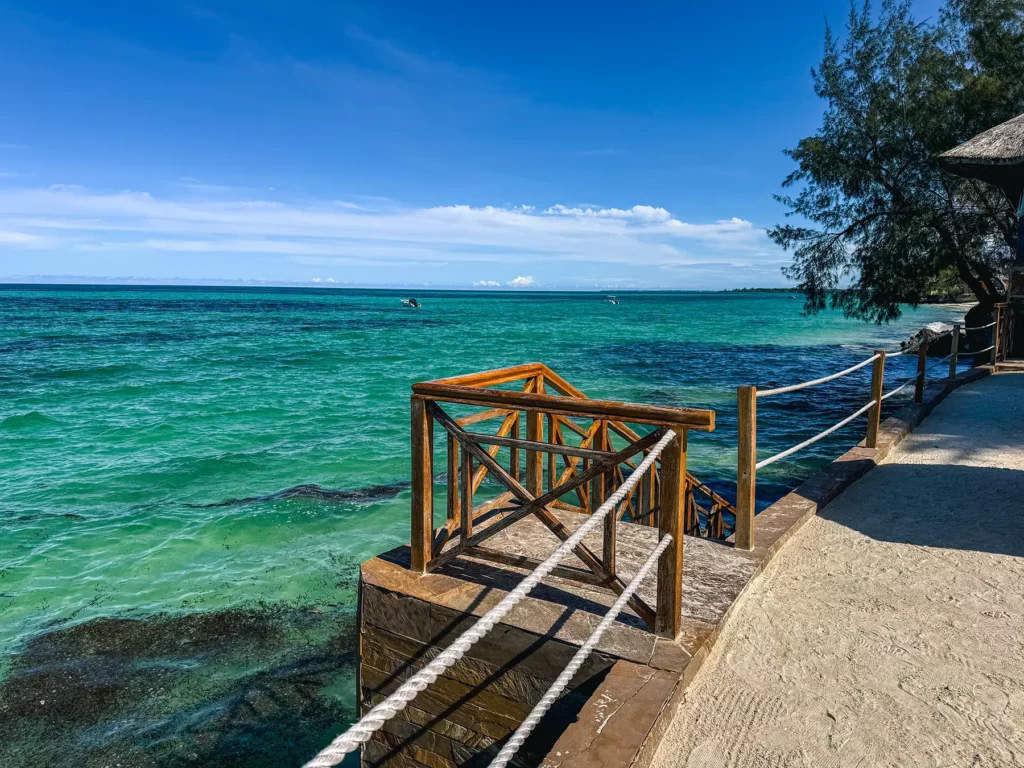
Zanzibar Logistics
Let’s take a look at the key logistics for visiting Zanzibar including how to get there, safety and vaccinations.
You can jump to more information on each Zanzibar logistics section using the links below.
What’s The Safest Way to Travel in Zanzibar?
Health and Diseases in Zanzibar
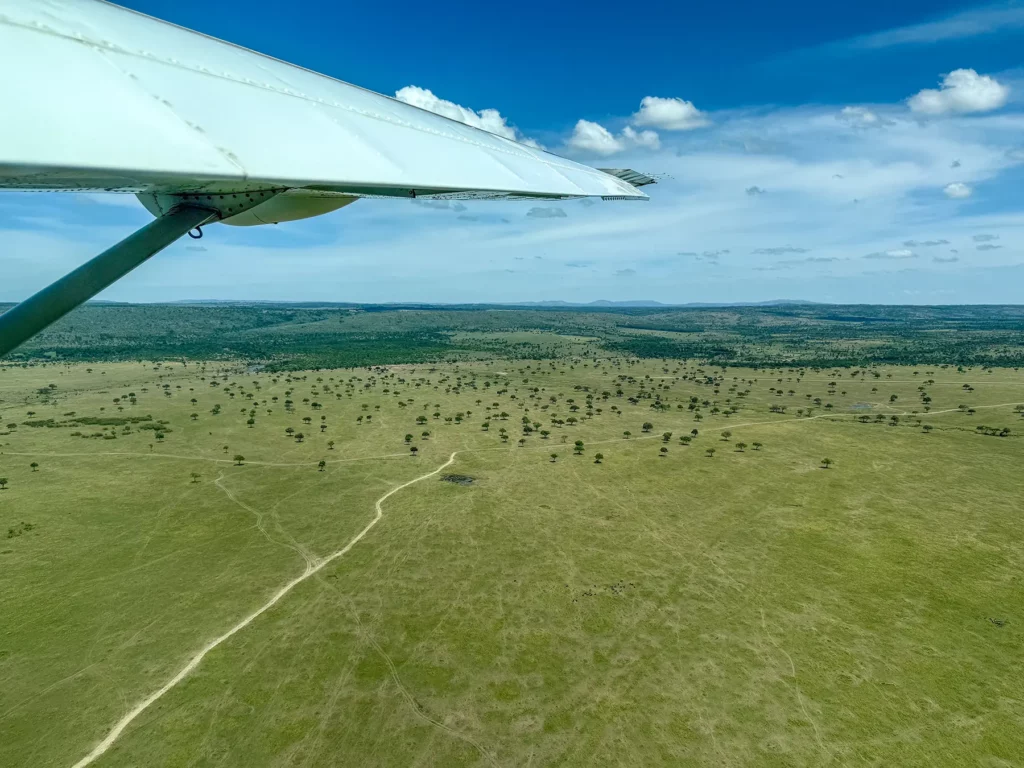
Getting to Zanzibar
First, lets look at the best ways to get to Zanzibar.
Where Do You Fly To Get To Zanzibar?
To reach Zanzibar, travellers typically fly into Abeid Amani Karume International Airport (ZNZ) on Unguja Island, the main island of the Zanzibar Archipelago. Direct flights to ZNZ from the UK, US, or Europe are uncommon; most journeys involve one or more stopovers.
Major Stopover Cities include:
- Doha (DOH) – Qatar Airways
- Istanbul (IST) – Turkish Airlines
- Addis Ababa (ADD) – Ethiopian Airlines
- Nairobi (NBO) – Kenya Airways
- Dar es Salaam (DAR) – Domestic connection from Tanzania’s mainland
- Amsterdam (AMS) – KLM with onward connections via Nairobi
- Dubai (DXB) – Emirates (to DAR, then connect)
Most routes require 1 to 2 connections, depending on the departure city.
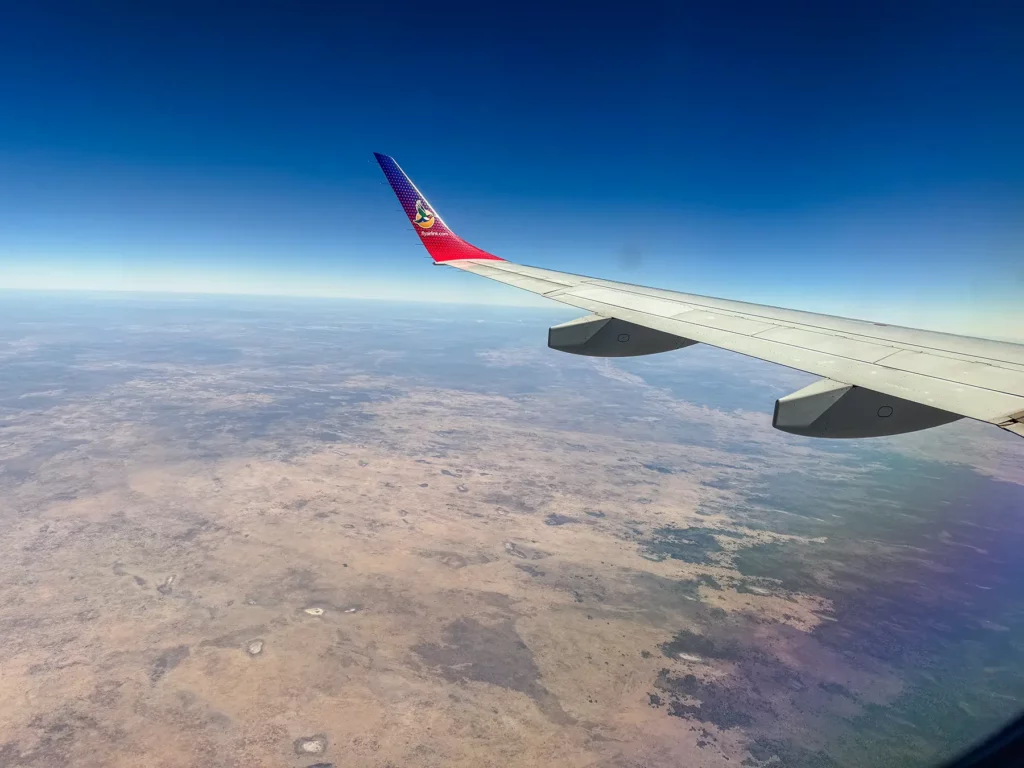
How Long Is A Flight To Zanzibar From The US?
Flight durations from the United States to Zanzibar vary depending on the departure city, airline, and any layovers. For example, flights from New York City to Zanzibar typically involve at least one stopover and have an average duration of approximately 24 hours and 29 minutes.
Similarly, flights from Washington, D.C., to Zanzibar average around 16 hours and 17 minutes. Flights from Boston to Zanzibar have an average duration of about 18 hours and 10 minutes.
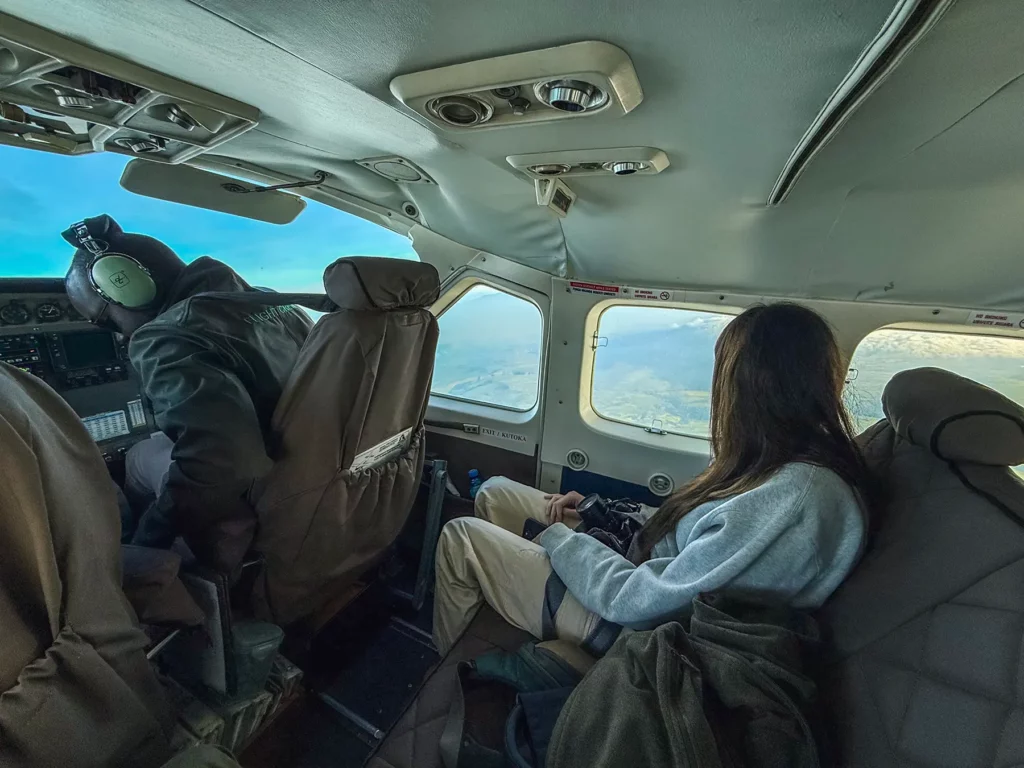
How Long Is A Flight To Zanzibar From The UK?
Flights from the UK to Zanzibar typically involve one stopover, as direct flights are rare.
From London, airlines such as Qatar Airways, Turkish Airlines, and Ethiopian Airlines offer routes with stopovers in Doha, Istanbul, or Addis Ababa.
Depending on the layovers, total travel times range from 12 to 16 hours. Similar connections are available in Manchester, often through the same hubs, with total durations typically ranging from 13 to 18 hours.

Visa & Entry Requirements
Visitors from the UK, Canada, Australia and several European countries require a single-entry visa to enter Zanzibar (Tanzania). A single-entry visa costs $50 and can be obtained on arrival or by applying online in advance, which is recommended to avoid delays at the airport.
Visitors from the USA, however, need to purchase multi-entry visas. These cost $100 and can be purchased either online or upon arrival.
It’s advisable to apply a month or two before your trip as it takes several weeks to receive the approval.
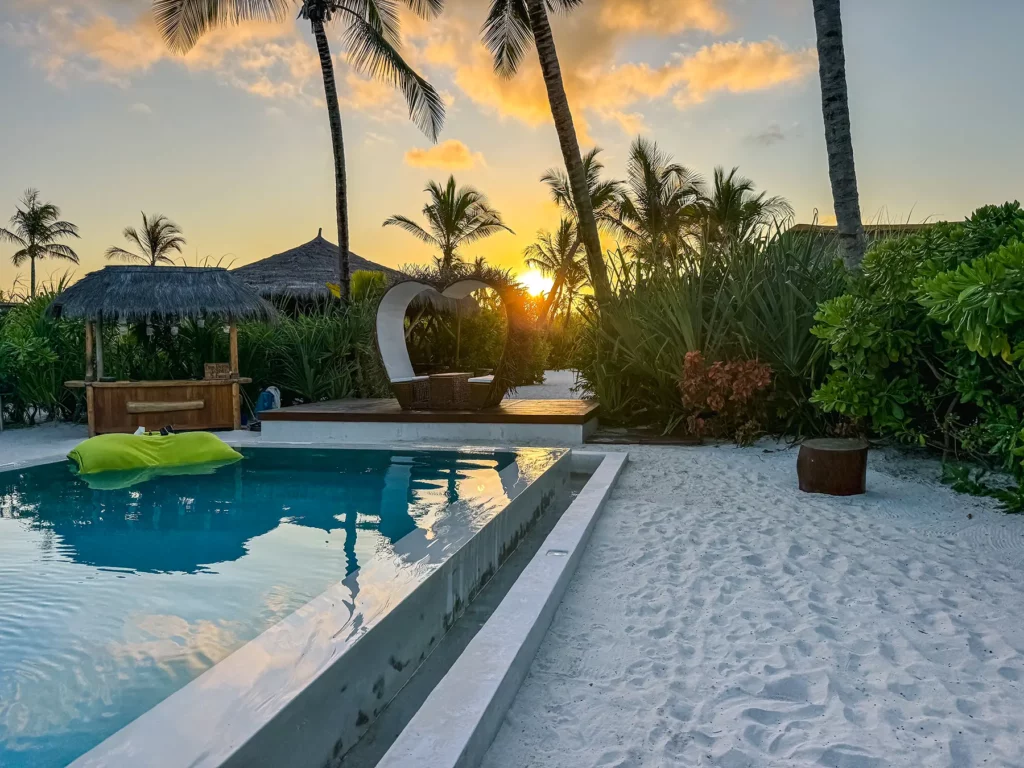
Additional entry requirements specific to Zanzibar beyond those for mainland Tanzania
As of October 1, 2024, all foreign visitors to Zanzibar are required to purchase mandatory travel insurance exclusively from the Zanzibar Insurance Corporation (ZIC). This insurance must be obtained through the official government portal: https://inbound.visitzanzibar.go.tz/ .
The policy costs $44 USD per person and provides coverage for up to 92 days, including medical emergencies, accidents, lost baggage, and repatriation. Travellers must present a QR code, issued upon purchase, at immigration upon arrival. Other insurance policies, even international ones, are not accepted for entry into Zanzibar.
You can view up to date entry requirements based on your country below.
UK government travel advice for Tanzania
USA government travel advice for Tanzania
Canada government travel advice for Tanzania

Is Zanzibar Safe?
Zanzibar is generally safe to visit and I’ve personally felt very safe during my visits. However, let’s take a closer look at the risk factors below.
Wildlife & Natural Disasters
Wildlife poses minimal threats in Zanizbar and the main wildlife hazards to watch out for are under water so wearing water shoes is the best way to prevent issues.
Risks in the water:
- Sea urchins have painful stings if stepped on
- Jellyfish & lionfish can sting so stay cautious when snorkeling
- Stonefish are rare but highly venomous
- Blue-ringed octopus, and cone snails are very rare but dangerous if handled
Risks outside of the water:
- Stray dogs may carry rabies so avoid feeding or touching.
- Sandflies can cause itchy bites so bring some bug spray which will also help with mosquitoes which I’ll cover in the malleria section below.
Zanzibar is generally safe from major natural disasters, but heavy rains and minor flooding are the most common issues.
Cyclones are rare, but remnants of tropical storms from the Indian Ocean can cause heavy rain and strong winds (mostly Nov–May).
Zanzibar experiences occasional flash floods during the long rainy season (March–May), especially in low-lying areas.
Earthquakes & Tsunamis are very rare and Zanzibar is in a low-risk seismic zone. Distant Indian Ocean quakes (like the 2004 tsunami) are potential but infrequent threats.
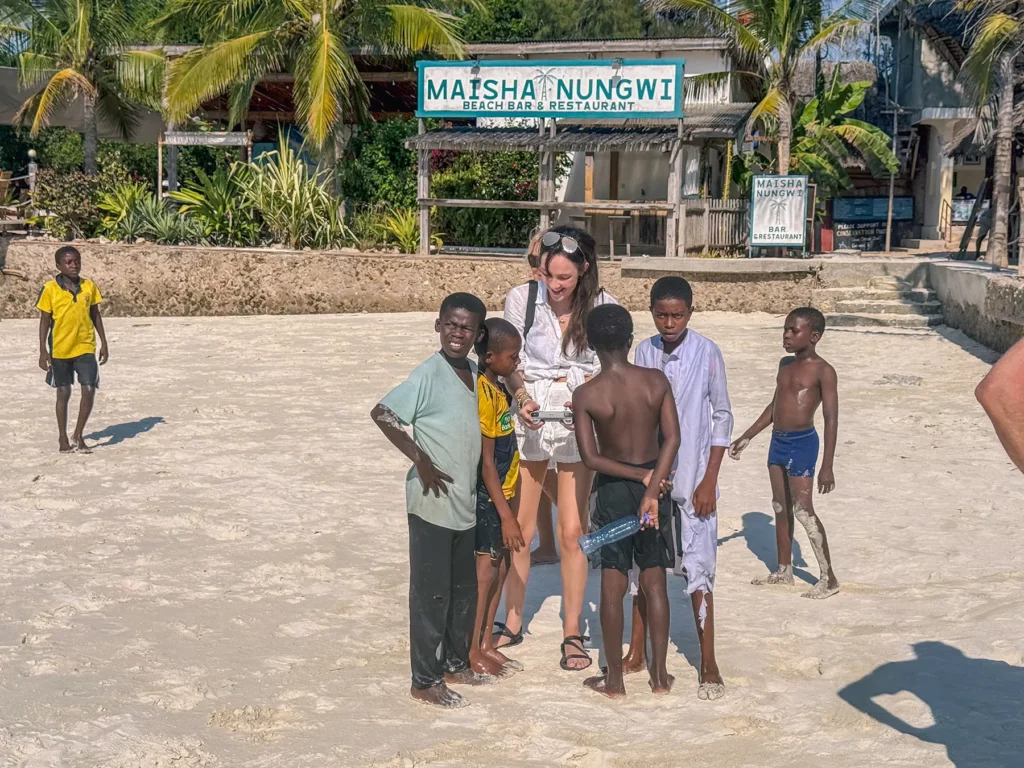
Crime in Zanzibar?
Crime and petty theft do occur in Zanzibar as they do in most tourist destinations worldwide.
Pickpockets and bag snatchers sometimes target careless and unsuspecting tourists, so you need to be vigilant, particularly in busy streets, shops, markets, beaches, and in Stone Town.
- Avoid wandering around on your own in quiet areas, especially at night.
- Violent crime, thankfully, is extremely rare in Zanzibar.
I always felt very safe in Zanzibar and had no issues with crime. I actually forgot an umbrella in a shop, and when I returned an hour later, they put it aside for me.

What’s The Safest Way to Travel in Zanzibar?
I don’t recommend self-driving in Zanzibar unless you’re experienced with self-driving in Africa. The roads are often in bad shape, local drivers don’t pay enough attention to traffic rules, and road accidents are common.
Taxi drivers are more compliant due to regular police roadblocks, so it’s best to have your tour operator or hotel arrange a taxi to pick you up from the airport or ferry terminal.
Top Tips:
- For regular taxis during your trip, booking direct with a local taxi firm will usually give you better rates than booking through hotels but make sure to check their reviews first.
- Taking a flight to and from Zanzibar is safer than taking the ferry which has had issues with overcrowding in the past.
My experience travelling in Zanzibar
I used taxis to travel around and found them very safe and professional. The standard taxi is a Toyota people carrier that is quite solid-looking.
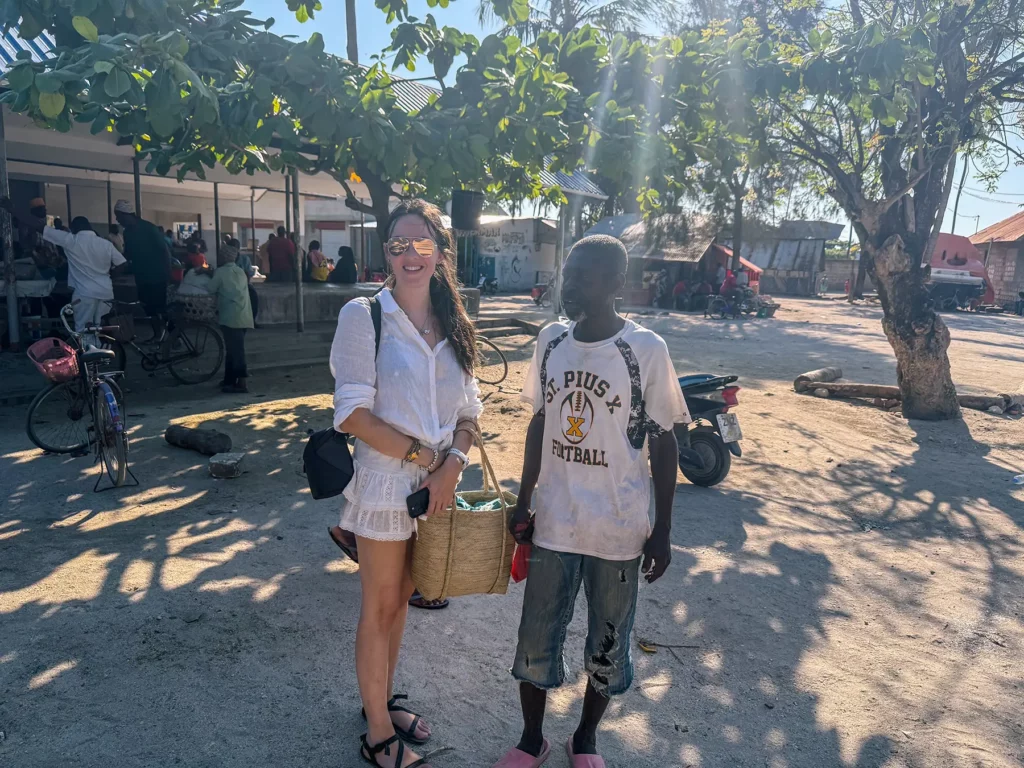
Health and Diseases in Zanzibar
Zanzibar is generally a safe place to travel and if you practice usual hygiene practices and take precautions against mosquitos, you should have a very pleasant trip with minimal chances of catching anything.
Let’s dive into the different types of health risks and how to stay safe in Zanzibar.
Food Poisoning & Other Food-Related Illnesses
Food poisoning can be a problem anywhere in the world and is usually caused by poor hygiene standards or low quality food. By sticking to reputable restaurants with positive online reviews, you greatly reduce the risk of getting sick.
Street food is typically a bad idea as you have no idea how the food has been prepared and there’s a chance it’s been out for long periods of time.
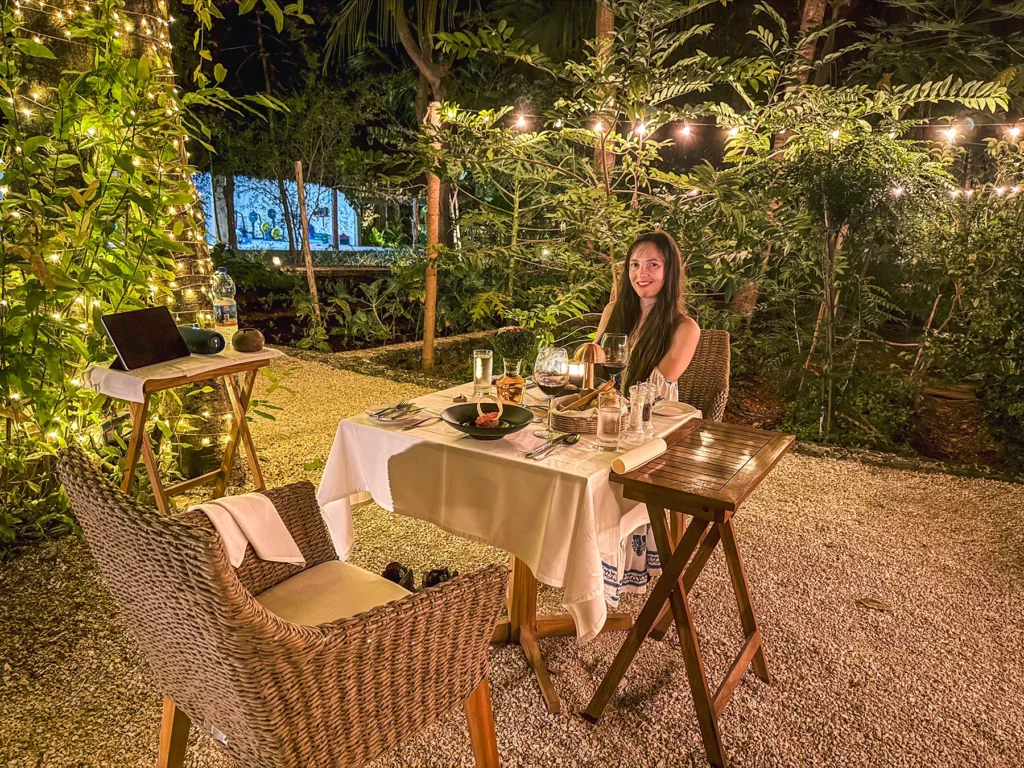
Avoid drinking tap water and ensure any bottled water that you purchase is sealed. To be very safe, it’s advisable to refrain from eating salad, ice cream, having ice in drinks and other instances where food may have come into contact with tap water. Whilst it’s unlikely that high-end hotels wash their produce in tap water, it’s good to ask them to be sure.
Hepatitis A and Typhoid are two diseases which can be caught from contaminated water or food washed in contaminated water. There are vaccines available for both of these illnesses.
In my experience, the food from top-rated hotels and restaurants is typically top-notch. No one in my party had any issues with food poisoning when I visited Zanzibar. However, we were sensible, sticking to well-reviewed eateries and avoiding high-risk foods.

Mosquito-Related Diseases
Mosquitos are present in Zanzibar and there is a risk of contracting malaria, dengue fever and chikungunya.
To protect against malaria, anti-malarial medication is often advised. Additional precautions include using mosquito repellant (DEET is the most effective), wearing long-sleeved shirts and trousers, and sleeping under a mosquito net. Mosquitos which carry malaria are typically active at night.
There’s no medication you can take to protect against dengue or chikungunya so to avoid these illnesses, wear long clothing, use DEET and sleep under a mosquito net.
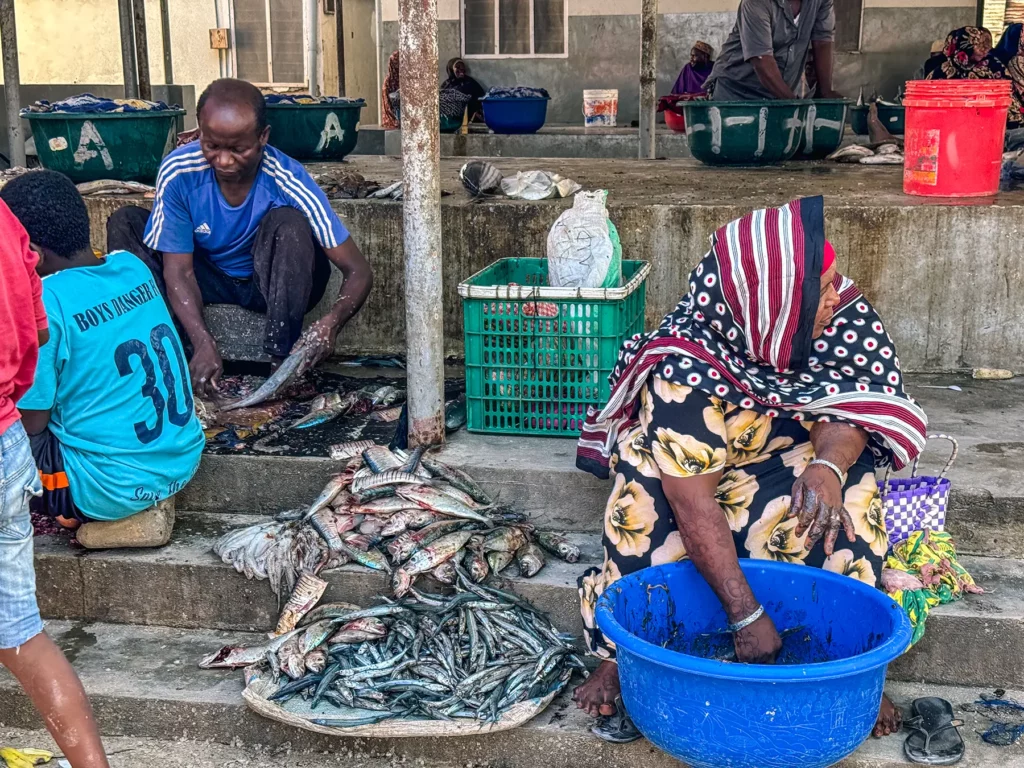
Vaccinations
No mandatory vaccines are required to enter Zanzibar, unless you are coming from a country which has a risk of Yellow Fever (such as Kenya or Uganda), in which case you would need to present a Yellow Fever vaccination certificate upon arrival in Zanzibar,
There are a number of recommended vaccines that you can take to ensure you are safe in Zanzibar. You can view a list of them here.
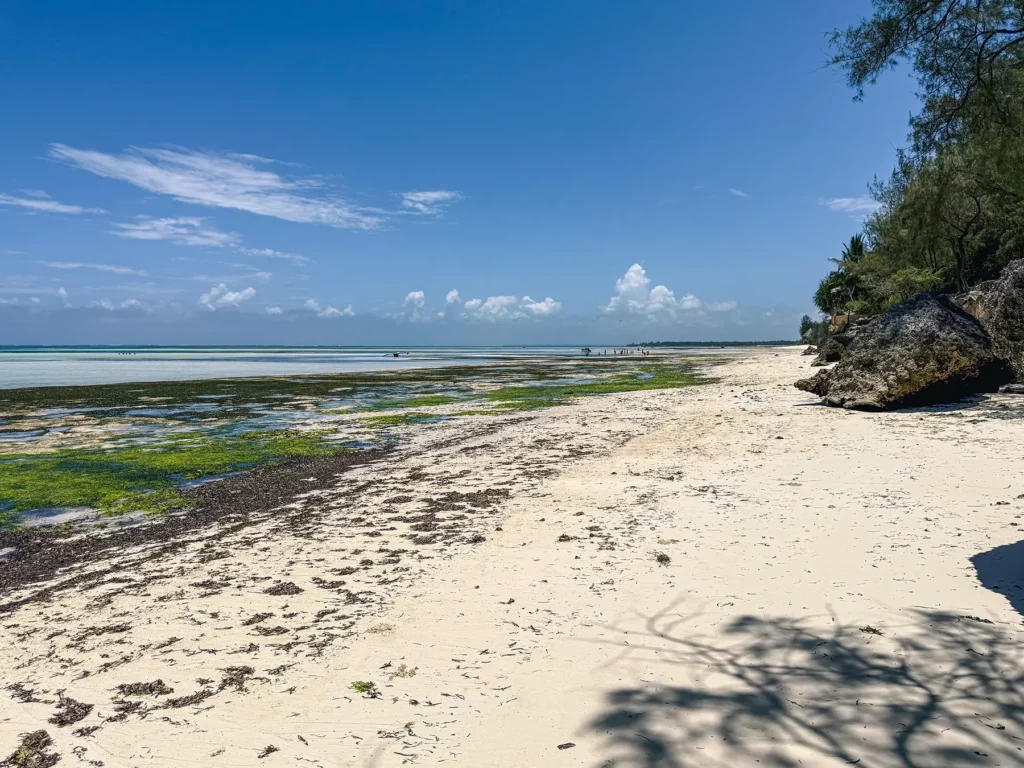
Is Zanzibar a Malaria Area?
Although the risk of malaria in Zanzibar is significantly lower than that on the mainland in Tanzania, it still poses some risk, especially during the long rainy season from March to May.
Anti-malaria medication is an option, and certainly if you will also spend time on the mainland in the game reserves.
Spraying exposed body parts with mosquito repellent, especially at night, and sleeping under a mosquito net are reasonable precautions.
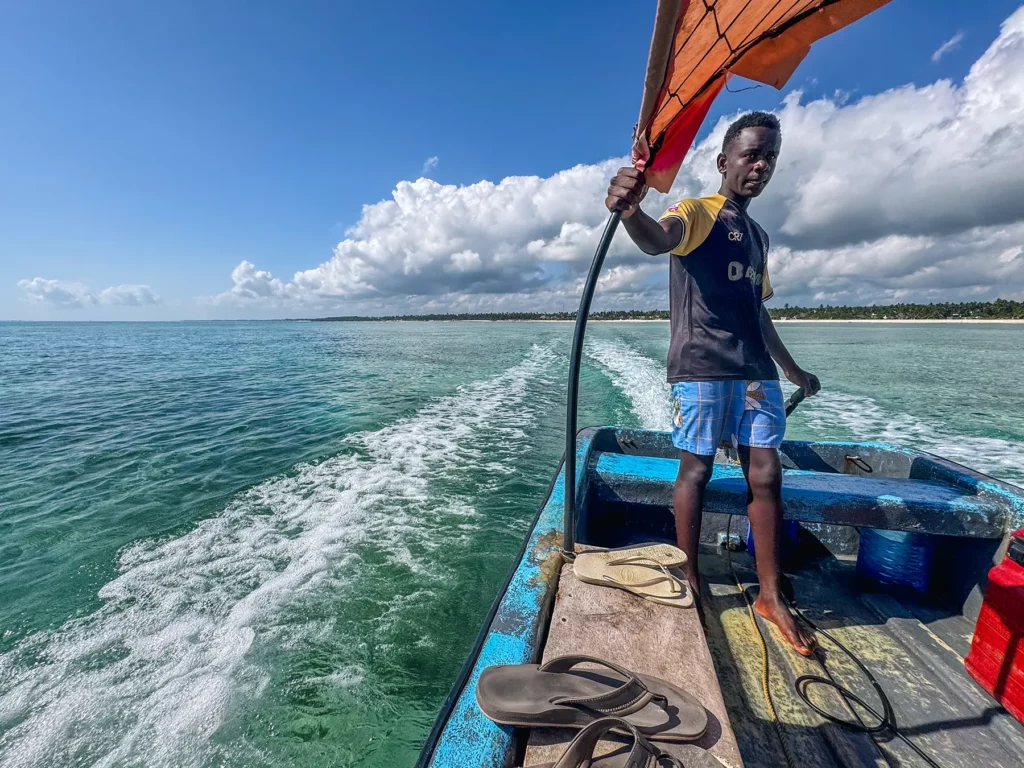
Is Zanzibar Safe for Females?
Yes, women are generally safe in Zanzibar. That said, as the island is predominantly Islamic, you should dress and behave appropriately in public places such as Stone Town.
Avoid wearing revealing clothing on the streets; covering from the shoulders to the knees is the general rule. However, you can dress as you like in resorts and hotels.
Is Zanzibar Safe for LGBT Couples?
Being predominantly Islamic, homosexuality is prohibited in Zanzibar, so LGBTQ couples need to be discreet in public. However, if you are inside the premises of a tourist resort, you should be totally fine. I met several LGBT couples staying in the same resorts as me in Zanzibar.
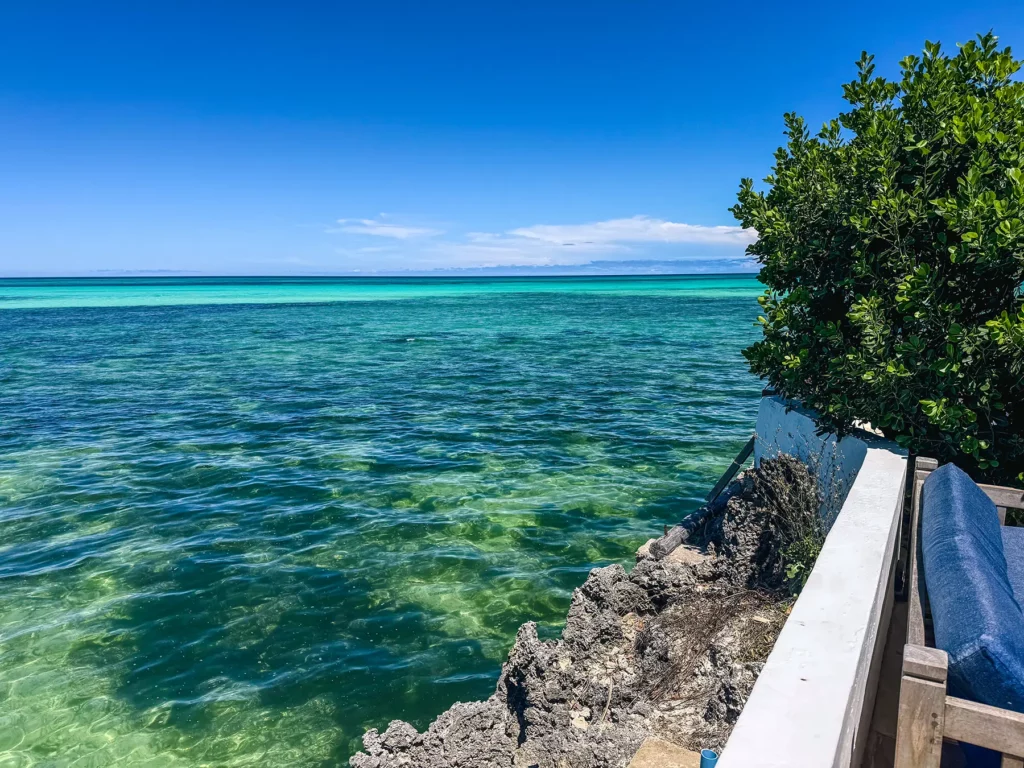
Serengeti & Zanzibar for Safari and Beach
With some of the world’s finest game reserves located in Tanzania, it’s very popular to combine a Serengeti safari, the premier wildlife reserve in Tanzania, with relaxing beach time in Zanzibar.
In my opinion it really would be a shame to visit Zanzibar and not add on a safari before or after!
Let’s get into some of the details.

How Do I Get From Serengeti To Zanzibar?
The Serengeti is a vast reserve, but fortunately, there are airstrips in virtually every area. These allow you to fly directly to Zanzibar or, in some cases, via Arusha.
As Zanzibar is part of Tanzania, the flights are domestic.
Flightlink and Coastal Aviation are two airlines that provide regular and efficient services to and from the Serengeti and Zanzibar.

How Long Does It Take To Fly From Zanzibar To The Serengeti?
Direct flights typically take approximately 2 to 3 hours, depending on the specific route and aircraft used.
One-way fares can start from around $322, with round-trip tickets averaging approximately $462.
How Many Days Do You Need In Serengeti And Zanzibar?
I recommend at least 10 days in Tanzania and Zanzibar, with 7 days in Tanzania and 3 days in Zanzibar. If time permits, 2 weeks would work well, too.
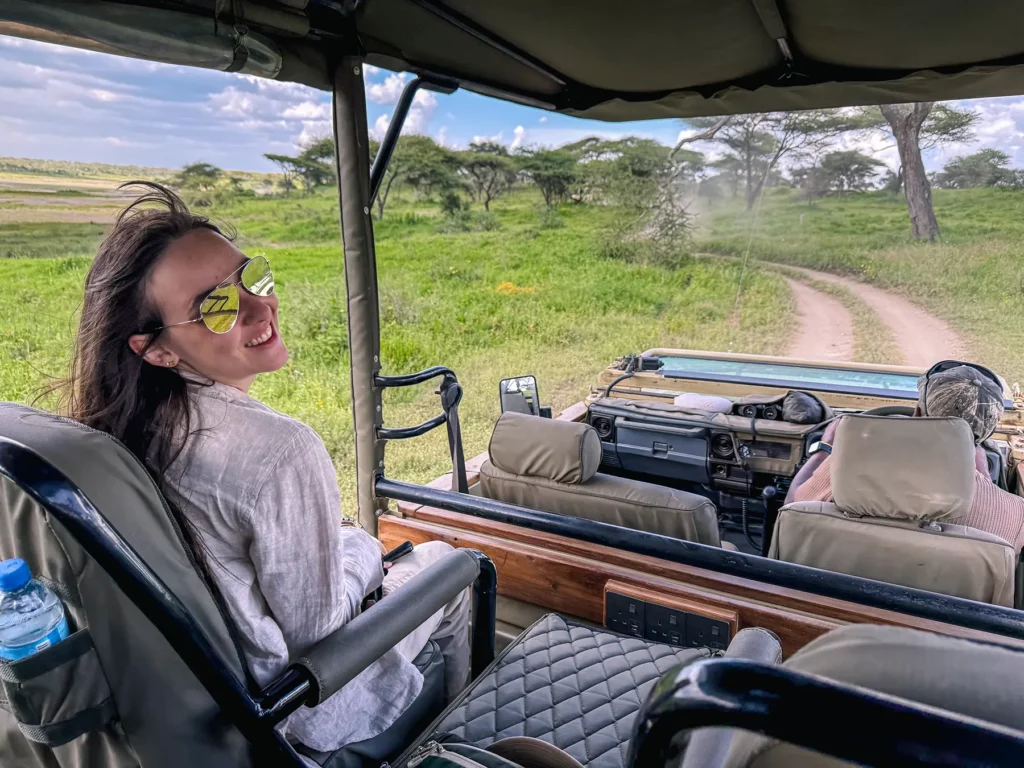
How Does Zanzibar Compare with Other Safari & Beach Destinations?
Let’s take a look at how Zanzibar stacks up against other popular beach destinations.
Spoiler alert: It stacks up pretty damn well but let’s dig into how each destination compares with Zanzibar.
You can jump to each of the comparisons using the links below.
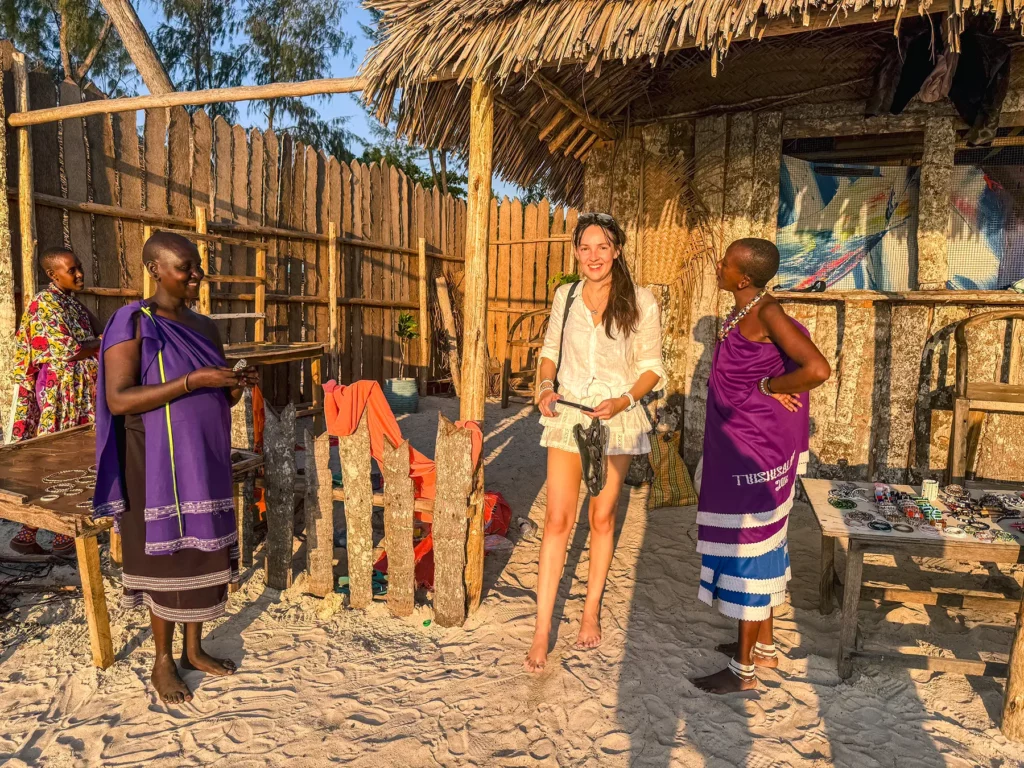
Zanzibar vs Seychelles
The Seychelles is also situated on the Indian Ocean and offers a similar array of beach and water-related experiences.
The Seychelles also consists of a series of islands, but in total, they make up less than one-third of the size of Zanzibar.
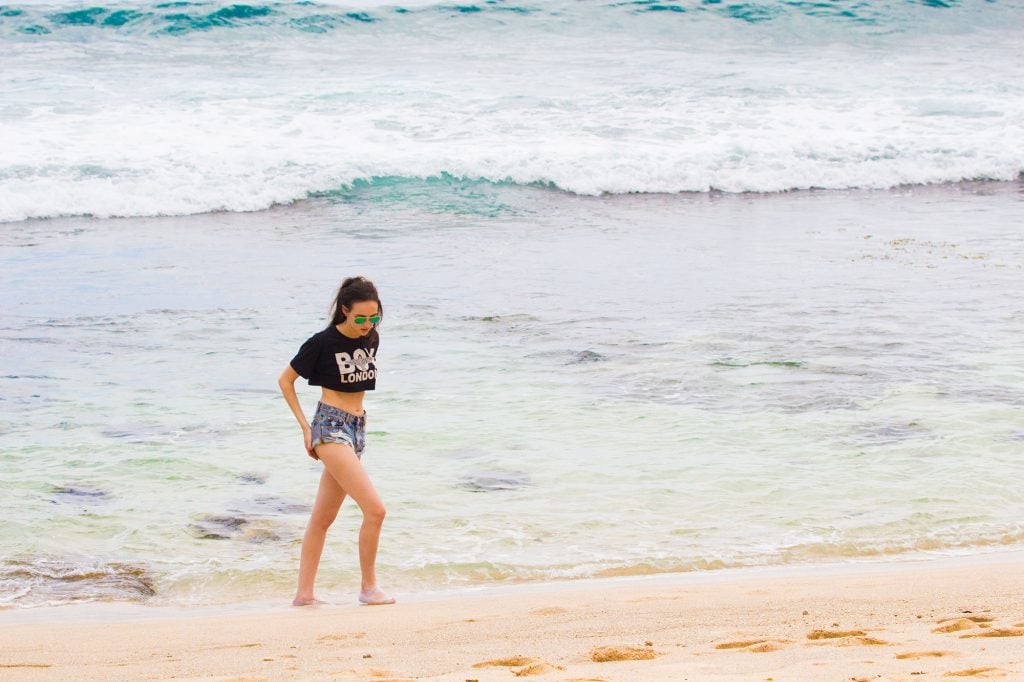
Quick Comparison
Size – Winner: Zanzibar is larger and more diverse, with more towns, activities, and cultural experiences.
Cost – Winner: Zanzibar is generally more affordable in terms of accommodation, dining, and excursions.
Best Beaches – Winner: Seychelles is famed for its dramatic granite boulders and secluded, pristine beaches.
Ease of Combining with Safari – Winner: Zanzibar is located in Tanzania, making it a natural extension of the Serengeti and other East African safaris.
Overall Winner: Zanzibar has better value, more culture, and is easy to combine with a safari for a perfect safari and beach holiday. However, Seychelles does give Zanzibar a run for its money in terms of the best beaches!

Zanzibar vs Maldives
Another tropical paradise location perfect for swimming and snorkelling is the Maldives.
They consist of nearly 1,200 tiny coral islands, mainly located along the equator, all of which are simply chocolate-box beautiful. It is among our planet’s best diving and snorkelling destinations, surrounded by crystal blue waters teeming with marine life.
The Maldives is also known for its luxurious resorts, many of which are in the sea with overwater bungalows, allowing you to fall out of your bed into the water.
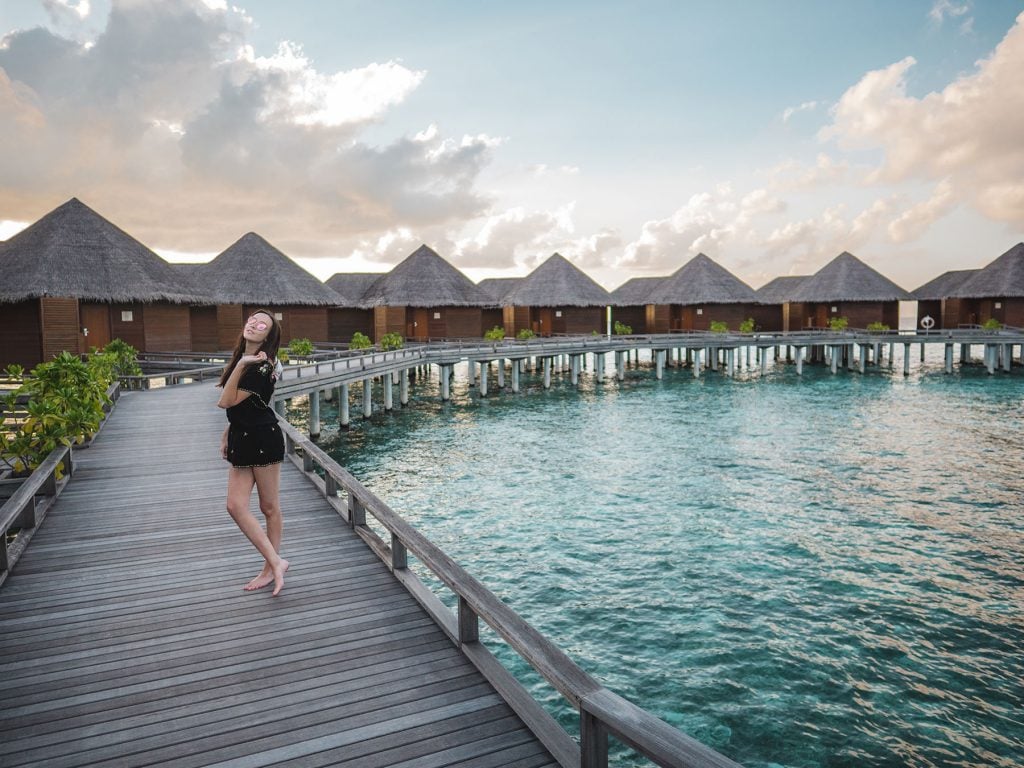
Quick Comparison
Size – Winner: Zanzibar is significantly larger and offers a greater variety of landscapes, towns, and cultural sites.
Cost – Winner: Zanzibar offers a broader range of budget to mid-range options, making it more accessible.
Best Beaches – Winner: The Maldives is renowned for its pristine white sands, crystal-clear waters, and iconic overwater villas.
Ease of Combining with Safari – Winner: Zanzibar is in Tanzania, making it an easy add-on to top East African safari destinations.
Overall Winner: Zanzibar is a better value, culturally rich, and easier to combine with a safari.
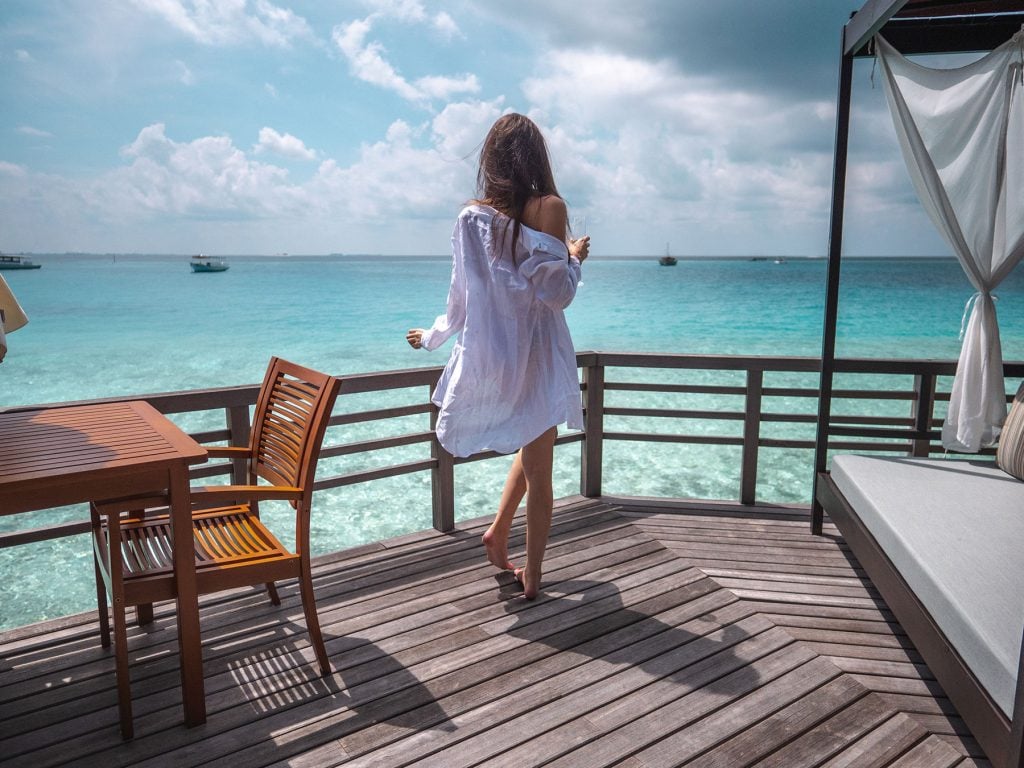
Zanzibar vs Bali
Another popular beachside holiday destination is the island of Bali, situated in Indonesia on the easternmost edges of the Indian Ocean.
Occupying a much larger area—nearly four times the size of Zanzibar—it boasts a varied and beautiful landscape, featuring lush forests, rivers, waterfalls, manicured rice paddies, mountains, and volcanoes.
Quick Comparison
Size – Winner: Bali is larger and more developed, offering a wide range of landscapes, towns, temples, and nightlife.
Cost – Winner: Bali is cheaper than Zanzibar overall for most travellers, particularly backpackers and mid-range tourists.
Best Beaches – Winner: Zanzibar offers quieter, more pristine beaches with white sand and clear waters.
Ease of Combining with Safari – Winner: Zanzibar is located in East Africa and is easily paired with safari destinations, such as the Serengeti.
Overall Winner: Zanzibar is better for a combination of safari and beach. It has better beaches and still offers excellent value for money.
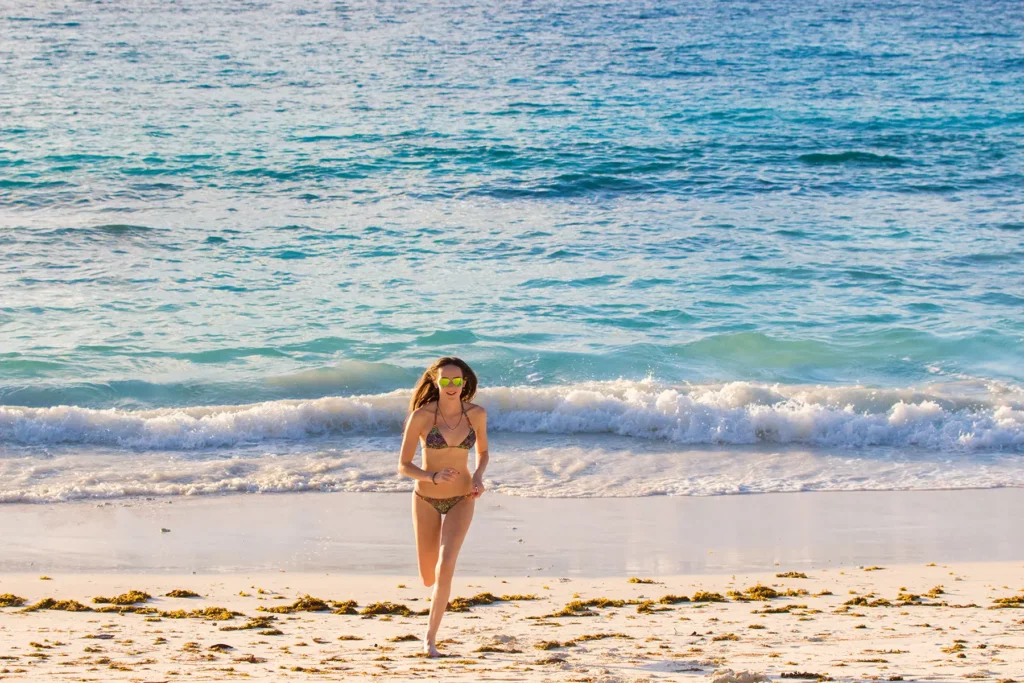
Zanzibar vs Mauritius
Mauritius and Zanzibar both offer great water activities and stunning beaches. However, Mauritius focuses on modern luxury, with vibrant nightlife and upscale shopping, while Zanzibar retains a rich multi-cultural heritage and offers more budget-friendly, authentic experiences.
Zanzibar boasts ancient architecture, spice farms, and laid-back, high-end lodges, whereas Mauritius features colonial architecture, Creole culture, and upscale resorts that cater to different travel preferences.
Quick Comparison
Size – Winner: Mauritius is larger and more developed, with varied terrain, towns, and inland attractions, such as mountains and waterfalls.
Cost – Winner: Zanzibar is generally more affordable for accommodation, food, and tours.
Best Beaches – Draw: Both offer long stretches of clean, swimmable beaches with calm turquoise lagoons.Ease of Combining with Safari – Winner: Zanzibar is located in Tanzania and easily paired with top safari parks like Serengeti and Ngorongoro.
Overall Winner: Zanzibar is better suited for safari and beach combos, offers stronger cultural experiences, and is of better value.
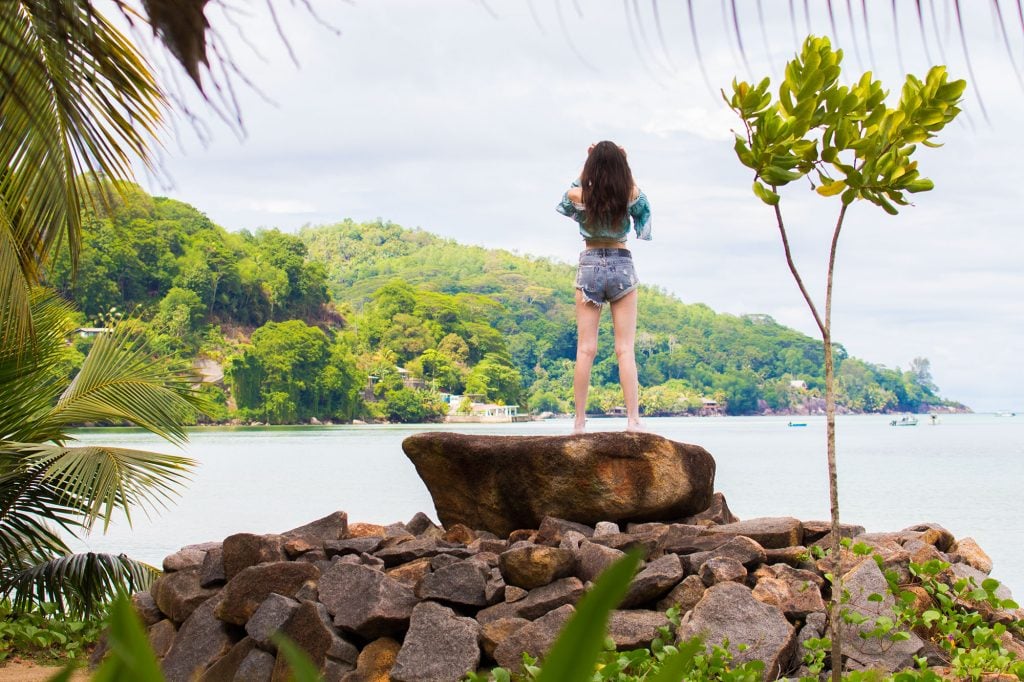
Best Zanzibar Itineraries
Below are my recommended itineraries for visiting Zanzibar.
These itineraries can be done either on their own or incorporated into longer Tanzania itineraries, including visiting national parks such as the Serengeti.
You can jump to more information on each Zanzibar itineraries using the links below.
7-Day Zanzibar Honeymoon Itinerary
Tanzania and Zanzibar Itinerary
1-Day Zanzibar Day Trip
This itinerary is to be coupled with a safari vacation. A full day of relaxation in Zanzibar should precede or follow a busy spell on safari in mainland Tanzania.
One day is never enough to experience all this island has to offer, but if you start early enough, you can fit in some incredible sightseeing and beach therapy.
I recommend spending your day in and around historic Stone Town. Start by meandering its narrow streets for a few hours, getting a real sense of the local vibe and all the history that has gone before. Don’t miss the site of the Old Slave Market, the towering fort, or perhaps the home of Freddie Mercury.
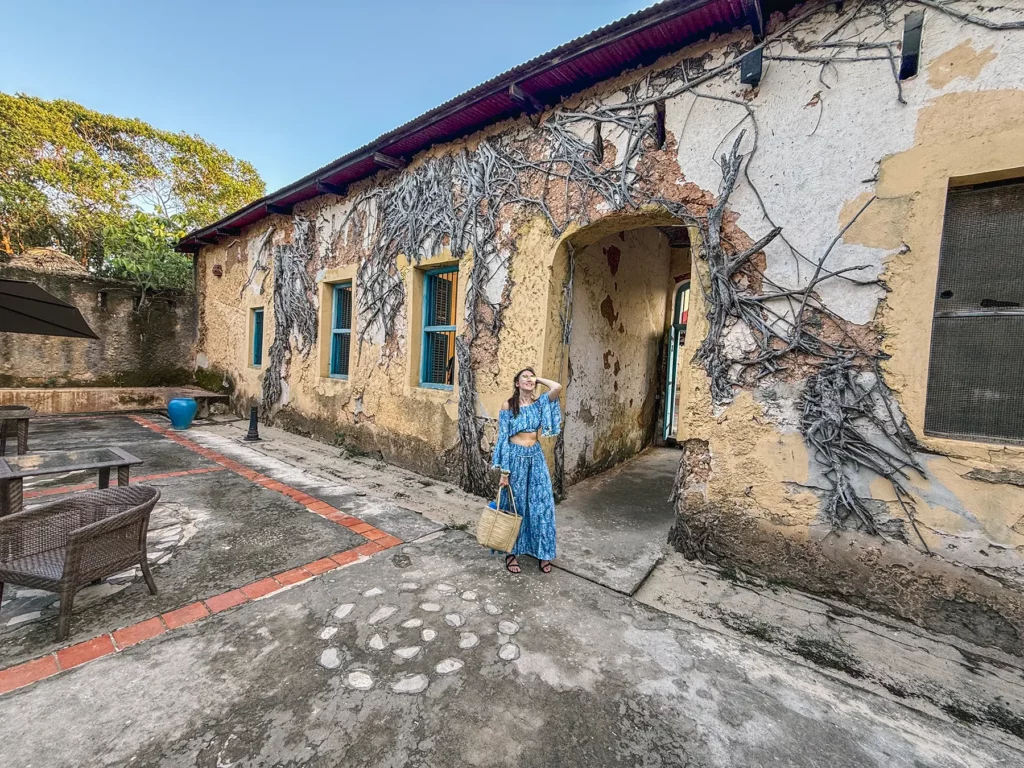
There will be time for a snack and a cup of coffee in one of the famous cafes and perhaps a quick trip to Prison Island, not only for its historical significance and tortoise sanctuary, but also to get a glimpse of Stone Town from another perspective.
You could spend the rest of the afternoon swimming, snorkelling on a coral reef, or lazing on one of the many beaches, before retiring to your lodge for a traditional Zanzibari dinner, or flying home or to your next destination.
You can watch a video of my experience in Zanzibar below.
7-Day Zanzibar Honeymoon Itinerary
Here is my recommended 7-Day honeymoon itinerary in Zanzibar. You can also view my detailed 10-day Tanzania and Zanzibar Itinerary.
Day 1: Stone Town
After booking in at your hotel or lodge, you get your first taste of laid-back island life by taking a stroll through the charming, narrow streets of the historic Stone Town.
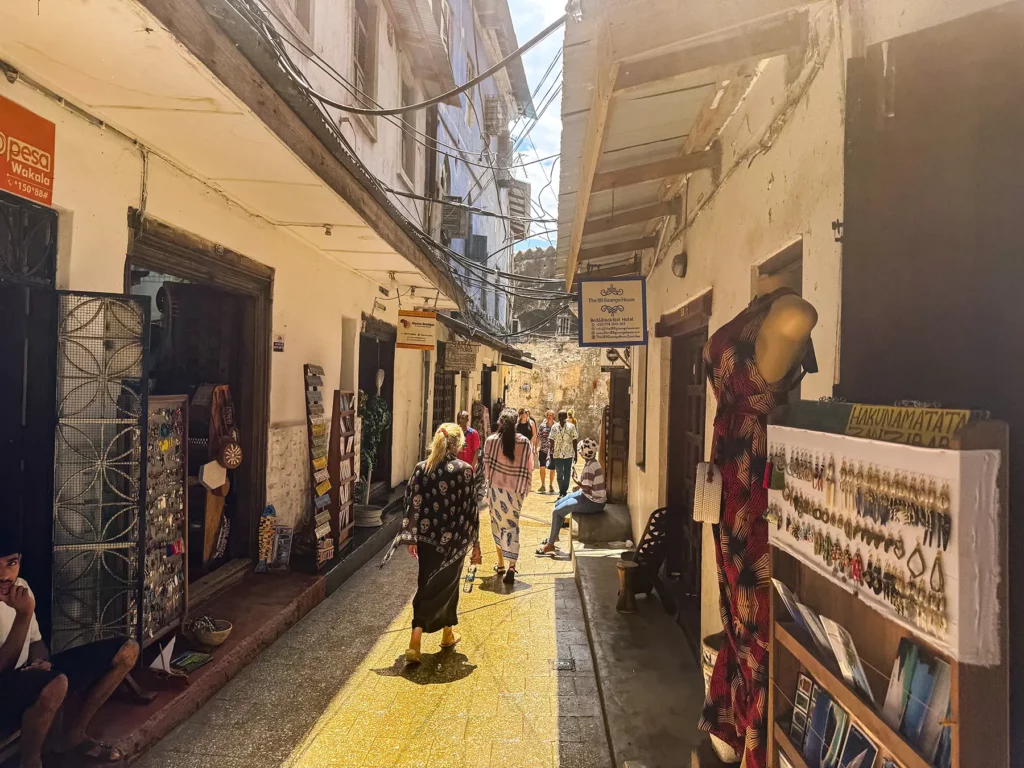
You’ll come across tall minarets, intricately carved wooden doors, the Old Fort, cathedrals and the site of the Old Slave Market, going past coffee bars, shops, street vendors and markets while the aromas of cloves, nutmeg and cinnamon follow you wherever you go.
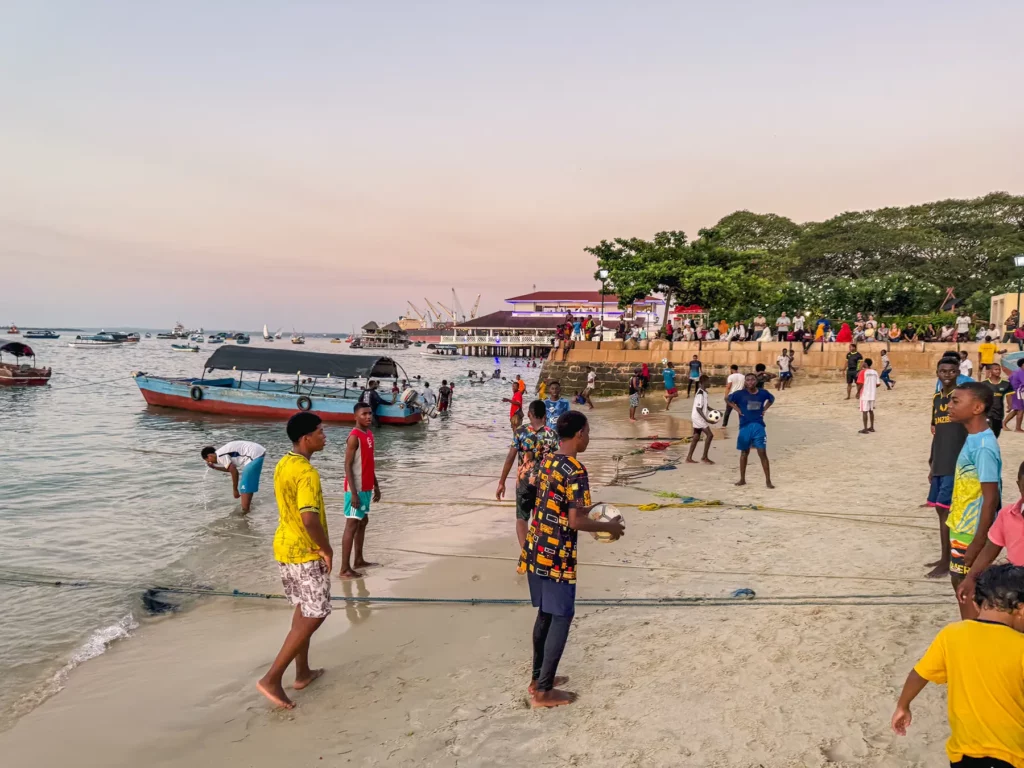
In the afternoon, take a boat ride to Prison Island to visit the tortoise sanctuary, or catch a sunset sailing cruise aboard a traditional Arabian wooden dhow.
Jump to more information on Stone Town.
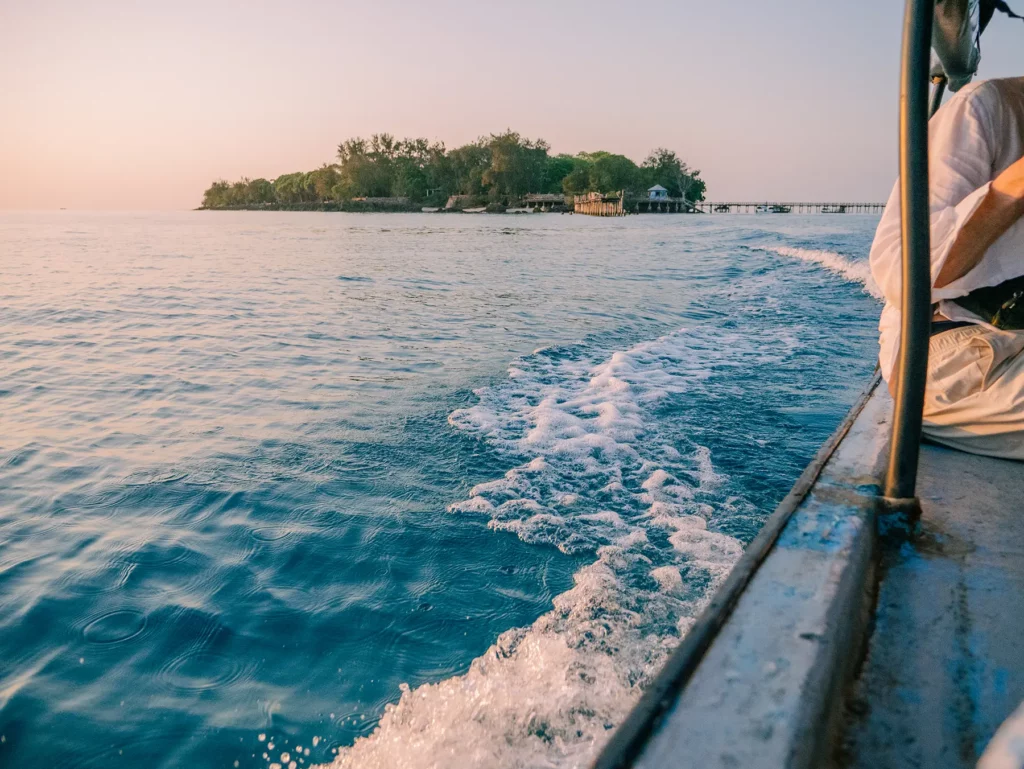
Overnight at your lodge.
Days 2 – 3: Kendwa Beach
In the morning, you set off to what is, for many, the best beach in Africa – Kendwa Beach.
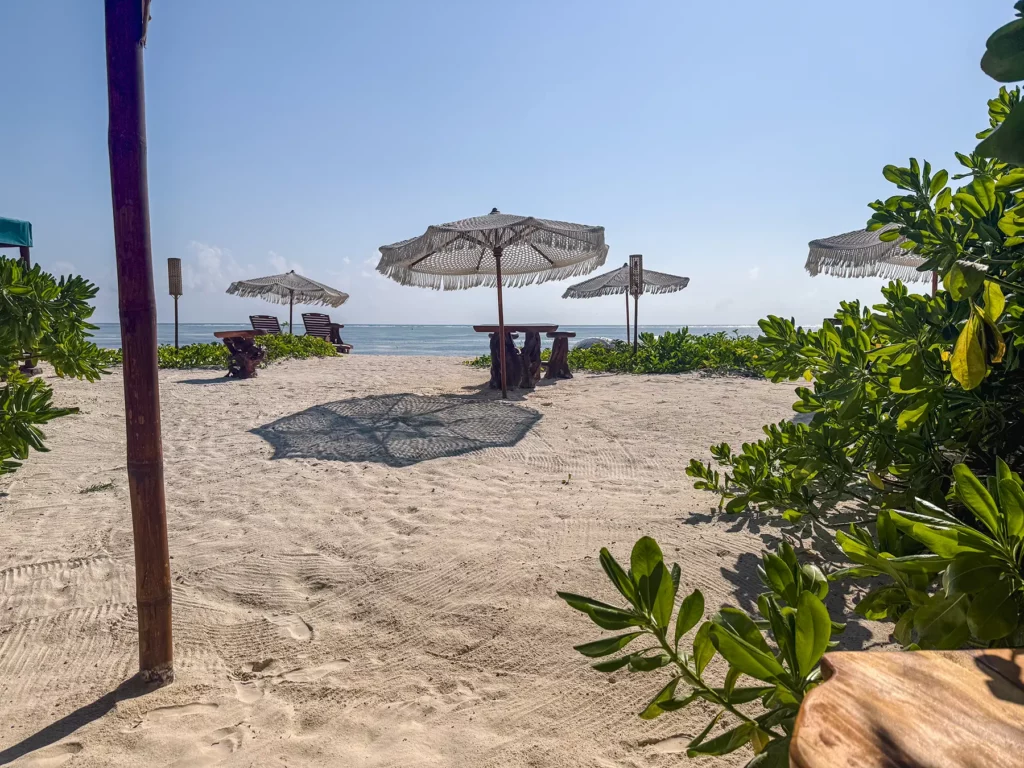
Situated on the north west-facing coast, you have tranquil waters on your doorstep to laze on the white sandy beach, swim, snorkel in its crystal waters, take a cruise to a nearby island, and when the day is done, enjoy a romantic dinner on the beach. Not a bad place to spend 2 days.
Jump to more information on Kendwa Beach.
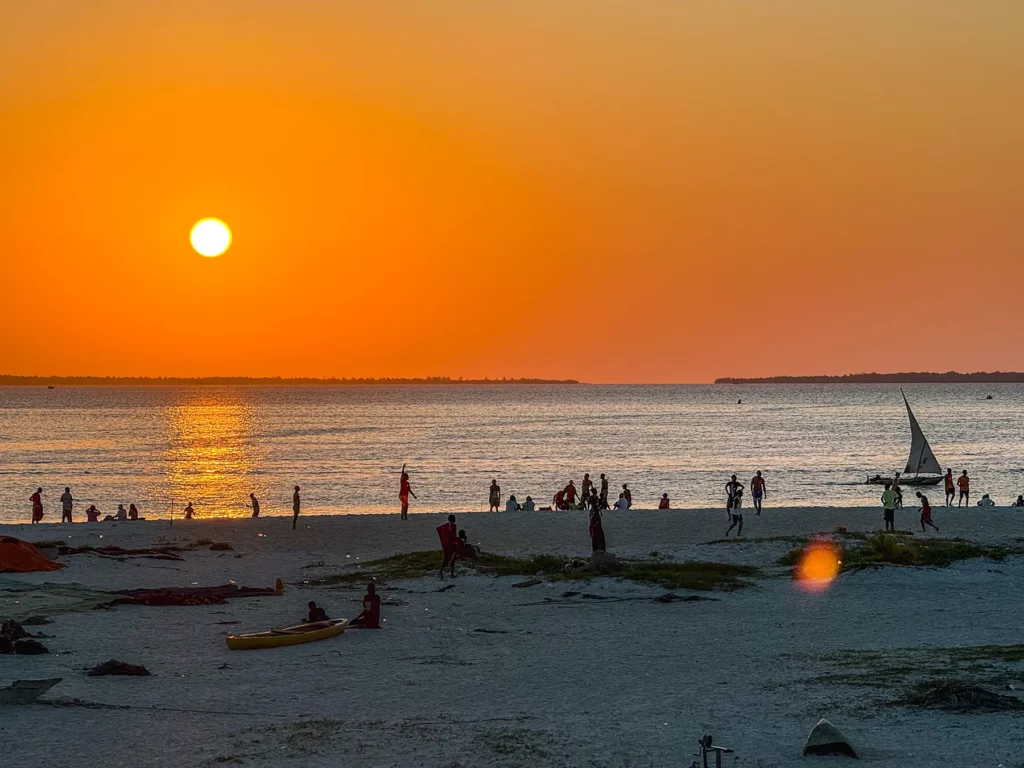
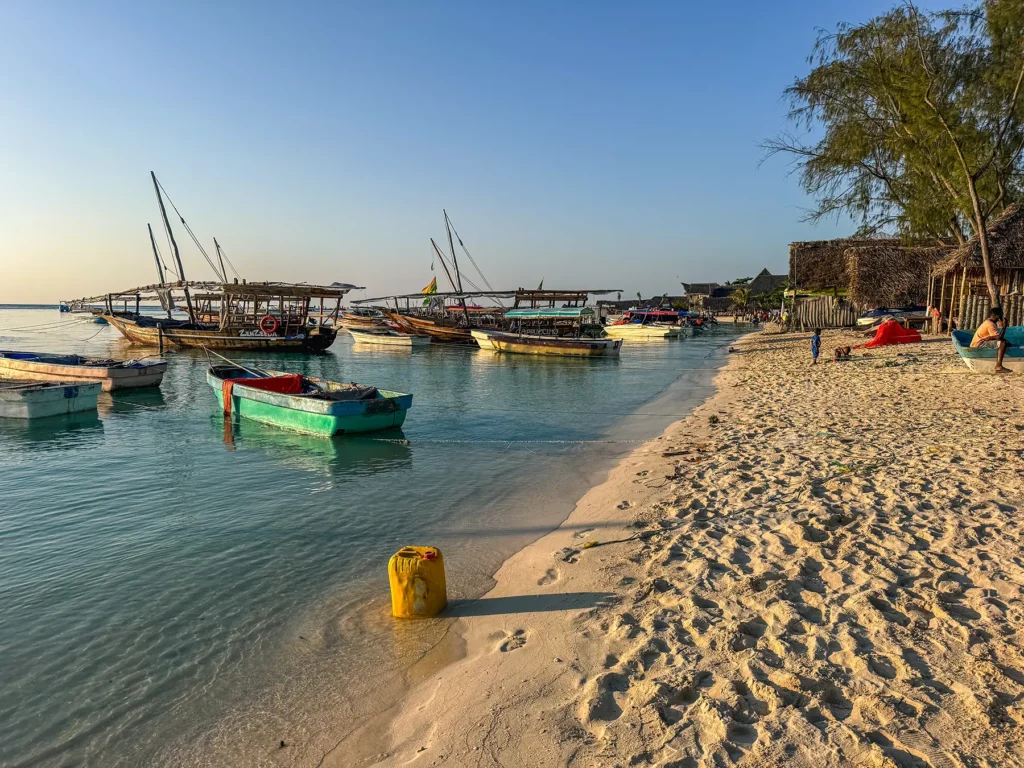
Days 4 – 5: Nungwi Beach
Located a little further away on the northern tip of Zanzibar, Nungwi is another dream romantic destination. Its location has minimal tidal movement, ensuring water activities can take place all day long, and sunsets are even more spectacular from here.
You can spend the day relaxing on the beach, sipping cocktails and dining in the numerous bars and restaurants on the water’s edge.
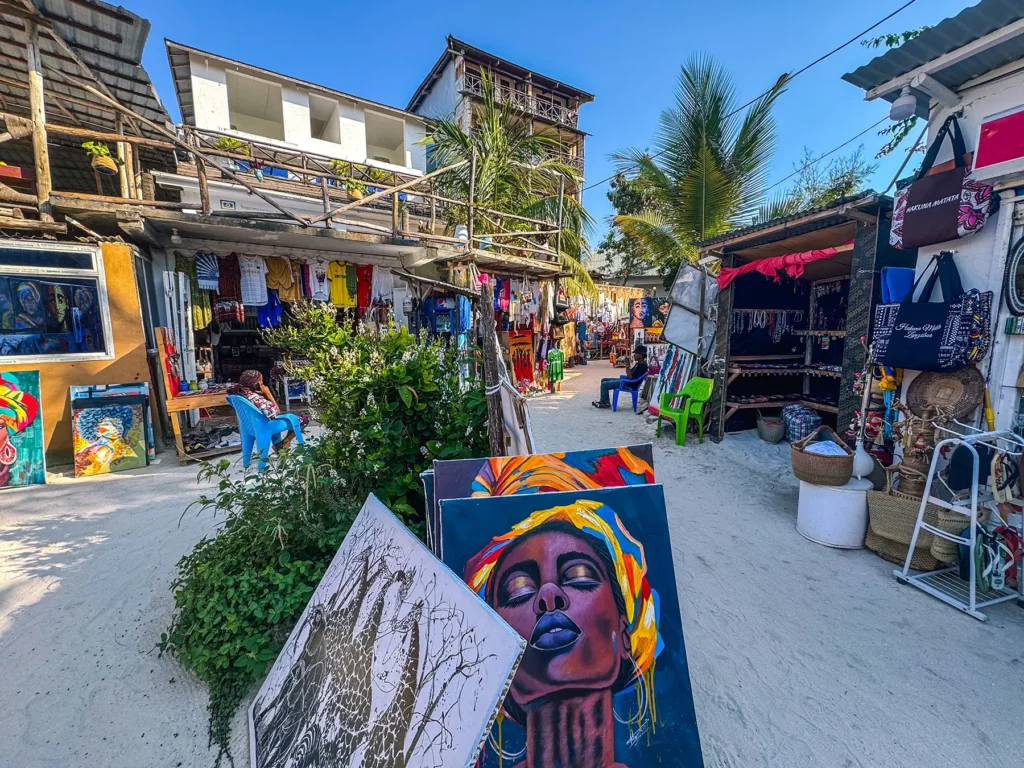
Top Tip: I would personally avoid swimming with turtles at the Nungwi Sanctuary, as it seems unethical. Reports suggest that turtles have little to no separation from humans despite being solitary creatures in the wild and can, therefore, be prodded and overcrowded by swimming tourists.
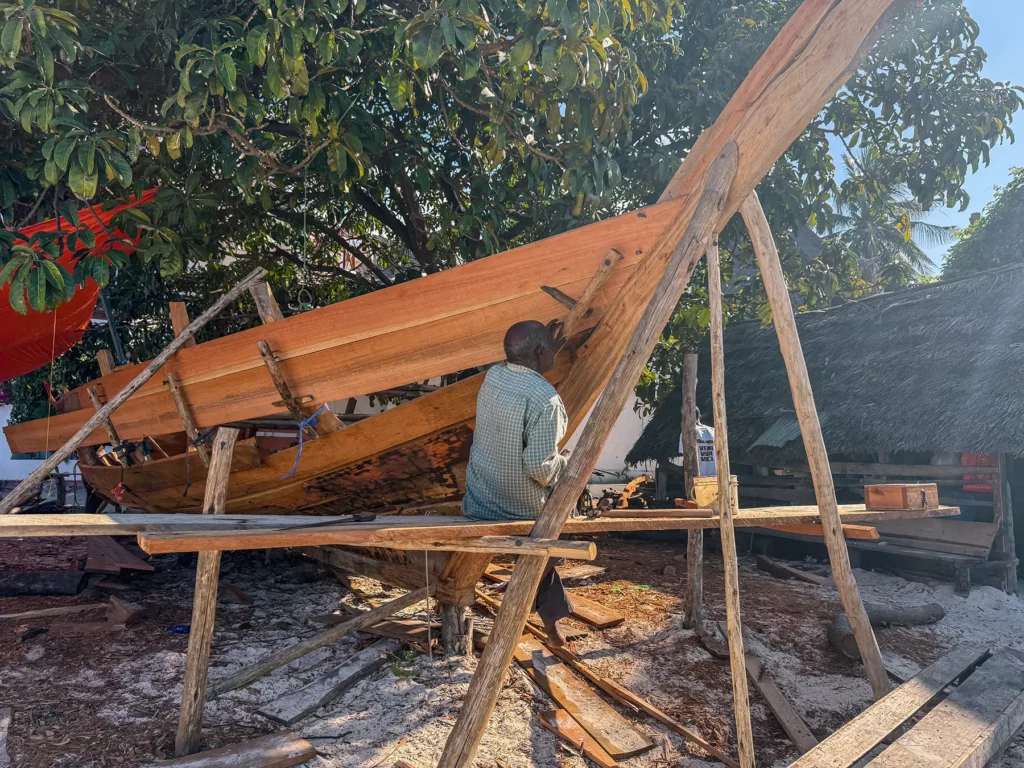
Meanwhile, reviewers allege that the owners make little effort to reduce the number of people and overfeed the turtles to increase tourists’ visibility. Some doubt that the turtles are rehabilitated at all, although I couldn’t confirm this.
Jump to more information on Nungwi Beach.
Overnight at your lodge.
Day 6: Mnemba Marine Reserve (Mnemba Atoll)
In the morning, you can organise a private boat with pretty much any hotel on the North East coast which will take you to one of the best snorkelling and diving reefs on Zanzibar – Mnemba Marine Reserve.
The boats take around 20 minutes to get to the Mnemba Marine Reserve.
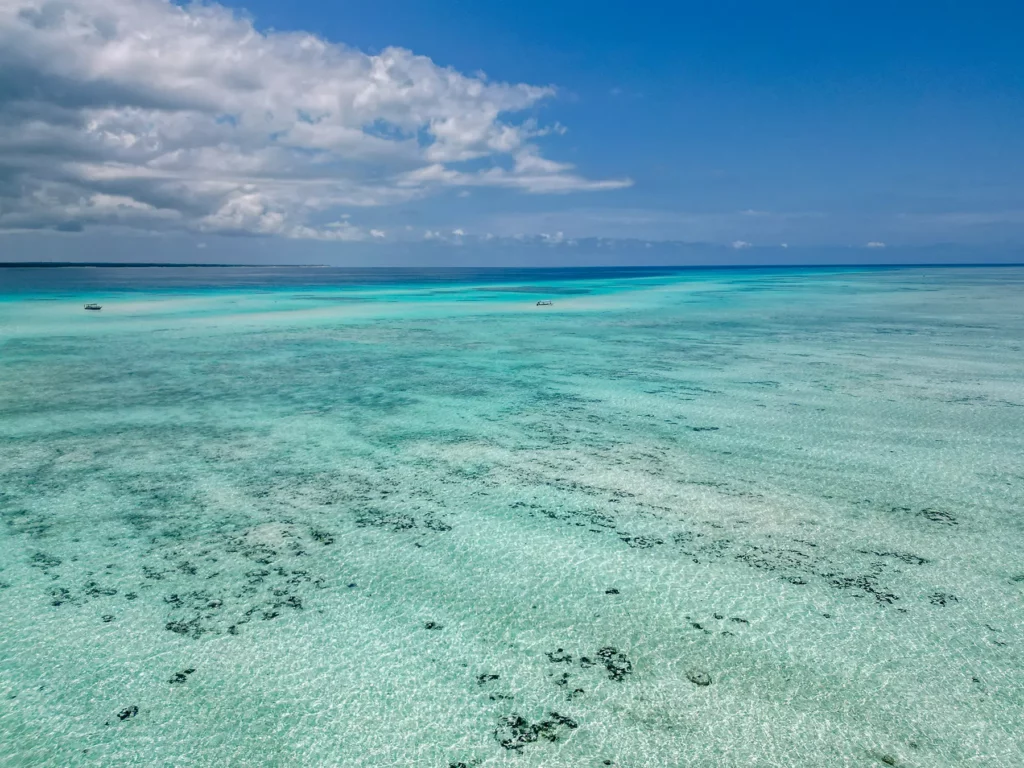
Once you reach the atoll reefs, you will experience sublime snorkelling conditions, swimming over coral reefs teeming with hundreds of brightly coloured fish, and perhaps seeing a turtle or even swimming with a dolphin.
Overnight at your lodge on the beach and enjoy your last romantic dinner and night on the island.
Jump to more information on Mnemba Marine Reserve.
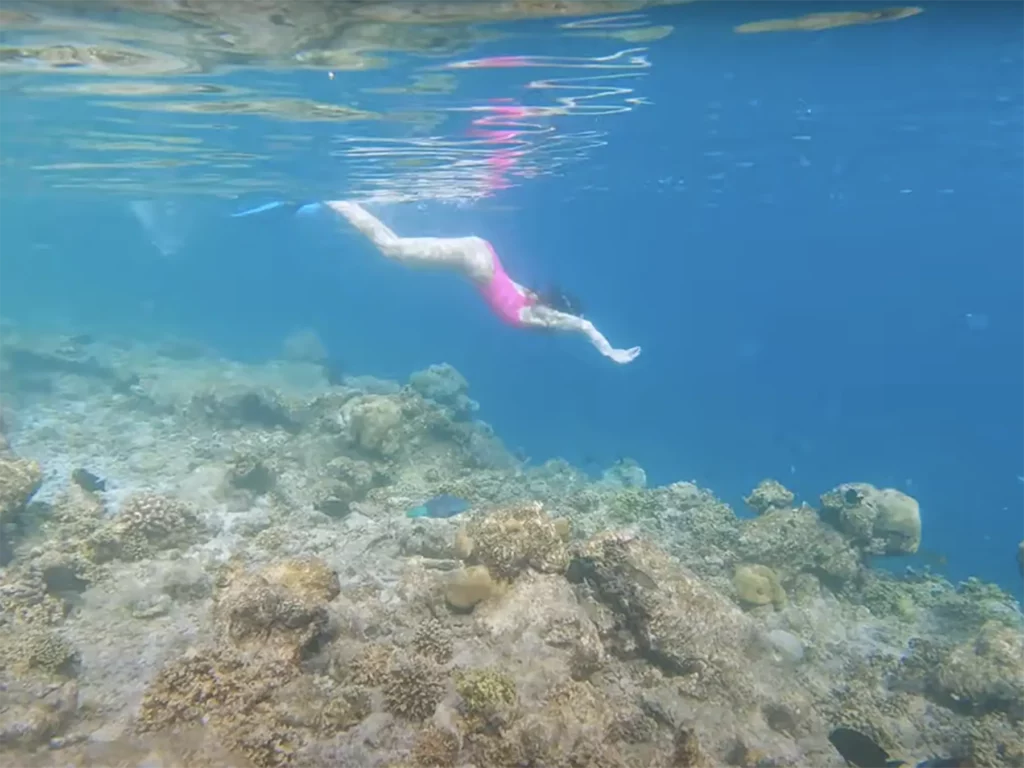
Day 7: Beach Time and Return to the Airport at Zanzibar City
After breakfast and some time on the beach, you set off by taxi back to the airport near Stone Town from where you can fly home or extend your honeymoon with a few days on safari in the famous Serengeti or any of the other world-class safari reserves in Tanzania.
Should you choose to extend your honeymoon, the next 3 days could go something like this.
3-Day Safari from Zanzibar
With only three days to spend on safari, I’ve chosen the two best safari reserves in Tanzania and, coincidentally, two of the best in the world to make your honeymoon or safari trip as memorable as possible.
Being located close together, the Serengeti and Ngorongoro Crater make the perfect combination.
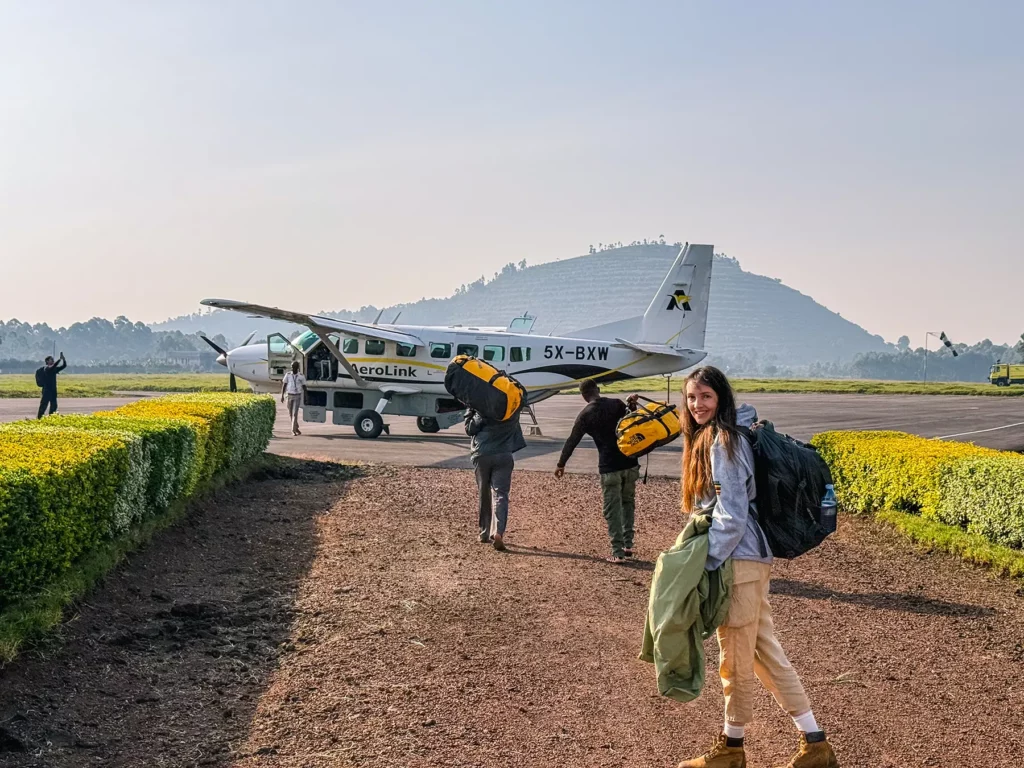
Day 1: Serengeti
Flight time: 3-4 hours
You catch an early morning flight to Seronera, a central district of the Serengeti National Park. After having lunch and a short rest at your lodge, you will go on your first game drive in the Serengeti.
This area is known for its vast savannahs and high concentration of big cats and other smaller predators. The open and flat grasslands are dotted with high rocky outcrops known as kopjes (pronounced “copies”), which lions, leopards, and cheetahs use as lookout posts to survey the landscape and pick out their prey.
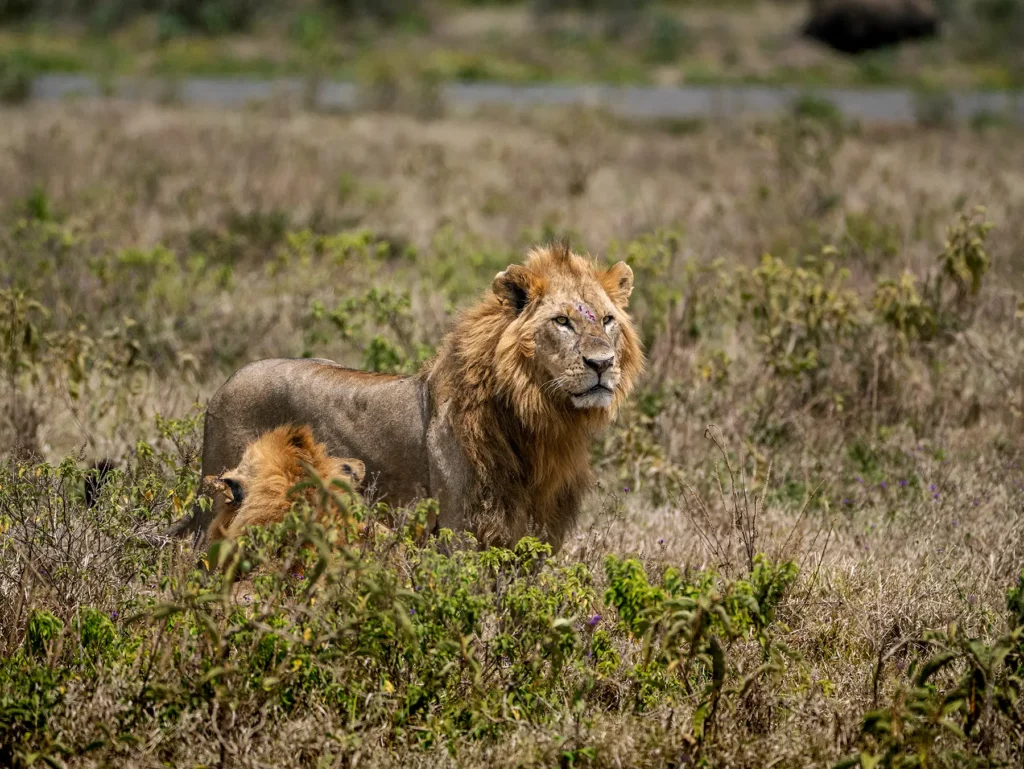
This area is also home to a wide variety of herbivores, including wildebeest, zebra, giraffes, elephants, buffalo, and several antelope species, such as Thomson’s gazelles and impala.
In and around the rivers and watering holes, you’ll find hippos and crocs.
As the sun begins to set on the Serengeti, you will return to your lodge for the night.
My Experience in Serengeti National Park
You can watch a video of my experience visiting Serengeti National Park below.
Day 2: Serengeti
Total driving time (excluding game drives): 4 hours
Day 2 starts with a game drive at dawn, as this is the time when the wildlife is most active and presents the best chances of witnessing a kill. Depending on the time of year you’re visiting, which dictates the location and numbers of various species, your guide will choose an area most likely to produce more sightings.
This area is on the Great Migration route, and if you’re there during June, July, and perhaps August, you stand a good chance of seeing massive herds of wildebeest and zebras on the plains and related big cat activity.

After lunch, you will leave the Serengeti and journey towards one of the most magical wildlife reserves on our planet – the Ngorongoro Crater. You will arrive at your lodge, situated on top of the crater rim, with the park spread out over 2,000 feet (610 m) below – a sight to behold.
Day 3: Ngorongoro Crater
Total driving time (excluding game drives): 4 hours
Once again, your game drive starts really early to give you the best chance of seeing the rare black rhinos which inhabit the crater floor.
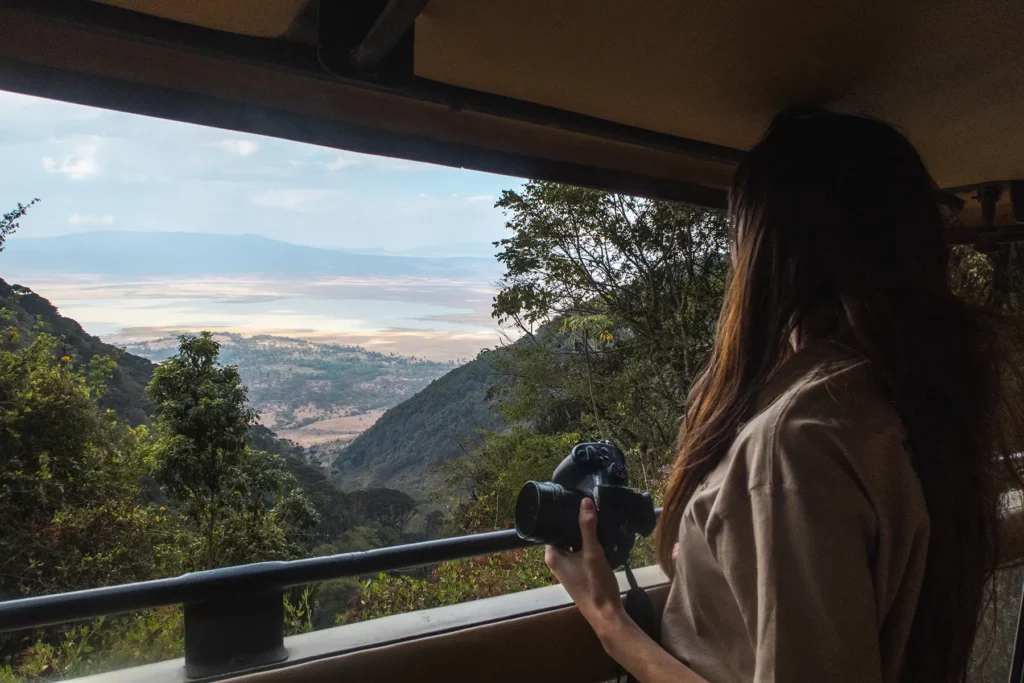
As you descend, it feels like you’re entering a lost world. The crater floor has a super high density of lions so keep your eyes peeled!
The centre of the crater floor contains a famous lake, which is a haven for aquatic birds and home to hippos and millions of pink flamingos, making for an incredible sight.
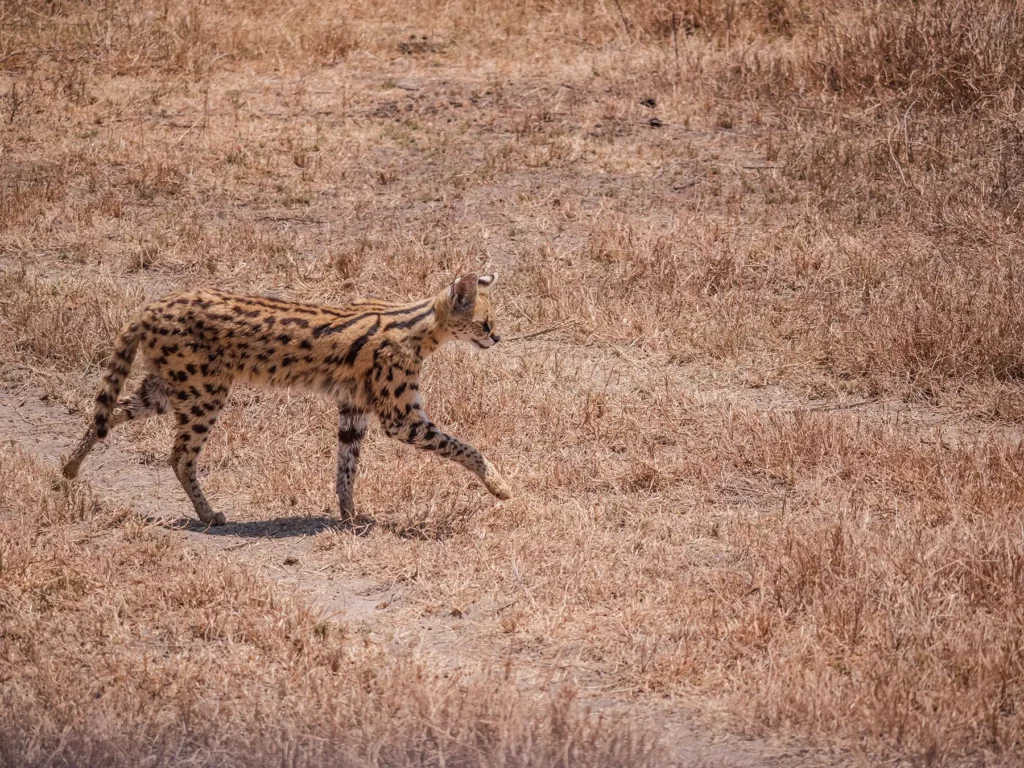
You won’t see any crocodiles as the waters are too alkaline for them, or giraffes as the steep crater walls prevent them from entering the park.
After lunch, you climb up the steep slopes of the crater, exiting Ngorongoro and starting a 4-hour drive to Arusha, where your 3-day safari comes to an end. You can either fly home or back to Zanzibar.
My Experience in Ngorongoro Crater
You can watch a video of my experience visiting Ngorongoro Crater below.
Recommended Booking Options For Your Safari and Beach Itinerary
Safari with local tour operator
Most popular & best experience – typical prices for this itinerary start from $250 per person per day.
Visit safarisbyella.com for free quotes from trustworthy local tour companies I use to book my own trips.

10-Day Zanzibar Itinerary
This 10-day itinerary is less rushed, allowing ample time to visit most of Zanzibar’s attractions, including its wildlife reserves and historic town, and take various tours. You can also relax on the many stunning beaches around its shores.
Day 1: Unwind on Matemwe Beach
Situated on the northeast-facing coast of Zanzibar, Matemwe Beach is an ideal spot to relax in a tranquil atmosphere, with nothing but white sandy beaches, tall palm trees, and a blue ocean to swim, snorkel, kitesurf, or just laze in the sun.
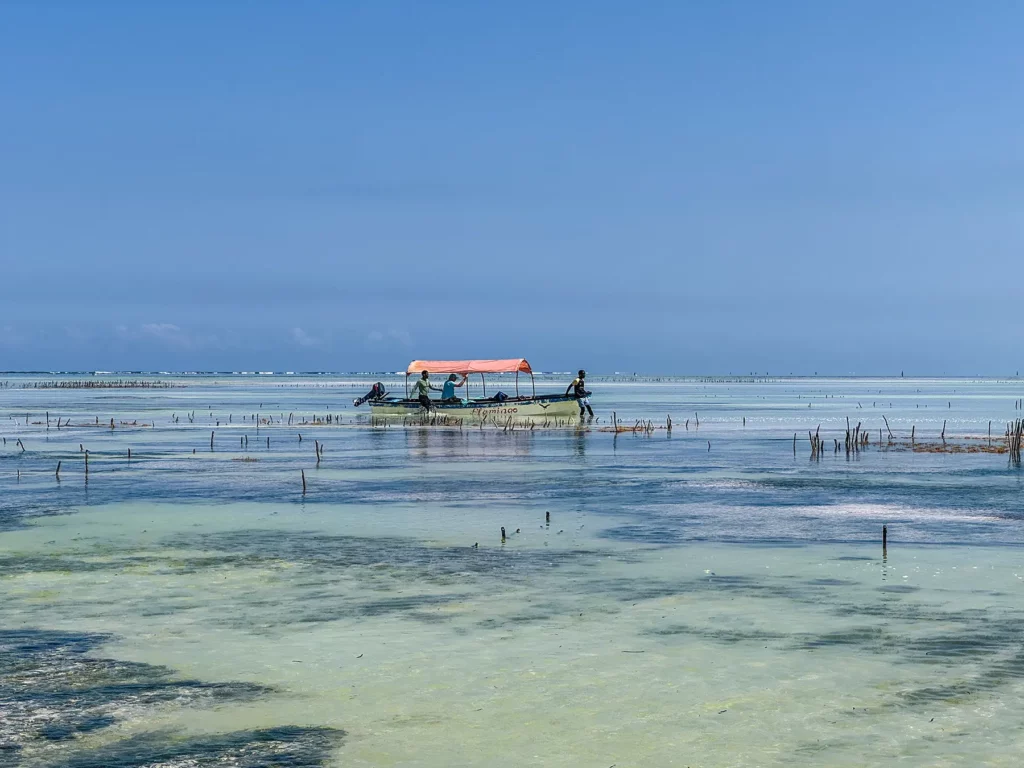
Day 2: Nungwi and Kendwa Beaches
Moving northwards and around the tip of the island, you come across possibly the two best beaches on the entire archipelago. Perched on the northernmost part of Zanzibar, Nungwi Beach is a beach lover’s favourite, with hardly any tidal movement providing a multitude of water activities all day long.
Kendwa Beach is another jewel of the archipelago, offering days of leisure and wonderful swimming, snorkelling, boating tours, and sunset cruises, surrounded by an endless list of dining options. Sunsets from both beaches are as good as they get.
Jump to more information on Nungwi and Kendwa Beaches.

Day 3: Boat Trip to Mnemba Atoll
Take a boat trip to the famous Mnemba Atoll to snorkel on its magnificent coral-covered reefs teeming with myriads of bright coloured fish and other marine life. If you get lucky, you may spot a turtle or two or even get to swim with a pod of dolphins that often hang out here.
Jump to more information on Mnemba Atoll
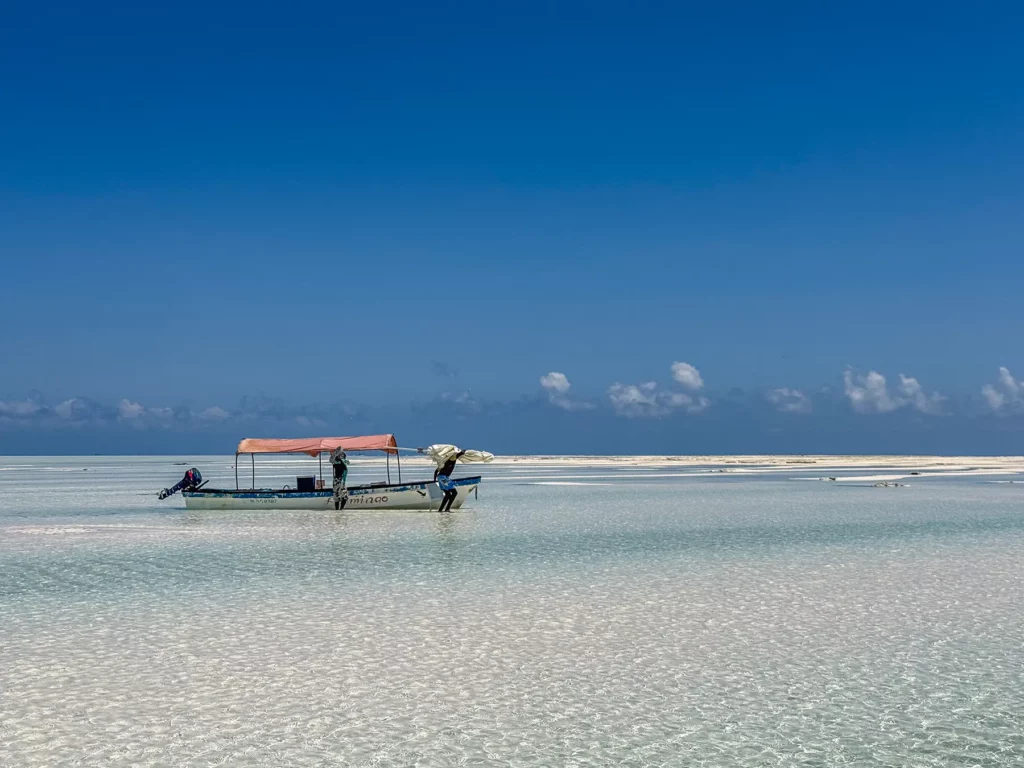
Day 4: Jozani Forest and The Rock Restaurant
On the southeast coast of the island, The Rock Restaurant is one of the most uniquely located restaurants you’ll ever see. Built onto a rock in the sea, it is only accessible by boat when the tide is in, and the ocean completely surrounds it.
Top Tip: Make sure to plan your trip when the tide is in and surrounding the restaurant using a tides app.
A few miles inland is Zanzibar’s only National Park, which houses its most treasured residents – the critically endangered and rare red colobus monkeys.
To visit, you’ll need to book a guided tour either direct with the park or through your tour operator or hotel.
Jump to more information on Jozani Forest.

Day 5: Stone Town
No visit to Zanzibar is complete without a stroll through this historic part of the island. Packed into a small area of less than a square mile lies the entire history and the lifeblood of Zanzibar. Muslim mosques, Christian cathedrals, an imposing fort, the site of the Old Slave Market and the house of Freddie Mercury are must-see landmarks.
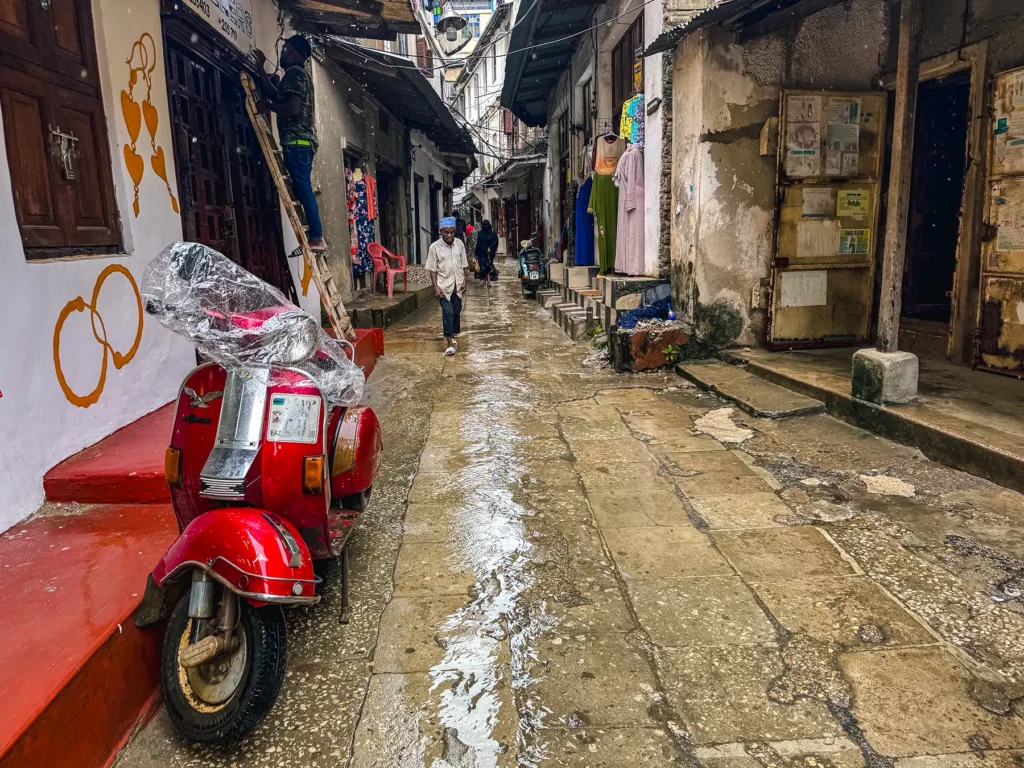
Stop at the food market, the heartbeat of Stone Town, and savour the flavours of its local cuisine. Breathe in the spicy aromas that engulf the town, and put your bargaining skills to the test as you purchase your souvenirs.
Jump to more information on Stone Town.
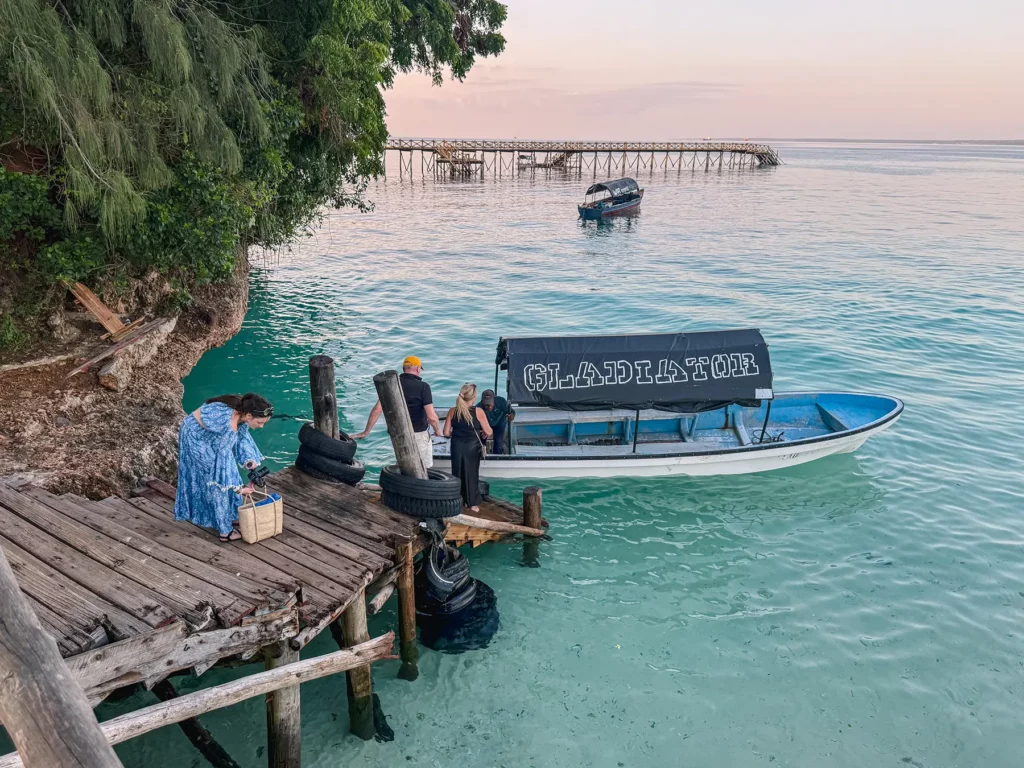
Day 6: Prison Island (Changuu Island)
Return to Stone Town and take a quick 20 minute boat ride to Prison Island. Here you can explore the island and see some of the biggest and oldest tortoises on the planet, estimated to be over 150 years old. The trip will also provide you with a scenic view of the island from out at sea.
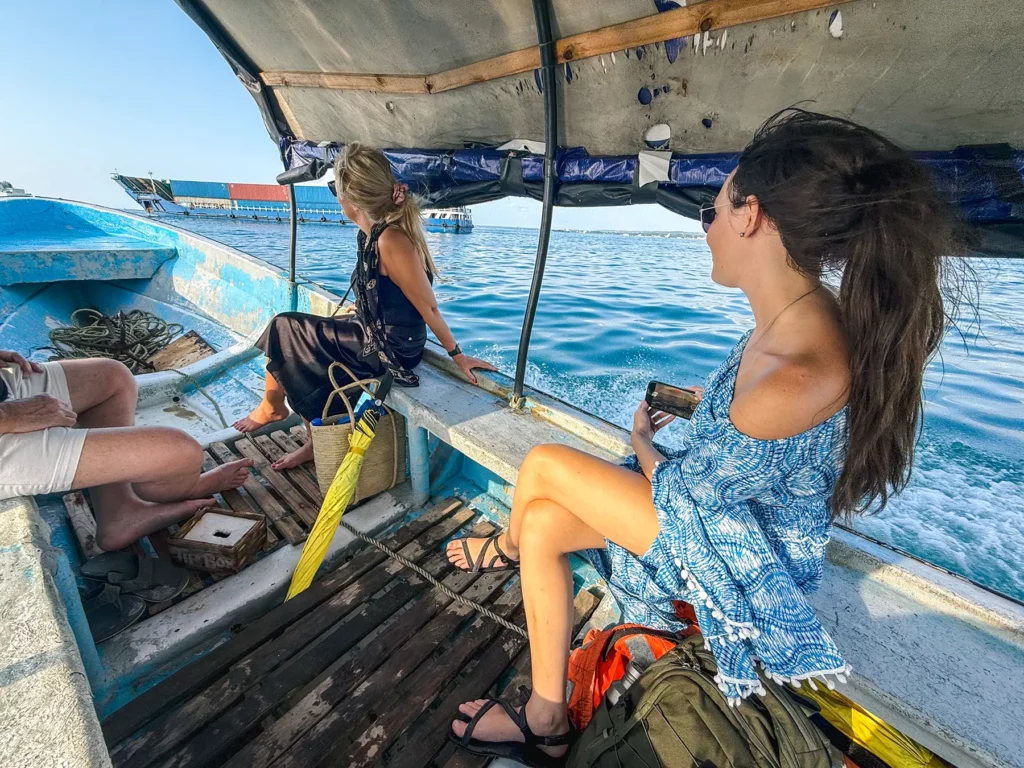
Just to more information about booking the boat ride.
You can also combine day 5 and 6 into one day and spend the morning in Stone Town and the afternoon on Prison Island.
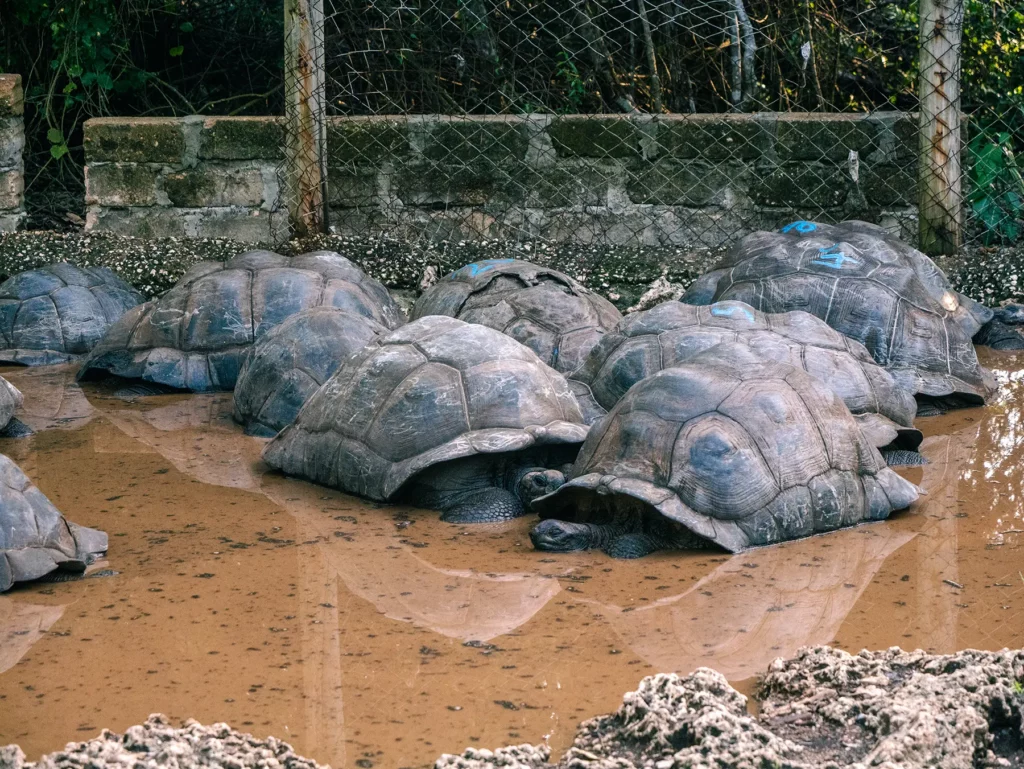
Day 7: Uzi Island
If you’re looking for a bit of adventure and to experience Zanzibar’s true wilderness, head to Uzi Island, situated off the southwestern coast of the island. At high tide, you can access it by boat or by trekking across the aptly named Moses Causeway at low tide.
Although a few thousand people live here, there are no restaurants or bars. You can spend the day visiting the cultural village, mango and banana plantations or kayaking through mangrove-fringed waterways teeming with birds and snorkelling off lonely beaches far from civilization.
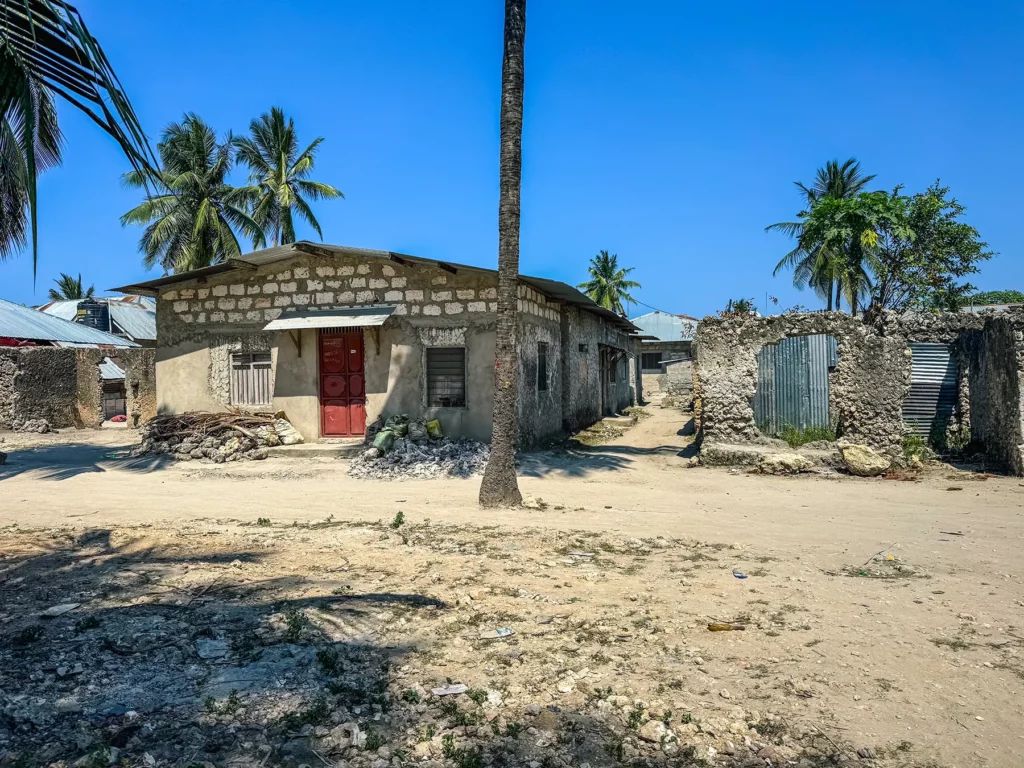
Day 8: Kizimkazi Village
Moving further south, Kizimkazi Village, located on the west-facing coastline, is another off-the-beaten-track location that offers a peaceful and tranquil retreat. It is famous for its dolphin excursions. The isolated reefs are fished by locals, obviously drawing in bottlenose and spinner dolphins, which are often seen spiralling acrobatically in the air and putting on stunning performances.
This area also has numerous marine-rich reefs close to shore, providing excellent snorkelling. Several rustic lodges and resorts are located in the area.

Day 9: Jambiani Beach
Located in the southern region of Zanzibar but switching to the east-facing coast, Jambiani Beach has a fair number of resorts and lodges. However, it has somehow managed to retain its authentic, laid-back Zanzibar atmosphere.
Its shallow waters recede at low tide, allowing the women to cultivate seaweed that they grow on wooden stakes or ropes left on the sandy seabed. This island has a thriving seaweed farming culture, providing income to over 15,000 people, mainly women.
The beaches around Jambiani are as good as anywhere else. They’re pristine, calm, and stunning. They’re perfect for snorkelling, swimming, kitesurfing, and relaxing without the tourist masses. If that’s not enough, a few miles inland, you can catch a swim in the crystal clear water of the Kuza Caves.
A truly magnificent stretch of coast to unwind and forget the world for a while.

Day 10: Relax Before Catching Your Flight
The last day on the island is best spent relaxing, before catching a taxi to Zanzibar City and the airport.
Tanzania and Zanzibar Itineraries
If you want a more immersive safari and beach adventure, consider my 2-week Tanzania and Zanzibar itinerary. It combines world-class wildlife experiences with time to unwind on idyllic beaches.
You’ll explore the legendary Serengeti, home to the Big Five and the Great Migration; Tarangire, famous for massive elephant herds; and the breathtaking Ngorongoro Crater, often called Africa’s Eden.
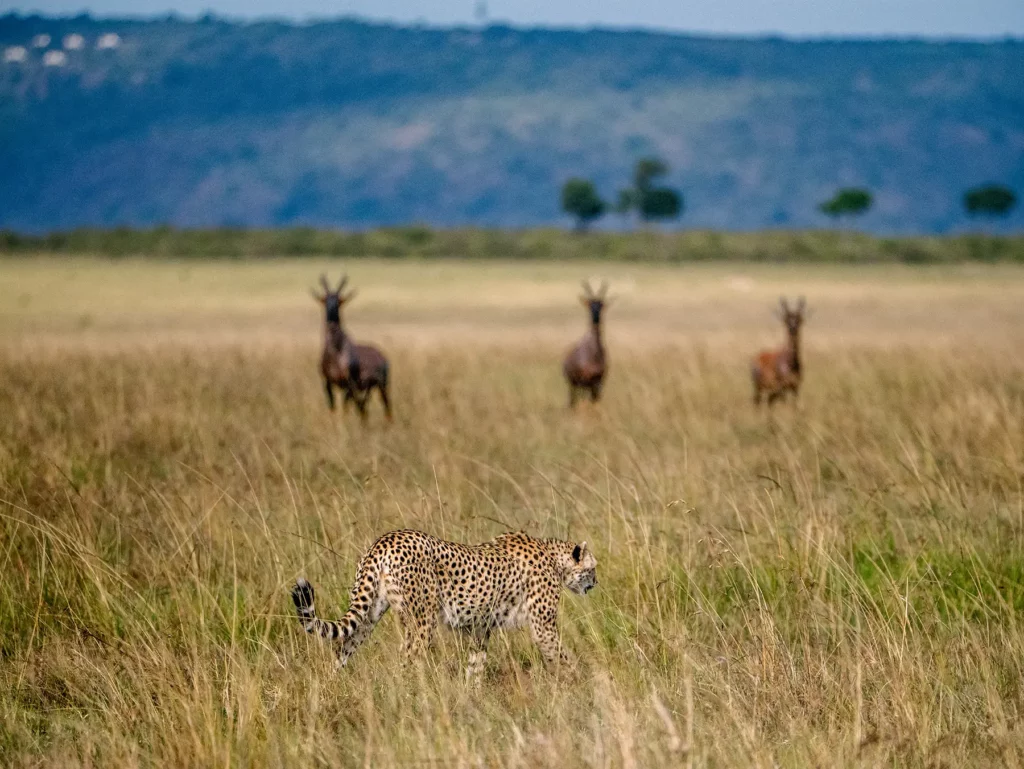
The journey also includes visits to other key parks, cultural encounters with the Maasai and Hadzabe tribes, and a stop at the world’s deadliest lake. The trip concludes with time to relax on Zanzibar’s stunning Indian Ocean shores — the perfect balance of adventure and leisure.
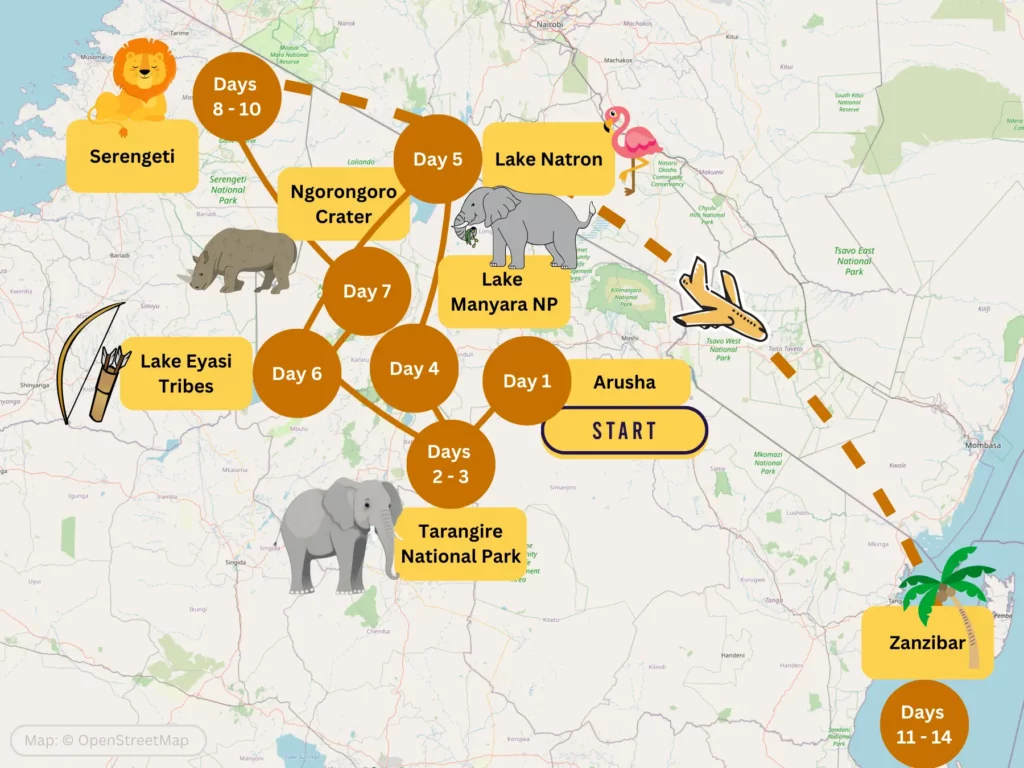
If you have more time, take a look at my 3-week Tanzania and Zanzibar itinerary.
Kenya, Tanzania and Zanzibar Itineraries
You can also opt to include Kenya in your safari, as it borders Tanzania and shares the Serengeti ecosystem, which is called Maasai Mara on the Kenya side of the border.
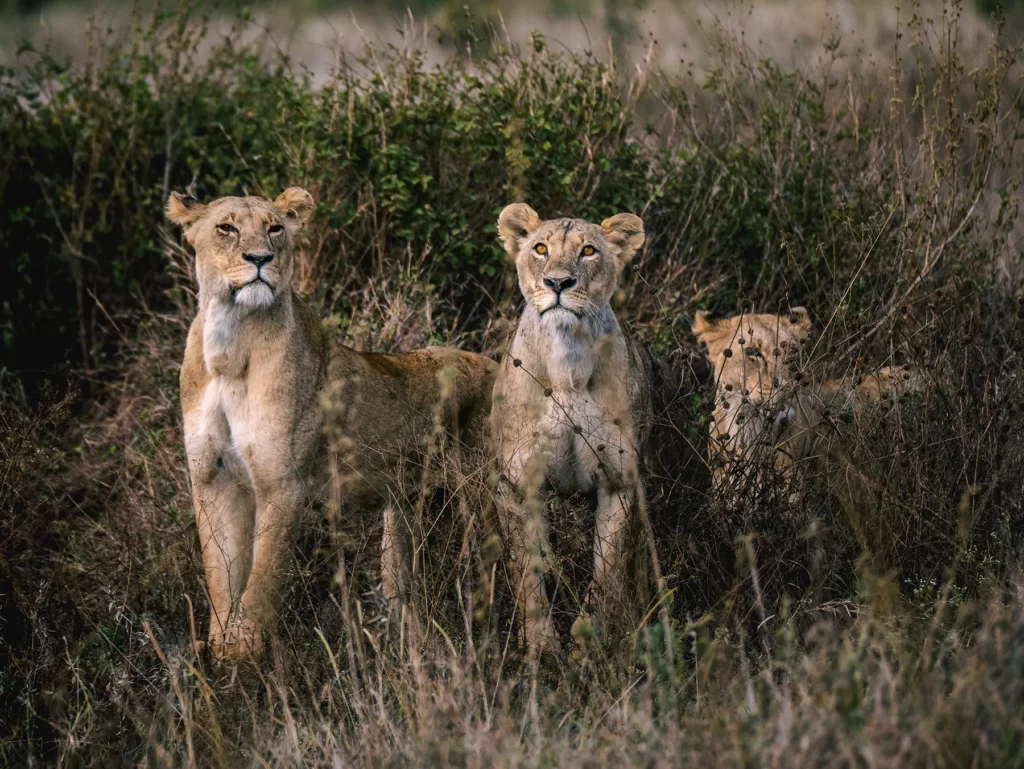
Visiting between September and October may give you front-row seats to the dramatic Mara River crossings during the Great Migration.
To make the most of this, I’ve created a combined 2-week Kenya and Tanzania itinerary that ends with a relaxing beach escape in Zanzibar.
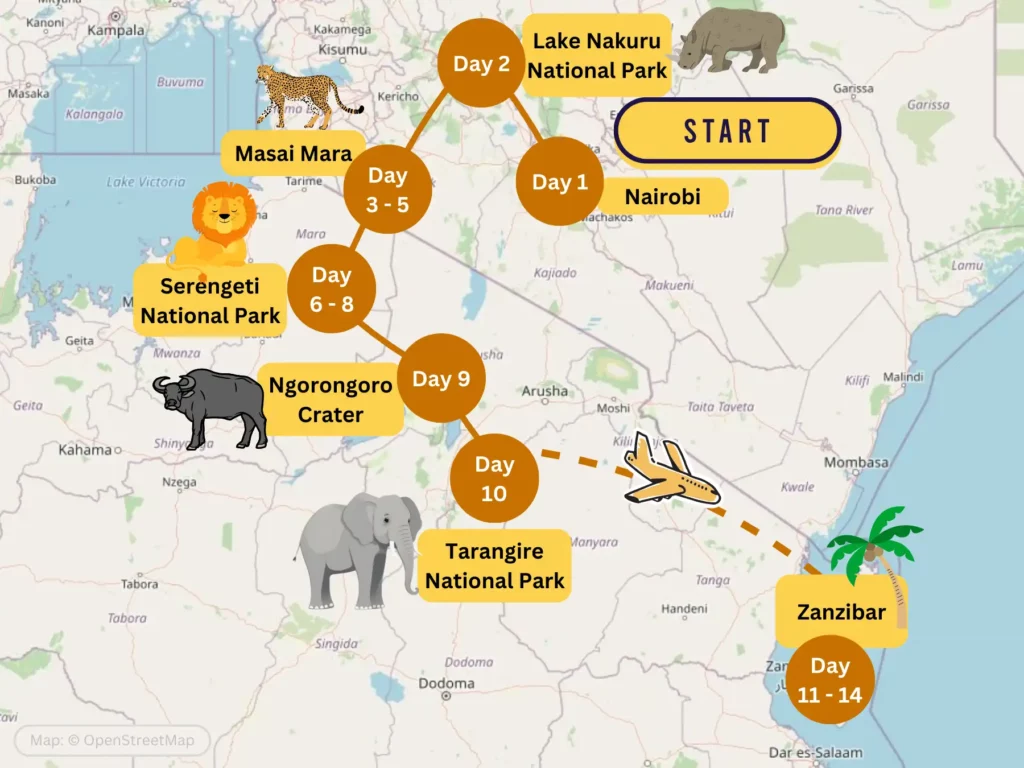
Recommended Booking Options For Your Safari and Beach Itinerary
Safari with local tour operator
Most popular & best experience – typical prices for this itinerary start from $250 per person per day.
Visit safarisbyella.com for free quotes from trustworthy local tour companies I use to book my own trips.

Good to Know Before You Go
When travelling to foreign countries, it pays to know something about their cultures before you go to avoid any unfortunate or embarrassing incidents.
Can you Drink Alcohol in Zanzibar?
Yes, you can drink alcohol in Zanzibar. It is served in most tourist hotels, bars, and restaurants.
However, while alcohol is permitted in Zanzibar, it’s best to consume it only in licensed establishments in order to respect local customs. Zanzibar is predominantly Muslim, so alcohol availability is more discreet outside tourist areas.
Be careful not to consume alcohol in public areas such as streets or beaches, as this is not allowed.
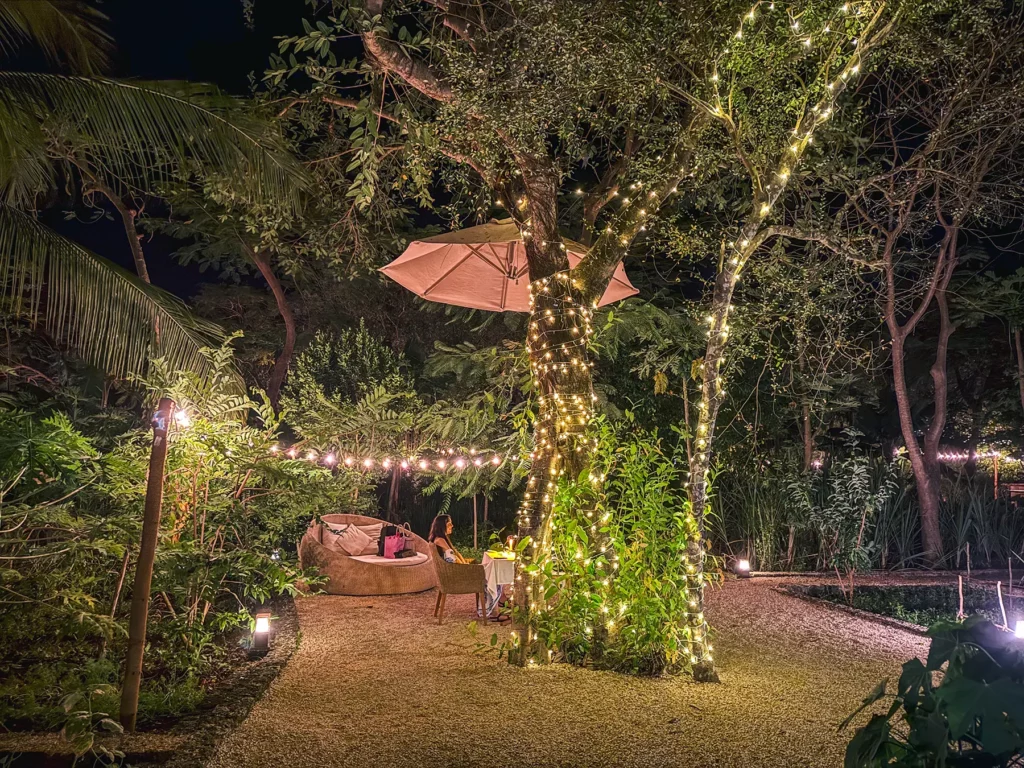
How Should You Dress in Zanzibar?
When visiting public areas, especially towns and villages, it’s best to dress modestly, with clothing covering your knees and shoulders. It’s also a good idea to carry a scarf or light cover-up when exploring cultural or religious sites.
Although swimwear is fine at beaches, hotels, and resorts, it is inappropriate in other public spaces or markets such as Stown Town.
Otherwise, Zanzibar is known for its tropical climate, so bring light, breathable fabrics.
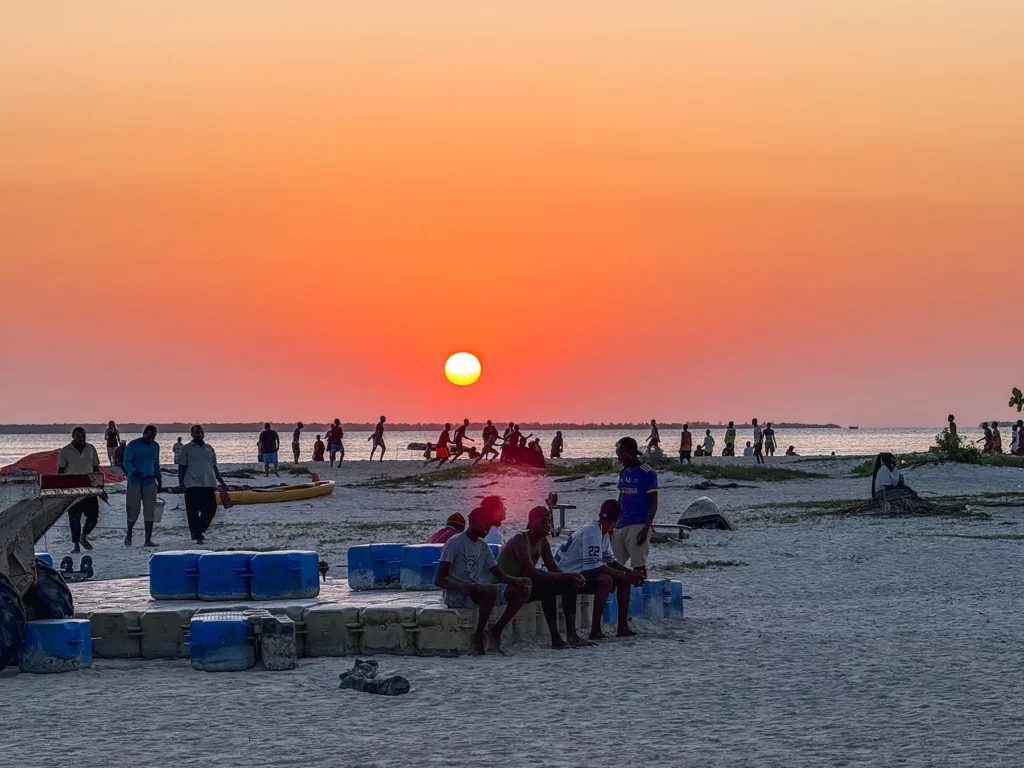
5 Little Known Facts About Zanzibar
- As of 2019, single-use plastic bags and containers are banned and cannot be brought into Zanzibar.
- Zanzibar is a significant exporter of seaweed, which is used in various industries, including food and cosmetics.
- Stone Town in Zanzibar City has 277 wooden carved doors, one of the highest numbers in East Africa. The intricate designs in many of the houses, most of which are centuries old, are hard to miss. The oldest dates back to 1694.
- The beautiful, brightly coloured traditional dresses (Khanga) worn by women in Zanzibar all hold special meanings related to their background or heritage. Each pattern conveys a specific message or words of wisdom about the person.
- Over 1,000 years ago, an Arab explorer recorded that Zanzibar had a large concentration of elephants. Venetian explorer Marco Polo recorded the same in 1295 AD, but there are no elephants on Zanzibar today.
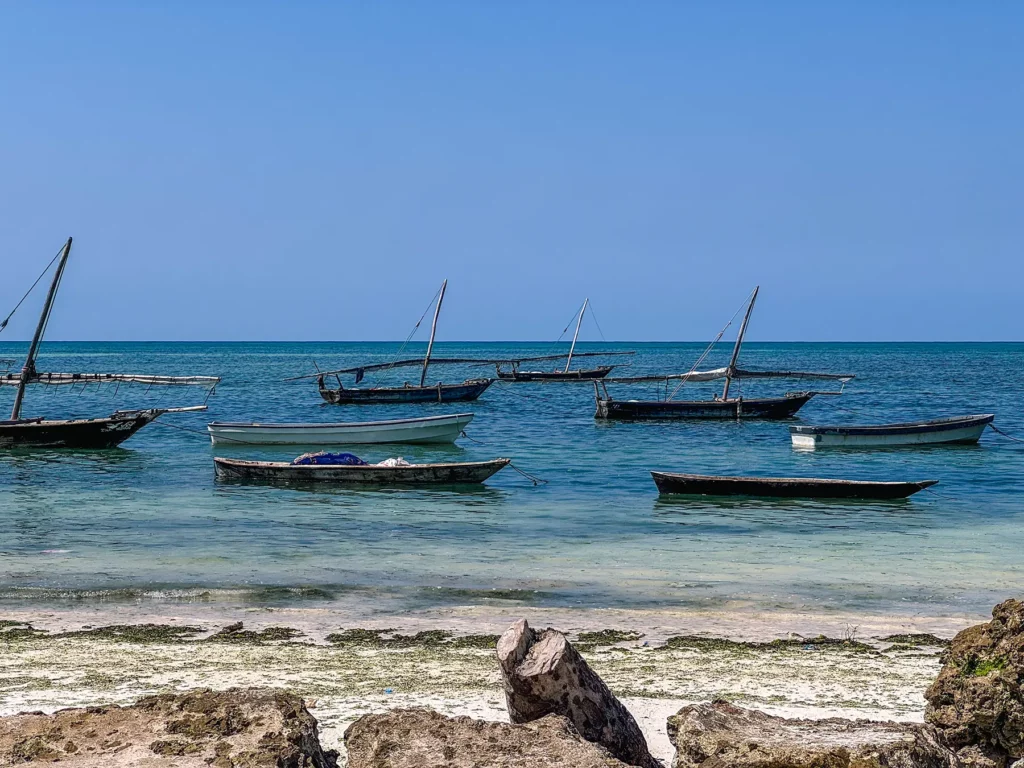
Zanzibar Videos
You can watch a video of my personal experience in Zanzibar on Youtube.
Final Thoughts
Zanzibar is the perfect destination for total relaxation on an exotic island rich in history, culture, and surrounded by crystal-clear blue waters. The best part is that if you’re in the mood for more than just unwinding on the beach, there’s no shortage of activities to enjoy.
And best of all, it’s just a short flight away from the world-class national parks on mainland Tanzania!
Read More Tanzania Guides
For an overview of planning your safari, you can read my Ultimate Tanzania Safari Guide.
Tanzania Itineraries
Recomended itineraries and how to book them.
7-10 Day Tanzania Safari Itinerary & Costs
5-Day Tanzania Safari Itineraries & Costs (6 unique Itineraries)
3-Day Tanzania Safari Itinerary & Costs
2-Week Tanzania & Zanzibar Safari Itinerary & Costs
3-Week Tanzania Safari Itinerary & Costs
10-Day Tanzania Honeymoon Itinerary & Costs
Tanzania and Kenya Itineraries
Multi-country itineraries and how to book them.
10-Day Kenya and Tanzania Safari Itinerary
2-Week Kenya & Tanzania Safari Itinerary
Costs & Planning
How to get the most bang for your buck and the best time of year to visit depending on what you want to do and see.
Tanzania Safari Cost – Everything You Need to Know!
The Great Wildebeest Migration Guide
Zanzibar Island – The Complete Guide
National Parks & Reserves
Complete guides to the best and most famous safari reserves, including the wildlife you’ll see, entrance costs and best time to visit.
Other Popular Safari Destinations
How to Book Your Safari
Save time and ensure an incredible safari experience by getting quotes from my recommended local safari companies.
Join the rapidly growing tribe of over 1,000 travellers who’ve booked their dream safari using my insider tips and recommendations.

